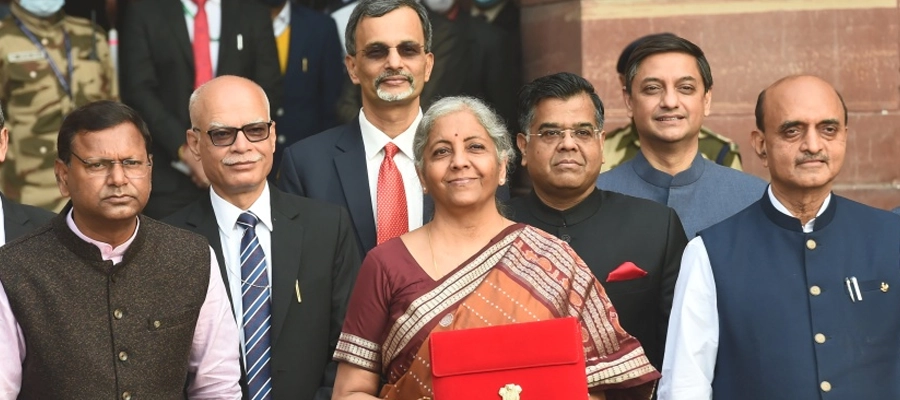Author: Treelife
Merge Ahead: Fast-Track Your Way to Competitive Advantage!
Meaning
A fast-track merger is a streamlined process for combining two or more companies. It is typically designed to expedite the merger process, reduce administrative burdens, and facilitate efficient integration of the merging entities. It involves simplifying certain procedural steps and regulatory approvals, allowing the merger to be completed quickly.
Eligibility Criteria
A scheme of merger or amalgamation under section 233 of the Companies Act, 2013 may be entered into between any of the following classes of companies, namely:-
- A holding company and its wholly-owned subsidiary company or such other class or classes of companies;
- Two or more start-up companies; or
- One or more start-up companies with one or more small companies*.
*Small Company means a company whose paid up capital is maximum Rs 4 crore and turnover is maximum Rs 40 crore
Highlights of Recent Amendment
The Ministry of Corporate Affairs (“MCA”) made amendments to Rule 25 of the Companies (Compromises, Arrangements and Amalgamations) Rules, 2016, on 15th May, 2023 which states that the Central Government (CG) now has a specific timeframe to approve merger and amalgamation schemes, addressing the previous absence of a defined time frame for approval from the Registrar of Companies (“ROC”) or Official Liquidator (“OL”).
The purpose of these amendments is to streamline and expedite the merger and amalgamation process specifically for start-up companies and small companies under section 233 of the Companies Act, 2013.
Step Plan for a Fast-track Merger
- Step 1: Authorization under Articles & Memorandum of Association
- Step 2: Draft a scheme of merger (“Scheme”)
- Step 3: Convene a Board Meeting approving the Scheme
- Step 4: Declaration of solvency with the ROC
- Step 5: Convening meetings of Shareholders & Creditors
- Step 6: Filing a copy of Scheme with Regional Director (“RD”), ROC, OL for inviting objections
- Step 7: No Objections from the authorities
- Step 8: If found within public interest RD may approve the scheme
- Step 9: File form INC 28 with ROC within 30 days of approval from RD

Amendments are as follows
Note: The Scheme in each of the aforementioned situations shall be approved or deemed to be approved only if the same is in the public interest or in the interest of the creditors
| IF | THEN |
|---|---|
| No objection/ suggestion received by the CG from ROC/OL within 30 days of the receipt of copy of scheme. | CG shall confirm and approve the scheme within 15 days after the expiry of 30 days. |
| No confirmation from CG within 60 days from the receipt of the scheme. | The scheme shall be deemed to be approved. |
| On receipt of objections/ suggestions from ROC/ OL where such objection/ suggestion are not sustainable. | CG shall approve the scheme and issue confirmation order within 30 days after the expiry of 30 days.If no confirmation order is issued within the aforementioned period, it shall be deemed that it has no objection to the scheme and a confirmation order shall be issued accordingly. |
| On receipt of objections/ suggestions from ROC/ OL where CG is of opinion that the scheme is not in the public interest or in the interest of creditors. | CG shall file an application with the tribunal within 60 days of receipt of the scheme, requesting the tribunal to consider the scheme in the regular manner. If CG does not file the application within the aforesaid period, it shall be deemed that it has no objection to the scheme and a confirmation order shall be issued accordingly. |
Incorporation of an Indian company
Pre-requisites for incorporation
| Proposed Name | •Name to be available and unique. Should contain the nature of business •Minimum 2 names to be proposed |
| Share Capital | •Authorized and paid-up share capital to be determined •Sample capital structure: -10,000 equity shares of INR 10 per share -Total paid-up capital of INR 100,000 -Total authorized capital of INR 1,000,000 |
| Directors | •Minimum 2 directors required •Minimum 1 director to mandatorily be Indian resident |
| Shareholders | •Minimum 2 shareholders required |
| Registered Office Address | •Commercial property/office location required as registered address •Services of co-working office spaces can also be availed for virtual office address |
Incorporation process
Step 1 – Obtain DSC of directors & shareholders
Approx TAT: 2 Days Key documents/information required to be filed: Aadhar/PAN card, contact no. & email address and photo of individual
Step 2 – File for name application
Approx TAT: 3 Days Form: Spice+ Part-A Key documents/information required to be filed:
a. 2 proposed names of company b. NIC code along with 2-3 sentences about proposed business of company
Step 3 – File incorporation documents
Approx TAT: 1 Days Form: Spice+ Part-B Key documents/information required to be filed:
A. Shareholder and director details + KYC proofs
- KYC documents of foreign director and shareholder need to be apostilled and notarized in home country
B. Company details – Share capital (authorized and paid up), registered office address, email address and contact no.
Note: TAT is subject to MCA website
- On approval of spice forms, company incorporation is complete
- Certificate of incorporation, PAN, and TAN are issued to the company
- Company can open bank account
Post – incorporation process
STEP 1 – Post incorporation filings
A. FORM ADT 1 Approx TAT: 2 Days Key documents and information required to be filed:
– Auditor details – Name of auditor/auditor’s firm along with partner’s name, PAN, Membership no., registered address, email address, written consent & certificate stating he/she is not disqualified for appointment
– Company’s board resolution appointing such auditor B. FORM INC 20A Approx TAT: 2 Days Key documents/information required to be file: Bank statement of company showing inward receipt of subscription money from subscribers
- Company can issue share certificates to its shareholders
STEP 2 – RBI filing in case of foreign investor
Form: FC-GPR Approx TAT: 2 Days* (*2 days from receipt of FIRC and KYC from AD bank) Key documents/information required to be filed: FIRC and KYC for the fund transfer in foreign exchange entity master registration and business user registration to be obtained on FIRMS portal
Obtain initial registrations:
- Shops & establishment registration
- Profession tax registration
- GST registration
- Udyog Aadhar/MSME registration
- Startup India registration
- Angel tax exemption
For further details on licenses and registrations, refer to the document attached here.
Capital 2B, IIFL fintech fund lead $5 million investment round in Castler
Diversity & Inclusion Policy in India
Introduction
The Constitution of India explicitly prohibits discrimination based on sex, race, religion, or on any other ground, but it has taken some time for this protection to be extended to LGBTQ+ individuals. The landmark judgment in NALSA v. Union of India case in 2014 marked a progressive interpretation by the Supreme Court, which recognized that discrimination based on sexual orientation and gender identity falls within the ambit of “discrimination on the grounds of sex.” The court emphasized that such discrimination violates the fundamental right to equality enshrined in the Constitution.
In a subsequent case, Navtej Singh Johar v. Union of India, the Supreme Court took one step forward by acknowledging that the freedom to choose one’s sexual orientation and express one’s gender identity, including through dress, speech, and mannerisms, is at the core of an individual’s identity.
Although there is an absence of standalone anti-discrimination legislations in India, certain laws such as the Rights of Persons with Disabilities Act, 2016, the Equal Remuneration Act, 1976 (along with the Code on Wages, 2019), the Human Immunodeficiency Virus and Acquired Immune Deficiency Syndrome (Prevention and Control) Act, 2017, and the Transgender Persons (Protection of Rights) Act, 2019, do contain provisions addressing discrimination against individuals falling under the ambit of the aforementioned laws.
A major drawback of the Equal Remuneration Act, 1976 is that while it encourages pay parity at workplaces, however its scope is restricted to merely two genders, i.e., men and women thereby alienating an individual with a different sexual orientation from obtaining the benefits under this legislation.
This piece highlights the various workplace policies in India and the need to make them more inclusive for the disabled persons and those belonging to LGBTQ+ communities.
Equal Opportunity Policy under Rights of Persons with Disabilities Act, 2016
The Rights of Persons with Disabilities Act (“Act”) requires all establishments to have an equal opportunity policy (EOP) specifically for individuals with disabilities. This policy must be made publicly available, preferably on the establishment’s website or in conspicuous locations within the premises. The EOP should outline the facilities and services that will be provided to enable individuals with disabilities to fulfill their responsibilities effectively in the establishment.
Furthermore, if the organization employs 20 or more individuals, the EOP must include the following details:
- A comprehensive list of positions within the establishment that are deemed suitable for individuals with disabilities;
- The procedure for selecting individuals with disabilities for different positions, as well as providing post-recruitment and pre-promotion training, prioritizing them in transfers and job assignments, granting special leave, allocating residential accommodation if available, and offering other necessary facilities.
- Provisions for assistive devices, ensuring barrier-free accessibility, and implementing other necessary measures to accommodate individuals with disabilities.
- Information about the designated liaison officer. It is mandatory for every establishment with 20 or more employees to appoint a liaison officer responsible for overseeing the recruitment of individuals with disabilities and ensuring the provision of necessary facilities and amenities.
- A copy of the EOP must be registered with the relevant authority (whether a Chief Commissioner or State Commissioner, as the case may be) specified by the law.
Can POSH Policy be Gender Neutral?
The Sexual Harassment of Women at Workplace (Prevention, Prohibition and Redressal) Act, 2013 (“POSH Act”) is an Indian legislation designed to address workplace sexual harassment and ensure a safe working environment for women. Although the law primarily aims to protect women due to the widespread gender-based discrimination they face, it does not exclude or expressly/impliedly prohibit inclusion of men or individuals of other gender identities from receiving protection. It is important to recognize and address the experiences of all individuals who may encounter sexual harassment, regardless of their gender identity.
It is important to note that in the POSH Act, there is no bar on gender for the respondent, i.e., although the victim can only be a woman, but there is no specific gender mentioned for the respondent. Therefore, the term “respondent” encompasses all genders.
During the legislative process, the idea of enacting a gender-neutral law was discussed. However, this discussion primarily centered around men’s rights groups advocating for equal treatment and was framed as a debate between men and women. In response to this, the Parliamentary Standing Committee in 2011 proposed that the law should remain specific to one gender, citing the historical disadvantages, discrimination, abuse, and harassment faced by women. The committee based its recommendation on the belief that women are particularly vulnerable to workplace harassment, which hinders their ability to work. The primary objective of maintaining a gender-specific law was to increase female participation in the workforce and establish a robust mechanism to safeguard women’s employment rights.
In Anamika v Union of India, the Delhi High Court ruled that transgender individuals can utilize the protection under provisions related to sexual harassment, (which are commonly resorted to in cases of harassment by men against women), to file complaints. It is pertinent to note that in this case, although the aggrieved person was a transgender, however she identified herself as a woman and possessed a legally sanctioned identity document as evidence.
Provisions under Transgender Persons (Protection of Rights) Act, 2019
In 2014, the Supreme Court of India made a significant ruling in the case of National Legal Services Authority v. Union of India. This ruling played a crucial role in establishing the rights of transgender individuals in India. The court recognized the category of “transgender” as the “third gender” and introduced various measures to prevent discrimination against transgender individuals and protect their rights. The judgment also suggested that reservations should be made for transgender individuals in employment and educational institutions. Additionally, it affirmed the right of transgender individuals to identify their gender based on their self-perception, without the requirement of undergoing a sex reassignment surgery.
The Transgender Persons Act requires all establishments, including private employers, to adhere to certain regulations:
- Prohibition of discrimination: Ensure a safe working environment and prevent any form of discrimination against transgender individuals in all aspects of employment, such as recruitment, promotions, infrastructure adjustments, employment benefits, and related matters.
- Equal opportunity policy: Develop and publish an equal opportunity policy specifically for transgender persons. Display this policy on the company website, and if there is no website, post it at a conspicuous place within the premises.
- Infrastructural facilities: Provide necessary infrastructure adjustments, including unisex toilets, to cater to the needs of transgender employees. Take measures to ensure their safety and security, such as transportation arrangements and security guards. Additionally, ensure the availability of amenities like hygiene products for transgender employees.
- Confidentiality of identity of the transgender employees to be ensured at workplaces.
- Appointment of Complaint Officers: Establishments are obligated to assign a complaint officer who will handle any grievances concerning the infringement of the regulations stated in the Transgender Persons Act. The designated complaint officer is entrusted with the responsibility of investigating the complaints, and it is mandatory for the head of the establishment to act upon the report produced by the complaint officer within the specified timeframes.
Got a question? Call us on 9930156000
References
Constitution of India, Article 14
Rights of Persons with Disabilities Act, 2016, Section 21
Rights of Persons with Disabilities Rules, 2017
Case Summary: LGBTQ+ Marriage Rights in India
Supriyo @ Supriya Chaktraborty & Anr. v. Union of India
For a presentation view, click here!
Factual Matrix
• The nature of the subject matter of the case at hand has been weighed and adjudicated upon around the world across various jurisdictions. In order to observe the case at hand more objectively and illuminate the grounds and discussions which have been placed before the Honourable Supreme Court thus far, we have laid out a summary of the facts of the case:
• The Petitioners identify themselves as gay men and are Indian citizens. Both petitioners, presently aged about 32 and 35 years respectively, have been in a committed relationship for almost a decade.
• On 17.08.2021, the Petitioners held a ceremony in the presence of their families, friends and colleagues.
• However, despite a decade long committed relationship, the Petitioners are unmarried in the eyes of law as the legal regime around recognition and solemnization of marriages excludes marriage between a same-sex couple.
• Despite the ceremony, the Petitioners realized that they are legally incapable of exercising the rights of married individuals and strangers in the eyes of the law, such as securing health insurance which would include their partner, nominating each other for life insurance, mutual funds, PPF, pension scheme, or any other financial instruments. Legally, they do not have the right to inheritance, property, to take medical or end-of-life decisions pertaining to each other.
• In light of the same, the Petitioners filed their PIL before the Hon’ble Supreme Court seeking recognition and solemnization of same-sex marriage.
Questions In Point
The Hon’ble Supreme Court is hearing the matter based involving the following issues:
• Recognition of Same-Sex Marriage: Whether same-sex marriage or non-heterosexual marriage can be recognized and solemnized under the Special Marriage Act, 1954?
• Constitutionality of the Special Marriage Act: Whether the Special Marriage Act, 1954 can be declared to be unconstitutional and violative of Articles 14, 15, 19 and 21 of the Constitution of India to the extent that it does not provide for solemnization of marriage between a same sex couple?
Recognition of same-sex marriage
| Petitioners | UoI |
| • Broad interpretation to be made of the word “spouse” under Special Marriage Act, 1954 (“SMA”) and its meaning should not be confined merely to and be read as “a man and a woman”. Additionally, Section 4, SMA, which refers to a marriage in gender-neutral terms, between ‘any two persons’. However, it was clarified that merely amending the SMA isn’t enough and that a constitutional declaration of marriage, akin to that of the heterogeneous group, is needed. • It is important to remove the 30-day notice period under Section 5 of the SMA on the grounds that it invites unwarranted interference and such notice period violates an individual’s privacy along with their personal and decisional autonomy. • Advocate Abhishek Manu Singhvi, Counsel to the Petitioner stated that “But on the canvas there are two crucial words here. ‘Marriage’ and ‘persons’. ‘Same sex’ is a slight misnomer. The correct word is ‘person’, not ‘same sex’.”* • It was contended that the State could not deny marriage equality on grounds of “impracticality” as the discriminatory laws were created by it • Excluding the LGBTQIA+ community from their right to marry sends a message that it is legitimate to differentiate between the commitments of heterosexual and non-heterosexual couples, by indicating that the latter’s marriages are not as significant as “real” marriages. | • The Supreme Court could not hear this case as it fell under the powers of Parliament. The Respondent’s Counsel argued that there are certain issues which are better left to the discretion of the Parliament. There is no discrimination, no breach of privacy, right of choosing one’s sexual orientation. • It was argued that argued that 160 laws would be impacted in the process of bringing marriage equality. • It was argued that the subject of marriage is in the concurrent list and the possibility of one state agreeing to it and another against it cannot be ruled out. In this scenario, the maintainability of the petition would come into question. • Counsel to the Respondent stated that “Societal acceptance of any relationship in the society is never dependent either on legislation or on judgments. It comes only from within. Let us accept it whether we like to accept it or not.” • It was argued that the legislative intent of the legislature throughout has been a relationship between a biological male and a biological female including Special Marriage Act. • It was argued that the concept of biological man means a biological man and the question of notion does not arise. |
Recognition of same-sex marriage
Constitutionality of the Special Marriage Act
| Petitioners | UoI |
| • The Counsel argued that “The right to marry non-heterosexual unions is implicit in Articles 14, 15, 16, 19 and 21 of the Indian Constitution, especially after the Supreme Court rulings in “Navtej Singh Johar vs. Union of India” and “KS Puttaswamy and Anr. vs. Union of India”. • It was contended that the State could not deny marriage equality on grounds of “impracticality” as the discriminatory laws were created by it. • It is a civil union, as permitted in some countries, is not a solution to what same-sex couples are asking for. civil unions are not an equal alternative and do not address constitutional anomalies presented by excluding non-heterosexual couples from the institution of marriage • Excluding the LGBTQIA+ community from their right to marry sends a message that it is legitimate to differentiate between the commitments of heterosexual and non-heterosexual couples, by indicating that the latter’s marriages are not as significant as “real” marriages. • Adv. Mukul Rohatgi argued that “Gender identity is one of the most fundamental aspects of life and refers to a person’s intrinsic sense of being male, female or transgender or transsexual.” • Inalienable right to privacy must be granted in sanctity of a natural right to privacy in the Constitution as a fundamental right and the soulmate of dignity. Therefore, privacy, dignity go in hand in hand. Dignity is a part of life lived to its fullest under Article 21. | • The lawmakers had a conscious intent to include only heterosexual marriages under the SMA and the said Act’s character and intent cannot be altered. • It was argued that under the SMA, the court cannot give rights to non-heterosexual couples that heterosexual couples don’t have. • The State has a ‘legitimate’ interest in regulating marriages, while citing aspects such as the age of consent, prohibition of bigamy, prescription of prohibited degrees of marriage, judicial separation, and divorce. • While the rulings in Navtej or Shafeen Jahan were monocentric, the present dispute is a “polycentric”, one that will affect several legal provisions, possibly wreaking collateral damage or side effects in its wake. • The Respondent’s Counsel stated that “The question is not right of equality, right of dignity or right of privacy of persons who belong to LGBTQ community. That is first. The question is right of conferment of a socio-legal status and whether that can be done by judicial adjudication. There was no law governing the rights and other rights and other immunities to the LGBTQ community.” • It was argued that the concept of biological man means a biological man and the question of notion does not arise. |
Constitutionality of the Special Marriage Act
Observations by the Hon’ble Supreme Court
| Question | Observations |
| Inclusion of LGBTQ+ in SMA | • Justice D.Y. Chandrachud observed that “Man is not a definition of what your genitals are. It’s far more complex. That’s the point. So even when the Special Marriage Act says man and woman, the very notion of a man and a notion of a woman is not an absolute based on what genitals you have.” • There should be a declaration of the right to marry, then there are two courses of action according to you. Either the court then finds a legislative void in that Parliament has not legislated explicitly to recognize the right of marry, and therefore finding a legislative void, you supplant that deficiency so long as Parliament enacts the law. The other option is, to locate the modalities for implementing that declaration in existing law. • The notice issue is even in a heterosexual marriage, because you are saying that even in a heterosexual marriage, the fact that you have to give a notice and have people object to whether there should be a marriage or not, is unconstitutional. |
| Violation of Fundamental Rights due to marriage inequality | • There are two corresponding rights and perhaps duties and obligations as well. On the one hand the LGBTQ community has or a same sex couple is entitled to say, I have a right to make my own choices. We have our right to make our own choices, to live as we wish together and therefore, that is a part of our dignity our privacy. But equally, society can’t say that. Well, all right. We will recognize that right and we leave you alone. And we will not recognize your relationship. • It’s not enough, in terms of privacy to leave them alone and to make their choices but it is equally important to assert a ride equally, to have the recognition of those social institutions. Because private is an individual concept which allows you to get to the core of your being and to live your life as you want. But equally, each of us are social individuals, social animals, so to speak. And therefore, for society to assert that all right, we’ll leave you alone, or the state will leave you alone. |
Observations by the Hon’ble Supreme Court
Key Takeaways, pending the Supreme Court’s judgment
• Public opinion on various LGBTQ+ rights in India has evolved over the years and verdicts passed by the Judiciary. The progress of laws relating to LGBTQ+ marriage in India has been a complex and evolving journey. While the decriminalization of homosexuality and the recognition of civil partnerships have marked significant milestones, marriage equality remains unrealized. However, the recognition of same-sex marriages has seen progress in certain states.
• The LGBTQIA+ community has averred that it needs an anti-discrimination law that gives them the freedom to forge fulfilling relationships and lives regardless of their gender identity or sexual orientation and places the responsibility for change on the state and society rather than the person. The assertion is that when individuals belonging to the LGBTQ community are granted their complete set of constitutional rights, it is imperative to acknowledge their right to marry the person (and not only a man or a woman) of their choosing.
• However, while there is growing acceptance and support for equality, there is continued opposition to same-sex marriages.
• The arguments made against the petition were on both technical grounds (the jurisdiction of the Supreme Court qua the Parliament to confer rights of a socio-legal status, and the non-joinder of the States for an issue on the concurrent list of the Constitution), and on the grounds of maintainability (considering the provisions of the Transgender Act which already prohibit discrimination, and on the impact on personal laws and their amendment).
• After a hearing that ran for 10 days, the Honourable Supreme Court reserved its verdict on the batch of petitions seeking legal recognition of same-sex marriages.
Inside Indian Premier League
What is Blockchain Technology ?
With the increasing awareness and hype surrounding Cryptocurrency, NFTs, and other Digital Currencies, understanding the concept of Blockchain Technology has become crucial. Blockchain technology is a distributed digital ledger that records data, documents, and transactions securely and transparently.
Key Features of Blockchain Technology:
- Decentralized: Blockchain allows for a decentralized network composed of multiple nodes or participants. This ensures the network is secure and minimizes the risk of malicious interference while providing financial sovereignty and democratic control to participants.
- Peer-to-Peer (P2P): Blockchain technology leverages the power of P2P networks to provide a shared and reliable ledger of transactions. All nodes carry out the same tasks equitably without the presence of a central administrator.
- Transparency: Blockchain makes transaction history more transparent, as all nodes on the network share a copy of the document, enabling all users to see updated records.
- Security: Blockchain is superior to any other recording system, as it ensures all documents of transactions are updated or altered by consensus by the nodes in the network. This decentralized storage of information ensures that no individual holds the right to update records.
- Efficiency: Blockchain streamlines transactional processes through traditional paperwork, minimizes the risk of error, eliminates the involvement of third-party beneficiaries, and makes transactions efficient and faster.
How Blockchain Technology Works:
Blockchain technology is the concept of digitally storing data in the most transparent, secure, and efficient way. The data is recorded on blocks and chained together cryptographically to create an unalterable digital ledger. Each participant on the Blockchain network has access to the entire database and its history, ensuring transparency, security, and efficiency. Let us now try to understand the working of the Blockchain technology from the flowchart below:
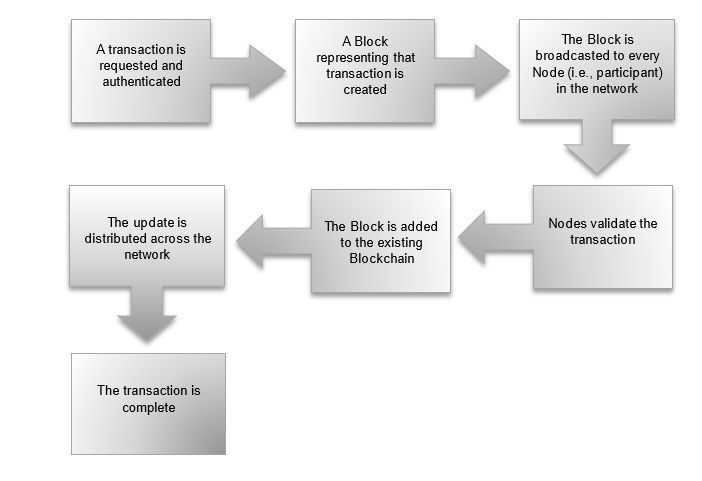
Types of Blockchains:
- Public Blockchain: Also known as Permissionless Blockchains, Public blockchains are open networks that allow anyone to participate in the network. The data on a public blockchain is secure as it is not possible to modify the data or interfere with the same once it is validated on the blockchain.
- Private Blockchain: Private blockchains, also known as authorized blockchains, are managed by the network administrator and only a single organization has authority over the network.
Potential Use Cases:
- Cryptocurrency: The most well-known use of Blockchain Technology is for cryptocurrency exchanges. When people exchange or spend cryptocurrency, the transactions are recorded on a blockchain, with each block representing a separate transaction that is validated by the participants in the network.
- Financial Exchanges: Blockchains can also be used for traditional exchanges to allow for faster and less expensive transactions. Decentralized exchanges provide better management and security because investors do not have to deposit their assets with a central authority.
- Banking: Blockchain may be used to process transactions in fiat currency such as dollars and euros to make such transfers secure, quick, and more economical, especially for processing cross-border transactions.
- Insurance: Using smart contracts on the blockchain can increase the transparency of customers and insurers. Recording all claims on the blockchain would prevent duplicate claims for the same event and speed up the process for applicants to receive payments.
- Lending: Smart contracts built on the blockchain allow for secure lending, triggering the payment of services, margin calls, full repayment of loans, the release of collateral, etc. on the happening of certain events.
- Real Estate: By recording real estate transactions using blockchain technology, a safer and more accessible way to identify and transfer real estate can be provided, speeding up transactions, reducing paperwork, and saving costs.
- Healthcare: Blockchain can be used to protect medical records, health records, and other related electronic records, ensuring that medical professionals have accurate and up-to-date information about their patients and improve treatment.
Drawbacks of Blockchain Technology:
- Power Consumption: The power consumption in the blockchain is high due to mining activities, maintaining a real-time ledger, and communicating with other nodes.
- Scalability: The size of the block equals the data it stores, which poses serious difficulties for practical use, as each participant node needs to verify and approve a transaction.
- Storage: Blockchain databases are stored indefinitely on all network nodes, causing storage space issues.
- Privacy and Security: The public blockchain is not entirely secure as anyone on the network can legally access data, leading to privacy concerns.
- Regulations: Regulatory regimes in the financial arena are a challenge for blockchain implementation, as blockchain applications need to establish a process to identify the culprit in the event of a scam.
In conclusion, Blockchain Technology is a powerful tool with numerous potential use cases and benefits, especially in the rapidly growing field of Cryptocurrency, NFTs, and digital currencies. However, there are also drawbacks to be considered, such as power consumption, scalability, storage, privacy and security, and regulatory challenges. Despite these challenges, the potential benefits of blockchain technology make it an important development to watch as it continues to evolve and adapt to new regulatory regimes. As the world becomes more technologically advanced, it is essential to stay informed about the latest developments in blockchain technology, as it has the potential to revolutionize how we store and exchange data in the future.
FAQs about Blockchain Technology
- What are the main benefits of using blockchain technology?
Blockchain technology offers several benefits, including decentralization, transparency, security, and efficiency. By providing a decentralized network, blockchain ensures that the network is secure and minimizes the risk of malicious interference while giving participants control and financial sovereignty. Additionally, blockchain offers transparency by making transaction history more visible to all participants, and it provides security by ensuring that documents of transactions are updated or altered by consensus by the nodes in the network.
- How is blockchain technology different from traditional database technology?
Blockchain technology differs from traditional database technology in several ways. First, blockchain is a distributed ledger that is shared among participants in a decentralized network, while traditional databases are often centralized, controlled by a single party or authority. Additionally, blockchain is more secure due to its decentralized nature, while traditional databases are more vulnerable to malicious interference. Lastly, while traditional databases require specific permissions to access and modify data, blockchain enables participants to access records while maintaining security and transparency.
- How does blockchain technology and cryptocurrencies work together?
Blockchain technology and cryptocurrencies work together as blockchain is the underlying technology that allows cryptocurrencies to operate securely, transparently, and efficiently. Each cryptocurrency uses a specific blockchain to record transactions, where each transaction is verified and then added to a new block in the chain.
- Can blockchain technology be used in industries beyond finance?
Yes, blockchain technology has a wide range of potential applications beyond finance, including industries like healthcare, insurance, supply chain management, and more. For example, blockchain technology can be used to protect medical records, ensuring that medical professionals have accurate and up-to-date information about their patients.
- How do you ensure the security of blockchain technology?
Blockchain technology is inherently secure due to its decentralized nature, making it incredibly difficult for malicious actors to interfere with the network. Additionally, several other security measures can be taken to make sure blockchain technology is secure, such as encrypting data, using multi-factor authentication, and implementing measures to prevent unauthorized access to the network.
The Co-Founders’ Questionnaire
SAMPLE RESPONSES
I. GENERAL
| Particulars | Responses | Remarks / Examples |
| Name of the Business | – | – |
| Registered office address (to be skipped if the Business is yet to be set up) | – | – |
| Brief Description of the Business | – | Note: This can be a 2-3 line description of the industry/sector where the Company currently operates and any differentiating factors. |
| Face Value of Equity Shares | – | – |
| Chairman of the Board | – | – |
II. FOUNDERS
| Particulars | Responses | Remarks / Examples |
| Name and Address of the Founders | Founder 1: – | |
| Founder 2: – | ||
| PAN/ Tax Registration Number of the Founders | Founder 1: – | |
| Founder 2: – | ||
| Founders who are a party to a pre-existing Shareholders Agreement (if any) | – | |
| Monetary Contribution of each Founder (if any) | Founder 1: – | |
| Founder 2: – | ||
| Shareholding Pattern of the Founders before the execution of the Co-Founders’ Agreement (to be skipped if the Business is yet to be set up) | Founder 1: – | |
| Founder 2: – | ||
| Shareholding Pattern of the Founders as on the execution of the Co-Founders’ Agreement | Founder 1: – | |
| Founder 2: – | ||
| Maximum amount of financial assistance that can be provided by the Business to each of the Founders during the course of Business | – |
III. DECISION MAKING AND DISPUTE RESOLUTION
| Particulars | Responses | Remarks / Examples |
| Founder whose opinion will hold more weight in case of any conflict with respect to the Business | – | Note: This can be an internal ‘veto’ right granted to one or more Founders, and is extremely customizable to the relationships between the Founders and their responsibilities. For example, one Founder may hold the deciding vote in general or have the final say on specific parts of the business such as design, costs, funding, or hires. |
| How will the day-to-day and major decisions of the Business be taken? | – | Note: Similar to the ‘veto’ mentioned above, this is customizable to match the working relationship between Founders. While one Founder may control day-to-day operations, another may be the decision-maker for the long-term direction. Alternatively, a voting mechanism can be set up for multiple Founders. |
| How will a sale of the Business be decided? | – | Example: To be decided by the Board/mutual agreement of the Founders. In case the parties have executed a SHA, this will ideally also be covered under reserved matters to be taken upon consent from the investor. |
| Dispute resolution in case one of the Founders is not performing his duties in accordance with the Co-Founders’ Agreement | – | Example: To be decided by the Board/such Founder may be terminated upon a simple majority of the other Founders. While this is difficult to account for at an early stage, it’s important to set checks and balances to avoid any disconnect in goals, ideals, and responsibilities. |
IV. EXIT OPTIONS
| Particulars | Responses | Remarks / Examples |
| Procedure to be followed by the Founders in case of resignation | – | Example: Prior written notice of 60 (sixty) days is to be provided to the Company. The Founder may not, in lieu of notice, pay the company his salary for the notice period, and may not also avail leave. |
| Can any of the Founder’s employment with the Business be terminated in the following situations? If yes, what will be the procedure followed by the Business to terminate such Founder’s employment? | – | Example: (a) For Cause (fraud, negligence, misconduct, crime of moral turpitude, material breach): Yes – the board may terminate the Founder’s employment with immediate effect by simple majority. (b) Without Cause (restructuring, cost cutting, underperformance): Yes – the board shall provide the Founder with an opportunity to present his case and may terminate his employment with 60 days’ notice or relieve him from duties or pay his salary. |
| Procedure to be followed by the Business in case any permanent disability is suffered by any Founder | – | Example: Agreement shall be terminated immediately in case the Founder is unable to perform his duties for a continuous period of 3 (three) months. |
| Would the Founder be obliged to leave his position as a Director on the Board in the following situations? | – | Example: (a) Termination of the Founder’s employment by the Business: Yes (b) Resignation by the Founder: Yes |
| Time period for which the exiting Founders shall be contractually obliged to not work with or as a competitor to the Business | – | Example: 1 year. This restriction, while falling into a grey area in terms of enforceability, is important to ensure that the Company’s confidential and proprietary information doesn’t become available to a competitor (whether directly or indirectly). Considering the goodwill carried by Founders, it is likely that courts will uphold such clauses. |
V. TRANSFER OF SHARES
| Particulars | Responses | Remarks / Examples |
| How will the Founder shares be dealt with in the following situations: (Please provide the details if any buyback options shall be given to the Business or remaining Founders) | – | Example: (a) Termination of the Founder’s employment by the Business: – For Cause: The company shall be entitled to purchase the unvested and vested shares at their face value or such other lower price as may be permissible under applicable law / as determined by the Board / in case of existing SHA, to be dealt with as described in the transaction document. – Without Cause: The company shall be entitled to purchase unvested shares at their face value or such other lower price as may be permissible under applicable law, and the vested shares at the fair market value / as determined by the Board / in case of existing SHA, to be dealt with as described in the transaction document. (b) Resignation by the Founder: The company shall be entitled to purchase unvested shares at their face value or such other lower price as may be permissible under applicable law, and the vested shares at the fair market value / as determined by the Board / in case of existing SHA, to be dealt with as described in the transaction document. |
| How will the market value of Shares be determined in case a Founder wants to sell his Shares? | – | Example: Fair market value / last valued round. |
VI. DISSOLUTION OR SALE OF THE BUSINESS
| Particulars | Responses | Remarks / Examples |
| What will happen to the Intellectual Property of the Business in case of the following: | – | Example: (a) Dissolution of the Business: If any compensation is received from the intellectual property owned by the company, the proceeds will be divided among the Founders in the ratio of their shareholding in the company. (b) Sale of the Business: Remains with the Business. (c) Termination of the Founder’s employment by the Business: Remains with the Business. (d) Resignation by the Founder: Remains with the Business. |
| Who will retain the original brand name of the Business? | – | Example: To be decided at the time of sale as part of negotiation / any Founder having the highest shareholding or who has single-handedly established the brand name. |
Sample Responses
| Particulars | Responses | Remarks / Examples |
| Name of the Business | – | – |
| Registered office address (to be skipped if the Business is yet to be set up) | – | – |
| Brief Description of the Business | – | Note: This can be a 2-3 line description of the industry/sector where the Company currently operates and any differentiating factors. |
| Face Value of Equity Shares | – | – |
| Chairman of the Board | – | – |
| Vesting conditions of each of the Founder’s shares (if any) | – | Example: Vesting conditions may be different for the Founders. This could include yearly, monthly, or quarterly vesting or vesting based on milestones achieved by the Business. For instance:Founder 1: Shares to be vested on an annual basis over a period of 4 years.Founder 2: 40% to be vested upon achieving 50,000 customers and 60% upon 1.5L customers.Founder 3: 25% to be vested on [date], and 75% monthly over 3 years. |
| Roles and Responsibilities of each Founder | – | Example:Founder 1: CEO, Head business development, investor relations, B2B sales, sourcing components, legal/compliance.Founder 2: CTO, OS/Apps/Cloud, overall product security. |
| Time and commitment to the Business expected of each Founder | – | Example: Founder 1: Full-time.Founder 2: Part-time (can also specify hours per day or days per week). |
| Which Founders hold a position of Director on the Board? | Founder 1: – | |
| Founder 2: – | ||
| Remunerations including salary, bonus, commission, etc. (if any) of each Founder | Founder 1: – | |
| Founder 2: – | ||
| Whether the Founders’ rights shall be inheritable? If yes, will the successors of the Founders have the same rights as such Founder or merely be Shareholders in the Business? | – | Note: While employment contracts are personal in nature, some Founders may choose to name successors to take over in their stead. Further, as shareholders, Founders are required to name nominees in case of death or disabilities. |
ECB FOR START-UPS
Overview
What are ECB?
External Commercial Borrowings (“ECB”) are commercial loans raised by eligible resident entities from recognized non- resident entities and should conform to parameters such as minimum maturity, permitted and non permitted end-uses, maximum all-in-cost ceiling, etc. Transactions on account of ECBs are governed by the provisions of Foreign Exchange Management Act, 1999 and the Master Direction – External Commercial Borrowings, Trade Credits and Structured Obligations (2018-19) issued by the RBI and as amended from time to time (“ECB Master Directions”)
External Commercial Borrowings (“ECB”) are commercial loans raised by eligible resident entities from recognized non- resident entities and should conform to parameters such as minimum maturity, permitted and non permitted end-uses, maximum all-in-cost ceiling, etc. Transactions on account of ECBs are governed by the provisions of Foreign Exchange Management Act, 1999 and the Master Direction – External Commercial Borrowings, Trade Credits and Structured Obligations (2018-19) issued by the RBI and as amended from time to time (“ECB Master Directions”)

RBI permitted Startups to raise ECB with the introduction of new guidelines vide its circular dated 16th January, 2019. Pursuant to the said guidelines, AD Category-I Banks are permitted to allow recognized Startups to raise ECB under the automatic route as per the prescribed framework
Recognized Lenders
•Lender/Investor, who is a resident of a Financial Action Task Force compliant country
•The recognized lenders do not include the following:
- Indian banks’ foreign branches or their Indian subsidiaries; and
- Overseas entity in which Indian entity has made overseas direct investment
Key Considerations
| Term | Brief description |
| MAMP* | MAMP for ECB will be 3 years. |
| Forms | The borrowing can be in form of loans or non-convertible, optionally convertible or partially convertible preference shares |
| Currency | The borrowing should be denominated in any freely convertible currency or in Indian Rupees (INR) or a combination thereof |
| Amount | The borrowing per Startup will be limited to USD 3 million or equivalent per financial year (either in INR or any convertible foreign currency or a combination of both) |
| All-in-cost | As may be mutually agreed between the lender and borrower |
| End-uses | For any expenditure in connection with the business of the borrower |
| Choice of Security | At the discretion of the borrower. Security can be in the nature of: -movable assets; -Immovable assets; -intangible assets (including patents, intellectual property rights); -financial securities and shall comply with foreign direct investment or foreign portfolio investment/ or any other norms applicable to foreign lenders -Issuance of corporate and personal guarantee. Guarantee is only allowed if such parties qualify as lender under ECB for start-ups |
| Conversion Rate | In case of borrowing in INR, the foreign currency – INR conversion will be at the market rate as on the date of agreement |
Notes : * MAMP: Minimum Average Maturity Period * All-in-cost: It includes rate of interest, other fees, expenses, charges, guarantee fees, Export Credit Agency charges, whether paid in foreign currency or INR but will not include commitment fees and withholding tax payable in INR.
Other Provisions
| Term | Brief description |
| Parking of ECB Proceeds | ECB Proceeds can be parked abroad as well as domestically •If ECB Proceeds parked/repatriated to India, ECB borrowers are allowed to park ECB proceeds for a maximum period of 12 months cumulatively |
| Reporting arrangements | Submission of Form ECB and obtaining loan registration number (LRN) •Any change in terms and conditions of ECB should be reported to DSIM through revised form ECB •Monthly reporting through form ECB 2 |
| Conversion of ECB into Equity | • Conversion is allowed subject to the conditions such as (without limitation): – activity should be covered under automatic route for FDI or government approval is received where required -conversion must not contravene eligibility or applicable sectoral cap on foreign equity holding -compliance with applicable pricing guidelines • The exchange rate prevailing on the date of the agreement between the parties concerned for such conversion or any lesser rate can be applied with a mutual agreement with the ECB lender •Equity ratio of 7:1 not applicable |
| Non applicability of Equity-liability ratio | The requirement of equity liability ratio of 7:1 as prescribed under the ECB Master Directions is not applicable for start-ups |
Other provisions summarised in short
Process Flow

Notes :
LRN: Any drawdown in respect of an ECB should happen only after obtaining the LRN from the RBI. To obtain the LRN, borrowers are required to submit duly certified Form ECB, which also contains terms and conditions of the ECB, in duplicate to the bank
Monthly Reporting of Actual Transactions: Form ECB 2 Return through the AD Bank on monthly basis.
Issues faced while seeking Start-up India registration
The Startup India initiative was announced by Hon’ble Prime Minister of India on 15th August, 2015. The Department for Promotion of Industry and Internal Trade (DPIIT), previously known as the Department of Industrial Policy and Promotion (DIPP), is the nodal agency for dealing with matters related to startups in India. To obtain the benefits of “startups” under the Startup India initiative, as outlined above, recognition from DPIIT is necessary. DPIIT is the monitoring authority for registering all Startups under the scheme.
- One of the key issues that an entity, being a startup, faces is not having adequate knowledge about what qualifies as a “Startup” under the Department for Promotion of Industry and Internal Trade (“DPIIT”). Due to lack of unawareness, many entities fail to avail the benefits applicable and attracted to them under the Startup India Action Plan prescribed vide notification No. G.S.R. 34 (E) dated January 16, 2019 issued by the Ministry of Commerce and Industry.
Under the DPIIT Scheme, an entity shall be considered as a startup:
● Upto a period of ten years from the date of incorporation/ registration, if it is incorporated as a private limited company (as defined in the Companies Act, 2013) or registered as a partnership firm (registered under section 59 of the Partnership Act, 1932) or a limited liability partnership (under the Limited Liability Partnership Act, 2008) in India.
● Turnover of the entity for any of the financial years since incorporation/ registration has not exceeded INR 100 crore
● Entity is working towards innovation, development or improvement of products or processes or services, or if it is a scalable business model with a high potential of “employment generation” or “wealth creation”.
Provided that an entity formed by splitting up or reconstruction of an existing business shall not be considered a ‘Startup’
- The other major concern is lack of information about the registration process, the documents required for making registrations, collating the information and documents and uploading the same on the portal. The company will need the Charter documents of the Company i.e. MOA and AOA, Certificate of Incorporation, Pitch deck of the Company, Link of the company website(optional), Intellectual Property Registration Certificates (if applicable), Proof of any funding received by the company (MCA records, capital structure of the company, bank statements etc), Aadhar card of the authorized signatory making application on behalf of the Company, Director details (DIN, PAN, Address, contact details), Company details (CIN, Address, authorized signatory details for the Company).
In order to help ease the process, here are a few things one needs to bear in mind while initiating the registration process.
- Preliminary process for registration:
● The Company needs to make a profile on the Startup India Portal. The registered email id will then receive an OTP and once that is confirmed the profile can be operated using the login credentials entered for registration.
● The User will have to complete the profile by adding the company specific details i.e. name of the company, CIN, the industry that the company operates, area of operation, stage of development the startup is currently at (ideation, validation early traction, scaling) etc
● The User will have to provide company specific responses to the questions basis which, at the discretion of the DPIIT, the application will be accepted/rejected or asked for clarification in case of any deficiency.
Questions on the portal:
a. Details of the innovation product/service or improvement in any existing product/service the Startup aims to create/provide
b. What is the problem that the startup aims to solve
c. How does your startup propose to solve this problem
d. What is the uniqueness of the solution provided by the startup.
e. How does startup generate revenue. Etc.
The authorized signatory signing and making application on behalf of the Company needs to be authorized by the other director/s of the Company and the same needs to be authenticated by signing a Letter of Authorisation (in the format provided on the startup India portal).
Once the application is submitted, the department will, at its discretion, approve the application of the Company.
Importance & Applicability Of Labour Laws for Startups
Currently in India there are 29 labour laws which needs to be followed by all the entities. To make it more streamlined and hassle free the Ministry of Labour is under the process of consolidating all the labour laws under 4 new labour law codes (“Labour Codes”)
•Code on Wages
•Occupational Safety, Health and Working Conditions Code
•Social Security Code
•Industrial Relations Code
These Labour Codes are yet to be notified.
In India, the labour laws can be divided into compliance under central laws and the specific state laws.
We have compiled a list of central laws and examples of specific state laws herein.
| Sr. No | Labour Laws | Applicability | Registration/ Implementation | Penalty for non-compliance with the applicable laws |
| 1 | Employee’s State Insurance Act, (ESI Act 1948) | a) Working with the aid of power- 10 or more employees b) Without the aid of power- 20 or more employees | Section 2-A of the Act read with Regulation 10-B, registration within 15 days from the date of its applicability to them | Imprisonment for a period extending up to 2 years and a fine of up to INR 5,000. |
| 2 | Prevention of Sexual Harassment of Women at Workplace (Prevention Prohibition and Redressal Act, 2013) (“POSH Act”) | Applicable to all organizations, however the formation of an internal committee is applicable when there are 10 or more employees | The company has to elect an internal committee and pass a board resolution for adopting the internal committee as per the provisions of POSH Act | A fine of INR 50,000 |
| 3 | Maternity Benefit Act, 1961 | Any organization with 10 or more employees | No registration required. However, an organization needs to maintain a muster roll. An organization is required to provide for first and second-time mothers, a leave of 6 months, or 26 weeks, off, which is a paid leave wherein her employer needs to pay her in full. | Imprisonment which may extend to 3 months, or with fine which may extend to INR 500, or with both. |
| 4 | Payment of Gratuity Act, 1972 | Any organization with 10 or more employees | Form A to be filed within 30 days of registration | punishable with imprisonment for a term which may extend to six months, or with fine which may extend to ten thousand rupees or with both |
| 5 | Rights of Persons with Disabilities Act, 2016 | Any organization with 20 or more employees | a) Form E for registration under Rule 27(3). b) Organization needs to appoint a grievance officer as a compliance | Imprisonment up to 6 months and/ or a fine of INR 10,000, or both |
| 6 | Equal Remuneration Act, 1976 | No minimum applicability | Form D- Register to be maintained by the employer | Penalty levied may be up to INR 10,000 |
| 7 | Payment of Bonus Act, 1965 | Any organization with 20 or more employees | In case of new establishments, for the first 5 years, bonus is payable only if the business is profitable. | Imprisonment for six months or may impose a fine of INR. 1000 or both |
| 8 | The Employees’ Provident Funds and Miscellaneous Provisions Act, 1952 | Any organization with 20 or more employees | Form 5 to be filled by employers for enrolling new employees for this scheme | For delay in payment of PF- a)For 0 — 2 months delay – @ 5 % p.a. b)For 2 — 4 months delay – @10 % p.a. c)For 4 — 6 months delay – @ 15 % p.a. d)For delay above 6 months – @ 25 % p.a. (subject to a maximum of 100%) |
List of Central Labour Laws applicable to Start-ups
State Specific Labour Laws applicable to Start-ups
Types Of Applicable Legislations For Specific States:
•State-specific shops and establishment acts
•State-specific labour welfare acts
•State-specific professional tax acts
STATE OF MAHARASHTRA AND KARNATAKA COVERED HEREIN
State Specific Labour Laws applicable to Start-ups
A. For Maharashtra
| Sr. No | Labour Laws | Applicability | Registration/ Implementation | Penalty for non-compliance with the applicable laws |
| 1 | Maharashtra Shops and Establishment Act, 1948 | Applicable to all organizations. Any organization with 10 or more employees needs to register. | Form A to be filed for registration | Fine which shall be not less than INR 1,000 but which may extend to INR 3,000 along with the prescribed registration or renewal Fee |
| 2 | Maharashtra Labour Welfare Fund Act, 1953 | Any organization with 05 or more employees | Form A to be filed for registration | A fine of INR 500 and/or imprisonment up to 3 months |
| 3 | The Maharashtra State Tax on Profession, Trades, Callings and Employments Act, 1975 | Applicable to all organizations/ establishments | Form I-I and I-II to be filled for enrollment | Employer will be liable to pay a simple interest @ 1.25% of the tax payable for each month for which the tax remains unpaid. |
Maharashtra Labour Laws applicable to Start-ups
B. For Karnataka
| Sr. No | Labour Laws | Applicability | Registration/ Implementation | Penalty for non-compliance with the applicable laws |
| 1 | Karnataka Shops and Commercial Establishments Act, 1961 | Applicable to all. Organizations with 10 or more employees have to register | Registration of establishment in Form B | punishable with fine up to INR 1,000 and in case of a continuing contravention, a further fine of up to INR 2,000 for every day during which such contravention continues |
| 2 | The Karnataka Tax on Professions, Trades, Callings And Employment Act, 1976 | Applicable to all person working in Karnataka | Registration of establishment under Sec 5 | Penalty not exceeding fifty per cent of the amount of tax due. This penalty shall be in addition to the interest payable under sub-section (2) or (3) of section 11. |
Karnataka Labour Laws applicable to Start-ups
Thrive raised a round of funding by Coca-Cola India
Regulating Online Gaming
1. Key Takeaways
The Ministry of Electronics and Information Technology (“MeiTY”), vide notification dated April 6, 2023 released the Information Technology (Intermediary Guidelines and Digital Media Ethics Code) Amendment Rules, 2023 (“Amended Rules”), whereby the Information Technology (Intermediary Guidelines and Digital Media Ethics Code) Amendment Rules, 2021 were amended in order to provide for certain regulations with respect to online gaming industry. View complete Amended Rules
• The following new terms have been defined:
a) online game (Rule 2(1)(qa))
b) online gaming intermediary(Rule 2(1)(qb))
c) online gaming self-regulatory body(Rule 2(1)(qc))
d) online real money game (Rule 2(1)(qd))
e) permissible online game (Rule 2(1)(qe))
f) permissible online real money game (Rule 2(1)(qf))
• Online self-regulatory body (SRO) shall verify an online real money game as a permissible online real money game. Main criteria would be to satisfy that (Rule 4A (3)):
(a) the online game doesn’t involve wagering on any outcome
(b) the users are at least 18 years of age
• Obligations on online gaming intermediaries to ensure compliance under IT act and also to not show, distribute or host any data that can cause harm to the users.
• Obligations on permissible online real money game providers:
(a) displaying a visible mark verification by such online self-regulatory body on such games
(b) informing users about withdrawal or refund of deposit policies
(c) the manner in which the determination of distribution of winnings, fees and other charges is done
2. New Concepts Introduced
Online games (Rule 2(1)(qa)) – A game that is offered on the Internet and is accessible by a user through a computer resource or an intermediary.
Online real money game (Rule 2(1)(qb)) – Online games where users make deposits in cash or kind with the expectation of earning winnings on that deposit. Examples of online real money games shall be: Dream 11, My Premier League and My11Circle.
Permissible online real money game (Rule 2(1)(qc)) – Online real money game verified by an online gaming self-regulatory body.
Permissible online games (Rule 2(1)(qd)) – (a) Permissible online real money game; or (b) any other online game that is not an online real money game.
Online self governing Body (Rule 2(1)(qe)) – MeitY may designate as many online gaming self-regulatory bodies as it may consider necessary for the purposes of verifying an online real money game as a permissible online real money game.
Online gaming intermediary (Rule 2(1)(qf)) – Any intermediary that enables the users of its computer resource to access one or more online games.
3. Changes in the Gaming Ecosystem
| Business of the gaming entity | Law before the Amendment | Effect of the amendment |
| Online Gaming Intermediaries | Not regulated earlier. | Will be covered under the IT Act, 2000 and shall have a plethora of obligations. List of obligations found in further slides |
| Online Fantasy Sports | Online fantasy sports, though not heavily regulated, is permitted all over India except few states namely • Assam, Sikkim, Nagaland, Andhra Pradesh, Odisha, Telangana and Tamil Nadu. | Online games covered here shall be taken up for consideration by the online self-regulatory body to be classified as a permissible online real money game, provided that the same (Rule 4A (3)): (a) does not involve wagering on any outcome (b) the user is at least 18 years of age. |
| eSports | Not regulated. However, recognised as a part of multi-sports events in India and recognised by the Ministry of Youth Affairs and Sports. | With respect to eSports, the online self-regulatory body shall ensure that its rules and regulations, privacy policy or user agreement inform the users not to host, display, upload, modify, publish, transmit, store, update or share any information that is in relation to an online game which causes harm (Rule 4 and Rule 5 (11)). |
| Online Casino Games including Poker | • Sikkim allows casino games, such as Casino and Blackjack • Nagaland and West Bengal allow Poker • Gujarat bans Poker. | Online games covered here shall be taken up for consideration by the online self-regulatory body to be classified as a permissible online real money game, provided that the same (Rule 4A (3)) : (a) is permitted by the applicable state enactment within a particular state’s territory (b) does not involve wagering on any outcome (c) the user is at least 18 years of age. |
Changes in the gaming ecosystem
4. Obligations of Online Gaming Intermediary
- Reasonable security practices and procedures as prescribed in the Information Technology (SPDI) Rules, 2011 (Rule 3(1)(i)).
- To retain information for a period of 180 days from cancellation or withdrawal of his registration in case information is collected from user for registration (Rule 3(1)(g)).
- To not deploy / install / modify technical configuration of computer resource or become party to any act that may change operations such computer resource thereby, circumventing any law (Rule 3(1)(g)).
- To publish the rules and regulations, privacy policy and user agreement on its website or mobile based application (Rule 3(1)(a)) :
a) To inform its users of its rules and regulations, privacy policy or user agreement (or any changes) at least once in a year (Rule 3(1)(f))
(Online real money game intermediary shall inform its users of such changes as soon as possible, not later than 24 hours after such change is effected)*
(b) To not display, upload, publish or share any information that (Rule 3 (1) (b) of Amended Rules)–
• related to online games that causes a user harm
• is not verified as a permissible online game
• is in the nature of advertisement of an online game that is not permissible
• violates any law
(c) To include provisions to inform the user not to host, display, upload or share any information that belongs to another person, is defamatory, obscene, pornographic, pedophiliac, invasive of another‘s privacy, including bodily privacy, racially or ethnically objectionable, relating or encouraging money laundering or gambling, is harmful to child, infringes any patent, trademark, copyright or other proprietary rights, violates any law for the time being in force; any deceiving or misleading information, impersonates another person; threatens the unity, integrity, defense, security or sovereignty of India, contains software virus or any other computer code (Rule 3(1)(b)).
5.Online Self Regulatory Body
Criteria to apply (Rule 4(A)) –
- Should be a company
- Membership is representative of gaming industry
- Members are offering & promoting online games in a responsible manner
- Board of directors –individuals with special knowledge or practical experience suitable for the performance of functions of self-regulatory body
- the MOA and AOA of such entity includes provisions regarding grievance redressals, framework for disclosure and accountability of the members of such body, etc.
Responsibilities (Rule 4(A)) –
- to designate an online real money game (ORMG) as permissible
- to prominently publish a framework for verifying an ORMG on its portal
- to publish and maintain an updated list of all permissible ORMG verified by it
- to ensure that ORMG so verified by it shall display a demonstrable and visible mark of such verification stating that ORMG is verified by the body as permissible
- publish framework for redressal of grievances and the contact details of the Grievance Officer on its portal. An applicant aggrieved by decision of such body with respect to verification may make a complaint which is acknowledged by the Grievance Officer within 24 hours and resolved within 15 days from the date of its receipt.
6. Conclusion
The new rules create an umbrella framework for the online gaming industry. While the distinction of game skill/ game of chance has not been dealt with in these rules, it lays down the basic stepping stone to crystallize the online gaming industry’s challenges and provides clarity on various concepts that were hitherto only industry parlance.
Startup Valuations
Startups face the challenge of determining their value since they often lack revenue figures or hard facts. Thus, estimation is required, and startup valuation methods frameworks have been invented to help startups accurately gauge their valuation. Startup founders aim for high valuation while investors want the value low enough to see big returns on their investment. This article will discuss the factors that determine startup valuation, negative and positive. Additionally, it will cover startup valuation methods such as the Earnings Before Interest, Taxes, Depreciation, and Amortization (EBITDA), Discounted Cash Flow (DCF) Method, Venture Capital Method amongst others
- FACTORS THAT DETERMINE STARTUP VALUATION
Positive Factors
- Traction – One of the biggest factors of proving a valuation is to show that your company has customers. If you have 100,000 customers you have a good shot at raising $1 million.
- Reputation – If a startup owner has a track record of coming up with good ideas or running successful businesses, or the product, procedure or service already has a good reputation a startup is more likely to get a higher valuation, even if there isn’t traction.
- Prototype – Any prototype that a business may have that displays the product/service will help.
- Revenues – More important to business to business startups rather than consumer startups but revenue streams like charging users will make a company easier to value.
- Supply and Demand – If there are more business owners seeking money than investors willing to invest, this could affect your business valuation. This also includes a business owner’s desperation to secure an investment, and an investors willingness to pay a premium.
- Distribution Channel – Where a startup sells its product is important, if you get a good distribution channel the value of a startup will be more likely to be higher.
- Industry Trends – If a particular industry is booming or popular (like mobile gaming) investors are more likely to pay a premium, meaning your startup will be worth more if it falls in the right industry.
Negative Factors
- Poor Industry or Market – If a startup is in an industry that has recently shown poor performance, or may be dying off.
- Low Margins – Some startups will be in industries, or sell products that have low-margins, making an investment less desirable.
- Competition – Some industry sectors have a lot of competition, or other business that have cornered the market. A startup that might be competing in a cluttered market is likely to put off investors.
- Management Not Up To Scratch – If the management team of a startup has no track record or reputation, or key positions are missing.
- Product – If the product doesn’t work, or has no traction and doesn’t seem to be popular or if there isn’t a product-market fit.
- Desperation – If the business owner is seeking investment because they are close to running out of cash.
2. STARTUP VALUATION METHODS
Early-stage startups usually have little to no revenue or profits; therefore, valuing them can be challenging. Angel investors and venture capital firms use multiple formulas to find the pre-money value of a business. With mature businesses that receive steady revenue and earnings and make profits, it is easier to value the company using a multiple of their earnings before interest, taxes, depreciation, and amortization (EBITDA).
Concept of EBITDA
EBITDA is best shown with the following formula – EBITDA = Net Profit + Interest +Taxes + Depreciation + Amortization
For example, if a company earns INR 10,00,000 in revenue and production costs are INR 4,00,000 with INR 2,00,000 in operating expenses and depreciation and amortization expense of INR 100,000 that leaves an operating profit of INR 300,000. The interest expense is INR 50,000 leading to earnings before taxes of INR 250,000. With a 20 percent tax-rate the net income becomes INR 200,000.
For calculating EBITDA, add tax and interest to the net profit of INR 200,000 to get the operating income of INR 300,000 and also add on the depreciation and amortization expense of INR 100,000 giving you a Earning Before Interest Tax Depreciation and Amortisation of INR 400,000.
- Venture Capital Method
The Venture Capital Method employs a forecasted terminal value for the startup and an expected return from the investor to determine pre-money and post-money valuations.
The formula used is:
Pre-Money Valuation = Post Money Valuation — Invested Capital
With the Post-Money Valuation being the terminal value divided between the expected return.
Let’s say an investor values your startup at a terminal value of $1,000,000 and he wants a 20X return on his $10,000 investment. In this case, your Post-Money valuation would be $50,000. And, according to the Venture Capital Method, the Pre-Money Valuation would be:
Pre-Money = $50,000 — $10,000 = $40,000
This is another popular method utilized by a lot of venture capital firms. To calculate the value of the firm, you will need to derive the terminal value or the value at which you will be selling the business and the Return On Investment. Plugging in these values to the formulas will help you arrive at the solution. The formulas for the same are as follows:
- Berkus Method
The Berkus Method, created by American venture capitalist and angel investor Dave Berkus is a straightforward method that values startups based on detailed assessment of five key aspects called as success factors :
Basic Value, Technology, Execution, Strategic Relationships and Production and Consequent Sales
A detailed assessment is carried out to evaluate how much monetary value is assigned to each aspect. The startup value is the sum of all those monetary values. This method usually allocates $500,000 per success factor so theoretically the maximum pre-money valuation is $2,500,000. Nevertheless, depending on the degree in which each element is developed the investor could reduce the value of the item to say $400,000 or $250,000, to determine the final value.
Though the Berkus Method is seen as an important method utilized by many startups, it fails to take into consideration a lot of other aspects of startup life. However, for a startup that is in the early stage of its life or in development stage with no revenue generation, this might be an ideal way to arrive at the valuation.
- Discounted Cash Flow Method
Startups and risk go hand in hand. When compared to a normal or running business, startups are riskier. That being said, for the amount of risk you take, you will expect the same level of reward. The same idea is behind this method.
Here, you will be required to calculate the future discounted cash flows which your business will be getting throughout the period or estimated period. To that, you will have to apply a discount rate or ROI to arrive at the right value.
Now, if you are getting a higher discount rate, that means your returns from the business should also be higher, and so, your valuation increases. There are three main scenarios under this method that will offer insights into your valuation. They are:
- Your business performing exactly the way you expected.
- Business performance being poor than what was expected.
- Business performance is better than what was expected.
Here, the sum of discounted values will be your valuation. This method depends on both future and historical data to arrive at the solution.
Given the fact that this method relies heavily on assumptions that require some historical data to be performed, it is not the most widely employed to value startups.
- Market Multiple Method
A Market Multiple is calculated using recent acquisitions or transactions that are similar in nature to the company or startup in case on hand. The startup is then valued using the calculated Market Multiple.
CONCLUSION
To conclude, Start-up valuation depends a lot on judgment and qualitative factors like Founders and Co-Founders background, experience and passion, Business Model, Scalability potential of business (with or without technology), Competitive landscape, Current Traction. Startup’s often operate in the valley of death which requires considering the probability of their success and failure. In a way, Start-up valuation also involves validation of the business model which makes it complicated vis-vis other valuations. As everything is future driven in start-up, the experience of valuer plays a significant role in how to evaluate and value a startup.
FAQs
- How to calculate the valuation of a startup based on funding?
The valuation of a startup based on funding is typically determined by the negotiation between the startup and the investor(s) during a funding round. The valuation is influenced by factors such as the startup’s growth potential, market traction, team expertise, competition, and the terms of the investment. Generally, the valuation is based on the amount of funding raised and the percentage of equity or ownership stake given to the investors.
2. How to value a startup without revenue?
Startups without revenue can be challenging to value since traditional financial metrics like revenue or profit may not be applicable. In such cases, valuation often relies on other factors such as the startup’s market potential, intellectual property, growth prospects, team expertise, traction, user base, partnerships, and competitive advantage. Comparable valuations of similar startups in the industry or the use of valuation models like the discounted cash flow (DCF) method or the market approach can also be considered.
3. How to value a loss-making startup?
Valuing a loss-making startup can be challenging since traditional financial metrics may not accurately reflect its potential. In such cases, valuation often relies on factors like market potential, intellectual property, team expertise, growth prospects, user base, partnerships, and competitive advantage. Investors may also consider the startup’s ability to generate future revenue, cost management strategies, the market demand for the product or service, and the startup’s progress in reaching key milestones.
4. How to calculate post-money valuation?
Post-money valuation refers to the value of a startup after a new round of funding has been received. It can be calculated by adding the amount of funding raised in the latest round to the pre-money valuation. For example, if a startup has a pre-money valuation of $5 million and raises $2 million in a funding round, the post-money valuation would be $7 million ($5 million + $2 million).
Investment Thumb Rules for Beginners
In life people want shortcuts, that’s the reason rules of thumb find someplace in one life. There are rules of thumb for everything. In games, always start with a good serve; for boiling eggs there is a six-minute boiling rule. Why should investing be an exception?
In investing, there are certain rules that help us gauge how fast our money will grow or how fast it will lose its value. There are rules to make investment making easier. Such as asset allocation in mutual funds, how much to save for retirement and for emergencies etc.
In this blog, we will learn about the most popular thumb rules in the world of investing.
Rules to understand how fast your money can grow –
Rule of 72 –
We all want the money we invest to double and are always on the lookout for the ways it can be done in the shortest amount of time. Well, calculating the number of years in which your money doubles is very easy with the Rule of 72.
According to this rule, if you divide 72 by the expected rate of return, you can get a fairly accurate estimate of the number of years your money can take to double.
For example, let’s suppose you have invested Rs 1 lakh in a product that provides you a rate of return of 6 percent. Now, if you divide the number 72 with 6, you arrive at 12. That means, your Rs 1 lakh will become Rs 2 lakh in 12 years.
You can also use the Rule of 72 to calculate the interest rate required for the investment to double in a set time frame.
For example, if you want your investment to double within 6 years, Doubling Time = 72/Rate of Return
Rate of Return = 72/Doubling Time = 72/6 =12% p.a.
Rule of 114 –
For determining the number of years it will take for your investment to triple itself, use the Rule of 114. According to this rule, if you divide the expected rate of return from 114, you can get an estimate of the number of years your money can take to triple.
The answer is the number of years in which your investment will triple. So, if you invest Rs 1 lakh in a product that gives you an interest rate of 6 percent, then as per the Rule of 114, it will become Rs 3 lakh in 19 years.
Rule of 144 –
Rule of 144 helps you ascertain in how many years your money will quadruple if you know the rate of return. By dividing the expected rate of return with 144, the remainder shall be the number of years required to quadruple the money invested.
Quadrupling Time = 144/Rate of Return
If you invest Rs.1,00,000 with an expected rate of return of 10% per annum, then
Quadrupling Time = 144/10 =14.4 years
Hence, you can expect your investment to triple in 14.4 years. It is important to remember that this rule is applicable in the case of investments that offer compound interest.
Rules to understand how fast your money value can diminish –
Rule of 70 –
Even if you don’t spend a single penny from the wealth you own today, the value in 10 or 20 years shall be way less than it is today. The reason being inflation. This rule helps you understand the value of money in 10 or 20 years keeping inflation in mind.
To calculate this, divide 70 by the current inflation rate. The remainder is the number of years in which your wealth will be worth half of what it is today.
For example – you have Rs 50 lakh, and the current inflation rate is 5%. In 14 years, your Rs 50 lakh will be worth Rs 25 lakh, according to the Rule of 70.
This is especially useful for retirement planning, as it affects the way you set up your monthly withdrawals. However, do keep in mind that the inflation rate keeps varying.
Some other rules to keep in mind while investing –
Rule of 10,5,3 –
When we invest money or even consider investing money, we usually look for the rate of return on our investments. The 10,5,3 rule will assist you in determining your investment’s average rate of return.
Though mutual funds offer no guarantees, according to this law, long-term equity investments should yield 10% returns, whereas debt instruments should yield 5%. And the average rate of return on savings bank accounts is around 3%.
100 minus age Rule –
The 100 minus age rule is a great way to determine one’s asset allocation. That is, how much you should allocate in equities and how much in debt.
For this, subtract your age from 100, and the number that you arrive at is the percentage at which you should invest in equities. The rest should be invested in debt.
For example, if you are 25 years old and you want to invest Rs 10,000 every month. Here if you use the 100 minus age rule, the percentage of your equity allocation would be 100 – 25 = 75 percent. Then Rs 7,500 should go to equities and Rs 2,500 in debt. Similarly, if you are 35 years old and want to invest Rs 10,000, then according to the 100 minus age rule the equity allocation would be 100 – 35 = 65 percent. That means, Rs 6,500 should go in equities and Rs 3,500 in debt.
Finally, to know if you are wealthy, follow this rule –
The Net Worth Rule –
Thomas J. Stanley and William D. Danko in “The Millionaire Next Door: The Surprising Secrets of America’s Wealthy” postulate that an average individual has a net worth equal to the product of their age and one-tenth of their pre-tax annual income. This should be the least net worth you should aim for. Remember that net worth includes not just your cash, investments and home equity but also tangible property like jewelry, furniture and other assets like books and paintings that you may own.
So if you’re 40 and make Rs 20 lakh a year, you should have a net worth equal to Rs 80 lakh, assuming you have no inheritance. If you want to secure your position as wealthy, your net worth should be double of that.
Conclusion
Sometimes Rules of thumb will give you a false sense of security or wrong guidance, they should always be taken with a pinch of salt. The thumb rules listed here are to be used as starting points – start here and tweak them based on your risk appetite, inherited wealth and personal goals.
FAQs
Q: What is the Rule of 72 in investing?
A: The Rule of 72 is a simple formula used to estimate the time it takes for an investment to double. To calculate the approximate doubling time, divide 72 by the expected rate of return.
Q: How can I use the Rule of 72 to calculate the required interest rate for doubling my investment?
A: If you want to determine the interest rate needed for your investment to double within a specific timeframe, use the formula: Rate of Return = 72 / Doubling Time.
Q: What is the Rule of 114 in investing?
A: The Rule of 114 is a guideline to estimate the time it takes for an investment to triple. Divide 114 by the expected rate of return to get an approximation of the number of years it may take for your investment to triple.
Q: How does the Rule of 144 help determine when an investment will quadruple?
A: The Rule of 144 assists in calculating the number of years required for an investment to quadruple. Divide 144 by the expected rate of return, and the remainder will indicate the approximate number of years it may take for the investment to quadruple.
Q: What is the Rule of 70 used for in investing?
A: The Rule of 70 helps understand the impact of inflation on the value of money over time. By dividing 70 by the current inflation rate, you can estimate the number of years it will take for your wealth to be worth half of its present value.
Q: What does the 10,5,3 rule signify in investing?
A: The 10,5,3 rule provides a guideline for expected average rates of return in different types of investments. It suggests that long-term equity investments may yield around 10% returns, debt instruments around 5%, and savings bank accounts approximately 3%.
Q: How does the 100 minus age rule determine asset allocation in investing?
A: The 100 minus age rule helps determine the percentage of investments to allocate in equities and debt. Subtract your age from 100, and the resulting number represents the percentage you should invest in equities, while the remainder should be allocated to debt.
Q: How can I calculate my net worth using the Net Worth Rule?
A: The Net Worth Rule suggests that your net worth should be equal to your age multiplied by one-tenth of your pre-tax annual income. This includes various assets like cash, investments, home equity, and other tangible properties you own.
Q: How can I assess if I am considered wealthy based on the Net Worth Rule?
A: According to the Net Worth Rule, to be considered wealthy, your net worth should be double the value determined by your age multiplied by one-tenth of your pre-tax annual income.
Q: Are these thumb rules definitive guidelines for investing?
A: Thumb rules are starting points and should be used with caution. Consider your risk appetite, personal goals, and inherited wealth while using these rules as a foundation for your investment decisions.
Convertible Notes under Companies Act, 2013
The regulatory landscape for startups in India is a constantly evolving space due to the dynamic and volatile nature of the country’s startup ecosystem. Cost-effective and innovative fundraising opportunities are a necessity for startups to succeed.
The Indian government, being aware of the above fact, regularly updates regulatory norms in accordance with the economic conditions and market dynamics. One of the fairly recent introductions by the government is the concept of ‘convertible notes’.
Convertible notes act as an instrument that evidences receipt of money initially as a debt, which is repayable at the option of the holder, or which can be convertible into equity shares of the startup company. Convertible notes are a hybrid of equity and debt instruments.
Convertible notes are primarily targeted towards startups as valuing companies during the initial phase of operations is often difficult. Since there’s no actual valuation for the startup’s shares, convertible notes become an attractive investment option for investors.
Under the Companies Act, 2013, a ‘convertible note’ was introduced as an exempted deposit (with respect to startup companies) under Rule 2(1)(c)(xvii) of Companies (Acceptance of Deposit) Rules, 2014.
To issue convertible notes, the startup company must be recognized as a “Startup” by the Department for Promotion of Industry and Internal Trade. Further, the investment amount per investor should not be less than Rs. 25 lakh in a single tranche, otherwise the same shall be considered to be a deposit under the relevant provisions of the Companies Act, 2013 and shall attract the necessary compliances relating to ‘deposits’. As convertible notes are debt instruments, startup companies can issue the same under the provisions of Section 62(3) of the Companies Act, 2013, with the shareholders’ approval at a general meeting, and by notifying the Registrar of Companies by filing eForm MGT-14 within 30 days of having held the said general meeting.
Convertible notes offer extensive flexibility compared to other instruments like compulsorily convertible preference shares, compulsorily convertible debentures, or equity shares. They involve minimal regulatory reporting while issuing and valuation hassles, thus promising substantial traction in the Indian ecosystem.
FAQs about Convertible Notes under Companies Act, 2013
1. What exactly are convertible notes? Convertible notes are a financial instrument that acts as a hybrid of debt and equity. They allow startups to raise money by issuing a promise to: (a) either repay the debt; or (b) convert it into equity shares in the company at a later stage.
2. Are there any pre-conditions to issue convertible notes in India? Yes, there are two pre-conditions for issuing convertible notes in India: (a) the company issuing the convertible note must be recognized as a “Startup” by the DPIIT; and (b) the investment amount per investor should not be less than Rs. 25 lakh in a single tranche.
3. How can startups comply with regulations while issuing convertible notes in India? Startups must obtain shareholders’ approval by way of a special resolution at a general meeting and shall notify the Registrar of Companies of the same by filing eForm MGT-14 within 30 days of having held the meeting.
4. How is a convertible note different from a traditional loan? Unlike most traditional loans, convertible notes are convertible into equity shares of the startup company upon the occurrence of specified events. The investor also gets a right to receive equity shares of the startup company at a future date in lieu of repayment.
5. What advantages do convertible notes offer startups? Convertible notes are an attractive investment option because of their hybrid structure. They allow flexible fundraising, and bypass the initial valuation hassles that startups usually face, thus making them a promising investment option.
A Founder’s Guide To Understanding Liquidation Preference
Liquidation is the process of closing a business and distributing its assets among stakeholders, creditors, and rightful claimants. In the event of a corporate liquidation, preferred shareholders recover their investments first, prior to all other shareholders, in the process known as Liquidation Preference. Liquidation preference is a form of protection for investors as it guarantees them a certain minimum payment, regardless of the company’s valuation at exit. Investors can choose between non-participating and participating liquidation preference.
Non-participating liquidation preference allows investors to receive predetermined returns without any share in the surplus. In contrast, participating liquidation preference allows investors to receive predetermined returns as well as a share of the surplus proceeds based on their shareholding.
Standard Seniority Liquidation Preference is followed by most early-stage companies, where liquidation preferences are honored in reverse order from the latest investment round to the earliest. Pari-Passu Seniority gives all preferred investors equal seniority status, meaning that all investors would share in at least some part of the proceeds. Tiered Seniority is a hybrid between standard and pari-passu seniority, with investors grouped into distinct seniority levels.
Investors ask for liquidation preference to protect themselves, particularly if a company fails to meet expectations and sells or liquidates at a lower valuation than anticipated. Liquidation preferences are expressed as a multiple of the initial investment and are most commonly set at 1X. In the event of liquidation, investors receive the full amount of their investment before any other equity holders or their share in the liquidation proceeds on a pro-rata basis, whichever is more. Understanding liquidation preference is important for founders to negotiate well with potential investors.
Branch Offices in India
What is a Branch Office (“BO”)?
A BO is a suitable business model for foreign companies looking to establish a temporary presence in India. The BO serves as an extension of the head office business and carries on the same business and activity as that of its parent company. The foreign company can have any revenue from the Indian BO only from the activity allowed by the Reserve Bank of India (“RBI”). It has to meet all its expenses of Indian office through remittances from the head office or through the revenue generated from the Indian operation permitted by the RBI.
BO is suitable for a foreign company to test and understand the Indian market with a very strict control by the RBI, as it does allow the companies to do business but just to do the activity which are mentioned in the application of BO. The Master Direction on Establishment of Branch Office (BO)/ Liaison Office (LO)/ Project Office (PO) or any other place of business in India by foreign entities shall be relevant for setting up of the BO.
Permitted Activities
Companies incorporated outside India and engaged in manufacturing or trading activities are allowed to set up BO in India and undertake the following activities in India;
i. Export/import of goods.
ii. Rendering professional or consultancy services (other than practice of legal profession in any matter).
iii. Carrying out research work in which the parent company is engaged.
iv. Promoting technical or financial collaborations between Indian companies and parent or any overseas group company.
v. Representing the parent company in India and acting as buying/ selling agent in India.
vi. Rendering services in information technology and development of software in India.
vii. Rendering technical support to the products supplied by parent/group companies.
viii. Representing a foreign airline/shipping company.
General Criteria
Applications from foreign companies (a body corporate incorporated outside India, including a firm or other association of individuals) for establishing BO in India shall be considered by the AD Category-I (“AD”) bank as per the guidelines given by RBI.
An application from a person resident outside India for opening of a BO in India shall require prior approval of Reserve Bank of India and shall be forwarded by the AD Category-I bank to the General Manager, Reserve Bank of India, Central Office Cell, Foreign Exchange Department, 6, Sansad Marg, New Delhi – 110 001 who shall process the applications in consultation with the Government of India, in the following cases:
a. The applicant is a citizen of or is registered/incorporated in Pakistan;
b. The applicant is a citizen of or is registered/incorporated in Bangladesh, Sri Lanka, Afghanistan, Iran, China, Hong Kong or Macau and the application is for opening a BO in Jammu and Kashmir, North East region and Andaman and Nicobar Islands;
c. The principal business of the applicant falls in the four sectors namely Defence, Telecom, Private Security and Information and Broadcasting. However, prior approval of RBI shall not be required in cases where Government approval or license/permission by the concerned Ministry/Regulator has already been granted.
d. The applicant is a Non-Government Organisation (NGO), Non-Profit Organisation, Body/ Agency/ Department of a foreign government. However, if such entity is engaged, partly or wholly, in any of the activities covered under Foreign Contribution (Regulation) Act, 2010 (FCRA), they shall obtain a certificate of registration under the said Act and shall not seek permission under FEMA 22.
The non-resident entity applying for a BO in India should have a financially sound track record of a profit making track record during the immediately preceding five financial years in the home country and net worth of not less than USD 100,000 or its equivalent.
Net Worth [total of paid-up capital and free reserves, less intangible assets as per the latest Audited Balance Sheet or Account Statement certified by a Certified Public Accountant or any Registered Accounts Practitioner by whatever name called].
An applicant that is not financially sound and is a subsidiary of another company may submit a Letter of Comfort (“LOC”) from its parent/ group company, subject to the condition that the parent/ group company satisfies the prescribed criteria for net worth and profit.
Procedure for setting up a BO
i. The application for establishing BO in India may be submitted by the non-resident entity in Form FNC to a designated AD Category – I bank (i.e. an AD Category – I bank identified by the applicant with whom they intend to pursue banking relations) along with the prescribed documents mentioned in the Form and the LOC, wherever applicable. The AD Category-I bank shall after exercising due diligence in respect of the applicant’s background, and satisfying itself as regards adherence to the eligibility criteria for establishing BO, antecedents of the promoter, nature and location of activity of the applicant, sources of funds, etc., and compliance with the extant KYC norms grant approval to the foreign entity for establishing BO in India.
ii. However, before issuing the approval letter to the applicant, the AD Category-I bank shall forward a copy of the Form FNC along with the details of the approval proposed to be granted by it to the General Manager, Reserve Bank of India, CO Cell, New Delhi, for allotment of Unique Identification Number (UIN) to each BO. After receipt of the UIN from RBI, the AD Category-I bank shall issue the approval letter to the non-resident entity for establishing BO in India.
iii. An applicant that has received a permission for setting up of a BO shall inform the designated AD Category I bank as to the date on which the BO has been set up. The AD Category I bank in turn shall inform RBI accordingly. The approval granted by the AD Category I bank should include a proviso to the effect that in case the BO for which approval has been granted is not opened within six months from the date of the approval letter, the approval shall lapse.
iv. All applications for establishing a BO in India by foreign banks and insurance companies will be directly received and examined by the Department of Banking Regulation (DBR), Reserve Bank of India, Central Office and the Insurance Regulatory and Development Authority (IRDA),
v. There is a general permission to non-resident companies for establishing BO in the Special Economic Zones (SEZs) to undertake manufacturing and service activities subject to the conditions that:
o such BOs are functioning in those sectors where 100% FDI is permitted;
o such BOs comply with Chapter XXII of the Companies Act, 2013; and
o such BOs function on a stand-alone basis.
vi. A BO may approach any AD Category-I bank in India to open an account for its operations in India. Credits to the account should represent the funds received from Head Office through normal banking channels for meeting the expenses of the office and any legitimate receivables arising in the process of its business operations. Debits to this account shall be for the expenses incurred by the BO and towards remittance of profit/winding up proceeds. Any foreign entity except an entity from Pakistan who has been awarded a contract for a project by the Government authority/Public Sector Undertakings or are permitted by the AD to operate in India may open a bank account without any prior approval of the Reserve Bank.
Annual Activity Certificate by BO
The Annual Activity Certificate (“AAC”) as at the end of March 31 each year along with the required documents needs to be submitted by the following:
a. In case of a sole BO, by the BO concerned;
b. In case of multiple BOs, a combined AAC in respect of all the offices in India by the nodal office of the BOs.
The BO needs to submit the AAC to the designated AD Category -I bank as well as Director General of Income Tax (International Taxation), New Delhi.
The designated AD Category – I bank shall scrutinize the AACs and ensure that the activities undertaken by the BO are being carried out in accordance with the terms and conditions of the approval given. In the event of any adverse findings reported by the auditor or noticed by the designated AD Category -I bank, the same should immediately be reported to the General Manager, Reserve Bank of India, CO Cell, New Delhi, along with the copy of the AAC and their comments thereon.
Registration with police authorities
Applicants from Bangladesh, Sri Lanka, Afghanistan, Iran, China, Hong Kong, Macau or Pakistan desirous of opening BO in India shall have to register with the state police authorities. Copy of approval letter for ‘persons’ from these countries shall be marked by the AD Category-I bank to the Ministry of Home Affairs, Internal Security Division-I, Government of India, New Delhi for necessary action and record.
Remittance of profit/surplus
BOs are permitted to remit outside India profit of the branch net of applicable Indian taxes, on production of the following documents to the satisfaction of the AD Category-I bank through whom the remittance is effected:
a. A certified copy of the audited balance sheet and profit and loss account for the relevant year.
b. A Chartered Accountant’s certificate certifying –
i. the manner of arriving at the remittable profit;
ii. that the entire remittable profit has been earned by undertaking the permitted activities; and
iii. that the profit does not include any profit on revaluation of the assets of the branch.
General Conditions
· BO is allowed to open non-interest-bearing current accounts in India. Such Offices are required to approach their AD for opening the accounts.
· A BO is required to register with the Registrar of Companies (ROCs) once it establishes a place of business in India under the Companies Act, 2013.
· The BOs shall obtain Permanent Account Number (PAN) from the Income Tax Authorities on setting up of their office in India and report the same in the AACs.
· Each BO is required to transact through one designated AD Category-I bank only who shall be responsible for the due diligence and KYC norms of the BO. BO, present in multiple locations, are required to transact through their designated AD.
· Acquisition of property by BO shall be governed by the guidelines issued under Foreign Exchange Management (Acquisition and transfer of immovable property outside India) Regulations.
· AD Category-I bank can allow term deposit account for a period not exceeding 6 months in favour of a BO provided the bank is satisfied that the term deposit is out of temporary surplus funds and the BO furnishes an undertaking that the maturity proceeds of the term deposit will be utilised for their business in India within 3 months of maturity.
Steps in brief There are two routes available under the FEMA 1999 for setting up the BO in India:
- Reserve Bank Approval Route
- Automatic Route
i. Designate a Bank and branch where the account will be opened (post approval of RBI) who will be an Authorized Dealer Bank (AD Bank) for BO in India.
ii. File an application for BO, with all necessary documents to the RBI through the AD Bank.
iii. Obtain approval of RBI.
iv. Apply to ROC to obtain a “Certificate of Establishment of Place of Business in India” within 30 days of approval by RBI.
v. Apply for Permanent Account Number with Income Tax Authority.
vi. Apply for TAN with Income Tax Authority.
vii. Open account with Bank and to obtain bank account number.
viii. Registration with police authorities if required.
FAQ’s
Q: Who can open a branch office in India?
A: Any foreign company can open a branch office in India provided it complies with Reserve Bank of India (RBI) guidelines.
Q: What is a branch office in India?
A: A branch office is an extension of a foreign company that carries out similar business activities as the parent company.
Q: What is branch office and examples?
A: The branch office is the extension of a parent company located outside India operating in India with similar business activities as that of the parent company. Examples of foreign companies having branch offices in India include Google India Private Limited, Microsoft India Private Limited, etc.
Q: How do you start a branch office?
A: To start a branch office, foreign companies need to apply to the RBI through an Authorized Dealer bank in Form FNC along with the required documents as mentioned in the RBI guidelines.
Q: What is the legal status of branch office?
A: The branch office does not have a separate legal status and is an extension of the foreign entity headquartered outside India.
Q: What is a branch office under Companies Act 2013?
A: Under Companies Act 2013, a branch office is considered as an establishment of a foreign company in India, and it requires registration with the Registrar of Companies (ROC).
Q: Is branch office a separate legal entity?
A: No, a branch office does not have a separate legal entity.
Q: How to open a branch office in another state?
A: The procedure for opening a branch in another state in India is the same as opening a branch office in India, and foreign companies must comply with RBI guidelines.
Q: Can a foreign company open a branch office in India?
A: Yes, foreign companies can open a branch office in India after getting permission from the RBI.
Q: What is the difference between head office and branch office?
A: The head office is the main administrative center and the place where major decisions are made, while a branch office is an extension of a head office located in another location, carrying out similar business activities as the parent company.
Q: What to consider when opening a new branch?
A: Before opening a new branch, companies should consider factors such as market demand, the location of the branch, competition, availability of talent, legal and regulatory compliance, and financial feasibility, among other things.
Basic understanding of SAAS and SAAS Agreements
SAAS Products: An Introduction
Software as a Service or SaaS is a cloud-based software delivery model that licenses applications on a subscription basis through the internet. It’s one of the three main types of cloud computing, along with platform as a service (PaaS) and infrastructure as a service (IaaS). Unlike traditional software, SaaS products do not require upfront purchases or underlying infrastructure maintenance. A software as a service agreement, or SaaS agreement, specifies the parameters of a software delivery framework. Under this kind of arrangement, users will access software and data via the internet from a central location.
A software as a service (SaaS) agreement may have extensive service components, or it may only provide end customers with access to items that are already available for traditional licensing. With the SaaS approach, data is uploaded into a system and then saved on the cloud, negating the need for extra hardware or software.
In today’s technology industry, SaaS products have become widely prominent. Its features, including cost-effectiveness, greater flexibility, low risk, an increasing mobile workforce, and customers, have led to its widespread adoption across industries such as hospitality, education, healthcare, and wellness. The demand for SaaS products has led to a massive rise in startups dealing in SaaS products.
How is SAAS different from a License Agreement?
A licensing arrangement is not the same as a SaaS deal. A business would normally provide the actual software for usage via a licensing arrangement, usually in exchange for a one-time or ongoing charge. Hardware and software must be installed physically.
Contrarily, with a SaaS deal, clients receive cloud-based access to software and other technologies without exchanging any tangible commodities. End customers will get online access to the relevant items through a SaaS arrangement. Consequently, rather than authorizing product usage as a service, which would allow the licensee to install and execute the software on their own servers, the form of a SaaS agreement concentrates on allowing the use of a product, i.e., offering access to software housed remotely.
Components of a SAAS Contract
SaaS agreements serve a purpose when a business decides to license software rather than purchase it. In contrast to the conventional method, which sold software as a whole to an organization and installed it on servers on their premises, SaaS suppliers grant access to software and other technologies through public, private, or hybrid clouds. Although the nature, structure, and requirements of SaaS contracts are generally similar, the particular services, service level agreements, and obligations might differ depending on the technology or service being provided.
Difference between a SaaS company and a Software company
The main difference between a SaaS company and a software company is that a SaaS product is hosted on a cloud server, while the software is sold in a pre-packaged form. This technology eliminates the need for an end-user license to activate the software and any infrastructure to host the software. Instead, the SaaS company hosts its membership in the form of a subscription. The customer only needs to log into their account and get complete access. Any software company that leases its software through a central, cloud-based system is said to be a SaaS company. The basic distinguishing factor between a mainstream software company and a SaaS based company is the method of delivery.
SaaS Business Model and its Benefits
The SaaS business model is basically a delivery model and is not just about selling software but also being a full-fledged service provider. This involves not just selling the product but also customer retention for the foreseeable future.
SaaS companies can follow a Business to Business (B2B) approach or a Business to Customer (B2C) approach. In the B2B approach, the SaaS company sells its products and services to other companies, helping businesses operate more efficiently and effectively with highly automated technology. The B2C model focuses on individual customers, providing them ease of access to the software and products online, taking into account the exact user requirements.The SaaS business model offers several benefits, including cost-effectiveness, recurring revenue, and ease of maintenance. It also allows companies to optimize their sales, marketing, and customer care services to enhance performance and generate more revenue.For startups and small businesses, the SaaS business model is a cost-effective solution that eliminates the need for prompt customer support and various operating systems and devices. Instead, the product should only support different web browsers.
SAAS Terms and Conditions
A Terms and Conditions document for your SaaS application will help you better manage it while also reducing the reasons why users may file lawsuits against you. It is a legally significant document that every SaaS application should own. Having a Software as a Service (SaaS) Terms and Conditions agreement is crucial, regardless of how long your business has been in operation or if you’re a startup offering your first product.Legal conflicts may have been averted by those who do not have a Terms and Conditions agreement or who do not include the necessary terms.In addition to all the provisions found in regular Terms and Conditions agreements, SaaS terms and conditions agreements may contain additional sections or clauses specific to SaaS agreements. For instance, the majority of terms and conditions agreements include a section on acceptable behaviour on the website or app, copyright laws regarding content usage, and guidelines for suspending or cancelling a user’s account. Information about a SaaS’s licence agreement, reseller agreement, and subscription agreement may also be included in the Terms and Conditions document.
A Service Level Agreement (SLA), which outlines the service level a customer may anticipate, the metrics used to assess it, and the potential remedies in the event that the firm falls short of these expectations, may also be included in some.
Negotiating a SAAS Contract
The topic of SaaS negotiation is seldom explored due to the fact that SaaS providers do not publicly promote their willingness to negotiate SaaS contracts. Instead, they utilise sales techniques to convince SaaS consumers that they’re receiving a fantastic deal, or they brag about pricing transparency on their websites. Negotiations are not limited to multi-year contracts at the corporate level. Small and medium-sized business SaaS purchasers have the option to bargain for specific conditions in their master services agreements, software licence agreements, and service level agreements (SLAs). Software negotiation strategies can be used to get improved support services, warranties, liability restrictions, and other pertinent contractual provisions.
White Label SAAS Agreement
The terms and conditions under which the provider offers the customer Software as a Service (SaaS) are outlined in a white label software agreement. It must to contain the supplier’s liability limitations and disclaimers about the SaaS solution. It also lays out the service level agreement that the supplier has promised to adhere to.
SAAS products and the Indian market
The Indian market is a great avenue for entrepreneurs to create a lucrative source of revenue by developing SaaS products. Indian entrepreneurs have competitive advantages over their global peers as they have access to a wide pool of skilled talent at a relatively lower cost. By 2025, the Indian SaaS market is projected to capture 8-9% of the global market and generate revenue of $30 billion.
The pandemic has also enhanced the need for software and tools that empower businesses by connecting and servicing customers, amidst physical limitations and being located in different parts of the world. SaaS is actively replacing other extraneous software segments like enterprise resource planning (ERP), customer relationship management (CRM), and point-of-sale (POS) systems.
A few examples of Indian SaaS companies include CleverTap, PingSafe, AppSecure, Zoho, WebEngage, Freshworks, Dukaan, and Talview.
Conclusion on Demystifying SaaS Agreements: A Concise Guide
A SaaS agreement is a roadmap for your journey with a cloud-based software service. It outlines the rights and responsibilities of both you (the customer) and the SaaS provider. Covering everything from payment terms and data security to service availability and user access, it ensures a smooth and mutually beneficial relationship.
- SaaS Agreement/Contract/Software as a Service Agreement: These terms are interchangeable, representing the legal document governing your SaaS usage.
- SaaS Agreement Template/Sample/Standard Agreement: These provide a starting point for drafting your agreement, often tailored to specific service types.
- SaaS Terms and Conditions/License Agreement: These define the permitted uses and limitations of the software, often part of the broader agreement.
- Negotiating SaaS Contracts: Don’t be afraid to discuss and adjust terms like pricing, support levels, and termination clauses to fit your needs.
- SaaS Reseller Agreement: This enables you to resell the SaaS service to your own customers under specific conditions.
- SaaS Service Level Agreement (SLA): This sets expectations for service uptime, performance, and support response times.
- SaaS User Agreement/EULA: This outlines the acceptable use of the software for individual users within your organization.
- Types of SaaS Contracts: Different terms might apply depending on your industry, service type, and business model (e.g., B2B, white-label).
- SaaS License Types: These define the scope of your access and usage, such as per user, per feature, or by volume.
- Templates and samples are helpful starting points, but customization is crucial.
- Negotiating terms is often possible, so don’t hesitate to advocate for your interests.
By understanding these key terms and approaching agreements with clarity and awareness, you can navigate the world of SaaS with confidence and secure a contract that benefits both you and your chosen provider.
FAQs on Understanding SaaS Agreements:
- What’s a SaaS Agreement?
A contract outlining service terms, responsibilities, and rights between you and a SaaS provider.
- What do I need in a SaaS Agreement Template?
Essentials like payment terms, data privacy, service levels, warranties, and termination clauses.
- Can I use a Free SaaS Agreement Template?
Use with caution! Consult a lawyer for complex needs or sensitive data.
- Should I negotiate a SaaS Contract?
Yes! Discuss pricing, service levels, and specific needs to get a fair deal.
- What are SaaS Reseller Agreements?
For reselling another company’s SaaS product under your brand.
- What’s a SaaS Service Agreement Template?
Outlines specific service level guarantees and uptime commitments.
- What are B2B SaaS Contract Templates?
Tailored for businesses, addressing data security, compliance, and liability.
- What are SaaS Subscription Agreements?
Focus on payment terms, subscription tiers, and automatic renewals.
- What are Standard SaaS Agreements?
Generic templates, often not suitable for complex situations.
- What are SaaS License Types?
Per user, per feature, or concurrent user models, impacting pricing and access
Know Your Taxes (Basics)
TAX
A tax is a compulsory fee or financial charge levied by the government on the income, profits, occupation, property, transaction, etc. of the taxpayer. It is everyone’s contribution to the fund for making common public expenditures. Basically, taxes are a source of revenue to run the country for economic growth and development. Some also consider it as a transfer of wealth/ contribution from the rich to the poor betterment via the government.
TAXPAYER
Everyone who earns or gets an income in India is subject to income tax. But taxes are collected from those whose income is more than the basic exemption limits prescribed by the government. A taxpayer may be an individual, a partnership firm, a company, the government itself, and any other legal entity. He may or may not be a citizen of India and he may or may not be a resident of India.
TAX COLLECTOR
The Ministry of Finance heads the Department of Revenue, which functions under the direction and control of the Revenue Secretary. He exercises control through two statutory bodies – the Central Board of Direct Taxes (“CBDT”) and the Central Board of Indirect Taxes and Customs (“CBIC”). There are many taxes levied by the state governments and local bodies also.
TYPES OF TAX
There are two groups of tax systems – progressive and regressive. Progressive is the one where the tax rate increases with the taxpayer’s income. While regressive is the one where the tax rate decreases with an increase in income. The former is beneficial for rich people. India follows the progressive tax system.
Direct Taxes
Direct taxes are collected from the person directly. Parliament passes the finance bill every year to give effect to any amendments proposed in the income tax law and to specify the rates of income tax for the purpose of self-assessment tax, advance tax, and tax deducted at source. Eg income tax, equalization levy, etc.
Indirect Taxes
Indirect taxes are the taxes that are imposed on goods and services. They are collected by the source that sells the product/ services thereby increasing the cost of the product/ services. eg. goods and services tax, excise and customs duty, securities transaction tax, commodities transaction tax, entertainment tax, etc.
Other Types
Stamp duty, registration fees, property tax, toll tax.
DIRECT TAX:
Taxable Income
As per the income tax act, the “total income” of the year of a person is charged to income tax. Certain deductions are allowed to be deducted from the total income, eg. investments to provident fund, the premium for life insurance and medical insurance, interest income from the savings bank, principle/ interest paid for a home loan and the education loan, etc. (all these are subject to provisions of the income tax laws).
“Total income” includes the income earned or received or accrued or arose in India or outside India depending on the residential status of the person and other provisions of the law to bring the taxability. The income tax act has not exhaustively defined the term income but extensively covered many types and sources of income.
Direct tax is divided into 5 main categories of income – salary income, income from house property, income from business/profession, capital gains, and income from other sources.
Exempt Income
Certain incomes are treated as exempt, which will not be included in the calculation of total income, eg. agriculture income, house rent allowance, the share of profit derived from partnership firm, gratuity, pension, the amount received under life insurance policy, etc. (all these are subject to provisions of the income tax laws). It is worth noting that exempt income has to be disclosed separately in the return though not under the income statement.
Don’t get confused between deductions and exempt income – deduction reduces total taxable income while exempt income is excluded from total taxable income.
RETURN OF INCOME
To ensure each person that there is a financial record of all the incomes, expenditures, losses, gains, losses, and taxes for each year, a return has to be filed by all those coming under the threshold limits. The return has to be filed annually for the period ranging between April to March i.e. Financial year.
| Type of person | When to file* | Due Date* | Form* |
| Company | Always | 31st October | ITR 6 |
| Firm | Always | Non audit – 31 July Audit : Audit report – 30 September Return – 31 Oct | ITR 4 – having presumptive income ITR 5 – others |
| LLP | Always | Non audit – 31 July Audit : Audit report – 30 September Return – 31 Oct | ITR 5 |
| Individual | If the total income exceeds the basic exemption limits | Non audit – 31 July Audit : Audit report – 30 September Return – 31 Oct | ITR 1 – not having business income and total income should be up to 50 Lakhs ITR 2 – not having business income ITR 3 – having business income TR 4 – having presumptive income |
| HUF | If the total income exceeds the basic exemption limits | Non audit – 31 July Audit : Audit report – 30 September Return – 31 Oct | ITR 2 – not having business income ITR 3 – having business income ITR 4 – having presumptive income |
*unless amended/ otherwise notified by CBDT
Please note that the above table has been prepared based on generic detail and may subject to the addition/ deletion of any forms as prescribed by CBDT.
TAX AUDIT
Concept
Audit refers to the official inspection of an organization’s accounts and production of reports. Tax audit is an examination or review of accounts of business or profession carried out by taxpayers from an income tax point of view.
Audit is applicable to any person who:
- Carries on business & sales, having turnover or gross receipts exceeds INR 1 Cr for the financial year. Subsequently, the limit has been increased to 5 Cr and recently in budget’21 to 10 Cr subject to certain conditions.
Simply put – If your turnover exceeds 1 Cr/ 10 Cr as the case may be, have a look at the applicability.
- Carries on profession, having gross receipts exceeds INR 50 Lakhs for the financial year.
- Taxpayer carrying on business or profession & income declared is less than 8% or 6% (i.e. not following presumptive taxation).
Accounts have to be audited by a prescribed accountant within the due dates specified above in form 3CA/3CB and Form 3CD.
PRESUMPTIVE TAXATION
Concept
Presumptive taxation scheme was introduced to give relief to small taxpayers from the tedious work of maintenance of books of accounts. They can compute income on an estimated basis at the rates prescribed.
| Income | Applicable to | Threshold limit | Prescribed rate |
| Business income | Individuals, HUF, partnership firm | Less than 2 Cr of sale or turnover or gross receipts | 6% for digital transactions. For others receipts – 8% |
| Professional income | Professionals | Less than 50 Lakhs of gross receipts | 50% of gross receipts |
Once the rates are applied, no other expense can be claimed. The income so generated shall be treated as final income from that business/profession.
Tax Deducted at Source (“TDS”)
Concept
We all love EMIs and so does our government. TDS is one such system that enables us to pay tax on the income as and when we earn it. It is not feasible to pay a large amount in one go and hence it is convenient for the taxpayers as the tax gets deducted automatically. It is one of the steadiest forms of revenue for the government. Tax is withheld at the source (called the deductor) and whose tax is withheld (the deductee) can claim such taxes paid in his return of income.
Example
- Nisha works for an organization named TLC. TLC will collect all the income and investment declarations and will accordingly compute and deduct tax as per slab rates while paying the monthly salary. Nisha can claim this deducted tax at the time of preparing her return of income.
- Kunal has given one of his commercial properties on rent to M/s. Sharma Enterprises. The firm shall deduct tax from the rent which is to be paid to Kunal and pay the net rent.
Rates of TDS are :
Individuals and HUF shall deduct TDS only if a tax audit is applicable to them. Others shall always deduct TDS if the threshold is crossed.
| Particulars | Rate of TDS# |
| Salary income | Slab rates of the deductee |
| Interest on securities | 10% |
| Interest from banks and other sources | Threshold limit – INR 5,000 – 10% |
| Payment to contractor | Threshold limit – INR 30,000/ 1,00,000 aggregate Individual/HUF – 1% Others – 2% |
| Commission or brokerage | Threshold limit – INR 15,000 – 5% |
| Rent | Threshold limit – INR 2.4 Lakhs Plant & machinery – 2% Land and building or furniture – 10% |
| Professional services | Threshold limit – INR 30,000 – 10% |
#unless amended/ notified by CBDT.
TDS Return
The deductor is responsible to pay the taxes deducted to the government on a monthly basis and also file a compulsory quarterly return. A Tax deduction and collection number (TAN) has to be obtained by the deductor for itself and has to be quoted in the TDS return. The payee (deductee) has to provide his PAN, if the PAN is not provided then the deductor shall deduct tax at the higher rate of 20% (reduced to 5%).

| TDS Return | Form |
| TDS for salaries | Form 24Q |
| TDS for payments other than salaries | Form 26Q |
| Tax collected at source | Form 27EQ |
TDS Certificate
Every person deducting tax at source is required to furnish a certificate to the payee to the effect that tax has been deducted along with certain other particulars. This certificate is usually called the TDS certificate. Individuals are advised to request for a TDS certificate wherever applicable.
To view how much of your TDS is deducted for a year, a Form 26AS can be downloaded from the e-filing website. The TDS reflected here can be claimed in the return.
Lower deduction of TDS
If the assessee (other than company or firm) is sure that there is no taxable income for the year, he can submit a self-declaration form (Form 15G or 15H) to the deductor stating that his taxable income is less than the basic exemption limit and so not to deduct TDS on the payment.
If the assessee (everyone) is of the opinion that he would not be paying any tax for the year owing to losses or exemptions or that his yearly tax is going to be less than the total TDS deducted, then he shall make an application for lower or no TDS before the assessing officer (AO) in Form 13. The AO shall assess the application and if satisfied shall grant the permission. This permission letter has to be given to the vendor and shall remain valid for a period as specified by the AO.
These forms also reduce the hassle for claiming refunds every year.
ADVANCE TAX
Concept
It is the “pay-as-you-earn” scheme of the government. The assessee has to pay part of their taxes before the end of the year. The difference between advance tax and TDS is that advance tax is collected from the taxpayer itself whereas TDS is collected from the payee itself.
Monetary limit & Payment
Once the tax amount exceeds INR 10,000, the assessee has to pay advance tax. It applies to all taxpayers excluding those above 60 years of age who have no business income. It is calculated as per normal total income and tax calculations but on an estimated basis and divided as per the following schedule:
| Advance Tax | Due Date |
| 15% of advance tax | 15th June |
| 45% of advance tax minus already paid | 15th September |
| 75% of advance tax minus already paid | 15th December |
| 100% of advance tax minus already paid | 15th March |
However, all taxes paid before 31st March are considered as advance tax. Those having incomes as per presumptive taxation have to deposit the whole advance tax on 15th March. Non-payment or short payment leads to interest charges.
SELF ASSESSMENT TAX
What all tax is left to be paid after TDS and advance tax is self-assessment tax. This is before filing the return of income and after considering all the actual incomes, gains, and deductions of the year on a self computation basis.
Like advance tax, this tax is also directly paid by the assessee but there is no specific due date for the same. Just that it should be on or before filing the return.
BELATED RETURN
If you miss filing your return on the original due date, it can be filed anytime before 31st December of next FY (unless notified by CBDT). But the losses cannot be carried forward to next year (except house property loss). The maximum fine to file a belated return is INR 10,000.
REVISED RETURN
If you have made any mistake in the original return, it can be revised, provided the original one was filed at the right time. Revised return can be filed before 31st December or before your assessment of income is completed (if conducted), whichever occurs earlier (unless notified by CBDT).
ASSESSMENT OF INCOME
Concept
After filing an income tax return, a tax officer may be assigned by the Income Tax department randomly based on certain criteria to undertake an examination. If a taxpayer is selected for scrutiny assessment, the Assessment Officer would issue an income tax notice to the taxpayer for the same.
Notice
Further, the tax officer would request certain information, documents and book of accounts for undertaking the scrutiny assessment. On producing the information and documents requested, the income tax officer would complete an assessment and compute the amount of income and tax payable by the taxpayer.
Appeal
If there is any mismatch in the amount of taxable income or taxes to be paid, the taxpayer could agree with the order passed by the Officer and pay the demand or accept any amount of refund, or loss as determined by the tax officer. Or if not acceptable then file an appeal before the Commissioner (Appeals), further to Tribunal, High Court, and Supreme Court.
EQUALISATION LEVY
Concept
“Whole world is a market place”. It is the era of growing digitalization where everything happens without any physical presence and hence it becomes important for businesses to expand globally. Governments have tax laws to bring under its ambit even the advertisements and marketing income from the overseas market.
equalisation levy is the Indian version to tax the non-residents receiving such online advertising income from resident Indian businesses.
Further, budget’20 has introduced a new equalisation levy to tax the non-resident e-commerce operators.
Example
M/s Infotainment Pvt Ltd paid USD 7,000 to Facebook. The company need to deduct an equalisation levy @ 6% while making payments to Facebook.
Monetary Limits & Return
Old equalisation levy –
The aggregate amount of services rendered by the non-resident to one party should exceed INR 1 Lakh to trigger the levy. It is an indirect tax whereby the payer (Indian) has to deduct tax @ 6% while paying to the service provider (non-Indian).
New equalisation levy –
The aggregate amount of gross receipts/ turnover of such non-resident e-commerce operators from online sales of goods or services should be INR 2 crores in a year to trigger the levy. It is a tax whereby the e-commerce operator (non-Indian) has to collect tax @ 2% on consideration received from the service provider (Indian).
The above practice of tax deduction is followed by paying the tax to the central government and return filing (Form 1) on or before 30 June of the relevant year.
Tax Efficiency Strategies for Businesses: How to Save Money on Taxes and Maximize Earnings
Saving tax money is a crucial aspect of running a profitable business. However, not all entrepreneurs are familiar with the tax provisions and available tax-saving strategies. By introducing tax efficiencies in their financial planning, startups and other businesses can save money and resources that can be used for growth.
Here are some tax efficiency strategies for businesses, including startups, to reduce their overall tax liability and maximize earnings:
1. Proper Book Keeping
Keeping accurate financial records is paramount to managing business expenses properly. Many business expenses are tax-deductible, so keeping detailed financial statements and receipts will help you to claim all eligible tax deductions and credits.
2. Registration Under Start-Up India Initiative
Start-ups that are registered under the Start-Up India program are eligible for various tax benefits such as tax holidays, angel tax exemption, and more. By taking advantage of this initiative, startups can save money on taxes and allocate those resources to other areas of their business.
3. Donations and Charity
Donations made to registered charities and funds are tax-deductible. Giving back to the community not only earns goodwill but can also attract tax benefits. So, consider donating to a registered charity or fund to help your community while also saving money on taxes.
4. Plan Your Investments
Consider investing in tax saving schemes or SIPs. These investment accounts offer tax benefits that can help you save money and also prepare for your retirement.
5. Correct Deduction of Taxes at Source
Non-deduction of taxes could lead to the disallowance of the entire expense or part thereof for tax purposes. Hence, ensure you’re deducting taxes, where applicable, and at the correct rates in force to avoid any tax disallowance or tax penalty.
6. Depreciation
Manufacturing companies can avail of additional tax benefits by claiming depreciation on the purchase of new plants & machinery. Make sure to keep accurate records of all capital expenditures to claim these deductions.
By adopting these tax efficiency strategies, businesses, including startups, can save a considerable amount of money on taxes each year, which can be used to reinvest and grow their business. With proper financial planning, businesses can avoid unnecessary expenses and maximize their earnings potential.
FAQs
Q: What is the importance of proper bookkeeping for tax efficiency in businesses?
A: Proper bookkeeping is crucial for tax efficiency as it allows businesses to keep accurate financial records, enabling them to claim all eligible tax deductions and credits. This helps reduce their overall tax liability and maximize earnings.
Q: How can startups benefit from registering under the Start-Up India initiative?
A: Start-ups registered under the Start-Up India program are eligible for various tax benefits, including tax holidays and angel tax exemption. By taking advantage of these incentives, startups can save money on taxes and allocate those resources to other areas of their business.
Q: Can donations and charity contribute to tax savings for businesses?
A: Yes, donations made to registered charities and funds are tax-deductible. By donating to a registered charity or fund, businesses can both support their community and save money on taxes.
Q: How can planning investments help in tax savings for businesses?
A: Planning investments in tax-saving schemes or Systematic Investment Plans (SIPs) can provide businesses with tax benefits. These schemes not only help save money on taxes but also assist in preparing for retirement.
Q: Why is correct deduction of taxes at source important for businesses?
A: Correctly deducting taxes at source is crucial to avoid disallowance of expenses or tax penalties. Non-deduction of taxes could lead to the disallowance of the entire expense or part thereof for tax purposes.
Q: How can manufacturing companies benefit from claiming depreciation on new plants and machinery?
A: Manufacturing companies can avail additional tax benefits by claiming depreciation on the purchase of new plants and machinery. Keeping accurate records of capital expenditures is essential to claim these deductions.
The TYKE Case
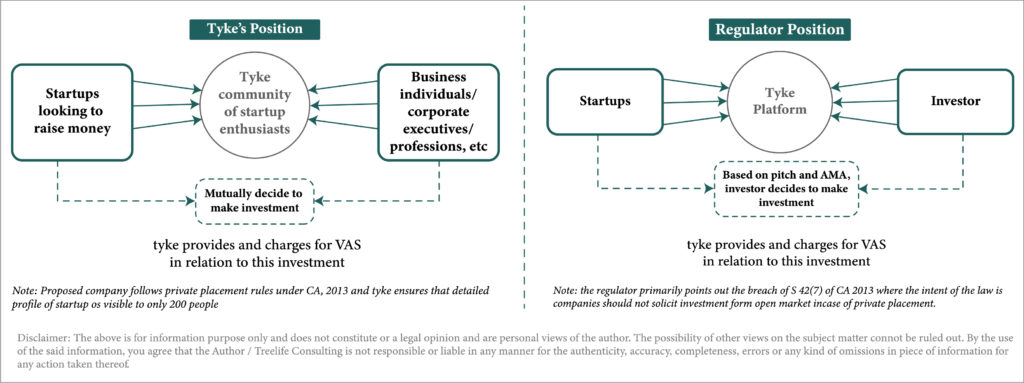
Regulators position – primary breach of S 42 (Issue of Shares on Private Placement basis) of CA, 2013
Extract of S 42(7) of the CA, 2013: “(7) No company issuing securities under this section shall release any public advertisements or utilize any media, marketing or distribution channels or agents to inform the public at large about such an issue.”
“S 42 of the Act clearly provides that the private placement shall be made to a select group of persons who have been identified by the Board. The number of such persons cannot exceed 200 (prescribed in the rules). The Explanation I. to S 42(3) makes it very clear that the process of “private placement” covers:
• the offer or
• invitation to subscribe or
• issue of
securities to a select group of persons by a company (other than by way of public offer) through private placement offer-cum-application, which satisfies the conditions specified in the section.
”In summary – the concept of the term ‘private placement’ stands for the fact that the company is identifying a certain set of parties to whom it wants to offer its securities rather than making any kind of public offer which generally happens in the case of listed companies. Private is construed as 200 people.
TYKE + Company’s position
“Tyke provides value added services in the form of facilitation of connecting like-minded people. Community with start-ups. Tyke also provides the verification of KYC, identification of KYC of people who have shown interest to invest in the company.”
“The Companies have only availed the value added services (VAS) which is provided by the Tyke platform.”
In summary – Tyke calls itself like a ‘community of like minded people and startups’ where the startup is leveraging on the community to raise investments and TYKE acts as a facilitator for the investment once the proposed investor and startup agree.
Our thoughts!
In the era of Shark Tank, every individual aspires to be a ‘shark’ and wants to participate in the startup ecosystem and ride the wave. TYKE serves as a great platform to provide access to both startups and retail investors for raising money and to invest money in startups respectively. In the USA, for example, this is considered as a high risk asset class and hence there are restrictions on the annual investment amount for regular investors other than ‘accredited investor’. Keeping this in mind, in the current scenario, despite all the explanations given by Tyke and the Company, the regulator primarily points out to the intent of the law where private placement (fundraise) cannot be published in open markets to solicit any investments through communities, etc
New Umbrella Entity (NUE) in India: How It Impacts Digital Payments
Over the recent years, cashless payments have become one of the preferred modes of retail transaction in India – particularly in urban markets. Unified Payments Interface (UPI) has allowed users to link their mobile phone numbers to their bank accounts since 2016. That’s made transferring and receiving money via apps as easy as sending a text message, at a minimal cost. With several payment apps to choose from and a quick and simple interface, the popularity of UPI has soared.
However, as the traffic builds, it’s getting riskier to depend on just one system. During the pandemic, with people spending more time at home and relying on the internet for shopping and entertainment, there’s been a rising incidence of internet fraud and cyber-crimes. To address the “risk concentration” of only one platform and offer consumers more options, the Reserve Bank of India in 2020 invited private companies to bid for a license to set up new platforms or pan-India umbrella entities to boost the retail payment in the country. These entities are otherwise known as New Umbrella Entities or NUEs.
What is an NUE & Why is RBI Introducing It?
At present, only the National Payments Council of India (NPCI), an umbrella organisation set up by the Reserve Bank of India (RBI) and the Indian Banks’ Association and incorporated as a not-for-profit entity, supports various payment systems, including RuPay, UPI and National Automated Clearing House, which manage inter-bank transfers. Players in the payments space have indicated the various pitfalls of NPCI being the only entity managing all of the retail payments systems in India.
The concerns regarding the systemic risk arising from concentrating operations of a significant portion of retail payments in one entity had been on the radar of the RBI for quite some time now and coupled with the pressure to open up the sector for competition from private players, the RBI has now put in place a regulatory framework that allows private players to establish and operate retail payments systems that enables fund-transfer and merchant payment systems.
The RBI’s move is aimed at developing a network parallel to NPCI, which can maintain interoperability with services such as UPI yet foster innovation and inclusion in the payments space offering more retail payment solutions to customers along with expanding the competitive landscape in this area.
How is NUE Different from NPCI?
NUEs will be for-profit (could also be registered as a Section 8 company under the Companies Act, 2013 as may be decided by it) and will be allowed to charge fees for transactions, unlike NPCI. They will be able to earn interest from the float that customers maintain in their online shopping accounts.
According to RBI Guidelines, the NUE licence would give companies the opportunity to set up, manage and operate ATMs, White Label PoS, Aadhaar-based payments and remittance services, develop new payment methods, standards and technologies and monitor related issues in the country and internationally.
RBI will authorize these NUEs under section 4 of the Payment and Settlement Systems Act, 2007.
Eligibility & Who Can Apply for NUE?
All entities owned and controlled by resident Indian citizens (as defined under FEMA rules) with at least three years of experience in the payment ecosystem as a Payment System Operator (PSO), Payment Service Provider (PSP) or Technology Service Provider (TSP) can apply for NUE.
Promoter: Any entity holding more than 25% of the paid-up capital of the NUE shall be deemed to be a promoter. A promoter will hold at least 25% and up to 40% in the operator and must be an Indian resident.
In case of Foreign Direct Investment (FDI) / Foreign Portfolio Investor (FPI): The applicant entity should –
- Comply with the FDI policy and guidelines of the Indian government
- Comply with capital requirements as per FEMA rules / regulations
- Comply with corporate governance norms issued by RBI
- Obtain RBI’s approval for the appointment of board members.
RBI’s fit and proper criteria for applicant entity and promoter – Should have a track record of financial integrity, good reputation & character and honesty. Such a person should not be convicted by a court for any economic offence or any offence under RBI laws; should not be declared insolvent and not discharged; should not be financially unsound or of an unsound mind.
Capital & Governance Requirements for NUE
At the time of application:
The entity, applying for NUE, should have a minimum paid-up capital of INR 500 crore.
The promoter should be able to demonstrate a capital contribution of at least 10% i.e. INR 50 crore at the time of application (to be further increased to at least 25% at the time of commencement of business)
A single promoter or group cannot hold more than 40% investment in the capital of the NUE.
Foreign companies can own a maximum 25% and are therefore teaming up with local players.
Subsequently
A minimum net worth of INR 300 crore should be maintained at all times.
The promoter/promoter group shareholding can be diluted to a minimum of 25% after 5 years of commencement of the business.
Latest Updates on NUE Licensing by RBI (2024)
The Reserve Bank retains the right to approve the appointment of Directors as also to nominate a member on the Board of the New umbrella entity.
The Application Process
Once an entity applies for the license of NUE, a scrutiny of applications will be undertaken by an External Advisory Committee (EAC). The EAC will submit its recommendations to the RBI. Board for Regulation and Supervision of Payment and Settlement Systems (BPSS) will be the final authority on issuing authorization for setting up the NUE. This whole process should tentatively be completed within a period of six months.
Who had applied for NUE license and Recent Developments?
Six groups have applied for the NUE licence, for which the deadline was March 31, 2021:
- A consortium consisting of Amazon, Visa Inc., Indian private lenders ICICI Bank Ltd and Axis Bank, and two financial-services startups, Pine Labs and BillDesk
- Another group is led by Reliance Industries, partnering with Facebook and Alphabet Inc.’s Google
- Paytm has joined with ride-hailing startup Ola, IndusInd Bank Policy Bazaar among others
- The Tata Group has combined forces with Mastercard Inc., Airtel Digitel and two Indian banks, HDFC and Kotak
- Financial Software and Systems is applying with India Post Payments Bank Ltd., RazorPay and others
- U.S.based payments firm FIS joined with Union Bank of India and Punjab National Bank
However, the Reserve Bank of India (RBI) has put on hold licensing of the New Umbrella Entity (NUE) network, a fintech institution planned as a rival to National Payments Corporation of India (NPCI).
All the applications for the NUE licence were submitted in March-April 2021, but there has been no communication from the RBI after that, reason being none of the applicants have proposed anything novel or a great technology breakthrough that would have made RBI happy and all applicants plans were similar to the model of NPCI.
Hence, the regulator would not permit any of the six consortiums to open for operation since they have all failed to live up to the RBI’s standards.
Will NUEs Replace NPCI?
NUEs will not replace but complement NPCI in taking India’s digital payment success story to new heights. RBI’s decision to allow fintechs and payment companies like Visa and Mastercard to process NEFT and RTGS payments is a step towards creating an enabling environment for NUEs to succeed.
FAQs on New Umbrella Entity (NUE)
Q: What is a New Umbrella Entity (NUE) in India?
A: A New Umbrella Entity (NUE) in India is a private entity that operates and manages payment systems like UPI (Unified Payments Interface), which was previously managed by the National Payments Corporation of India (NPCI). The NUE aims to foster competition, innovation, and enhance the efficiency of India’s digital payments ecosystem.
Q: Why did the RBI introduce NUEs?
A: The Reserve Bank of India (RBI) introduced NUEs to promote competition and innovation in the payment systems market. This move aims to reduce dependency on a single entity (NPCI) and encourage diverse players, including fintech companies and banks, to enhance the quality and security of digital payment services.
Q: How does an NUE work?
A: An NUE operates by managing, promoting, and overseeing payment infrastructure like UPI, mobile wallets, and other financial transactions. It ensures the interoperability of digital payment systems, sets up the technical framework, and works towards improving the efficiency and accessibility of digital payments.
Q: Is NUE different from NPCI?
A: Yes, NUE is different from NPCI. While NPCI is a non-profit organization that has been the backbone of India’s digital payment systems, NUE is a private entity that will oversee a broader range of payment systems. NUE will foster greater competition, innovation, and offer more advanced solutions compared to NPCI’s existing model.
Q: Who is eligible to apply for an NUE license?
A: Eligibility to apply for an NUE license includes entities that have experience in payment systems, technology infrastructure, and financial operations. Eligible applicants include private entities, consortiums of banks, fintech companies, and tech-driven financial service providers with sufficient resources and expertise.
Q: What is the minimum capital requirement for an NUE license?
A: The minimum capital requirement for an NUE license is ₹500 crore. This ensures that the applicant has the financial resources to build and maintain a reliable and secure payment system infrastructure.
Q: Can foreign companies apply for NUE?
A: Yes, foreign companies can apply for an NUE license in India, provided they meet the eligibility criteria outlined by the RBI. However, they must adhere to the RBI’s regulations and India’s financial sector policies.
Q: How long does it take to get an NUE license from RBI?
A: The process to obtain an NUE license from the RBI can take several months. The RBI evaluates each application thoroughly, assessing the financial, technical, and operational capabilities of the applicant before granting approval.
Q: How will NUEs benefit India’s digital payments ecosystem?
A: NUEs will bring in more competition, leading to innovative products, better security, and enhanced services. They will improve the efficiency of digital payments, reduce costs, and encourage more players to enter the market, benefiting both consumers and businesses.
Q: Will NUEs replace NPCI?
A: No, NUEs will not replace NPCI. Instead, NUEs will coexist with NPCI and offer competition in managing payment systems like UPI. The intention is to provide greater choices and improve the digital payments landscape.
Q: Can NUEs operate UPI payments like NPCI?
A: Yes, NUEs can operate UPI payments, similar to NPCI, if granted the necessary licenses. However, the RBI’s regulatory framework ensures that NUEs will adhere to the same high standards for security and interoperability as NPCI.
Q: How does NUE impact businesses and banks?
A: NUEs will provide businesses and banks with more options for digital payment solutions, which will lead to enhanced service offerings, improved competition, and reduced costs. This will further drive innovation and enable businesses to offer more secure and efficient payment methods to their customers.
Q: What are RBI’s regulatory requirements for NUEs?
A: RBI’s regulatory requirements for NUEs include compliance with strict capital requirements, technical standards, cybersecurity protocols, and adherence to customer protection norms. NUEs must also ensure the interoperability of their systems with existing payment platforms and maintain transparency in operations.
Q: Why has RBI put NUE licensing on hold?
A: RBI paused NUE licensing due to concerns over market competition and the potential for monopolies. The central bank is reviewing its approach to ensure that NUEs will not disrupt the existing payment infrastructure and that they operate in line with regulatory goals.
Q: Can an NUE consortium include banks and fintech companies?
A: Yes, an NUE consortium can include banks, fintech companies, and other financial service providers. This collaboration enables sharing of expertise, resources, and technological infrastructure, which can lead to more robust payment systems.
Q: Which companies applied for an NUE license?
A: Some of the notable companies that have applied for an NUE license include large private banks, fintech firms, and technology companies. These applicants have experience in payment systems and technology infrastructure and are looking to contribute to India’s digital payment revolution.
Q: What is the latest update on NUEs in 2024?
A: As of 2024, the RBI has yet to release new guidelines or grant NUE licenses. However, it continues to assess applications and is expected to reopen the licensing process once its concerns about market competition and system stability are addressed.
Q: Will RBI relaunch the NUE licensing process?
A: It is anticipated that the RBI will eventually relaunch the NUE licensing process, but the timeline remains uncertain. The RBI is likely to resume issuing licenses after refining the regulatory framework and ensuring that the payment system remains secure and efficient.
Q: How will NUEs affect UPI transactions for customers?
A: NUEs are expected to bring more competition to the UPI ecosystem, potentially offering new features, enhanced security, and faster transaction processing. For customers, this means improved user experiences and access to a broader range of payment options.
Q: What security measures will NUEs implement?
A: NUEs will be required to implement robust security measures, including end-to-end encryption, fraud detection systems, and compliance with RBI’s cybersecurity protocols. These measures will ensure the integrity and safety of digital transactions for users and businesses alike.
Special Purpose Acquisition Companies (SPACs)
What’s the connection between NBA legend Shaquille O Neal, tennis star Serena Williams, former Facebook executive and Silicon Valley investor Chamath Palihapitiya, and Indian media veteran Uday Shankar? SPACs!
What are SPACs and how do they work?
SPAC or Special Purpose Acquisition Company is a company without commercial operations listed on a stock exchange by an experienced management team or an individual with an investment pedigree (known as the Sponsor) with the sole purpose of acquiring or buying out a private company, thus making it public without going through traditional IPO. At times, SPACs are also referred to as blank check companies.
The private company being targeted is not known at the start, although the Sponsors could indicate the geography/sector they are interested in investing.
For the purpose of this acquisition, the SPAC needs money which is raised through the process of IPO. The IPO’s success solely depends on the faith that the investors have in the Sponsors, since the company has no business / financial performance to speak of. SPACs seek underwriters and institutional investors before offering shares to the public. During IPO, investors are allotted units which comprise of shares along with fractional warrants (SPAC warrants are options given to the warrant holder to buy the shares of the company at a predetermined price on a future date, subject to certain terms and conditions relating to the exercising) that offer them an upside and act as a deal sweetener. The capital raised through the IPO is placed in an interest-bearing trust account until the target company is identified.
A SPAC has about two years to discover this target and complete a reverse merger. If the SPAC fails to find a suitable target and complete the process, it gets delisted, liquidated and the entire money kept in the escrow account (along with interest less any taxes/bank fees) is refunded to all the investors. If the target is identified within 2 years, then post the approval of the proposed acquisition by SPAC investors, the SPAC and the target combine to form a publicly traded operating company, leading to an automatic listing of the acquired private company.
Note – If the SPAC investor is not comfortable with a planned purchase, he/she has the option to sell the shares and exit, but can keep the warrants. These warrants give you an additional upside if the SPAC is successful and goes better than expected.
The deal value of the acquisition could be four to five times higher than funds raised by the SPAC. The difference is met through fresh investments, mainly in the form of Private Investment in Public Equity (PIPE) deals. At the time of a public listing, large private equity and hedge funds can directly invest in and acquire shares of a company at share price or at a discount without going through the stock markets. The funds get access to non-public information on the potential target company from the SPAC after signing a NDA and get the option to invest at the time of the merger.
SPACs – why prefer them over traditional IPOs?
SPACs are considered a safe bet during choppy markets and the global outbreak of COVID-19 has played a major role in its popularity.
Traditional IPOs are seen to be expensive and far more time consuming in terms of registrations, disclosures and processes. SPACs involve lesser parties, lesser negotiations and are perceived to offer a faster and flexible route for venture capital funds and private equity majors to take their private companies public.
A regular IPO involves a list of procedures prior to actual listing – doing roadshows, convincing a wide variety of investors regarding future business prospects, deriving optimum valuation for the business etc. All these activities take time and are fraught with uncertainties. This is where SPAC has an advantage. With SPAC already listed, half the work is done. Also, the negotiation works faster since only one party has to be convinced.
SPACs work even better for startups – since most successful SPACs are run by experienced business investors, young companies can benefit from that investment expertise and not have to worry too much about swinging investment amounts or shifting negotiations. Broader market sentiment matters less since the SPAC investors commit to the purchase, sometimes allowing companies to remain truer to their original mission statement or purpose than if they were purchased by a larger board of investors.
Off late a majority of the SPACs have sponsored startups and companies that are pushing the boundaries of tech and are innovative. Being an investor in a SPAC gives funds and individuals the opportunity to potentially become an investor in such cutting-edge companies
What’s in it for the Sponsors and Investors?
For the sponsor, though they are not entitled to any remuneration during the process of raising funds and acquiring the target company, the substantial Founder shares and warrants are incredibly valuable. It is not every day that you get to own 20% of a company for $25,000.
For investors, SPACs make for a safe bet because their funds are parked in an interest bearing trust account until the merger. In many cases, the investors in a SPAC sell their shares before the merger or at the time of the merger and are able to make good profits
SPACs – Picking up steam
It is the sheer volume of dry powder sitting with investors – $2.5 trillion globally – that’s making SPACs quite popular. Also, SPACs offer a simplified path to taking a company public and to access the public markets for both investors and private companies.
Over the last 10 years, SPAC has been gradually gaining traction in the US markets. In 2020, SPAC was used as a listing option for every alternate transaction, i.e. 50 per cent of the transactions were done through SPACs. As much as $83 billion was raised.
In India, SPAC structure deals are not entirely new. For instance, in 2015, Silver Eagle Acquisition, a SPAC acquired a 30 percent stake in Videocon d2h for around $200 Mn. In 2016, Yatra Online, the parent company of Yatra India, listed on NASDAQ, by way of a reverse-merger with another US-based SPAC, Terrapin 3 Acquisition. The deal size was around $219 million.
Due to the increased scrutiny of US SPACs by the US SEC, companies are running low on targets in North America and as a result Asia is getting attention.
SPACs for Indian Investors
SPACs cannot be listed in India due to various rules and regulations around shell companies and the general myth that these companies are formed for money laundering activities
However, considering India’s large and mature IPO market and the fact that India is the third largest startup ecosystem in the world, regulators should consider allowing SPAC listing in India – with the necessary regulatory oversight in place. It is understandable that there may be some skepticism around the risks associated with SPACs, but the advantages that they bring to the table are priceless for investors.
Current Indian laws will have to be modified to bifurcate a shell company from a SPAC. Since SPACs are increasingly getting noticed by Indian investors they will hopefully also get noticed by lawmakers and regulators and they will make the required amendments in laws to gain from this SPAC boom.
Recent developments in India:
To keep with pace with the evolving market environment, International Financial Services Centres Authority (IFSCA), the unified regulator of IFSC at GIFT city, India, is now proposing a suitable framework for capital raising and listing of SPAC on the recognised stock exchanges in International Financial Services Centres (IFSCs).
The proposed salient features of the IFSCA framework for listing of SPACs are as follows:
- Offer size of not less than $50 million or any other amount as may be specified by the Authority from time to time.
- The sponsor would have to hold at least 20% of the post issue, paid-up capital
- The minimum application size in an initial public offer of SPAC shall be $250,000
- A minimum subscription of at least 75% of the offer size has been stipulated
SEBI has told the Parliamentary Standing Committee on Finance that it was deliberating on the framework of SPACs in Indian capital markets and a committee, which was set-up to look into it, is in the process of finalising its report.
What’s the bottom line?
Fancy packaging does not make it less risky to write out blank cheques. The magnitude of costs and risks involved around SPACs is high.
The SPAC structure lends itself to heavy dilution of share value, through shares allocated to the Sponsor, the options investors have to redeem shares without surrendering warrants, and the underwriting fees based on IPO proceeds. This in effect impacts the actual value of the SPAC shares at the time of the merger, further affecting the deal value and could result in lower share prices post-merger.
Considering a large number of SPACs being launched and allegations against some of them, there is rising scrutiny. There are calls for better disclosures and greater checks on Sponsors so they have more responsibility towards investors. The increased competition among SPAC Sponsors for investor money is also resulting in more equitable structuring, ensuring Sponsors do not have an extraordinary advantage over late investors.
With elements of high risk and the potential for spectacular windfalls, investors should be very mindful while giving in to the SPAC buzz.
All you need to know about the E-Commerce Industry in India
E-commerce has revolutionized the way businesses operate, not just in India but around the world. It is a business model that enables firms to conduct business over an electronic network, typically the internet. E-commerce operates in all four major market segments: B2B, B2C, C2C, and C2B. The ease and convenience of conducting commercial transactions over the internet have led to the rapid popularity and acceptance of e-commerce worldwide.
Here are some frequently asked questions about e-commerce in India:
- What are the benefits of starting an e-commerce business in India? – The government of India has been promoting e-commerce initiatives such as Startup India, Digital India, allocating funds for the BharatNet Project, and promoting a cashless economy. Registering an e-commerce business in India is a fairly open space, with no entry barriers imposed on domestic and foreign direct investment.
- What are the steps to start an e-commerce business in India? – The most basic step is to create a business plan designed according to market research, financial budget, and profit margin. Next, register the business for tax compliance and establish a payment gateway on the website. It is also mandatory to register with the Shops and Establishment Act, 1948 and the Employees State Insurance Act, 1948, if applicable. Finally, registration for domain name, Microsoft software licenses, and other software licenses is also needed.
- What are the benefits of MSME registration for e-commerce businesses? – MSME registration comes with its own set of benefits and is required for any e-commerce business falling within the limits of maximum investment for service providers to be INR 100 crore to appropriately register under MSME.
- What are the legal compliances needed for setting up an e-commerce business in India? – Legal compliances include registration for tax compliance, payment gateway establishment, registration for licenses such as the Shops and Establishment Act, 1948, Employees State Insurance Act, 1948, and registering the business for domain name and software licenses.
FAQs about Setting up E-commerce Business in India
- What is FDI in e-commerce?
FDI (Foreign Direct Investment) in e-commerce refers to the investment made by a foreign company in an Indian e-commerce business. The government has formulated certain guidelines and regulations that govern FDI in India’s e-commerce industry.
- Is FDI allowed in inventory-based e-commerce models?
No, FDI is not permitted in the inventory-based model of e-commerce.
- What are the conditions that e-commerce entities need to fulfill?
E-commerce entities must follow specific conditions, such as not directly or indirectly influencing the sale price of goods or services and not exercising ownership or control over the inventory beyond a particular limit.
- Who is responsible for post-sales services and customer satisfaction in e-commerce?
The responsibility for post-sales services and customer satisfaction lies with the seller, as mentioned in the FDI guidelines.
- Can entities with equity participation or control over inventory sell their products on the marketplace run by the marketplace entity?
No, entities with equity participation or control over inventory cannot sell their products on the platform run by the marketplace entity.
- What consumer protection measures are emphasised in the e-commerce policy?
Genuine reviews and ratings, anti-counterfeiting and privacy measures, and e-courts for grievance redressal are some of the consumer protection measures highlighted in the draft e-commerce policy.
- What is the emphasis on Made-In-India in e-commerce?
The Indian government intends to promote the Made-In-India initiative by allowing foreign MNCs to invest in Indian e-commerce companies that hold inventory, with a condition that 100% of the products in the inventory must be Made In India.
- Are foreign companies allowed to operate e-commerce businesses in India?
Foreign companies are allowed to operate e-commerce businesses in India, subject to compliance with Indian laws and regulations.
Whether to set up a Private Limited Company or LLP?
Incorporating a business involves several important decisions, including the choice of a business vehicle. Two popular vehicles are Limited Liability Partnerships (LLPs) and Private Limited Companies. This article aims to help founders choose between these two vehicles by providing a comparison chart that outlines the characteristics of each. Although the article doesn’t provide a definitive answer as to which vehicle is best, it aims to present various perspectives that should be considered.
When should founders choose between LLPs and Companies? As soon as their business idea is validated.
The comparison chart outlines various factors, including Applicable Law, Charter Documents, Number of Partners/Members, Liability of Partners/Members, Legal Entity, Key Managerial Personnel, Board and Shareholders Meetings, Preparation of Minute Book, Maintenance of Statutory Registers, Conversion, Directorship/Partnership, Audit, Withdrawal of Capital, Management, Taxability of Dividend, Employee Stock Options Plans, Funding, and Listing.
Investors are usually more willing to invest in a business vehicle set up as a Company. Shares are of two types; equity and preference. Equity shareholding provided to investors gives them a percentage share in the equity of the Company. The more the share, the more control investors as equity shareholders will have. Private companies can list their shares on the stock exchange and convert into a public limited company, subject to provisions of the Companies Act and SEBI Regulations.
Whether to set up a Private Limited Company or LLP?
Incorporating a business involves several important decisions, including the choice of a business vehicle. Two popular vehicles are Limited Liability Partnerships (LLPs) and Private Limited Companies. This article aims to help founders choose between these two vehicles by providing a comparison chart that outlines the characteristics of each. Although the article doesn’t provide a definitive answer as to which vehicle is best, it aims to present various perspectives that should be considered.
When should founders choose between LLPs and Companies? As soon as their business idea is validated.
Comparison Chart: LLP vs. Company
The following table briefly compares the characteristics of the two business vehicles and helps you make a decision based on what factors are most crucial for your business:
| Criteria | LLP | Company |
| Applicable Law | Limited Liability Partnership Act, 2008 (“LLP Act”) | Companies Act, 2013 (the “Act”) |
| Charter Documents | LLP agreement | Memorandum and Articles of Association and certificate of incorporation. |
| Number of Partners/Members | Minimum – 2 Maximum – No limit | Minimum – 2 Maximum – 200 |
| Liability of Partners / Member | Limited – indicating partners will not be personally liable for any debts of the LLP | Limited – indicating members will not be personally liable for any debts of the company |
| Legal Entity | Yes, can sue or be sued in the name of LLP | Yes, can sue or be sued in the name of the Company |
| Need to Appoint a key managerial person/Company Secretary | No | No, unless applicable |
| Board Meetings | Depends on the procedure prescribed in the LLP agreement | Mandatory, at least four (4) in every year |
| Shareholders Meeting | Not applicable | Mandatory |
| Preparation of Minute Book | Depends on the procedure prescribed in the LLP Agreement | Mandatory |
| Maintenance of Statutory Registers | LLP is not required to maintain any Registers, Records and Minutes unless specifically mandated by LLP Agreement. The partners are at liberty to decide the requirements. | A Company is required to maintain various Registers, Records and to Minutes of Board Meetings and General Meetings from time to time irrespective of doing business. |
| Conversion | Can be converted into a Company | Can be converted into LLP or any other class of Companies subject to certain restrictions as per the Act. |
| Directorship / Partnership | Foreign national can be a partner in the LLP subject to FEMA Regulations | Foreign national can be a Director in the Company. |
| Audit | LLP is required to get their accounts audited only if their annual turnover exceeds INR 40 Lakhs or capital contribution exceeds INR 25 Lakh | All Companies are required to get their accounts audited annually. |
| Withdrawal of capital | Partners can withdraw capital subject to LLP agreement. It is also possible for a partner to reduce contribution liability after giving notice to creditors. | Once paid up, capital cannot be withdrawn by shareholders without the approval of the court. Companies can buy back the shares subject to provisions of the Companies Act or transfer shares to others. |
| Management | LLP is managed by partners as per LLP agreement. Partners can delegate management power to a management team or single partner | Management of Company is vested with Board of Directors elected by shareholders |
| Taxability of Dividend in the hands of partner / shareholder | Profit distributed by an LLP is completely exempted in the hands of a partner. | Dividend from a Company up to INR 10 Lakhs is exempted in the hands of a shareholder. Dividend in excess of ₹10 Lakhs shall be taxable at 10% in the case of a resident individual/Firm. |
| Employee Stock Options Plans for attracting Employees | Not Applicable | Companies can issue Employee Stock Options Plans. |
| Funding | LLP cannot raise equity funding, as there is no concept of shareholding in an LLP. Investors would have to be provided an interest in the LLP, often through becoming partners in the LLP Agreement. | Private companies are preferred for external funding since shares can be issued against funds received (explained in detail below) |
| Listing | An LLP cannot ‘go’ public, in the sense that it cannot be listed on a stock exchange, which many investors view as a mode to exit from their interest in the entity. | Private companies can list their shares on the stock exchange and convert into a public limited company subject to provisions of Companies Act & SEBI Regulations |
Comparison Chart: LLP vs. Company
Funding preference:
Investors are usually more willing to invest in a business vehicle set up as a Company, since through certain arrangements (between the investors, founders and companies) the investors are able to gain the right to ‘control’ their investment. Investors are provided shares in the Company for their investment. To protect their investment, Indian laws allow freedom to the Company to structure share issue and allotment to investors in a manner that is mutually beneficial to both. The investors gain important rights such as the right to vote on certain business decisions, appoint their nominee directors on the board of the Company, gain access to sensitive financials and financial information of the Company.
Shares are of two types; equity and preference. Equity shareholding (if) provided to investors gives them a percentage share in the equity of the Company. The more the share, the more control investors as equity shareholders will have.
However, if the investment by the investors provides them a lion’s share in the equity of the Company, the founders who started the business may not have any interest in running the business itself, as their proportional ownership of the shares is not as high as it was before the investment was made. E.g.: An investor may invest INR ‘x’ in the equity share capital of the Company, taking the equity ownership of the founders down from 90% to 50%. To counter such situations, Companies are allowed to issue preference share capital to investors. Investors may still invest the same amount, however, the founders do not lose their stake in the equity of the company post investment. Preference shares can be issued in a manner that allows the investors to either be paid; i) dividends before equity shareholders; ii) interest payments; iii) right to convert to equity at a future date at a pre-determined value and other such superior rights in a Company.
Business: Product or Service?
An equally important consideration to keep in mind is the business itself. Businesses are of primarily two types: those that offer products or provide services.
Products mostly adhere to a standard that is common for all, i.e. for those that sell it and for those that buy it (think of wallets – to keep your money in, uber – a product to hail rides, Zomato – a product providing restaurant listing services). Its easier to scale production with an increase in availability of resources. In such cases, a private limited company could be a better option.
Services, on the other hand, are a customized offering to the customers/market of a startup, and are dependent on the manual labour and inputs of a professional (think a marketing, advertising, legal or finance firm). Services mostly depend on professionals and need to be customized progressively more when offering the services to a larger market, i.e. scalability is a challenge. LLP structures are more suited in such cases.
Therefore, you’d have to know the nature of your business, which if considered in the manner just stated, is an easier choice to make – and helps deciding whether to choose either a Company, or an LLP as the preferred business vehicle.
SaaS is an interesting category, which would depend on how customized or standardized the software itself needs to be. Moreover, at Treelife we have observed that often a SaaS could start out as a service, but as the business itself matures/grows, it could take on the nature of a product. For example, a startup could enter into agreements which allow their offering to be tailored to a specific need, but later on could diversify the same offering for a larger market.
We hope that this analysis into the nature of the business, funding preferences and the comparative features of the two structures, mentioned above, would help you in deciding between setting up a private limited company or LLP!
Impact of PMLA Amendments on Virtual Digital Asset Transactions
Notification Coverage
The Ministry of Finance has notified an amendment in Prevention of Money-Laundering Act, 2002 (“Act”) by way of Notification No. S.O. 1072(E) dated 07.03.2023 (“Notification”). The Act has been amended to include cryptocurrency or virtual digital assets (“VDA”) transactions within its scope. This means that certain transactions are now subject to the provisions of the Act.
The amendment shall be applicable to the following entities:
(a) exchange between virtual digital assets and fiat currencies;
(b) exchange between one or more forms of virtual digital assets;
(c) transfer of virtual digital assets;
(d) safekeeping or administration of virtual digital assets or instruments enabling control over virtual digital assets; and
(e) participation in and provision of financial services related to an issuer’s offer and sale of a virtual digital asset.
If a company falls under the above mentioned categories they are considered to be Virtual Assets Service Providers (“VASPs”) and are required to follow various reporting requirements.
Reporting Requirements
- Verifying Identity: Under section 11A of the Act, every reporting entity shall verify the identity of its clients and the beneficial owner, by:
- authentication under section 2(c) of the Aadhaar (Targeted Delivery of Financial and Other Subsidies, Benefits and Services) Act, 2016, if the reporting entity is a banking company;
- offline verification under the Aadhaar (Targeted Delivery of Financial and Other Subsidies, Benefits and Services) Act, 2016;
- use of passport issued under section 4 of the Passports Act, 1967; and
- use of any other officially valid document or modes of identification as may be notified by the Central Government on this behalf.
- Records Maintenance: Under section 12 of the Act,
- Every reporting entity shall:
- maintain a record of all transactions as to enable it to reconstruct individual transactions (for 5 years from the date of the transaction);
- furnish to the Director, information relating to such transactions, whether attempted or executed, the nature and value of which may be prescribed; and
- (iii) maintain record of documents evidencing identity of its clients and beneficial owners as well as account files and business correspondence relating to its clients (for 5 years after the business relationship between a client and the reporting entity has ended).
- Every information maintained, furnished or verified, shall be kept confidential.
- Every reporting entity shall:
Conclusion
It can be therefore concluded that, the activities of any company who is just a marketplace or an aggregator of VDAs would not fall within the purview of this amendment. However, if a company engages in activities related to the buying and selling of VDAs, such as processing transactions, offering VDAs for sale, making purchase offers, or providing financial services related to them, it will be considered a reporting entity. In our view, advisory services or other non-financial services which do not include any actual facilitation of payments/ sale would not be covered under the ambit of the amendment. However, if a reporting entity engages in such activities, it must comply with the above mentioned requirements.
Why do angel investors and VC funds ask for preference shares in a funding round?
In this blog, we will discuss the reasons why investors ask companies to issue preference shares during their funding rounds. We’ll also cover what preference shares are, their features, and their types.
Section 43 of the Companies Act, 2013 states that
(ii) “preference share capital‘‘, with reference to any company limited by shares, means that part of the issued share capital of the company which carries or would carry a preferential right with respect to— (a) payment of dividend, either as a fixed amount or an amount calculated at a fixed rate, which may either be free of or subject to income-tax; and
(b) repayment, in the case of a winding up or repayment of capital, of the amount of the share capital paid-up or deemed to have been paid-up, whether or not, there is a preferential right to the payment of any fixed premium or premium on any fixed scale, specified in the memorandum or articles of the company;
(iii) capital shall be deemed to be preference capital, notwithstanding that it is entitled to either or both of the following rights, namely: —
(a) that in respect of dividends, in addition to the preferential rights to the amounts specified above, it has a right to participate, whether fully or to a limited extent, with capital not entitled to the preferential right aforesaid;
(b) that in respect of capital, in addition to the preferential right to the repayment, on a winding up, of the amounts specified above, it has a right to participate, whether fully or to a limited extent, with capital not entitled to that preferential right in any surplus which may remain after the entire capital has been repaid.”
From the above definition, we can understand that Preference Shares are those shares that are given priority over other equity shares. Preference Shares are held by preference shareholders who get the right to receive the first payouts in case the company decides to pay its investors any dividends. Another way to understand preference shares is those shares whose shareholders have the right to claim dividends during the lifetime of a company. The same shareholders also can claim repayment of capital in case the company is wound up or liquidated. These shares combine the characteristics of debt and equity both.
Preference shares are given priority over other equity shares and are held by preference shareholders who receive the first payouts in case the company pays its investors any dividends. These shares also provide a preferential right to claim dividends during the lifetime of a company and the repayment of capital if the company is liquidated. The features of preference shares:
- Dividend payouts: Preference shares allow holders to receive dividend payouts when other stockholders may not receive any dividends or receive them later. The payouts can be fixed or floating based on the interest rate benchmark.
- Preference in assets: When the company is liquidated or wound up, preference shares get priority over non-preferential shareholders when claiming the company’s assets.
- Voting rights: Preference shares generally do not carry voting rights, but preference shareholders may be allowed to vote in specific events that directly affect their rights as holders of preference shares.
- Convertibility: Preference Shares can be converted into ordinary equity shares. They are typically converted into a predetermined number of non-preference shares after certain trigger events.
Types of preference shares:
- Convertible preference shares: Convertible Preference Shares allow shareholders to convert their Preference Shares into equity shares at a fixed rate after a specified period.
- Non-convertible preference shares: These shares cannot be converted into equity shares and only receive fixed dividend payouts.
- Redeemable preference shares: Redeemable Preference Shares can be repurchased or redeemed by the company at a fixed rate and date.
- Irredeemable preference shares: Irredeemable Preference Shares cannot be redeemed during the company’s lifetime.
- Participating preference shares: These shares allow shareholders to demand a part in the surplus profit of the company at the event of liquidation after the dividends have been paid to other shareholders.
- Non-participating preference shares: These shares only offer fixed dividends and do not provide shareholders with the additional option of earning dividends from the surplus profits earned by the company.
The prime reason investors ask for Preference Shares is the security it offers them, especially when investing in early-stage startups. Preference Shares provide a participating liquidation preference that grants the investor a right to receive its funds in a liquidation event, with the balance of the proceeds being shared ratably amongst the holders of the equity shares and Preference Shares. In a non-participating liquidation preference, the preference holder will receive its predetermined returns, but will not receive any portion of the remaining proceeds.
FACTS:
Startup- ABC Private Limited
Investor-XYZ Ventures,
Investment amount: USD 5 million for 20 percent of the equity in the Startup with a predetermined liquidation preference of 1x of the Investment Amount. (this typically ranges from 1x to 1.5x depending on the deal size)
Liquidation Event Proceeds = USD 100 million
- As per Non-participating Liquidation Preference, XYZ Ventures will have the option to take the greater of USD 5 million or 20 percent of USD 100 million. Here, XYZ Ventures will opt for the latter and take away USD 20 million;
- As per the Participating Liquidation Preference, XYZ Ventures will have the right to take USD 5 million first and then partake 20% in the remaining USD 95 million as well. This totals the aggregate amount of return to XYZ Ventures to USD 24 million (USD 5 million + 20% of USD 95 million).
In practice, an event of liquidation is not limited to “winding up”, under the Companies Act, 2013. It usually includes any merger or consolidation of the company in which its shareholders do not retain a majority of the voting power in the surviving entity, the sale of all or substantially all of the company’s assets, and any other transaction constituting a change of control or even an initial public offer.
If the company has to be wound up, then to ensure the protection of their money, an investor would prefer to have preferential rights at the time capital is repaid. Here, preference shareholders have an edge over equity shareholders. The priority of repayment in the course of winding up is statutorily prescribed, such that shareholders may be repaid only after all outstanding liabilities of the company have been discharged. The Companies Act, 2013 provides that, with regard to capital, Preference Shares carry or will carry on winding up or repayment of capital a preferential right to be repaid the amount of the capital paid up or deemed to have been paid up, whether or not there is a preferential right to the payment of either or both of the following amount: (i) any dividend remaining unpaid up to the date of winding up or repayment of capital; and (ii) any fixed premium or premium on any fixed scale, specified in the company’s charter documents.
An investment agreement usually includes provisions that provide an assured exit to the investors at a fixed return post a specified period. However, the need for liquidation preference protection arises in scenarios where a liquidation event takes place prior to the investor being provided an exit. In such a case it is essential that the investor receives a return on its investment and such a clause is included in an investment agreement.
Anti-dilution –
Another practical benefit of preference shares is that they provide ‘down round’ protection to the investor. In India, the two commonly used forms of anti-dilution protection are: (a) Full Ratchet and (b) Broad-Based Weighted Average.
A Preference Shareholder has the option to require the company to protect its interest in the event the company issues shares in the subsequent rounds at a price lower than the price of the investor’s share. This is achieved by conversion of the existing Preference Shares of the investor into such number of equity shares, or by issuing a further number of Preference Shares to the company at a lower value, such that the shareholding percentage of the investor does not take a hit.
Dividends –
“The first rule in investing: don’t lose any money. The second rule: don’t forget the first rule!” as quoted by Warren Buffet on an occasion.
Since the prime reason for all investments is returns, it is only prudent to investigate the nature of the instrument in respect of returns. While most investments are done looking at the returns being received via the enhanced value of the shares at the time of exit, it is also prudent to also look at dividends.
A Preference Share gives a preferential right in regard to dividends under the Companies Act, of 2013. An interesting fact is that the provision relating to Preference Shares under the Companies Act only contemplates the payment of a fixed amount or an amount calculated at a fixed rate, in preference to the equity shareholders of a company. The provision does not mention the time period within which a dividend has to be paid. Therefore, the investor is free to contractually require the company to pay not only a dividend in preference to other shareholders but also to require the company to pay a dividend on a year-on-year basis, rather than as and when declared.
Conclusion
The characteristics and the understanding of how Preference Shares are beneficial to the investors lead us to conclude that Preference Shares are a perfect mechanism to protect the interest of the investors who are making an investment in startups and taking on the risk associated with such investments.
We can conclude that the liquidation preference that these Preference Shares provide to the investors (which is incorporated in the investment agreements in the language acceptable to the investor) becomes one of the prime reasons for them asking for Preference Shares.
However, dividends and anti-dilution are also equally important factors. Dividends are primarily important because investors are majorly interested in protecting cash flows through dividends than returns.
Based on the above discussion we can conclude a Preference Share can be customized to the needs of the investor, making Preference Shares a more attractive solution for investments than equity or debt. However, it is always advisable for investors to invest in a few equity shares as well in order to maintain their voting rights.
Understanding IPR relating to Work Products
How to Understand Intellectual Property Rights in Employment?
Intellectual Property is any creative work or invention of the mind and it belongs to the person who created it unless it is stated otherwise in a predetermined contract. In the case of employment, the employer may own or have assigned rights over the intellectual property that an employee creates during the employment period, if his signed employment contract says so. But, the employee still has original rights over the work they created and can claim them later after leaving the company which may lead to confusion and potential dispute. Therefore, it is essential to include terms related to the ownership of intellectual property in employment contracts, independent contractor agreements, or consultant and designer agreements.
What falls under Intellectual Property Rights?
Intellectual property includes inventions, designs, literary and artistic works, trademarks (symbols, and images) used in commerce. There are nine categories of intellectual property such as copyrights, trademarks, patents, designs, geographical indications, trade secrets, and more. Some key attributes of IPRs are that they are intangible assets, creations of the mind, and entail negative rights which means the owner can exclude others from using their property.
Under the employment scene, the most common IPRs are industrial designs, copyrights, trademarks, inventions and patents, trade secrets, and more. Protection of intellectual property is crucial, as employees have access to the business’s internal and pre-existing codes, models, and systems. Employees can leak or steal data and share it with competitors. Therefore, it is essential to protect IPRs from being stolen or leaked from the company.
Ownership of IPR in Employment
As per common practice and industry standards, the employer owns the intellectual property an employee creates during their employment, since the employer invests in the employee in terms of salary and providing infrastructure and basic resources which enables the employee to create such work product and IP. However, no blanket rights are granted to employers, and there are some factors to consider while resolving any dispute related to the ownership of intellectual property rights in employment.
Ordinarily, the employment agreement signed by the employee at the time of agreeing to work with the employer will detail out the IP rights and which party will retain ownership in the work product consisting of such IP and for how long. Including clauses about confidentiality in employment contracts or commercial relationships between the parties can also help to protect intellectual property. If there is no pre-existing agreement defining terms of ownership of IPR between employee and the employer, the employee can assign his rights in the IP by executing an assignment deed at a subsequent stage in favour of the employer, based on mutual understanding.
By including clear clauses in employment contracts or other written agreements, employers can define title to seek protect their IPRs and prevent any legal disputes regarding ownership.
Understanding Intellectual Property Rights in Employment: Key Factors and Agreements
In India, the ownership of Intellectual Property (IP) rights can vary under different IP laws. Copyright law states that the creator or author is the first owner of copyright, and patents law says that the inventor is the first owner. The Designs Act, 2000, mandates a procedure for the assignment of designs similar to patent assignments. Trademarks are the property of the registered proprietor. However, there is no current domestic legislation protecting trade secrets or confidential information. Hence, disputes may arise between employers and employees regarding ownership rights, which can be resolved by including clear terms in employment contracts for how employee-developed IP will be dealt with.
Key Factors to Decide Ownership in IPR
Statutory Provisions – The ownership rights of IP will be decided according to clear legal provisions specified in law.
Contract of Service – The employer must pay salary to the employee for work done under a contract of service, and the employer can claim the ownership of IP if provided in the employment contract.
Agreement for IP Ownership – An intellectual property assignment agreement between the employer and employee specifies the ownership of IP in different situations. This agreement solves the ownership issue with respect to the IP created during the employment, especially if terms of ownership are not contemplated in the employment agreement itself.
Nature of Work – If there is no statutory provision, the nature of work that the employee is engaged in can decide the ownership of the IP created during the employment. If any IP is created by the employee in connection with work profile and part of his day-to-day functions, then it belongs to the employer unless there is a contrary contractual understanding.
Agreements to Execute Between Employer and Employee to Avoid Disputes
Employment Agreement
It is recommended to execute a detailed and exhaustive employment agreement at the time of hiring an employee that mentions the ownership of IP generated during the course of employment. Confidentiality and Intellectual Property Assignment clauses, and governing law clauses can be included.
Intellectual Property Assignment Agreement
If the employer wants to acquire the IP created by an employee that does not fall under the employee’s nature of work and IP that doesn’t get owned by the employer automatically, an IP Assignment Agreement can be executed subsequently with proper terms and conditions.
Conclusion
Employers need to protect their IP, but they cannot always be the deemed owner of IP created by an employee during the employment. With proper contracts between the employer and the employee, the risks associated with the ownership of IP can be mitigated. To avoid disputes, terms and conditions of ownership of IP created during the employment must be executed on paper, and a lawyer can help dilute the prospective risk of tussles for ownership rights.
De-Coding the Co-Founders Agreement
Starting a business involves risks, and it is important to take precautionary steps to safeguard your investment. One of these steps includes drafting a Co-Founders Agreement, especially if your startup is co-founded by more than one person. This agreement lays down the terms and conditions between co-founders and helps navigate their day-to-day operations, resolve any disputes that may arise, and clarify profit-sharing and intellectual property rights. Here are some key clauses that should be part of your Co-Founders Agreement to ensure smooth operation of your business:
- Capital Contribution: Clearly state the contribution that each co-founder will make to the company, the percentage of total capital held by each of them, and the form and manner of the contribution.
- Roles and Responsibilities: Describe each co-founder’s roles and responsibilities in the company and assign specific decision-making responsibilities.
- Transfer of Shares: Clearly state any restrictions on the transferability of shares held by the founders, including lock-in of shares, vesting of shares, and right of first refusal.
- Non-Compete: Incorporate a non-compete clause to protect the business and the interests of other founders. The clause should clearly state that founders are not eligible to engage in activities that conflict with the objectives of the business while they are part of the company and for a certain number of years post-exit.
- Confidentiality: Incorporate a confidentiality clause to protect the business’s know-how, client information, pricing, and future strategies, among other things.
- Intellectual Property: Ensure that all intellectual property developed during the course of the business is owned by the business and not by any individual co-founder.
- Exit Process: Clearly state the manner to be adopted and the exit mechanism in case any co-founder is removed from the company or wants to exit voluntarily.
- Dispute Resolution: Provide a clear mechanism for the resolution of deadlocks or conflicts that may arise between the co-founders, such as arbitration.
- Compensation: Determine the compensation to be paid to each co-founder and state the profit-sharing mechanism.
- Voting Matters and Governance: Address any voting matters and governance issues to ensure smoother decision-making in the long run.
Incorporating these clauses into your Co-Founders Agreement can help build a long-lasting and successful relationship between co-founders and lead to the ultimate success of your business.
5 Things To Keep In Mind While Filing For Trademark
As the famous quote by Shakespeare goes, “What’s in a name?” Well, in today’s world, a lot! With businesses fighting for exclusivity and originality in their names, it has become crucial to protect your brand through Trademark registration. A Trademark, according to Section 2 of the Trade Marks Act, 1999, is a mark that distinguishes the goods and services of one company from another. It can be anything from a symbol to a label or a logo.
Trademark registration provides legal rights to the owner to use the name, logo, symbol, etc., as the identity of their business. It also helps customers associate your brand name with your product/service, creating a strong consumer base. For instance, Cadbury is a multinational company known for its milk chocolates. Still, due to its unique and widely used name, people interchangeably use Cadbury to refer to a basic milk chocolate.
In India, the Ministry of Commerce & Industry, Controller General of Patents, Designs, and Trade Marks, and Indian Government regulate Trademark Registration. Before initiating the registration process, it is essential to keep the following crucial aspects in mind:
- What can be trademarked?
Understand what can be trademarked and what cannot. You can trademark a wordmark, device mark or logo, unique sound mark associated with your brand, or a new color/shade of color.
- Which are the types of Trademarks?
Goods marks and Service marks are the two broad categories for trademarks. There are also Product marks, which are marks on products or goods, and Service marks to register services. The applicant needs to choose the appropriate class from the notified classification to register a Trademark according to the nature of its products/service provided.
- Choose a mark that is protective
Choose a unique and easily identifiable mark that protects your brand from infringement. Ensure that your mark is not too common or generic or directly descriptive of your product/service, leading to issues arising due to its similarity with common words or other brand names or logos.
- Check for similar marks and the availability of the chosen mark in the specific class
Running a preliminary search in the database to check for any similar trademarks in the same class is crucial to avoid rejection of the Trademark application.
- The cost involved
The cost of filing a Trademark application varies based on the type of entity applying for the mark. It is advisable to renew the registration before the lapse of ten years; otherwise, the mark will be considered abandoned and can be applied for by someone else.
Trademark registration is an efficient tool to gain a competitive edge over other businesses of similar nature. Apart from providing a unique identity, filing for your Trademark comes with a package of advantages that can be beneficial for the business in the long run. These include a greater brand image, product differentiation, identity, and most importantly, legal protection against infringement.
If you need any legal assistance in Trademark Registration, Treelife Consulting is a one-stop solution for you. Contact us for more information.
Elementary Concepts of “Equity Dilution”
In the start-up ecosystem, equity distribution is a crucial aspect of wealth creation and value generation. With such importance on the valuation aspect, stakeholders are continuously looking for varied structures to define equity distribution of the company. As such, founders must strike a balance between controlling costs and distributing equity. Although equity distribution has no fixed principles, industry practices offer some broad structures that founders can follow. This post answers frequently asked questions about equity dilution, which is one of the most critical aspects of a start-up.
What is dilution of equity?
Equity dilution means the reduction of a shareholder’s percentage of ownership in the company as new shareholders are added. Consider a company as a piece of land where two shareholders or founders share the land. Then you bring on board an advisor and an ESOP pool is also created.,the founders will have to share the same land with them, reducing the founders’ percentage of ownership. When new investors come in, they will have to share the same land too. The same principle applies to a company, as new shareholders come in, the founders’ share in the company gets reduced. The reduction of your space/ percentage of shareholding as a shareholder is termed as dilution of equity.
What is primary sale vs. secondary sale?
This question often comes across that founders are skeptical about giving away their shares when anyone wants a piece of the company. To address this issue, it’s important to understand two primary concepts – primary and secondary sale.
Primary Sale – Primary sale happens when an investor invests money in a company and seeks new shares to be allotted from the company. In primary investment, everyone gets diluted in proportion to their shareholding unless special conditions are mentioned.
Secondary Sale – Secondary sale, on the other hand, occurs when the investor is looking to buy already existing shares of the founder or any other existing shareholders by paying money directly to them. There is no dilution or change in the share of other parties, except the buyer and seller.
How does it work?
Every company has 100% shares, and the number of shares can be increased based on the ratio to post-investment.
For example, if two founders (founder A and B) hold 5,250 shares each with a 50% controlling interest in the company, and an investor comes in with an investment of $1 million considering the pre-money valuation of $3 million, the number of shares will increase based on the ratio to post-investment. In this case, 25% (1Mn/4Mn). The post-investment round will dilute the holding of the founders, reducing their controlling interest from the original hold.

How much to dilute?
The amount of dilution depends on the stage of the business and other factors. Too much dilution can be a concern for future incoming investors, while too little is concerning to investors as they should have skin in the game. The ultimate goal is to grow the business, so even if the dilution numbers are skewed from the expected dilution, the growth of the business is the primary concern.
Pre-money vs. post-money Valuation
Pre-money valuation is the value of the company before it receives the investment amount, while Post-money valuation is the value of the company after it receives the investment amount. Investors offer equity based on pre-money valuation, but the percentage sought is based on the post-money valuation.
Post Money Valuation = Pre Money Valuation + Investment Amount
In conclusion, understanding equity dilution and the cap table is a pertinent metric of fundraising and talking to investors. We often see founders neglect it due to a lack of clarity of these concepts. A grasp on these concepts enables the founder to have better control of the shareholding.
Term Sheet Basics
A Term Sheet is a non-binding document outlining the basic terms and conditions under which an investment will be made. It is essentially a brief understanding between the founders and the potential investor(s). The document summarizes the key points of the commercial agreement set by both parties, before actually executing the definitive agreement(s) and initiating the time-consuming due diligence. The primary purpose of executing a term sheet is for both parties to concur on the important terms by means of negotiations. Typically, the negotiations for term sheet(s) are not long and the number of iterations between the parties is limited. While term sheets vary for different companies, investors, and even between rounds, there are a few essential terms that should be kept in mind in any fundraising round as they are crucial and most importantly, negotiable. What is a term sheet? How to draft a term sheet for investment? What are the key clauses in a term sheet? What is a non-binding term sheet? What is the format of a term sheet for venture capital? Here is a comprehensive guide to understanding term sheets for startup with a term sheet template that covers all the essential clauses. A term sheet is a document that outlines the terms and conditions of an investment deal, including the rights and obligations of the parties involved. It serves as a blueprint for the investment transaction and helps both parties to negotiate and finalize the details of the investment. The format of a term sheet for venture capital investment usually includes the following sections:
- Company details, including name, address, and incorporation date
- Investment details, including the amount, type of security, and valuation (if applicable)
- Management and board control, including the appointment of directors
- Liquidation preference, outlining how the proceeds of a sale or liquidation will be distributed
- Anti-dilution provisions, which protect the investor’s ownership percentage from being diluted
- Employee Stock Option pool, which is a percentage of the company’s equity reserved for employee stock options
- Pre-emptive rights, which allow the investors to maintain their ownership percentage by subscribing to new shares issued by the company
A non-binding term sheet signifies that the terms are subject to further negotiation and are not legally binding. This allows the parties to negotiate without the fear of being contractually bound. While drafting a term sheet, it is essential to seek legal counsel’s assistance to ensure compliance with applicable laws and regulations. Here is a term sheet template that covers all the essential clauses necessary for a successful investment negotiation:
[COMPANY NAME] [DATE]
Investor: _____________________ Investor Address: _____________________ Amount of Investment: ______________ Type of Security: __________________ Valuation: ______________________ Management and Board Control: ________________________ Liquidation Preference: _______________________________ Anti-Dilution Provisions: ______________________________ Option Pool: _______________________________________ Pre-emptive rights: __________________________________
This term sheet is non-binding and subject to further negotiation. Any investment will be subject to completion of legal due diligence and the execution of the definitive investment documents. This template serves as a starting point for drafting a term sheet. Ensure that all the terms and clauses are carefully negotiated and drafted to meet the specific needs of the company and the investor.
Exit rights
Achieving a successful exit from a company is the primary goal for most of the financial investors. While there are many routes via which an investor intends to obtain an exit, such as through an IPO, third-party sale or buy-back of their shares, there are other contractual mechanisms available such as a drag-along right and tag-along right which also aid in achieving the desired exit. A ‘drag along’ clause allows the investors to ‘drag’ the other shareholders into a joint sale of their shareholding too. Usually, if the investor is a minority shareholder it may become difficult to find a buyer for such shares, hence the investors usually demand a drag-along right to make the sale attractive for any buyer by offering a significant chunk of shareholding of the company. A tag-along provision is a clause that allows the investors to ‘tag-along with the promoters or group of shareholders if they find a buyer of their shares on the same terms and conditions. The term sheet is an important document and may create issues for the parties involved if it does not correctly reflect what has been agreed on or fails to deal with key terms which may lead to ambiguity and uncertainty over the exact nature of the relationship between the parties.
FAQs
Q: What is the difference between a term sheet and an agreement?
A: A term sheet is a non-binding preliminary document that outlines the basic terms and conditions of a proposed investment or transaction, while an agreement is a legally binding document that formalizes the terms of the transaction.
Q: Who prepares the term sheet?
A: Generally, the lead investor or the investor’s legal counsel prepares the term sheet.
Q: What is the purpose of a term sheet?
A: The purpose of a term sheet is to set out the key terms and conditions of a proposed investment or transaction so that both parties can negotiate and finalize the details of the investment.
Q: What happens after a term sheet is signed?
A: After a term sheet is signed, the parties will move towards preparing legal documentation such as an investment agreement or a shareholder’s agreement.
Q: Is the term sheet legally binding in India?
A: The term sheet is usually non-binding and is intended to serve as a framework for further negotiations. However, some clauses of the term sheet such as confidentiality and exclusivity clauses may be legally binding.
Q: What is the term sheet process?
A: The term sheet process involves negotiation and finalization of the key terms and conditions of an investment or transaction, followed by the preparation of legal documentation.
Q: Who signs a term sheet?
A: Generally, the lead investor, the other investors and the company sign the term sheet.
Q: Do term sheets have signatures?
A: Yes, term sheets are signed by the parties involved to indicate their agreement to the basic terms and conditions outlined in the document.
Q: What is a term sheet for a startup?
A: A term sheet for a startup is a preliminary document that outlines the basic terms and conditions of a proposed investment or transaction. It includes details such as investment amount, valuation, management participation, and liquidation preferences.
Q: How long does it take to make a term sheet?
A: The timeframe for preparation of a term sheet depends on the complexity of the proposed transaction and the negotiation process between the parties.
Q: What are the main clauses of a term sheet?
A: The main clauses of a term sheet include investment details, liquidation preferences, anti-dilution provisions, option pool, pre-emptive rights, board control, and confidentiality clauses.
Q: What is a term sheet in venture capital? What about private equity?
A: A term sheet in venture capital is a preliminary document that outlines the basic terms and conditions of a proposed investment. A term sheet in private equity serves the same purpose as a term sheet in venture capital, but it is specific to private equity transactions.
Fundamentals of Corporate Finance
Corporate finance is a crucial component of any business’s success, as it encompasses the management of a company’s capital structure and funding activities to enhance its value. Corporate finance is closely linked to business decisions that have a financial and monetary impact, serving as a bridge between the capital market and the corporation. In addition to capital investments, corporate finance is involved with cash flow management, accounting, financial statement preparation, and taxation. The ultimate goal of corporate finance is to optimise a company’s value through resource planning and implementation while balancing risk and profitability.
In this article, we will explore the various types of corporate finance and the three pillars that serve as the foundation for this field.
Types of corporate finance
Corporate finance involves numerous techniques to raise capital for a company, which are classified into short-term and long-term financing options.
Short-term corporate finance provides services to a firm for a limited time, usually lasting a few months to a year. This type of financing includes financial lease, trade credit, and accrual accounts.
Long-term corporate finance refers to financial support that is stretched out over a year or more, with minimal interest rates that can be repaid through monthly interest payments. Examples of long-term corporate finance include debentures, bank loans, and flotation.
Three pillars of corporate finance
To understand the fundamentals of corporate finance, it is necessary to understand the three pillars that serve as its foundation.
1. Investments and Capital Budgeting:
This pillar involves planning where to position a company’s long-term capital assets to earn the maximum risk-adjusted returns. This includes determining whether or not to pursue an investment opportunity through rigorous financial analysis. Capital budgeting helps financial decision-makers make educated decisions for projects that involve significant capital expenditures and are expected to last a year or more. Projects of this type may include :
- Investing in new equipment, technology and buildings
- Upgrading and maintaining current technology and equipment
- completing existing building renovation projects
- Increasing their workforce
- Creating new goods
- Developing new markets
2. Capital Financing:
This pillar involves deciding how to finance the capital investments using the company’s stock, debt, or a combination of the two. The value of the ideal blend for the capital structure is kept in mind while making consistent selections. After determining the best financing mix, the principles assist in putting it in place for the long or short term.
3. Dividend and Return of Capital:
This pillar involves determining whether to keep a company’s surplus earnings for future investments and operational needs or to distribute them to shareholders in the form of dividends or share buybacks. The decision must be made with the highest value of the company in mind. Private and public businesses handle dividend choices differently.
FAQ
1. Why is corporate finance important for business? Corporate finance is important as it helps businesses optimize financial resources, make informed decisions, and maximize shareholder value.
2. How does financial planning and analysis impact corporate finance? Financial planning and analysis help companies assess their financial health, make informed decisions, and achieve their financial objectives.
3. What is the role of risk management in corporate finance? Risk management identifies and mitigates potential financial risks, protecting a company’s assets and ensuring stability.
4. How does corporate finance help maximize shareholder value? Corporate finance strategies optimize financial decisions and resource allocation to generate higher returns for shareholders.
CONCLUSION
Corporate financing is critical in any organization, as it helps to maximise wealth distribution and return production. The three pillars mentioned above form the core of corporate finance. By understanding these pillars and the various types of corporate finance, businesses can make informed decisions to optimize their value through resource planning and implementation while balancing risk and profitability.
Understanding Tag and Drag Along Rights in a Shareholder’s Agreement
In the dynamic realm of corporate governance and shareholder relations, navigating the intricacies of shareholder agreements (hereinafter, “SHA”) is paramount for ensuring clarity, fairness, and accountability. Among the myriad provisions that populate these agreements, tag and drag rights stand out as crucial mechanisms that dictate the dynamics of ownership transfer and decision-making within a company. Tag and drag rights, often included in the SHAs of closely held companies and startups, serve as powerful tools for safeguarding shareholder (including investor) interests, facilitating liquidity events, and preserving harmony among stakeholders. Delving into the nuances of tag and drag rights unveils a complex yet essential aspect of corporate governance, offering insights into their mechanisms, implications, and strategic significance for both majority and minority shareholders.
What are Tag and Drag Along Rights in SHA?
At its core, tag (or tag-along) rights and drag (or drag-along) rights are contractual provisions designed to address the potential scenarios where shareholders seek to sell their ownership stakes in a company. These rights play a pivotal role in determining how ownership transfers occur and the extent to which shareholders can protect their interests in such transactions. In essence, the article focuses on comprehending tag and drag rights in an SHA that goes beyond mere contractual clauses; it embodies a deeper understanding of the intricate interplay between shareholder rights, corporate governance, and transactional dynamics.
Importance of Tag and Drag Rights in a Shareholder’s Agreement
An SHA is a legally binding document that outlines the rights, obligations, and protections of shareholders in a company. It is typically entered into when an investor comes on board and will include all the shareholders, often in conjunction with the transaction documents, the company’s articles of association and other governing documents. SHAs are particularly common in closely-held companies, startups, and private companies where the relationship between shareholders is critical and the ownership structure is more fluid.
Tag and drag rights are often critically negotiated when drafting the SHA; here’s why they are crucial:
- Protection of Minority Shareholders: Tag-along rights empower minority shareholders by allowing them to join in a sale of the company initiated by majority shareholders. This ensures that minority shareholders have the opportunity to participate in the sale on the same terms and conditions as the selling majority shareholders. Without tag-along rights, minority shareholders could risk being left behind in transactions that significantly impact the company’s ownership and control structures or value.
- Facilitating Majority Control: Drag-along rights provide a mechanism for majority shareholders to compel minority shareholders to sell their shares alongside theirs in a sale of the company. This provision is particularly advantageous for majority shareholders seeking to streamline the sale process, overcome potential obstacles posed by dissenting minority shareholders, and maximize the attractiveness of the company to potential buyers. Drag-along rights help ensure that majority shareholders can effectively exercise their control over the company’s ownership.
- Clarity on Transfer of Ownership: By including tag and drag rights in an SHA, the parties establish clear rules and procedures for ownership transfers. This clarity helps minimize disputes and uncertainties among shareholders, providing a framework for orderly and efficient transactions. Shareholders can enter into agreements with confidence, knowing that their rights and obligations are clearly defined and protected.
- Facilitating Liquidity Events: Tag and drag rights are particularly important in the context of liquidity events such as mergers, acquisitions, or sales of the company. These provisions ensure that all shareholders, regardless of their ownership percentage, have the opportunity to participate in and benefit from such transactions. By facilitating liquidity events, tag and drag rights can enhance the attractiveness of the company to potential investors and buyers, ultimately contributing to its growth and success.
Drag-Along Rights
What are drag-along rights?
A drag-along right allows a majority shareholder (i.e., usually a shareholder holding more than 50% of shares in a company that has voting rights attached) of a company to force the remaining minority shareholders (ie usually a shareholder holding less than 50% of shares in a company that has voting rights attached) to accept an offer from a third party to purchase the whole company.
The majority shareholder who is ‘dragging’ the other shareholders must offer the minority shareholders the same price, terms and conditions that the majority shareholder has been offered. For example, a majority shareholder who holds 75% of the shares in the company who agrees to sell their shares in a share sale to a potential buyer, must offer the same price for the shares to the minority shareholders if they want to ‘drag them along’. A drag-along clause will allow the majority shareholder to ‘drag’ the remaining minority shareholders with them and require them to sell their shares to the potential buyer at the same price, in order to allow the buyer to purchase the entire company.
Why are drag-along rights used?
The aim of drag-along rights is to provide liquidity, flexibility and an easy exit route for a majority shareholder. The majority shareholder’s percentage of shares is variable depending on the company’s ownership mix and the negotiating strength of the shareholders but is normally between 51% – 75%. As many buyers of a target company will want 100% control over the business and rarely agree to allow a minority shareholder to retain a minority share, it would be difficult for a majority shareholder to accept an offer if the minority shareholders are uncooperative and block the sale of a company.
Although drag-along rights are heavily favoured towards investors/majority shareholders by preventing them from being ‘locked in’ to the company, these types of clauses also ensure that minority shareholders are treated the same as the majority shareholder.
How are drag-along rights triggered?
The conditions triggering a drag-along right are usually contained in the SHA and can range from sales transactions such as mergers and acquisitions, or a change of control in the company, to events of default such as the company/founders failing to provide the investors with an exit. Drag rights are powerful tools available to investors to protect their investment and consequently, the construct of the drag-along right is often heavily negotiated. The Treelife team recently did a deep dive into a high profile dispute stemming from an investor’s exercise of drag-along rights, check it out here!
Some shareholders, such as venture capital investors or angel investors, may require that drag-along provisions are conditional and limited, or contain certain exceptions.
Tag-Along Rights
What are tag-along rights?
Tag-along rights are also known as ‘co-sale rights’ are the inverse of drag-along rights. When a majority shareholder sells their shares, a tag-along right will entitle the minority shareholder to participate in the sale at the same time for the same price for the shares. The minority shareholder then ‘tags along’ with the majority shareholder’s sale. Tag-along rights are usually worded to state that if the tag-along procedures aren’t followed then any attempt to buy shares in the company is invalid and won’t be registered.
Why are tag-along rights used?
Tag-along clauses are designed to protect the minority shareholders from being left behind when a majority shareholder decides to sell their shares. If a minority shareholder held 10% of the shares in a company, it would be difficult to sell as most buyers will want 100% of a company. This puts minority shareholders at risk of being forced to sell their shares at a price which is substantially much lower or has no relationship to the actual value of the company. Without tag-along rights, minority shareholders may find that they hold unsalable or devalued shares.
Tag-Along vs Drag-Along Rights : Differences
Tag-along rights and drag-along rights are both provisions found in the SHA that deal with the exit strategy of shareholders, but they offer different benefits to minority shareholders.
| Feature | Tag-along Rights | Drag-along Rights |
| Definition | Option for minority shareholders to sell with majority shareholder | Obligation for minority shareholders to sell with majority shareholder |
| Benefit to Minority Shareholder | Same price and terms as majority shareholder | None (may be forced to sell even if not ready) |
| Benefit to Majority Shareholder | None | Ensures clean and complete sale of the company |
| Power Dynamics | Gives minority shareholder some control over exit strategy | Favors majority shareholder, can force sale |
Conclusion
In conclusion, understanding tag and drag rights in an SHA is essential for navigating the complexities of ownership transfers and corporate governance in closely-held companies and startups. These provisions, while seemingly technical in nature, carry significant implications for shareholder rights, company valuation, and transactional dynamics. By empowering minority shareholders with tag-along rights and enabling majority shareholders to streamline ownership transfers through drag-along rights, these provisions strike a delicate balance between protecting minority interests and facilitating majority control.
In addition to their role in protecting shareholder interests, tag and drag rights also contribute to the clarity, certainty, and efficiency of ownership transfers within the company. By establishing clear rules and procedures for transactions, these provisions help minimize disputes, uncertainties, and potential disruptions to the company’s operations. Furthermore, tag and drag rights facilitate liquidity events such as mergers, acquisitions, or sales of the company, enhancing the company’s growth prospects and value proposition for investors and stakeholders.
As companies continue to evolve and grow, the importance of tag and drag rights in SHAs cannot be overstated. By comprehensively understanding these provisions and their implications, shareholders can navigate ownership transfers, preserve shareholder value, and foster a conducive environment for sustainable growth and success within the company. Ultimately, tag and drag rights serve as cornerstones of effective corporate governance, ensuring fairness, transparency, and accountability in shareholder relations.
Frequently Asked Questions (FAQs) on Tag Along and Drag Along Rights
- What are tag-along rights in a shareholder’s agreement?
Tag-along rights allow minority shareholders to join in a sale of the company initiated by majority shareholders, ensuring they can participate in the sale on the same terms and conditions.
- What are drag-along rights and why are they important?
Drag-along rights empower majority shareholders to compel minority shareholders to sell their shares alongside theirs in a sale of the company, streamlining the process and maximizing the company’s attractiveness to potential buyers.
- What role do tag and drag rights play in facilitating liquidity events?
Tag and drag rights facilitate liquidity events such as mergers, acquisitions, or sales of the company, enhancing the company’s growth prospects and value proposition for investors and stakeholders.
- Why are tag and drag rights important for effective corporate governance?
Tag and drag rights serve as cornerstones of effective corporate governance, ensuring fairness, transparency, and accountability in shareholder relations while balancing minority interests with majority control.
5 Important Things to Keep in Mind While Taking Strategic Investment
Strategic investments are made by parties who are not looking for an immediate financial return but instead want to influence the company so they can reap future benefits. These investors are typically called “strategic investors.” They can be individuals, families, venture capitalists, or other companies which can derive strategic value.
What they have in common is that they’re not after a quick buck; they’re interested in the company’s long-term success and are willing to invest time and resources to help it grow.
This investment model requires a well-thought-out strategy and a solid legal understanding by both parties. That said, here are five elementary things founders and investors must be mindful of during strategic investments.
1. Founder Veto Rights
As a founder, it’s crucial to retain the right to veto any significant decisions regarding the startup. This should include decisions such as major hiring and firing, altering the company’s vision, and changes in the corporate structure.
As hinted earlier, these investors only chip in for a say in the startup and not total control. This is where founder veto rights come into play. These policies allow the founder(s) to maintain ultimate control of the startup while still enjoying investments from the investor.
Having such policies in place before signing any agreement protects the founders’ vision for the company.
2. Any Business Arrangements Apart From Investments by the Investor
Apart from financial assistance, the investor and the startup can agree to other business arrangements. For example, many investors may offer more than just money to startups by bringing new expertise and connections. But what does this mean for founders?
Founders must first determine if these arrangements can benefit the startup or potentially damage it. A clause that clearly defines the agreement and the investor’s role (and capacity) can help startups avoid problems.
3. Tag-Along Rights in Case the Investor is Exiting
‘Tag-along rights’ refer to a contractual agreement between the investor and the startup, which states that if the major investor decides to exit the investment, the other shareholders can leave alongside the investor on similar terms.
This prevents them from being obliged to stay on in a company that may not be profitable anymore. Founders and investors need to negotiate this before entering a deal, as it protects the latter against any unwanted outcomes.
4. Additional Investment Requirement Protocols
It takes time and multiple funding rounds to get a startup on its feet. Thus, in addition to the initial investment, founders and investors should discuss any additional investments that the startup may require going forward.
This prepares both parties as it sets out each party’s obligation regarding further investment in the company upfront. Doing this eliminates any miscommunication or surprises later on and gives existing investors a say in ongoing growth decisions.
It also ensures that the existing investors have some say over any future dilution of their equity due to additional investments. This step is crucial to keep everyone on the same page and maintain lasting investor relationships.
5. If Buy-Out Conditions Need to Be Discussed
Strategic investors must factor in buy-out conditions when investing in a startup. This means discussing with the investor what happens if the startup is acquired by another company.
Founders also need to outline when and how to execute such a transaction. Most importantly, they must determine who will manage such a transaction and agree on specific triggers to meet before this process kicks off.
Further, these details must remain confidential and not be disclosed outside of the transaction. Preferably, seeking legal assistance to ensure that all details are legally binding while remaining fair for both parties is advisable.
These steps will ensure a smooth transition if a buy-out happens during the investment journey.
Wrapping Up
Taking strategic investment can be a boon for startups and VCs, but keeping a few things in mind is important.
Founders should focus on veto rights and consider any other business arrangement an investor offers in addition to the investment itself. They also need to lay down the terms and conditions for future additional investment needs. In the same vein, investors need their ‘tag-long rights’ to protect their bottom line if things go south and clear buy-out conditions if the startup lists for sale.
In a nutshell, strategic investments built on these five pillars will favor both parties and lead to long-lasting relationships.
Digital Lending Guidelines Issued By The Reserve Bank of India
On September 02, 2022, the Reserve Bank of India (RBI) issued guidelines on digital lending to protect the interests of borrowers and to bring transparency and accountability in the digital lending space. Further, on February 13, 2023, The Reserve Bank of India (RBI) published a set of frequently asked questions (FAQs) on digital lending, which provides guidelines and clarifications on various aspects of digital lending in India. The FAQs cover topics such as the regulatory framework for digital lending platforms, the rights and obligations of borrowers and lenders, data privacy and security, fair practices code, and grievance redressal mechanisms.
Some of the key points covered in the FAQs include that the REs may carry out a portion of the lending process physically. Further, it has been stated that only if a lending transaction qualifies under the definition of ‘Digital Lending’, will a service provider facilitating such lending be designated as LSP. It specifies that insurance charges shall be included in the computation of APR only for the insurance which is linked/integrated with loan products as these charges are intrinsic to the nature of such digital loans. It clarifies that while Payment Aggregators (PA) that do not handle funds flowing from the lender to the borrower are not subject to the Guidelines on Digital Lending, any PA that acts as a Loan Service Provider (LSP) must comply with the Digital Lending Guidelines. In cases of delinquent loans, recovery agents can collect cash from borrowers, and these transactions are exempted from the requirement of direct repayment of the loan in the RE’s bank account. It provides clarity on the fact that confirms that repayment can be allowed from a corporate employer who deducts the EMI amount from the borrower’s salary, but it must be ensured that the repayment is directly from the bank account of the employer to the RE. It notes that exemptions from direct disbursal to the bank account of the borrower can be extended to co-lending arrangements between REs for non-PSL loans subject to the condition that no third party other than the REs in a co-lending transaction should have direct or indirect control over the flow of funds at any point of time.
The Guidelines on Digital Lending apply to all transactions meeting the definition of ‘Digital Lending’ and to digital loans offered over any digital platform that meets the definition of ‘Digital Lending Apps/ Platforms’ (DLAs). The penal interest/charges levied should be based on the outstanding amount of the loan, and the amount under default should act as the ceiling on which the penal charges can be levied. Any cheque bounce or mandate failure charges, which are levied on a per instance basis, need not be annualized but must be disclosed separately in the KFS under ‘Details about Contingent Charges.’
The FAQs also emphasize the importance of transparency and disclosure of terms and conditions, interest rates, and charges, and the need to obtain explicit consent from borrowers before sharing their data with third parties. Additionally, the FAQs guide responsible lending practices, such as assessing the borrower’s creditworthiness and ensuring that the loan amount and repayment terms are reasonable and aligned with the borrower’s income and expenses.
Thrasio Business Model and the Indian Startup Ecosystem
Introduction
Thrasio, a US-based unicorn, has created a lot of buzz in the startup ecosystem because of its unique operations of buying and scaling up select online brands. Thrasio follows an acquisition-entrepreneurship template, by surfing Amazon’s third-party ecosystem. The company focuses on acquiring Amazon sellers’ businesses and scaling them up, earning $100 million in profit last year. In the startup ecosystem Thrasio’s success is now known as the Thrasio Model.
What is the Thrasio Business Model?
Thrasio’s business model revolves around the fast acquisition of different online businesses from Amazon sellers. The company follows a multi-brand and multi-product strategy, which is consumer-brand-focused. After acquiring the businesses, Thrasio overhauls them by customizing their product portfolio, changing the branding, and developing a long-term revenue growth strategy. Thrasio has over 50 experts working on improving the brand and turning it into a profit-doubling machine.
In the words of Thrasio itself “We don’t optimize, we mastermind ”. Informed by billions of rows of data sourced from hundreds of APIs every day, Thrasio’s teams make the best possible decisions to maximize sales of every product they own and purchase
Even though Thrasio runs the ecommerce business full-time, the previous owner still benefits long-term as they continue to get a percentage of future revenues. Thrasio’s acquisition platform is a win-win for every party involved, as there is a continuous revenue stream for both Thrasio and the previous business owner.
Success of Thrasio
Thrasio was founded by entrepreneurs Carlos Cashman and Josh Silberstein in mid-2018 and have built a business that has been profitable since inception and growing multifold. Thrasio is a digital consumer goods company that acquires other third-party private label Amazon FBA (fulfilment by Amazon) businesses. The company operates by way of acquiring these businesses after which it optimizes the operations of these businesses. This is done in an attempt to expand their reach through the market, develop the product, as well as the supply chain management. This in turn leads to the expansion of the sales, improvement in financial growth and ultimately scales up the business under the umbrella of the acquiring company.
Thrasio’s success reflects in its most recent earnings. The company reported $300 million in revenues and obtained $260 million in public funding, giving it a $1 billion valuation, earning the company unicorn status.
Startup Ecosystem in India
Based on the Thrasio Model’s proven success, many startups in India have adopted this concept for their success and attracted investor interest. These startups have a similar pitch to that of Thrasio, making fast-growing online brand acquisitions and building their portfolio. These startups have their own strategy, offering unparalleled market expertise, a founder-friendly relationship, or guaranteeing media coverage. Funding has been the main activity in this sector in India, with over $300 million invested in Indian startups.
Thrasio is becoming the fastest-growing e-commerce acquisition company worldwide, with its current portfolio comprising 60 Amazon business acquisitions, 6,000 products, and a spot in Amazon’s top 25 sellers’ list. The company has already paid out over $100 million to sellers. The Thrasio Model’s success has been emulated across many startups in India, with each one having a unique strategy for acquisitions and portfolio building.
Thrasio Model: Pros and Cons for Small Businesses
Pros
i. Big cash payouts – these startups pay the businesses money based on the valuation done which usually is much more than they make in a year through their sales in the e-commerce space.
ii. Speedy Exit – for those founders who wish to get an easy, hassle free exit from their businesses, this seems the best bet. The entire process is smooth and quicker as compared to the traditional exit mechanisms and completed within 4-6 weeks.
iii. Legacy and Goodwill – the most important thing any founder could be worried about is the brand image and the goodwill attached. The Thrasio Model focuses on scaling up the acquired businesses and also smoothening the supply chain. With this being the main objective of these startups, the interest of the founders in terms of brand image is protected.
Cons
i. Losing long-term profitability – the most important reason for these startups to acquire smaller businesses is the potential they see in the business. They will make the business reach new heights with their expertise but the founders also lose out on the long term profitability attached to the businesses growth.
ii. Losing your ownership – eventually when the startups functioning with this model purchase controlling stakes in the business, the founders lose their controlling rights in all future operations. The fact that most of these startups work collaboratively with the founders to scale up the business, the founders in that case have negligible say in the operations of the business and are bound by the decisions taken by these startups.
Viability of Thrasio Business Model in Indian Startup Ecosystem
When it comes to implementing the Thrasio Model in India, it’s important to understand that the success of the model depends on numbers. The USA’s large number of brands, even the smallest of which can generate millions of dollars in revenue, makes the Thrasio Model perfect. India, on the other hand, has a smaller online market and many consumers prefer traditional retail markets, which may limit the success of startups using the model in India.
Maintaining the balance between online and offline businesses is critical for success. Startups need to consider acquiring offline-led brands as well to enter the large offline market. Investors should also weigh the risks of entering into deals at extremely high valuations, as it may not be commensurate with the company’s growth.
Investors are contemplating a valuation fight and warning startups of the sameas all startups may approach the same top sellers and have more leverage to command prices. They will then be in the position to command the price as they wish and that’s where the problems begin. The future of these startups based on the Thrasio Model will be determined by what price they buy the brands at, and how they buy them – using equity or debt. Companies usually prefer using debt to fund acquisitions. Using share capital for buyouts results in founders diluting their stake more than needed and is less efficient.
While the Thrasio Model offers many benefits, there are also risks to consider. By understanding both the advantages and disadvantages of this model, small business owners can make an informed decision about their exit strategy.
FAQs on Thrasio Business Model
- How does Thrasio identify potential acquisition targets?
Thrasio employs a rigorous evaluation process, considering various factors such as revenue, profit margins, market demand, product quality, and brand potential to identify viable Amazon FBA businesses that align with their acquisition strategy
- What happens to the acquired Amazon FBA businesses after Thrasio’s acquisition?
Once acquired, Thrasio integrates the acquired businesses into its operational infrastructure, streamlining processes, enhancing marketing efforts, optimizing supply chains, and implementing data-driven strategies to drive revenue growth and improve profitability.
- How does Thrasio monetize the acquired Amazon businesses?
Thrasio generates revenue by leveraging its expertise and resources to scale the acquired businesses. This involves optimizing product listings, implementing marketing campaigns, expanding distribution channels, and driving operational efficiencies to increase sales and profitability.
The Union Budget 2023: Macro Economic Highlights
First Published on 3rd February, 2023
Vision for Budget 2023
Amrit Kaal – an empowered and inclusive economy
Our nation will enter a 25-year period wherein India will go from India@75 to India@100. Amrit Kaal marks the blueprint to steer the Indian economy for the upcoming years. The vision for the Amrit Kaal includes technology-driven and knowledge-based economy with strong public finances, and a robust financial sector. The economic agenda for achieving this vision focuses on three things:
- Facilitating ample opportunities for citizens, especially the youth, to fulfil their aspirations;
- Providing strong impetus to growth and job creation;
- Strengthening macro-economic stability
The Budget in Amrit Kaal presented by Hon’ble Finance Minister Smt. Nirmala Sitharaman adopts 7 priorities as ‘Saptarishi’
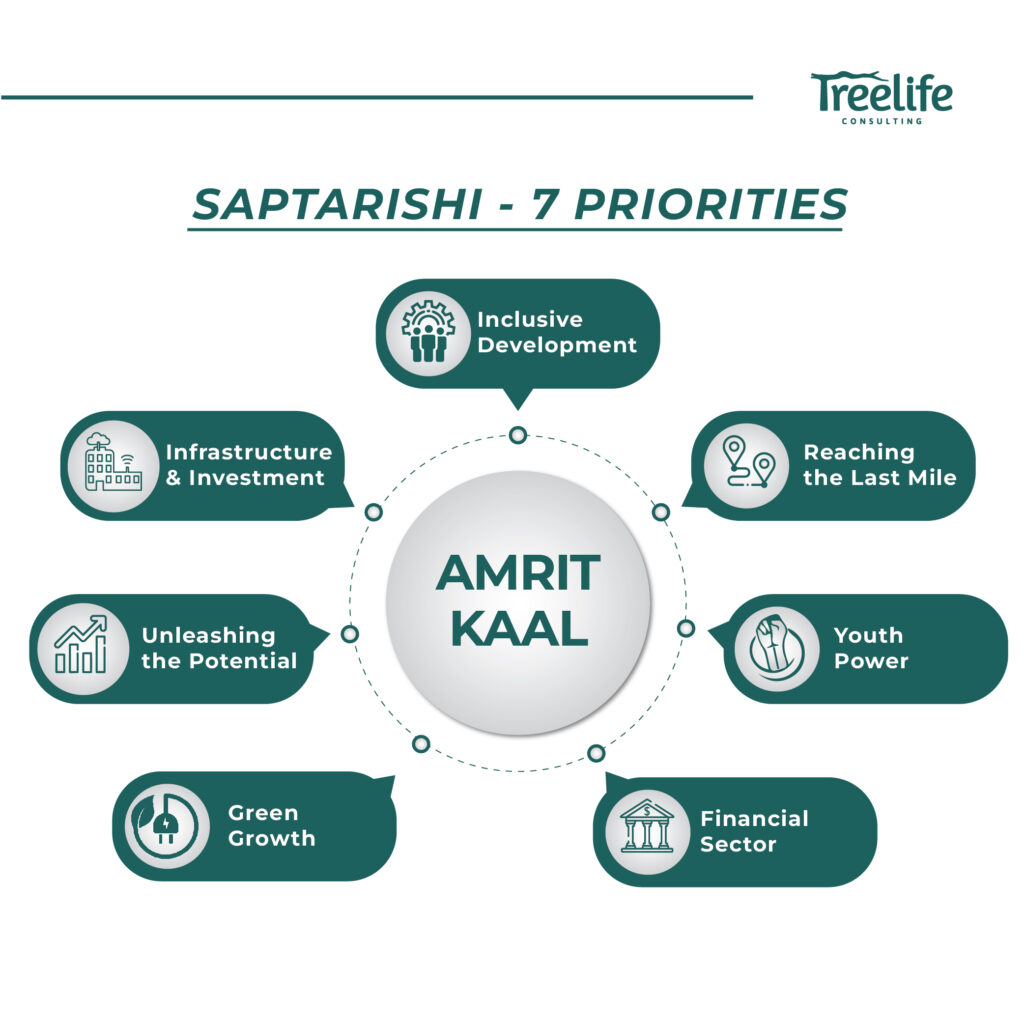
Green Growth
The Government has proposed to implement many programs for green fuel, green energy, green farming, green mobility, green buildings, and green equipment, and policies for efficient use of energy across various economic sectors. These green growth efforts help in reducing carbon intensity of the economy and provides for largescale green job opportunities. The following key programs have been proposed apart from many other initiatives
- PM PRANAM – To incentivize States/ UTs to promote usage of alternative fertilizers
- MISHTI – To ensure Mangrove plantation along the coastline
- Amrit Dharohar – To implement optimal usage of wetlands
- GOBARdhan Scheme – To establish 500 “Waste to Wealth” plants to promote circular economy
Flow of Money in Budget 2023
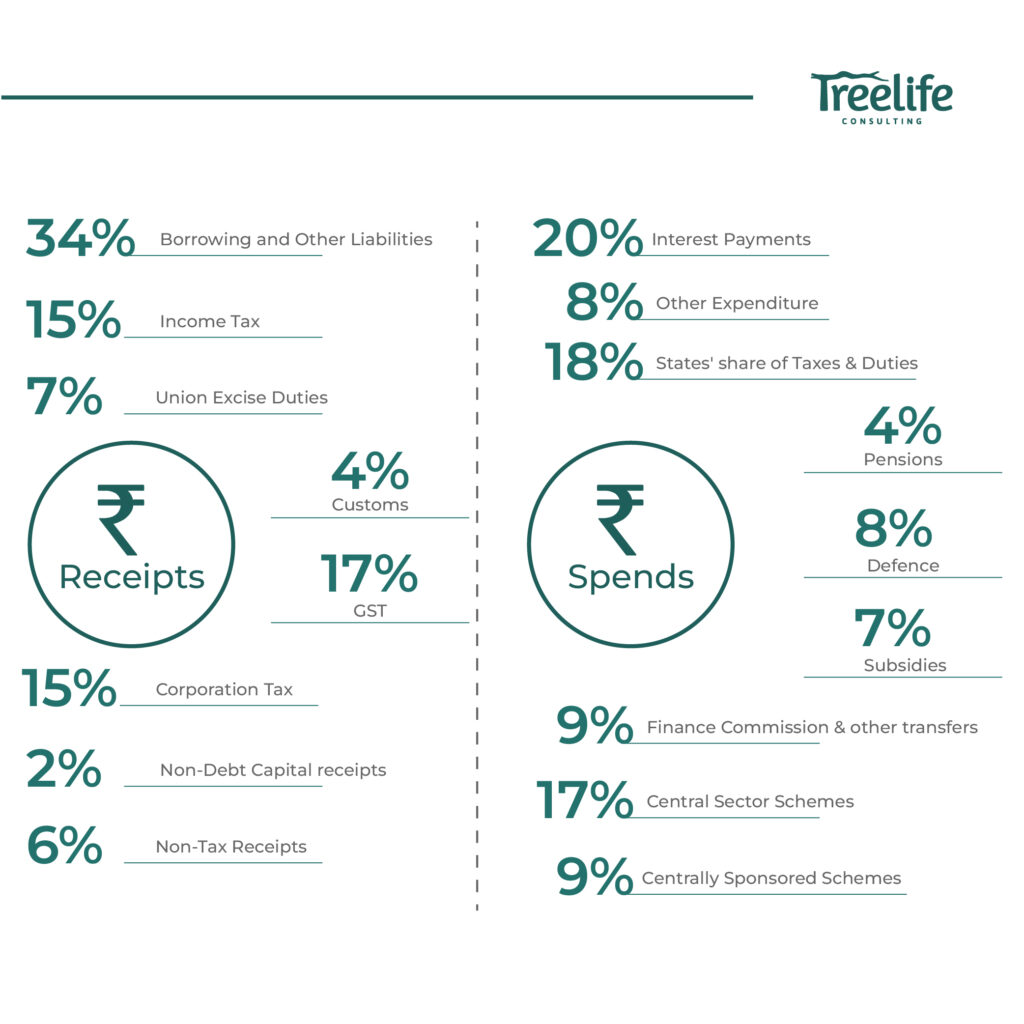
Economic Growth Indicators
- Per Capita income has increased to ` 1.97 lakh pa
- GDP growth is estimated at 7%, highest amongst largest economies
- The fiscal deficit is estimated to be 5.9% of GDP. The government intending to bring the fiscal deficit below 4.5% of GDP by 2025-26.
- Capital Investment outlay increased to INR 10 Lakh Crores. Increase of 33% which is ~ 3.3% of GDP.
- Effective capex to be INR 13.7 Lakh crores. ~ 4.5% of GDP
- This year around 6.5 crore Income tax returns were filed and nearly 45% of returns were processed within 24 hours. The average processing period reduced from 93 days in financial year 13-14 to 16 days now.
- Digital payments has widened by 76% in transactions and 91% in value over the last year.
Savings Scheme Proposals
- A new scheme for Women called Mahila Samman Savings Certificate, will be available for 2 year up to March 2025. This will offer deposit upto INR 2 lakh at fixed interest rate of 7.5%.
- The deposit limit for Senior Citizen Savings Scheme (SCSS) is proposed to enhanced from 15 lakh to 30 lakh subject to the prescribed conditions. The maximum deposit limit for Monthly Income Account Scheme will be enhanced from 4.5 lakh to 9 lakh for single account and from 9 lakh to 15 lakh for joint account.
- Reduction in the TDS rate from 30% to 20% on EPF taxable withdrawal in non-PAN cases.
- KYC process will be streamlined and PAN card will be adopted as a single identifier.
Health, Education & Transport initiatives
- 157 New Nursing colleges to be started
- National Digital Library to be for children and adolescents
- 38,800 teachers to be recruited for the 740 Ekalvya Model Residential schools serving for tribal students
- To empower the youth and help the ‘Amrit Peedhi’, the government have formulated the National Education Policy, focused on skilling, adopted economic policies that facilitate job creation at scale, and have supported business opportunities.
- 50 additional airports, heliports, water aerodromes and advance landing grounds will be revived for improving regional air connectivity.
- Highest ever capital outlay of INR 2.4 lakh crores for railways
Other key announcements
- A system of ‘Unified Filing Process’ will be set-up by the government to share the information or filed return in simplified forms on a common portal, across the agencies.
- An integrated IT portal will be established for investors to reclaim unclaimed shares and unpaid dividends from the Investor Education and Protection Fund Authority.
- A one stop solution for reconciliation and updating of identity and address of individuals maintained by various government agencies, regulators and regulated entities will be established using DigiLocker service and Aadhaar as foundational identity.
- A Central Processing Centre will be setup for faster response to companies through centralized handling of various forms filed with field offices under the Companies Act.
- At present, India is the largest producer and second largest exporter of Millets. Efforts are made to make India a global hub for Millets.
Union Budget 2023: Overview Startups | Founders | Investors
First Published on 3rd February 2023
KEY MACRO ECONOMIC INDICATORS
- GDP growth estimated at 7%
- This year nearly 6.5 crore Income tax returns were filed
- Average processing period of Income Tax Returns reduced from 93 days in financial year 13-14 to 16 days now.
- Fiscal deficit is estimated to be 5.9% of GDP
- Per Capita income has increased to INR 1.97 lakh p.a.
- Digital payments widened around 76% in transactions and 91% in value over the last year.
BUDGET SNAPSHOT FOR STARTUP STAKEHOLDERS
KEY HIGHLIGHTS FOR STARTUP ECOSYSTEM
- Maximum surcharge rate capped to 25% under new tax regime thereby reducing the maximum tax rate from 42.74% to 39%
- Rollover benefit under section 54 and 54F for reinvestment of capital gains in new residential properties capped at INR 10 crore
- Change in shareholding of eligible start-ups not to impact carry forward of losses as long as such loss is incurred during the period of 10 years (previously 7 years) beginning from the year of incorporation
- Angel tax provisions extended to infusion of share premium in excess of FMV by non-residents (earlier applicable only to infusion by resident shareholders) – Exemption from angel tax to startups still continues
- Payments to MSMEs beyond mandated 15 / 45 days (as per MSMED Act) is proposed to be allowed as deduction only on payment basis. Deduction allowed on accrual basis only if payment made within aforementioned mandated time
- Rebate provided to individuals earning upto INR 7 lakhs in an FY – no tax required to be paid by such individuals
STARTUPS
- Threshold for small businesses to avail the presumptive tax scheme is increased to INR 3 crore from INR 2 crore
- TDS introduced on net winnings from online games at the time of withdrawal or at the end of the financial year without any threshold. Threshold of INR 10,000 for TDS on winnings lottery, crossword puzzles games, etc clarified to apply to aggregate winnings during a financial year (and not per transaction)
- Date of incorporation for startups eligible to apply for tax holiday extended to 01 April 2024 (earlier 01 April 2023)
- Clarification provided that the cost of acquisition / cost of improvement of intangible asset / rights for which no consideration was paid for acquisition will be NIL for the purpose of computation of capital gains
- Provisions of section 28(iv) and section 194R regarding taxability and TDS on benefit or perquisite received in the course of business extended to benefit or perquisite provided in cash
- Basic customs duty rate reduced to 13% from 21% on goods (other than textiles and agriculture)
- Custom duty exemption on machinery for manufacture of lithium-ion cells used in batteries of EVs extended to 31 March 2024
FOUNDERS AND TEAM
- Threshold for professionals to avail the presumptive tax scheme is increased to INR 75 lakhs from INR 50 lakhs
- Gift of a sum over INR 50,000 by a resident individual to a ‘resident but not ordinarily resident’ individual now taxable in the hands of the recipient
- Standard deduction of INR 50,000 to salaried individuals, and deduction from family pension up to INR 15,000 now allowed under the new tax regime as well
- Tax exemption limit increased to INR 25 lakhs from INR 3 lakhs on income from salary under ‘leave encashment’ for non government employees.
- Anomaly of double deduction of interest on borrowed capital for property (as deduction from income from house property and added to cost of acquisition / improvement for computing capital gains on sale) now removed
- Income from Insurance policies issued after 01 April 2023 (other than ULIP) having premium above INR 5 lakh in a year now taxable (except where income is received on death of insured person)
ANGEL INVESTORS
- TCS on foreign remittances under LRS and overseas tour packages increased to 20% without any threshold (earlier 5% with a threshold of INR 7 lakhs)
There are no specific tax announcements pertaining to VCs except amendments in sec 56 (2)(vii)(b) for offshore funds mentioned above
Studio Sirah bags $2.6 million funding led by Kalaari Capital, Lumikai
Do you need an Agreement with your Shareholders?
Business partnerships can be a great endeavor, but when partnerships go bad, things become messy. In such situations, it may be best to part ways, and having a comprehensive Shareholders’ Agreement (SHA) could be your insurance cover. In this article, we will discuss why and how to implement an SHA.
Good Partnerships Gone Bad
Partnerships that fail can lead to loss of hard work and loss to your ventures. A comprehensive SHA can help protect your interests in such situations.
Do You Need a Shareholders’ Agreement?
An SHA is your best fallback option in case your business partnership goes south. Here’s what you need to know about it.
The equity battle between Arunabh Kumar and Prashant Raj is a reminder of the importance of having a clear and comprehensive SHA in the startup ecosystem. With a partnership, the chances of survival are higher than with sole proprietorships. However, it also has a high failure rate of over 50%. A crystal clear SHA is the main governing agreement of your relationship with your co-founders, the investor and other shareholders, if any.
Shareholders’ Agreement Clauses
Clauses typically included in an SHA are:
- Management of the Company,
- Rights and obligations of the Shareholders,
- Confidentiality and Non-compete clauses, and
- Exit rights of shareholders.
Shareholders Agreement Format and Draft
An SHA format and draft may vary depending on the company structure and you may hire a legal professional to draft one for you.
Term Sheet for Shareholders Agreement
It is common to draft a Term Sheet before an SHA to set out the key terms before finalizing the SHA. A Term Sheet can provide an outline of what you want to achieve in an SHA.
Implementing an SHA
A well-documented SHA gives a clear view of how the company will function, ensures lesser hassle if there is a fallout, and most importantly, protects the business from going down.
FAQs about SHA
Q: What is a shareholders’ agreement?
A: A shareholders’ agreement is a legal document that outlines the rights and obligations of shareholders in a company. It provides guidance for shareholder decisions, outlines dispute resolution procedures, and defines shareholder responsibilities towards the company.
Q: How do you write a shareholders’ agreement?
A: To write a shareholders’ agreement, you should consult with a legal professional who can tailor the document to your specific needs and make sure it meets all legal requirements.
Q: Is a shareholders’ agreement legally binding?
A: Yes, a shareholder agreement is legally binding and can be enforced by law.
Q: Who needs a shareholders’ agreement?
A: Any company with multiple shareholders should have a shareholders agreement to clearly define each shareholder’s rights and responsibilities.
Q: Who signs the shareholders’ agreement?
A: All shareholders in a company should sign the shareholder agreement to show that they understand and agree to the terms outlined therein.
Q: Is a shareholders’ agreement mandatory in India?
A: A shareholders’ agreement is not mandatory in India. However, it is highly recommended for all companies with multiple shareholders to execute one.
Q: What is the benefit of a shareholders’ agreement?
A: The benefits of a shareholders’ agreement include clearly defining each shareholder’s role and responsibilities, protecting the company from disputes and disagreements, and outlining dispute resolution procedures.
Q: What is the scope of a shareholder agreement?
A: The scope of a shareholder agreement is to define the rights and responsibilities of shareholders, outline procedures for decision-making and dispute resolution, and protect the company from disagreements between shareholders.
Q: Can I write my own shareholders’ agreement?
A: While it is possible to write your own shareholders’ agreement, it is highly recommended to consult with a legal professional to ensure that all necessary clauses are included and that the document meets all legal requirements.
Q: What should be included in a shareholders’ agreement?
A: A shareholders’ agreement should include clauses on decision-making, share transfer restrictions, dispute resolution, management and operation of the company, and responsibilities and rights of shareholders.
Q: What happens if there is no shareholders’ agreement?
A: If there is no shareholders’ agreement, disputes between shareholders may lead to legal battles that could harm the company and its reputation. Having a shareholders’ agreement in place can help prevent such conflicts from arising and protect the company from financial loss.
Giga Fun Studios bags $2.4 million seed funding to build Indian culture-based casual games
Traveltech Firm OnArrival Taps Antler India
Endorsement Know-hows! For Celebrities, Influencers & Virtual Influencers on Social Media platforms
First Published on 23rd January, 2023
The Department of Consumer Affairs, Ministry of Consumer Affairs, Food and Public Distribution (vide press release dated January 20, 2023) has released guidelines for celebrities, influencers and virtual influencers specifically with respect to social media platforms. The said guidelines are called ‘Endorsement Know-hows! For Celebrities, Influencers & Virtual Influencers on Social Media platforms
These guidelines talks about the disclosure of certain information by such celebs and influencers while they are advertising/ promoting certain products on social media platforms.
1) Let’s break down some key words and it’s meaning
Celebrities: Famous personalities, including but not limited to the entertainment or sports industry have the power to affect the decisions or opinions of their audience.
Influencers: Creators who advertise products and services with a strong influence on the purchasing decisions or opinions of their audience.
Virtual Influencers: Fictional computer-generated ‘people’ or avatars who have realistic characteristics, features, and personalities of humans, and behave in a similar manner as influencers.
Material connection: Includes but is not limited to benefits and incentives, such as:
- Monetary or other compensation;
- Free products with or without any conditions attached, including those received unsolicited, discounts, gifts;
- Contest and sweepstakes entries;Trips or hotel stays;Media barters;Coverage and awards; or
- Any family, personal or employment relationship.
2) Who should be disclosing information?
Individuals/ groups who have access to an audience and the power to affect their audiences’ purchasing decisions or opinions about a product, service, brand or experience, because of the influencer’s / celebrity’s authority, knowledge, position, or relationship with their audience.
3) When should such information be disclosed?
A material connection between an advertiser and celebrity/ influencer may affect the weight or credibility of the representation made by the celebrity/ influencer.
4) How to disclose information?
- Information should be hard to miss – in a manner that it is clear, prominent and extremely hard to miss; disclosures should not be mixed with a group of hashtags/ links.
- In case of endorsement in a picture – disclosure should be superimposed over the images in such a manner so that the person viewing them can see them clearly.
- In case of endorsement in a video – disclosures shall be placed in the video and not only in the description; such disclosures shall be in both the audio as well as the video format.
- In case of endorsement in a live stream – disclosures shall be displayed prominently throughout the entire stream.
- Use of simple and clear language
- Terms which are allowed: ‘advertisement’ or ‘ad’; ‘sponsored’; ‘paid promotion’ or ‘paid’.
- Disclosures shall be in the same language as the endorsements.
- Separate disclosures shall be made apart from platform disclosure tools.
5) Due Diligence
Celebrities/influencers are always advised to review and satisfy themselves that the advertiser is in a position to substantiate the claims made in the advertisement. It is strongly recommended that the endorser of a product or service should have actually used or experienced the product or service before endorsing it.
6) Consequences of non-compliance
Such celebs/ influencers shall be made liable under the Consumer Protection Act, 2019 for non-compliance or non-disclosure (in case of false or misleading advertisements, penalty may extend up to INR 50 Lakhs).
All you need to know about setting up an E-Commerce business in India
In the previous article we had learnt about what the e-commerce ecosystem is and how it functions in India, the Government of India initiatives taken to promote the same and the Foreign Direct Investment (“FDI”) norms for investment in the e-commerce ecosystem in India.
In this article we shall be learning about the laws and regulations applicable, compliances required for an e-commerce startup and the related impact on the economy.
Laws and regulations applicable
i. Information Technology Act, 2000 (“IT Act”) –
The e-commerce is similar to the traditional marketplaces with the only difference of non-availability of flesh and blood to sell things. Through e-commerce also, the sellers have to generate bills, pay taxes, file returns, prepare ledgers, and maintain records which are done online. The IT Act is the primary legislation that governs and regulates the services provided by e-commerce platforms in India. The IT Act governs online conduct and related aspects of e-commerce and recognizes electronically concluded contracts and digital signatures which are essential for facilitating paper less trading. The Act aims at regulating the use of the Internet by providing punishments for publication of obscene information or hacking or destroying or altering the data from devices.
- Indian Contracts Act, 1872 –
Governs the conditions for validity of contracts formed through electronic means; communication and acceptance of proposals; additionally, revocation, and contract formation between consumers, sellers, and intermediaries. Further, the terms of service, privacy policy, and return policies of any online platform must be legally binding agreements. The seller and buyer on an e-commerce platform enter into an electronic contract while the seller provides the good or services to the buyer. For this purpose, it is important to read the Indian Contract Act with the Information Technology Act, 2000.
- Transaction security is one of the most important aspects of e-commerce. It is absolutely essential for any e-commerce business to ensure reliability and security of transactions being conducted over the internet. The most reliable means is through cryptography. The most popular and useful method of encryption is public-key cryptography; that is, encryption and decryption techniques involve the use of two kinds of keys, public keys and private keys both of which are mathematically linked. One key is used for encryption and the other corresponding key is used for decryption. The IT Act regulates encryption in India.
- Digital Signatures – These are electronically attached signatures that can be annexed to e-contracts by the parties and shall be treated equivalent to physical signatures. Section 3 of the IT Act establishes that a signature could be sent using public-key cryptography. In order to link the identity of the sender with the signature, it is necessary to attach a digital certificate which is issued by a certifying authority that confirms the identity of the sender.
ii. Payment and Settlements Systems Act, 2007
A ‘payment system’ indicates a system that enables payment to be effected between a buyer and a seller. An e-commerce business has to qualify as a payment system and comply with the relevant rules of RBI relating to online payments. Further, it is mandatory for every intermediary that is receiving payments through electronic modes to have a Nodal Account in operation for settling the payments of the merchants on its online e-commerce platform.
iii. Sale of Goods Act, 1930
The Sale of Goods Act, 1930 covers what the sales and shipping policy of the e-commerce business must contain. Additionally, such as the warranties, conditions, and the refund and return conditions.
iv. Consumer Protection Act, 2019 read along with Consumer Protection (E-Commerce) Rules, 2020
In order to protect the interest of the consumers, the central government has enacted the Consumer Protection Act, 2019. Section 94 of the Consumer Protection Act, 2019 provides that for the purposes of preventing unfair trade practices in e-commerce, direct selling and also to protect the interest and rights of consumers, the Central Government may take such measures as required. For the same purpose the Consumer Protection (E-Commerce) Rules, 2020 have been enacted to provide the details of the compliances required by every e-commerce business.
Compliance requirements for E-commerce business in India
i. Indian Contracts Act, 1872 read with Information Technology Act, 2000 – Terms of Service, Privacy Policy and return policies of any e-commerce platform are to be laid out such that they are legally binding agreements.
ii. Information Technology Act, 2000 and rules thereunder – Compliances under Information Technology (Reasonable Security Practices and Procedures and Sensitive Personal Data Or Information) Rules, 2011 for the policy of privacy and the disclosure of information. Under section 79 of the IT Act certain safe-harbors are available to e-commerce entities functioning as ‘Intermediaries’. Regulations are also applicable to ‘Intermediaries’ relating to the content displayed on the platform, especially pertaining to defamation and obscenity. The Information Technology (Intermediary Guidelines) Rules 2011 lays down stringent liability for e-commerce businesses in India. A digital due diligence is advisable before commencing any e-commerce business. If the end consumers happen to be a European Union resident, General Data Protection Regulations (GDPR) compliance becomes mandatory.
iii. Intellectual Property Issues – the e-commerce business must secure all trademarks in accordance with the Trademarks Act and copyrights intended to be used by it, one must also be mindful to not infringe the trademarks and copyrights of other businesses as well. In the age of such wide use of the internet, e-commerce entities should be aware of various intellectual property infringements that may happen online such as cybersquatting, identity theft, copyright infringement, caching, derivative works, domain name protection, etc.
iv. As per the Reserve Bank of India (“RBI”) notification DPSS.CO.PD.No.1102 /02.14.08/ 2009-10 dated 24 November 2009, it is mandatory for an intermediary which is receiving payments through electronic modes to have a Nodal Account in operation for settling the payments of the merchants on its online e-commerce platform. Further depending on the arrangements for payments for the transactions on the platform, the entity must comply with the relevant rules relating to online payments made by the RBI.
v. Legal Metrology Act, 2009 read with Legal Metrology (Packaged Commodity) Rules, 2011 – The e-commerce platform must display requisite information about the goods displayed on sale, such as, units, dimensions, weight, etc. on the display page of the products itself.
vi. Fixation of prices by arrangements between sellers listed on the platform, exclusive sales agreements, and other practices under the scope of Sections 3 and 4 of the Competition Act, 2002 can be brought under the scrutiny of the Competition Commission of India. The e-commerce business must be mindful of these factors while entering into any arrangements.
vii. Goods and Service Tax Registration – it is mandatory for all e-commerce platforms and sellers/distributors/suppliers who sell through e-commerce to get GST registration in all States where they purport to sell their goods/services.
Impact of E-commerce success in India
The E-commerce industry has been directly impacting micro, small & medium enterprises (MSME) in India by providing means of financing, technology and training and has had a favorable cascading effect on other industries as well. The Indian e-commerce ecosystem has been on an upward growth trajectory and is expected to surpass the US to become the second largest e-commerce market in the world by 2034. Technology-enabled innovations like digital payments, hyper-local logistics, analytics driven customer engagement, and digital advertisements will likely support the growth in the sector. The growth in e-commerce will also boost employment, increase revenues from export, increase tax collection, and provide better products and services to customers in the long-term. With a turnover of $50 billion in 2020, India became the eighth-largest market for e-commerce, trailing France and a position ahead of Canada.
The Indian online grocery market is estimated to reach US$ 26.93 billion in 2027 from US$ 3.95 billion in FY21, expanding at a CAGR of 33%. India’s consumer digital economy is expected to become a US$ 1 trillion market by 2030, growing from US$ 537.5 billion in 2020, driven by the strong adoption of online services such as e-commerce and edtech in the country.
According to Grant Thornton, e-commerce in India is expected to be worth US$ 188 billion by 2025.
References: Media Reports, Press releases, IBEF Blog
Digital Rupee: A brief introduction
What is a digital rupee?
The Reserve Bank of India has launched the pilot of its Central Bank Digital Currency (CBDC), which is being categorized as legal tender in a digital form, by the central bank. Popularly recognized as the digital rupee, it is exchangeable at par with existing currencies and will be considered acceptable for payments and a safe store of value. The Reserve Bank announced the launch of the first pilot for retail digital Rupee (symbolized as “e₹-R”) on December 01, 2022.
The pilot is set to cover locations which have been notified by the RBI and are mentioned hereinbelow. The pilot will be available for a closed user group (CUG) comprising participating customers and merchants. The e₹-R shall be in the form of a digital token that represents legal tender. The denominations of this digital token are being touted to be the same as that of the paper currency. Banks shall be responsible for the distribution of the digital currency. Users will be able to transact with e₹-R through a digital wallet offered by the participating banks and stored on mobile phones / devices. The users will be able to transact on a Person to Person (P2P) basis as well as Person to Merchant (P2M) basis too. The Merchants will be having QR codes at the Merchant locations to enable them to accept the e₹-R. The e₹-R would offer features of physical cash like trust, safety and settlement finality. However, as is the case with cash, the digital currency will not earn any interest and may not be subject to conversion to other forms of money, like deposits with banks.
Why is digital currency important for India?
It is safe to state that the most important reason behind launching the digital currency by the RBI is to provide the country with a catalyst to remain in the virtual currency race. The potential that India and its huge populace carries is no secret and with a digital currency the transactions may just end up simplified and multiplied, which shall further and eventually result in the creation of more capital, thus giving a massive push to our economy. Being called the first digital currency of the nation and aimed at creating an additional option to use money and it isn’t very different from the currently-issued banknotes; only that the digital rupee is expected to be transacted digitally and thus facilitate ease of use.
How will you benefit from this?
There are various expected benefits of the digital currency which has been rolled out. Few of the benefits can be listed as:
· With the introduction of blockchain technology in the mainstream, the digital rupee is set to increase efficiency and transparency.
· The use of digital rupee is also set to enable real-time transaction tracking which will further simplify the process of ledger maintenance.
· The payment system is expected to be active 24X7 and for all days over the year. The same shall be available for wholesale and retail customers alike.
· It shall enable the Indian buyers and customers to make online payment of digital currency without the requirement of a middleman.
· It is expected to reduce the intermediaries, and resultantly, the average transaction cost.
· Users will not be required to mandatorily open a bank account to transact in digital money, hence increasing the scope of online payments.
· The benefits of simplified and quick cross border transactions is a major benefit of digital currencies. As the e₹-R is being backed by the RBI, there will not be any threats of volatility
Conclusion
The e₹-R is the RBI’s accepted version of cryptocurrencies, which the central bank has dismissed repeatedly and called a serious challenge to the stability of the financial system of the country. It is aimed at creating an additional option to use money which is not very different from the currently issued banknotes, except for the ease of use. It’s only fair to form more opinions and follow the growth of our very own digital currency once the pilot project rolled by the RBI comes to its conclusion.
Why Companies Must Pay Heed to the ID Act During Layoffs?
As of December 2022, 52 Indian firms, including startups, have laid off over 18,000 employees. The unicorns on this list include prominent startups like BYJU’S, Unacademy, MPL, Chargebee, Cars24, LEAD, Ola, OYO, Meesho, Innovaccer, Udaan, and Vedantu. Further, this list includes 15 EdTech startups, which collectively saw 7,868 employee layoffs.
Amidst the news of layoffs, Labour and Employment Minister Bhupender Yadav stated that retrenchment and layoffs will not be deemed legal if they are carried out outside the provisions of the Industrial Disputes Act of 1947.
What is the Industrial Disputes (ID) Act?
The Industrial Disputes Act, constituted on March 11, 1947, is legislation that governs industrial dispute resolution in India.
The Act aims to prevent illegal lockouts and strikes and offer relief to employees who are illegally laid off without following due process. It provides guidelines for various processes, such as conciliation, arbitration, and adjudication, with the aim of promoting mutually beneficial relations between employers and employees.
Relevance of the ID Act to Layoffs
Here’s a snapshot of the provisions of the Act:
- In the context of the ID act, a layoff is defined as a condition where the company has no option but to deny its employees further work opportunities due to circumstances that make it unable to continue operations. Some examples include a shortage of raw materials, a breakdown of machinery, or a natural calamity.
- Firms employing more than 100 persons are required to seek the nod of the appropriate government before conducting mass layoffs. However, if there is no response from the government for over 60 days, the permission will be deemed to have been granted.
- According to Yadav, the jurisdictional authority for mass layoffs in sectors such as EdTech, social media, information technology (IT), and related sectors resides with state governments.
- The ID Act has certain provisions under which layoffs are deemed legal. For instance, a worker is entitled to compensation equivalent to 50 percent of the total basic wages and dearness allowance for the layoff period, provided they have been in service for over a year.
- The ID Act also has provisions for the reemployment need of professionals. If a company aims to rehire people in the future, it must prioritize the rehiring of retrenched employees first.
What Companies Must Keep in Mind
Companies need to keep in mind the various laws that govern incidents such as retrenchment and mass layoffs. Besides having an in-depth understanding from a legal standpoint, they must also plan such pivotal events strategically.
The aim is to reduce the negative impact on employees while also keeping the business’ sustainability and profitability in mind. Completely circumventing the law can result in a loss of reputation, reduce employee branding, and lead to financial losses in the event of employee lawsuits.
What Employees Must Keep in Mind
It is important for employees to understand the terms and conditions of their employment contract. They must go through it in great detail.
If they feel they are being treated unfairly without adequate financial compensation, they can seek legal support or appeal to the consumer court to seek a fair outcome.
In Conclusion
In 2022, tech-enabled businesses have seen the most number of layoffs. Of these, EdTech leads with over 8000 layoffs across content, HR, sales, and tech teams. Around five EdTech companies have shut shop altogether.
The social media industry has also seen a large number of layoffs, with Twitter and Meta leading the way. As tech-enabled businesses continue to face new challenges, layoffs will continue to be a part of the cycle.
Companies should seek timely interventions to navigate the legal and financial hurdles of these times. By partnering with legal finance specialists such as Treelife early on, companies can build resilience and emerge stronger.
References:
https://inc42.com/features/indian-startup-layoffs-tracker
https://labour.gov.in/sites/default/files/THEINDUSTRIALDISPUTES_ACT1947_0.pdf
NeuralGarage raises $1.45 million led by Exfinity Ventures
Do I need terms & conditions, and privacy policy for my business?
Introduction
You’re working on a lovely website for your company when the developer requests your Terms & Conditions (“T&C”) and Privacy Policy (“PP”) page. You’ve spent hours honing the messaging on your landing page, your bio, and other material. You haven’t even considered an uninteresting project like this. Isn’t that legal jargon at the bottom of websites? Is it even read by anyone? Do you really need a T&C and PP page for your website if you’re a small business? That’s an excellent question. The quick answer is no, technically, but you should. Read this article to know more about why your business should have a T & C and PP page.
If you collect or use any personal information from your clients, you must have a PP in place. For instance, email addresses, first and last names, and so on. The goal of this knowledge is to enlighten clients about your collection and use of personal information about them. A T&C understanding presents terms, conditions, prerequisites, and provisions associated with the use of your website or mobile/workplace application, for example, copyright security, account termination in cases of maltreatment, and so on.
Important Elements
In T&C:
- Governing law: what nation and/or state law governs your company?
- Users’ rights and responsibilities: the rules that govern how your website is used.
- Confidentiality: a provision stating that information gathered via the relationship via the website is not to be divulged to any third parties unless expressly authorized.
- Security: what types of security do you use on your website?
- Copyright notice: All text pertaining to the whole content of the website is protected by copyright and other relevant intellectual property rights.
- Refund policy: the company’s refund policy, if any.
- Termination: a set of criteria specifying the terms of the agreement’s termination by both parties.
- And a lot more
In PP:
- Data Collection: Describe how data is gathered and processed.
- Security: How is personal information safeguarded?
- Personal Information: the sorts of personal information collected and processed by your website.
- Cookies: an explanation of cookies and how they are used by your website
- Data Protection Rights: the rights of data subjects
- Contact information for your firm, as well as the Data Processing Officer and Data Controller, if relevant.
- as well as others
Why are they needed?
- Terms and Conditions
In contrast with PP, the T&C are not legally required under law. However, it is highly recommended to have one so that the business can anticipate misuses of their website or mobile application, as well as to limit your own danger as the proprietor of the internet business. Without this type of agreement in place, and without it being properly permitted, there is no way for the business to legally limit or restrict how someone may or cannot use their site or app. Copyright infringement issues might arise if clients use the business’ content without their permission or if there is abuse. It is recommended that any online business (even if it is just a simple website or a basic, mobile application) that allows or requires a client to enroll for a record have this agreement set up and present it to clients.
- Privacy Policy
The Information Technology Act was amended in 2009 to provide basic privacy and data protection protections. In India, the privacy legislation currently compels companies and websites to use caution while collecting and handling sensitive personal data or information. A civil provision is now available that specifies damages for a business that fails to use “reasonable security methods and procedures” while managing “sensitive personal data or information,” resulting in unlawful loss or benefit to any individual. Hence it is legally mandated to have a PP for businesses whether small or large.
Small firms stand to suffer the most as a result of improper data practices. The business can manage data in accordance with local laws and internal procedures, but if a customer views it as mistreatment, the business may face liability or, at the very least, a costly and time-consuming legal battle to contest the allegation. A Privacy Policy defines the business’ principles for managing information and separates forbidden behaviors from permissible ones. Also, if a consumer authorizes the operations of the business by agreeing/consenting to your Privacy Policy, they are less likely to sue the business.
Conclusion
Irrespective of the size of your business, having T&C and PP helps increase transparency and the trust your customers have in you. It also helps save the business from future liability that might arise due to the use of the website, the contents of the website, the data collected and how the data is utilized.
CELEBRITY ENDORSEMENT AGREEMENT
WHAT IS A CELEBRITY ENDORSEMENT AGREEMENT?
A celebrity endorsement agreement is a legally binding agreement between a company owning a brand or a product under a brand name and a celebrity or influencer who acts as a brand ambassador, in which such company engages the brand ambassador to provide his services as an influencer of the consumers to promote the company’s product and services on various platforms and media depending on the targeted consumer base of the company. The brand ambassadors and the company have to work together to actively promote the brand before its potential customers or audience and such agreements formalize and define the relationship between the company’s brand and the brand ambassador engaged by such company. Celebrity endorsement agreements are used by the companies to appoint the brand ambassador to legalize their relationship in connection with the promotion of the brand’s products and services. Such agreements can be labelled interchangeably as brand ambassador agreements, celebrity endorsement agreement, endorsement agreement, etc.
IMPORTANCE OF MARKETING AND CELEBRITY ENDORSEMENT AGREEMENTS
In order to grow, flourish and keep up with the ever updating market conditions, marketing plays an important role for every brand existing in the market. An ever growing focus on brand development, awareness, and authority by deploying various marketing tactics has become one growing concern for any and every brand planning on having a celebrated product in the market. To survive competition from all corners, influencers and brand ambassadors are being hired by such brands for a particular period until their marketing targets are achieved.
Celebrities and notable personalities have lately become an integral part and parcel of the brands they endorse. Certainly, they are the face of the brand they endorse and the consumers relate to the celebrity endorser and the product as a package in many scenarios. Such developments have led to the origination of the term brand ambassador, who is a person who markets the product to the consumers and is the face of the product and/or the brand. In the persisting marketing conditions and scenarios, the celebrity endorsement agreement is a pertinent agreement to be executed in between the Company/person owning the brand and the celebrity brand ambassador. If the cut-throat competition around every popular product category if considered, the brands which are doing well in the market and have been on the receiving end of consumer appreciation and subsequent high profits are often noted to engage a notable celebrity to endorse their brand so as to capture a larger market share using the visibility of the celebrity, while paying a fair amount of consideration to the celebrity for his services. Hence, as the brands are ready to spend humongous amount of money and resources on marketing and celebrity endorsements forms a imperative part of every modern day marketing strategy, it becomes very pertinent for all parties involved in an endorsement arrangement to execute a celebrity endorsement agreement to capture the rights and obligations of all such parties involved.
It is very important to have an executed agreement which serves as a legal record and a valid proof of agreements in between the parties in the event of any possible disputes or differences that may arise in future relating to the agreement and protect the legal rights and interests of both the contracting parties and for this very reason it becomes absolutely necessary for the parties to execute a celebrity endorsement agreement. Like any other agreement, it helps in reassuring the parties that their contractual relationship will be carried out as agreed by them. Apart from being enforceable in a court of law it also adds to building the credibility and legitimacy of both parties.
PROVISIONS TO BE CAPTURED IN A CELEBRITY ENDORSEMENT AGREEMENT
A celebrity endorsement agreement includes the rights and obligations required by the company to be fulfilled by the brand ambassador in a certain period stipulated in the agreement. Typically, the celebrity endorsement contact may include:
- Exhaustive details of the company and the brand ambassador entering into the agreement.
- Details of rights and limitations pertaining to the services or duties exchanged in connection with sales and promotion to be provided by the brand ambassador to the company.
- Detailed guidelines and timelines that are to be adhered to by the brand ambassadors while performing their contractual duties.
- Actions that brand ambassadors should restrain themselves from performing during the time period that they are representing the brand (restrictions). Such restrictions may include endorsement of competing products, engaging in illegal activities, non-disparagement, performing any acts which may prove to be detrimental to the reputation of the company.
- Compensation and/or commission details of the agreement (Consideration), which is to be provided by the company to the brand ambassadors in return of their services.
- Exhaustively capture the details of the particular products or services of the company which brand ambassador has to endorse while providing his services.
- The obligation of the company or brand to perform in assisting brand ambassador performing his part of the agreement.
- Standard terms and conditions like mode of payment, details and number of promotional events or activities to perform, confidentiality and intellectual property terms (if any), etc.
- Legal responsibilities and disclosures of parties to ensure proper compliance required by law.
- Other miscellaneous but pertinent terms and conditions are required to be fulfilled by the parties in the form of requisite clauses such as:
- Dispute resolution mechanism between the parties;
- Provision for protection of intellectual property rights;
- Provision for protection of unauthorised disclosure of confidential information;
- Provision relating to indemnity to be provided by parties in the event a loss is suffered by either party due to an action/inaction of the other party;
- Term and termination agreements between the parties; and
- The representations and warranties provided by each party to the other party.
The above points can also be used as checkboxes while drafting the brand ambassadorship agreement.
IMPORTANCE OF PROFESSIONAL DRAFTING OF CELEBRITY ENDORSEMENT AGREEMENT
There are a plethora of templates available for such agreements on the internet, but they are not specifically designed to cater to the needs of the brand and in the case of a brand ambassador, for the nitty-gritties of their job. Therefore, hiring a team of lawyers who are seasoned at such agreements is very important to capture each and every detail and requirement that each parties desire.
SaaS Company – Angel Funding Round
Client:
SaaS based customer engagement and retention
Our Engagement:
Legal Advisory-Created a single point window for all legal issues in the organization
Actions carried out:
- Worked closely with the sales team to negotiate and execute SaaS Customer Contracts for India/ US/ EU/ EMEA and South East Asia
- Implemented GDPR documentation protocol
- Advised on marketing and IPR infringement issues by competitors
- Created Legal SOPs and playbooks for various departments
- Robust employment documentation-policies, employments agreements, NDAs
Impact:
- Successfully executed >100 SaaS Enterprise Contracts globally
- Reduced liability burden on the organization in terms of commercial exposure through customer contracts
- Curtailed data breaches by utilizing stringent enforceable legal measures
New Amendment: A Step Towards Making Social Media Intermediaries More Accountable
On October 28, 2022, the Ministry of Electronics and IT (“MeitY”) notified amendments to the Information Technology (Intermediary Guidelines and Digital Media Ethics Code) Rules, 2021 (“IT Rules”), categorically sending a warning to the social media intermediaries (“SMI”). This move comes five months after MeitY, in the month of June, proposed a draft of the aforementioned amendments and invited comments from the stakeholders, which garnered considerable reactions and discussions surrounding the regulation of social media in India.
The amendments to the IT Rules provide a boost to MeitY’s objective to make internet a safe place for its users while imposing accountability on SMI.
The amendments aim at inter alia improving the efficacy of the grievance redressal mechanism provided for in the IT Rules by providing for the establishment of appellate bodies, and proposing certain changes in the grievance redressal mechanism. Furthermore, there was a need felt to ensure better compliance by SMI of the IT Rules. In this light, we have highlighted in brief, the key amendments to the IT Rules below:
- Introduction of Grievance Appellate Committee
Prior to the present amendment, the IT Rules prescribed appointment of grievance officers (“GCs”) by all SMI, to dispose of the complaints made by the users expeditiously and the only recourse available to users / stakeholders against the order of the grievance order was to contest the same before the High Courts or Supreme Court.
To remedy the concerns of social media platform users, the amendments have envisaged establishment of one or more Grievance Appellate Committee(s) (“GAC”), each composed of a three-person panel appointment by the government. The GAC would comprise a chairperson and 2 whole time members, of which one would be a government official and the others would be autonomous representatives.
Aggrieved users of social media platforms, would have the opportunity to, within 30 days, appeal against orders of the GCs to the GAC and the GAC shall make endeavours to resolve such appeals within 30 days from the date of receipt of such appeal. Furthermore, the GAC has been commissioned to adopt an online mode for the process of resolution of disputes, from the stage of filing an application, till decision thereof.
While establishment of GACs is a remarkable step towards strengthening the grievance redressal framework in the SMI world, the amendments fall short in conferring express powers to the GAC, in the enforcement of its decisions.
- Obligations of SMIs
Previously, SMI were responsible to intimate its users of their rules, regulations, privacy policy and user agreement and the categories of content which they are prohibited from sharing or uploading on platforms.
The amendments require SMI to make available these rules, regulations, privacy policy and user agreement in all regional languages. In addition, SMI now have the additional obligation to ensure that their users abide by the rules of the platform. This has considerably increased the responsibility of SMIs to supervise and regulate content on their websites and has attracted mixed reactions from both, the social media platforms and its users.
Furthermore, according to the amendment, SMI must now address any complaint regarding removal of content from a platform, within 72 hours.
Why we Invested in Biotechnology – MyoWorks and D-NOME
What are the benefits of Flipping?
- Global Market Access: Flipping core business operations outside India provides a wider audience to the startup. This enables the startup to reach out to a global audience as compared to just India. This access is enabled because of the reasons below which act as a catalyst for such access and expansion.
- Ease of Operations to manage foreign currency transactions: Multi-currency payment gateway management is easier in jurisdictions like Singapore and the USA. This facilitates faster reconciliation, easier payment mechanisms enable the business to grow faster and swifter.
- Access to global incubator/s, investors, etc: Flipping opens up new funding opportunities for startups. Exposure and access to global incubators, VCs, and accelerators who may be restricted from funding companies abroad. The new company enables startups to pitch and seek funding from such specialized funding players.
- Flexibility of financing options and structuring: Countries like Singapore/USA have easier and more flexible regulatory frameworks for the functioning of businesses. For eg in terms of granting of ESOPs, faster IP registration mechanisms, and robust judicial procedures. This offers ease of business and malleability in business operations that startups require. Additionally, options like revenue-based financing and line of credit schemes for startups are easily available. This empowers the entrepreneurs to avail of better financing options than diluting equity all the time.
- Lower tax rates in certain countries: Multiple countries have lower tax rates which turn out to be lucrative for startups. A lower corporate tax rate helps startups to manage cash flows and plan better for resources.
Chiratae Ventures leads $3 million financing round in Artium Academy
BimaKavach Secures Funding To Offer Bespoke Insurance Products To Businesses
10 Accounting Tips for Startups
No creative thinking and innovative ideas can sustain a startup business when the finances run out, therefore accurate bookkeeping and accounting are crucial for every startup business to survive and grow. Here are ten bookkeeping and startup accounting tips to help you manage the startup finances:
1. Basic knowledge of the law
Knowing the startup laws and rules that apply to your business and why they are so crucial is the first and most critical step you should take when attempting to handle the startup finances
You should be aware of the following:
• What startup registrations are necessary to launch the startup business?
• What details and records are necessary to record your earnings and outgoings?
• What taxes are levied on income and outgoing costs?
• By what deadlines must taxes be paid and filed?
• How long should invoice copies be kept on file?
It is better to be prepared beforehand during tax season.
2. Knowledge of startup accounting methods
Running a startup business involves more than just keeping track of the money that comes in and goes out. Instead, the timing of when you record income and expenses i.e, whether you use cash basis accounting or accrual basis accounting, influences how you manage your company’s finances.
In cash-basis accounting, you only record income and costs when money has changed hands. If you raise an invoice to someone for a project, the funds will only be recorded as income once it is deposited into your account. The same goes for startup expenses.
Contrarily, under accrual accounting, income is recognised when it is earned and expenses are recognised as they are incurred. If you are employed for a job, you record the money once it has been completed.
While each accounting method has its own advantages and disadvantages, accrual-basis accounting provides a more realistic view of your company’s finances and performance.
Accrual accounting is also better from a tax standpoint since you can claim company expenses on your tax return in the year you incur them rather than the year you actually pay them.
3. Knowledge of basic bookkeeping terminologies
Undoubtedly, you’ll encounter new words and phrases, from startup balance sheets to income statements. You should be aware of certain words and expressions.
Here are five of the most common bookkeeping phrases you should be aware of, since it is impossible to list them all here.
- Balance Sheet: This report analyses the financial position of your company. It covers the startup’s capital as well as its assets and liabilities. Its goal is to make clear what your company owes and what it possesses.
- Chart of Accounts: A complete list of the accounts that are utilised by your company to classify financial activities. Assets, Liabilities, equity, revenues, and various expenses can all fall under this category.
- Expense: These are the costs that a startup business may experience as a result of its activities, whether they are fixed, variable, accruing, or ongoing.
- Trial Balance: A startup business document that lists all ledgers in columns for debit and credit. This is done to ensure the mathematical accuracy of a company’s bookkeeping system.
- Profit and Loss: A financial report that details the revenue and expenses over a period of time.
4. Distinguish your personal and business finances
It’s a common error in startup business bookkeeping to mix together personal and business finances. Your company will have trouble as a result in the future. So, as soon as you decide to move forward with your startup, it is always advised to register a separate startup business bank account. This makes it easier to keep track of all your earnings and outgoing costs, and it also helps your company establish its own credit rating.
5. Automate whatever you can
Use cloud-based bookkeeping software, and do your business banking online. That way, you can sync your bookkeeping software with your company’s bank account so you always have accurate, up-to-the-date records. Additionally, your essential financial data is securely backed up off-site via the cloud.
6. Retain all documents
Startup expenses can be claimed only if the invoices are available in the name of the startup business. Invoices determine the nature of the expenses incurred, whether it’s a Capital or a Revenue expenditure. Hence, if it is incurred for your business, then it has to be retained either to balance your accounts, to determine tax liabilities or to claim tax deductions!
7. Make a schedule for bookkeeping review
If you need to make a crucial call, you will make time for it. Why not schedule time to review your bookkeeping as well?
Plan to review your books every week or every month. This will ultimately save you time. Additionally, it guarantees that you won’t be stressed out at the end of the fiscal year!
Setting aside time for your books is a wise move, even if you outsource your accounting. By monitoring your bookkeeping, you can control your cash flow. You may find it useful when making decisions.
8. Set aside funds to pay the taxes
Even though the majority of individuals are aware they must pay business taxes, very few startup business owners prepare for taxes. The issue is that many startup business owners find they don’t have enough cash in hand to pay their taxes when tax season rolls around. As a result, they end up paying the taxes after the expiry of the due date along with Interest & penalty. This adds to the financial burden.
As a result, one of the ideal cash flow management tactics is to set aside money for all of the business taxes you’ll have to pay during the year.
9. Create a budget for your company
The last thing you would want to do when running a startup business is to rely on guesswork. Many startup business owners find they are in the middle of a project and have no money to continue. And by the time the understanding sinks in, it’s too late to make arrangements for money.
That is where creating a thorough business budget is really helpful. It provides you with a clear picture of potential charges. You can take a number of steps to stabilize your financial situation once you’ve accepted the amount needed to attain your future ambitions. Additionally, it will equip you for future unforeseen difficulties.
10. Work with a Professional
You might become proficient at handling your startup’s financial accounting with time and some learning. But as it develops, you won’t be able to match the knowledge of someone with a professional accounting degree.
Even a few hours each week or month of professional assistance will make a significant difference. He or she will assist you in accurately filing your taxes by informing you of any potential fees and helping you locate loopholes to reduce deductions and save time and money.
You ought to employ a startup specialist who might serve as your valued startup advisor. He or she can offer knowledgeable guidance on how to accomplish your short- term and long-term startup business goals.
10 things Startups should Include in their Investment Pitch Deck
A well-designed, comprehensive but crisp pitch deck is vital for convincing investors that a product has massive growth potential and can scale. We broke down the deck into 10 main sections, they are explained below.
We firmly believe that a unique template is needed for every startup, keeping that in mind,we have attempted to build a fundamental framework around which customisations and further additions/deletions can be done for every startup.
Broad framework:
- Impactful mission statement
The startup’s mission and objective statement should ideally encapsulate what the founders aim to achieve with its business. This should be short and crisp (8-10 words) so that it is impactful and precisely conveys to the investors what the startup is trying to solve.s
- Why Now?
This slide should essentially denote the reason that makes the startup attractive and lucrative right now i.e what tailwinds have occurred within the space in which they are operating in which has made the business idea more relevant in the present than in the previous months or years.
- The Product
This slide is where the founders need to accurately denote what business the startup is in. It can include essential features of the product, photos / videos, screenshots of the UI and how the end user will experience the product. The slide should convey why the product idea is viable and competitive and demonstrate what the founders are trying to build and what the investors are putting money towards.
- Customer Journey
Mapping the customer journey gives the investors a complete idea of the customer experience. It illustrates how the end user will interact with the app or website and use the product of the company. Mapping a customer journey can be advantageous for the founders as well by giving them a clear idea of how the product experience is like from the point of view of the end-user.
- Competitive Differentiation
With the emergence of multiple startups in each field, this slide should represent the differentiating factor(s) in the product that this startup has built that makes it stand out from the existing competition. This is the slide that outlines the startup’s competitors, positioning in the market, and the business strategy it has adopted to try and succeed. It can also talk about any exclusive or unique feature or user experience within the product which is not yet implemented by any other startup in the current market.
- Revenue Streams
This slide is one of the most important slides that an investor will look at from a “ROI” perspective. Every possible channel of revenue streams of the startup should be explained in this slide, even if the startup is pre-revenue. It is usually an added advantage if the startup is already generating revenue, the slide can then include customer-wise and category-wise breakdown of revenue along with any existing clients working with them.
- Product Timelines
The Product timeline slide will help the investor understand the product deployment by the startup. Including a timeslide slide in the pitch deck will convey to the investors when the product will start generating revenue, what is the most critical or time-taking phase, what are the important milestones for the startup, when will the investor’s capital be deployed to hit the milestones and goals over the coming months and years, etc.
- Market Sizing
Investors give importance to Market size because it allows them to estimate the future potential of the product and how big can the startup get. This slide usually includes Total Addressable Market (TAM), Service Addressable Market (SAM) and Service Obtainable Market (SOM).
- Marketing strategies
The slide should denote the marketing plan of the founders towards marketing the product to the target audiences.
- Founders and Management Team
The face behind the idea and the execution of the product can be denoted to the investors with the Founders & Management Team slide. The contents of this slide usually include a short bio of the co-founders, their previous work experience, the roles and responsibilities undertaken by them respectively in the company, and a photo. If the Key Management team has been identified and is in place(COO, CTO etc.), the pitch deck can also include details about them.
Keeping these factors in mind while creating a pitch deck can help you be well-prepared for anything and everything that an investor might want to know before investing in your company.
Key differences between SaaS-based model and Licensing Software
While both SaaS-based and License-based models deal with provision of software, there are certain key distinguishing points between them, viz:
- In a SaaS-based model, the software is made available in an intangible form on a hosted platform. On the other hand, in a software license model, the software is made available in a physical form i.e. by way of CD-Roms or electronic download from a website, whereby such software is later used on a piece of hardware.
- In a SaaS model, the users’ information is stored with the software company, and such a company is required to provide reasonable data protection safeguards to the users. However, in a software license model, all information is stored on the user’s hardware, and the user himself manages the security aspects.
- In a SaaS model, the fees are usually paid on a recurring basis by way of a ‘subscription’ model and for a specific term. The price for such software is usually paid upfront and in full, in a software license model.
- In a SaaS model, there is no separate maintenance service provided because the same is included as part of the hosted platform service package, along with the requisite hosting and technical support. In contrast, the licensing model does require maintenance services, bug fixes, and updates to be specifically addressed.
- A SaaS-based model helps the software company in reducing the up-front costs since most SaaS solutions are provided on a monthly or annual subscription basis. In a software licensing model, a larger up-front investment is usually required. This is typically categorized as a capital expenditure whereas SaaS is categorized as an operating expenditure.
- In a SaaS-based model, software usually includes one set of features and functionality. This means that one has the option to choose a particular solution that is specifically tailored to his industry and/ or required functionality. In a SaaS based model, one can find a solution that only has the features he wants, and not pay for extras he will never use. In a software licensing model, such software might be custom-made to meet very specific needs of a particular industry or even an individual customer. This is usually applicable to those operating in niche industries and markets or organizations that require a highly specialized product that has customizable features.
- A SaaS-based model allows for easier file sharing, document collaboration, shared calendars, and sharing of data as most of the software data is hosted in the cloud. On the other hand, in a software licensing based model, a software license may only be installed on a limited number of devices and may pose a problem as far as sharing of files and documents may be concerned.
Conclusion:
As a user, opting for a SaaS-based model or a software license based model depends completely on your needs and on the mode of availability of such software. There may be certain software offerings which may be available only on the SaaS-based model and vice-versa. On the other hand, as a user you might be using a software which has features of both SaaS as well as that of a software license based model. A software company may provide its main offering online and at the same time also provide an application for users’ devices, such that the software license installed on a particular device helps the hardware communicate to the online service. However, software companies, both new and old, are jumping on the SaaS bandwagon and are moving towards a completely SaaS-based model owing to its operational flexibility and lower costs.
Understanding Sustainable Finance by Jitesh Agarwal
Understanding General Data Protection Regulation (GDPR) for Businesses
The implementation of the General Data Protection Regulation (“EU GDPR”) in May 2018 in the European Union (“EU”) brought about new regulations to protect and control the usage and processing of personal information of European residents.
The EU GDPR principles aim to harmonize data privacy laws across all member countries and regulate how businesses process and collect personal information of EU residents that interact with such businesses. These principles include lawfulness, fairness and transparency, purpose limitation, data minimization, accuracy, storage limitation, integrity and confidentiality, and accountability.
Businesses that attract EU visitors must comply with the EU GDPR, even if they do not sell their goods or services to EU residents. The regulation becomes applicable any time a company stores or processes personal information about EU residents within the EU nations.
The GDPR legislation defines several roles responsible for ensuring compliance with the provisions thereof such as (a) the Data Controller; (b) the Data Processor; and (c) Data Protection Officer (“DPO”). The Data Controller dictates how the personal data will be processed and is responsible for ensuring outside contractors comply with EU GDPR. Meanwhile, the Data Processor is responsible for processing data that may be outsourced to them. The GDPR holds processors and controllers liable for breaches or non-compliance.
Companies must have a DPO if they: (a) process or store large amounts of EU residents’ data; (b) process or store special personal data; (c) regularly monitor data subjects; or (d) are a public authority. The GDPR calls for the designation of a DPO to oversee data security strategy and GDPR compliance.
Indian companies must comply with guidelines laid out by the EU GDPR regarding the processing, usage, and collection of personal data of EU residents. Personal data must be obtained for specific, explicit, and legitimate purposes, and not be processed for anything other than the same. The data must be adequate, accurate, and relevant to the purposes for which it is processed. The entities collecting such data shall also ensure that the same is kept/ stored for no longer than as may be necessary.
According to the EU GDPR, “personal data” shall consist of information relating to an identifiable natural person, and the same could be personally identifiable in nature. It also mandates that entities collecting personal data of EU residents adopt internal policies and implement appropriate technical and organizational measures that meet the principles of data protection by design and default. These measures could include: (a) minimizing personal data processing; (b) enabling data monitoring by the data subject; (c) transparency with regard to the functions and processing of personal data; and (d) enabling the data controller to create and improve security features.
If the processing has multiple purposes, the entities shall obtain consent from the data subjects for all of them. Obtaining consent should be specific, informed, and unambiguous, and not through means like pre-ticked boxes or inactivity. The data controller must appoint processors who provide guarantees to implement appropriate technical and organizational measures that comply with the EU GDPR.
Entities must maintain various policies and procedures, including (a) the General Data Protection Policy; (b) the Data Subject Access Rights Procedure; (c) the Data Retention Policy; (d) Data Breach Escalation and Checklist; (e) Employee Privacy Policy and Notice; (f) Processing Customer Data Policy; (g) Guidance on Privacy Notes; and (h) Privacy Policy and Terms of Use for websites and applications.
In case of data breaches, the Data Controller must report to the supervisory authority within 72 hours of becoming aware of it. The organization’s privacy policy should state that data subjects should be informed of data breaches without any unreasonable delay.
Employees who handle personal data of either customers or other employees must be trained to handle the same in compliance with the EU GDPR.
Indian companies must comply with EU GDPR to ensure that personal data is processed in a lawful, transparent and fair manner. By complying with EU GDPR, Indian companies will not only be able to protect their customers’ personal data, but they’ll also be able to maintain transparency and accountability in their operations.
FAQs about GDPR
1. Are Indian companies required to comply with EU GDPR regulations?
Yes, Indian companies that process or store personal data of EU residents within the EU nations must comply with EU GDPR obligations.
2. What is the definition of “personal data” under GDPR?
Personal data under GDPR is any information related to an identified or identifiable natural person (data subject). An identifiable person is one who can be identified, directly or indirectly, by reference to an identifier (which could include the person’s name, identification number, location, etc.).
3. What measures should Indian companies adopt to comply with EU GDPR?
Indian companies should adopt internal policies and implement appropriate technical and organizational measures that meet the EU GDPR requirements. These measures could include: (a) minimizing personal data processing; (b), enabling data monitoring by the data subject; (c), transparency with regard to the functions and processing of personal data; and (d) enabling the data controller to create and improve security features.
4. What is the procedure for reporting data breaches under the EU GDPR by Indian companies?
In case of data breaches, the Data Controller must report to the supervisory authority within 72 hours of becoming aware of it. The organization’s privacy policy should state that data subjects should be informed of data breaches without any unreasonable delay.
5. What kind of employee training is required to comply with EU GDPR?
Employees who handle personal data of customers or other employees must be trained to manage the same in compliance with EU GDPR and adopt the requisite measures to ensure that the data is protected and processed in a fair and transparent manner.
8 Simple Hacks to Make Accounting Less Tedious
Taxation of Social Media Influencers
Current Context
Social media influencers are individuals who are engaged online in building a community platform via social media channels like Instagram, Facebook, Youtube, TikTok and many others.
During the 2020 Covid pandemic, there was an exponential increase in the number of influencers and content creators surfacing on these platforms. They were seen garnering a huge number of followers and brand partnerships.
With TV advertising decreasing and companies wanting to increase their digital brand awareness, brands nowadays reach out to influencers for promotions. Typically influencers receive freebies consisting of branded products as “PR packages” or affiliate coupon codes (customised with the influencer’s name) in exchange for the influencer promoting the brand’s product on their social platforms. This is referred to as a “Barter Collaboration” wherein an influencer receives a PR package and in return tries out the product or service and reviews it for the public. There is no money involved in this entire process.
New Development
Section 194R of Income Tax Act, 1961 : Deduction of tax on benefit or perquisite in respect of business or profession
194R. (1) Any person responsible for providing to a resident, any benefit or perquisite, whether convertible into money or not, arising from business or the exercise of a profession, by such resident, shall ensure that tax has been deducted in respect of such benefit or perquisite at the rate of 10% of the total value of such benefit or perquisite before providing the benefit or perquisite to such resident:
Businesses are not required to withhold TDS under the provisions of this section in the following cases: If the total value of the benefit or perquisite provided or likely to be provided to a resident does not exceed INR 20,000/- in a financial year.
If such benefit or perquisite is being provided by an individual or Hindu Undivided Family (HUF) with total sales, receipts, or turnover less than INR 1 crore (for businesses) or INR 50 lakhs (for professions) in a financial year.
This section was inserted in the Finance Act, 2022 and shall be effective from July 1, 2022.
“Person responsible for providing” means the person providing such benefit or perquisite, or in case of a company, the company itself including the principal officer.
Analysis of the new provision
In an interesting development, social media influencers will now receive PR Packages after the brand deducts tax at 10% of the value of the products sent (provided the influencer decides to keep the products). This regulation has come as a response to the fact that many influencers were not showing gifts received from brands as promotional income since no actual payment was made to them.
Impact on Influencers
Universally, individuals prefer being paid in cash than in-kind. Many influencers believe that this is a positive change since the content creation industry was not recognised as a “serious” profession. Now that it has finally come within the purview of the Indian Government so as to adapt a concrete framework for it, it reflects a change in the perspective towards the industry.
Impact on Brands
Up until now, the process was fairly smooth for brands, social media managers or management agencies would share a list of suitable influencers with the brand; the brand would approve and accordingly then send PR packages to influencers to promote. Since barter deals were very common in the industry, companies used to send products out to multiple influencers ranging from micro-influencers to big names in the industry with over 1-2 million followers. Now brands will have to prepare a curated list of influencers and content creators that they wish to partner with, and carefully vet and send their products to an exclusive list of influencers owing to requisite tax compliances, and needing to keep a track of which influencer has decided to keep which product or which one has sent it back to the brand.
In conclusion, be aware of the TDS implications and comply with the necessary regulations while engaging in any digital marketing services, gifting activities, or influencer marketing.
FAQs
Q: What is the significance of social media influencers in today’s digital landscape?
A: Social media influencers play a significant role in building online communities and promoting brands through popular social media platforms like Instagram, Facebook, YouTube, TikTok, and others. They have gained immense popularity and influence, especially during the COVID-19 pandemic, and are sought after by brands for digital brand awareness.
Q: How do social media influencers collaborate with brands for promotions?
A: Social media influencers collaborate with brands by promoting their products or services on their social media platforms. This collaboration can take various forms, including sponsored posts, product reviews, giveaways, and brand partnerships. Influencers may receive freebies or affiliate coupon codes from brands in exchange for promoting their offerings to their followers.
Q: What is a “Barter Collaboration” in the context of social media influencers?
A: A “Barter Collaboration” refers to an arrangement where social media influencers receive PR packages or free products from brands in exchange for promoting the brand’s products or services on their social media platforms. In this arrangement, no money is exchanged between the influencer and the brand.
Q: What is Section 194R of the Income Tax Act, 1961, and how does it apply to social media influencers?
A: Section 194R of the Income Tax Act, 1961 is a provision that mandates the deduction of tax on benefits or perquisites received by residents from businesses or professions. It applies to social media influencers when they receive benefits or perquisites from brands, even if those benefits are non-monetary in nature.
Q: When does Section 194R apply to social media influencers?
A: Section 194R applies to social media influencers when the total value of the benefits or perquisites they receive from a brand exceeds INR 20,000 in a financial year.
Additionally, this section applies if the benefits are received from any person [other than an individual or Hindu Undivided Family (HUF) having total sales/ receipts/ turnover of less than INR 1 crore (for businesses) or INR 50 lakhs (for professions) in a financial year.]
Q: When did the new provision regarding taxation of social media influencers come into effect?
A: The new provision regarding the taxation of social media influencers, Section 194R, was inserted in the Finance Act, 2022 and became effective from July 1, 2022.
Q: What is the impact of the new provision on social media influencers?
A: The new provision requires brands to deduct 10% tax on the value of the products provided to social media influencers as PR packages. This change ensures that influencers are taxed on the promotional benefits they receive, even if no actual payment is made to them. This may lead influencers to prefer paid partnerships over barter deals and brings the content creation industry under the purview of the Indian Government.
Q: How might the new provision change the way influencers engage with brands?
A: The new provision may lead influencers to prefer paid partnerships over barter collaborations since both types of income are now taxable. Influencers may also view this change positively as it brings the content creation industry into a recognized framework and reflects a change in the industry’s perception.
Q: How does the taxation rule affect brands working with social media influencers?
A: Brands will need to adapt to the taxation rule by preparing curated lists of influencers they wish to partner with and carefully vetting and sending products only to those influencers. Brands will also need to comply with tax regulations and keep track of which influencer keeps the products and which ones return them.
Gearing up to file your Income Tax Return!
Get Ready to File Your Income Tax Return (ITR) – A Comprehensive Guide for AY 2023-2024
As the deadline for filing your Income Tax Returns approaches, it’s time to prepare everything you need to know about filing your ITR. The due date for filing ITR for AY 2022-2023 is July 31, 2023, if audit is not applicable and October 31, 2023, if audit is applicable. It’s essential to file your ITR on time and disclose all your incomes accurately and completely.
To ensure the accuracy and completeness of the information requested by the Income Tax Department in the applicable ITR form, you should keep all the required documents handy in advance and be ready with up-to-date information. Here are some essential things to keep in mind while filing your ITR.
New Vs. Old Tax Regime
The government introduced a new optional tax regime in Budget 2020. From FY 2020-2021 onwards, individual taxpayers can choose between two tax regimes. Under the new regime, taxpayers can offer their income to tax at a lower slab rate. However, they need to forgo various deductions and exemptions available under the old regime. Taxpayers are generally advised to choose the regime at the beginning of the year. However, if you were unable to make planned investments or expenses against which you could claim the tax deduction under the old regime, you can switch to the new regime provided it leads to lower tax liability for you. The slab rates for Assessment Year 2023-24 (AY 2023-24) are as below :
| Old Tax Regime | Income Tax Rate | New Tax Regime u/s 115BAC | Income Tax Rate |
| Up to ₹ 2,50,000 | Nil | Up to ₹ 2,50,000 | Nil |
| ₹ 2,50,001 – ₹ 5,00,000 | 5% above ₹ 2,50,000 | ₹ 2,50,001 – ₹ 5,00,000 | 5% above ₹ 2,50,000 |
| ₹ 5,00,001 – ₹ 10,00,000 | ₹ 12,500 + 20% above ₹ 5,00,000 | ₹ 5,00,001 – ₹ 7,50,000 | ₹ 12,500 + 10% above ₹ 5,00,000 |
| Above ₹ 10,00,000 | ₹ 1,12,500 + 30% above ₹ 10,00,000 | ₹ 7,50,001 – ₹ 10,00,000 | ₹ 37,500 + 15% above ₹ 7,50,000 |
| ₹ 10,00,001 – ₹ 12,50,000 | ₹ 75,000 + 20% above ₹ 10,00,000 | ||
| ₹ 12,50,001 – ₹ 15,00,000 | ₹ 1,25,000 + 25% above ₹ 12,50,000 | ||
| Above ₹ 15,00,000 | ₹ 1,87,500 + 30% above ₹ 15,00,000 |
ITR Forms
Choosing the appropriate ITR form for filing your Income Tax Returns is crucial. Failure to do so can result in your return not getting processed by the income tax department. The selection of ITR form is based on the nature of income or the category to which the taxpayer belongs. You are most likely to receive a defect notice from the department if you file an incorrect return form, which must be rectified within the specified time limit.
ITR 1 (SAHAJ)
This form is for Resident Individuals and Hindu Undivided Family (HUF) having total income up to INR 50 lakh from Salaries, One House Property, and Other Sources (Interest, Dividend, etc.).
ITR 2
This form is for Individuals and HUFs having income from Salaries, House Properties (more than one house property), and Other Sources more than INR 50 lakhs. Individuals having Income from Capital Gains, Foreign Income/Foreign Assets also need to file this ITR Form. It is also applicable for Individuals/HUFs holding unlisted equity shares or directorship in a Company.
ITR 3
This form is for Individuals or HUFs having income from ‘profits and gains of business or profession’ from a proprietary business or profession. ITR 3 is also required to be filed by a person whose income chargeable to tax under the head “Profits and gains of business or profession” is in the nature of interest, salary, bonus, commission or remuneration, due to, or received by them from a partnership firm.
ITR 4 (SUGAM)
This form is for Resident Individuals/HUFs/Firms (Other than LLP) whose total income for the year includes:
(a) Business income computed as per the provisions of section 44AD or 44AE of the Income Tax Act, 1961; or;
(b) Income from Profession as computed as per the provisions of section 44ADA of the Income Tax Act, 1961; or
(c) Income from salary/pension up to INR 50 lakhs; or
(d) Income from one house property (excluding cases where loss is brought forward from previous years); and/or sources of income, and ensure that all required information is accurately and completely disclosed in the appropriate ITR form.
ITR 5
ITR 5 is for firms, Limited Liability Partnerships (LLP), Association of Persons (AOP), (Body of Individuals (BOI), Artificial Juridical Person (AJP), Estate of deceased, Estate of insolvent, Business trust and investment fund.
ITR 6
ITR 6 is for Companies other than companies claiming exemption under section 11 (Income from property held for charitable or religious purposes). This return has to be filed electronically only.
ITR 7
ITR 7 is to be filed by persons including companies required to furnish returns under section 139(4A)/section 139(4B)/section 139(4C)/section 139(4D)/section 139(4E)/section 139(4F).
DEDUCTIONS
There are several deductions that each individual is eligible to claim in his/her ITR. It is very important to claim a deduction based on investments done during the year under Section 80C, 80CCC, and 80CCD, of the Income Tax Act, 1961. For example, interest on NSC will be first added to income from other sources and then it can be claimed for deduction under Section 80C. Similarly, Principal Repayment of Home Loan, Investments made in PPF, etc. are eligible for claiming deductions under section 80C. However, the maximum deduction available is INR 1,50,000 as mentioned in Section 80E. The assessees can also claim deduction for Premium on Mediclaim (Section 80D), Donations (Section 80G), Interest on Education Loan taken for self, spouse, children for higher studies (Section 80E), etc.
TDS and TCS details
Tax deducted at Source (TDS) and Tax Collected at Source (TCS) should be correctly mentioned in the ITR in order to avoid any issues while processing returns. Incorrect particulars can lead to notice being issued and penalty being levied. It is important to check Form 26AS before filing the ITR. Form 26AS includes all the income details, TDS, advance tax paid by you, self-assessment tax, etc. A salaried person must cross verify the details in Form 16 issued by the employer with Form 26AS. In a case where the TDS is not reflected in Form 26AS, you will not get a credit for tax deductions that are not mentioned therein. It is the taxpayer’s obligation to make sure that the information in Form 26AS is up-to-date and correct.
OTHER IMPORTANT POINTS
- Clubbed income – If there is any income of a minor child or spouse that is clubbed in the hands of the taxpayer, it must be disclosed in the form.
- Exempt income – The details about all the income earned during the previous year must be filled out in the ITR including such incomes which are exempted from tax. Exempt Income should be separately mentioned in the schedule for reporting tax-exempt income in the ITR.
- Bank account details – it is mandatory for every assessee to mention the bank details of all the bank accounts held by them. In case of multiple bank accounts, you need to select one account in which you want to receive refunds.
- Details of unlisted equity shares held – A taxpayer is required to mention details of unlisted equity shares held by him/her. Details such as name and Permanent Account Number (PAN) of the company, number of shares acquired and sold during the year.
- Schedule of assets and liabilities – Individual taxpayers who have net taxable income of more than Rs 50 lakh in a financial year are required to report details of specified assets such as land, building, movable assets, bank accounts, shares & bonds and the corresponding liabilities against those assets if any. This disclosure is to be made in Schedule AL (Assets and Liabilities).
- Profit on sale of jewellery, paintings and more – The items such as jewellery, archaeological collections, sculptures, drawings, paintings are counted as capital assets by the Income Tax Department. So, any capital gain from selling such items must be mentioned in the ITR.
Filing an Income Tax Return can be a daunting task, but with proper planning, organization, and knowledge of the relevant rules and regulations, it can be completed smoothly and successfully. So, as the deadline for filing Income Tax Returns approaches, make sure to gather all the necessary documents and information, select the appropriate ITR form, and file your return with complete and accurate disclosure of all incomes and deductions.
FAQs about ITR
Sure, here are 5 frequently asked questions (FAQs) about filing Income Tax Returns (ITR):
1. When is the deadline to file ITR for Assessment Year (AY) 2023-24?
The deadline to file ITR for the financial year 2022-2023 (AY 2023-24) is July 31, 2023, for individuals and non-audit cases. However, for businesses and entities that require audit, the deadline is October 31, 2023.
2. Do I need to file ITR if my income is below the taxable limit?
If your total income is below the taxable limit of Rs. 2.5 lakh, then you are not required to file ITR. It’s important to note that even if your income is below the taxable limit, there may be circumstances where filing an ITR voluntarily can be beneficial. For example:
- Claiming a refund: If you have paid taxes deducted at source (TDS) or advance tax, you can file an ITR to claim a refund of the excess tax paid.
- Establishing financial records: Filing an ITR can help establish a record of your income and financial activities, which may be useful for various purposes like loan applications, visa processing, or applying for government schemes.
- Carrying forward losses: If you have incurred a loss in a particular financial year, filing an ITR can enable you to carry forward those losses for set-off against future taxable income.
It’s always advisable to consult with a qualified tax professional or refer to the latest guidelines issued by the Income Tax Department of India to ensure compliance with the applicable tax laws.
3. What are the documents required to file ITR?
The documents required to file ITR include your
- PAN card,
- Form 16/16A,
- salary slips,
- bank statements,
- investment proofs,
- and any other relevant document related to your income or tax deductions like PPF, Home loan documents, LIC , Mediclaim , etc..
4. Can I file ITR online?
Yes, you can file ITR online through the Income Tax Department’s e-filing portal. You need to register on the portal using your PAN.
5. What are the consequences of not filing ITR?
If you are liable to file an ITR and fail to do so, you may be subject to penalties and interest charges. The penalty can range from a minimum of Rs. 5,000 up to Rs. 10,000, depending on the time and circumstances of non-compliance. Additionally, interest may be levied on any unpaid taxes. Further, filing an ITR allows you to claim any tax refunds due to you. By not filing, you forfeit the opportunity to receive any refunds for excess tax paid.
Insights on Metaverse
Introduction
The word “metaverse” was originally coined by an American writer, Neal Town Stephenson, in his 1992 science fiction novel Snow Crash. In his book, Stephenson described the Metaverse as an all-encompassing digital world that exists parallel to the real world.
The Metaverse is a highly scalable, persistent network of interconnected virtual worlds where people may work, connect, do business, play, and even create in real-time. It immerses the user in the virtual environment completely using virtualization and advanced technologies (Augmented Reality (AR), Virtual Reality (VR), haptic sensors, and so on). This means that the user can interact in real-time with a world that is constantly available and accessible.
It’s essentially a computer-generated three-dimensional world where users may interact with one other and items. The Metaverse has no limits or bounds because it is a virtual universe. Nothing is off-limits, and anything is possible in the Metaverse, where people can attend a virtual concert, buy a virtual gift for someone, and even vacation with a relative on the other side of the planet.
Use Cases
- Non-Fungible Tokens and Real Estate
NFTs are digital art and assets. These are created when a digital file (an image, video, or GIF) is minted. These are essentially certificates of ownership on the blockchain. An NFT can represent a song, a video, piece of art or digital real estate. An NFT gives the owner a kind of digital certificate or proof of ownership that can be bought or sold in the metaverse.
Through Metaverse, NFTs can be given a platform for their display and trading through the following:
- Virtual Marketplace: VR Spaces can also serve as a fertile trading ground for NFTs where the sellers would be able to easily provide links and previews to NFTs on the web or mint NFTs directly in the VR landscape. The renowned brand “Nike” has already dipped its toes into the metaverse with its own virtual “Nikeland” and has acquired a studio for making NFTs of their products.
- Art Gallery: VR is perhaps the best possible alternative for actual brick and mortar buildings for viewing art. This type of solution differs from a marketplace as the prices are already set, the assets are all of one type and the atmosphere is much more relaxed.
The metaverse’s real estate is a virtual ecology that mimics real-world situations. Every land parcel in the metaverse is one-of-a-kind and irreplicable. Land can be purchased as non-fungible tokens (NFT) using cryptocurrencies in the real estate metaverse. Buyers who are interested in purchasing a property can do so by attaching their wallets to the platforms dealing in Metaverse real estates such as Decentraland and Sandbox.
These are viewed as tradable digital assets with ownership documented on the blockchain, which is a decentralized immutable ledger for recording a digital asset’s origin. The data on a blockchain is insusceptible to any alterations due to its inherent nature and design. This virtual property can also be sold on a third-party exchange or through the metaverse ecosystem.
- Learning Space and Virtual Work
Students and teachers can connect in the virtual world via their virtual reality headsets, regardless of where they are in real life. Such functionality can lead to enhanced experience and improved education. Teachers can create virtual environments based on their lesson plans, boosting a child’s learning by allowing them to interact with them rather than just reading from a book.
Perhaps the most significant impact of the metaverse on all of us will be in the workplace. Building on the pandemic-related trend of remote work, combining in-person interaction and the spontaneity it provides with the freedom to work from anywhere, at any time, might be genuinely revolutionary for businesses and employees.
Virtual workplaces in the Metaverse would be extremely helpful in becoming acquainted with one’s worksite (or sites), learning the ropes by walking around digital twins of offices, factories, retail shops, hotels, and airports and being instructed along the way by other colleagues or by holograms / bots, adding their bits and pieces of information, learning about the colleagues, management, and company values.
Metaverse can be used to meet with customers or partners in order to assist and guide them in a more immersive setting. This opens up possibilities similar to those in a situation room (bring in relevant information and tools), but also situations such as remote assistance with Mixed Reality. Remote meetings in financial services are common these days, but incorporating virtual space will expand opportunities for engaging and interacting with customers. This can easily be extended to job interviews and other customer-facing situations.
- Virtual Business and Markets
Users of the Metaverse can also shop, socialize, and engage in leisure or educational activities. Brands could benefit from exclusive marketing opportunities in various virtual worlds in the metaverse. Many brands have successfully capitalized on metaverse marketing opportunities. Roblox has recently begun to place advertisements for brands such as Paramount+ and Warner Media. These ads in the metaverse resemble real life and blend in well with the gameplay, where they can be found in the right places.
- Virtual Tourism
The primary distinction between visiting a location in person and watching it on video is the first-person perspective. The metaverse, virtual reality (VR), and augmented reality (AR) may be combined to create an immersive digital environment. People can have the perfect platform for elevating the imagination of the audience with an immersive digital reality featuring realistic content. As a result, they can experience the location as if they were physically present.
One of the emerging metaverse use cases with the potential for mainstream adoption and recognition is VR tourism. Popular video streaming platforms, such as YouTube, and a variety of other content hosting services, are expanding their collections of 360-degree video content.
However, there is a significant drawback with the use cases of metaverse for virtual tourism in the limited freedom. People are unable to move around a tourism destination because they can only view recorded content.
- Web Real-Time Communication
Web real-time communication is an open-source initiative that allows mobile applications and web browsers to communicate in real time. It is one of the metaverse’s promising use cases that has the potential to transform traditional approaches to audio and video communication. People don’t need intermediary servers to transfer communication between clients when using web real-time communication use cases. The value of peer-to-peer communication in the metaverse may open up new avenues for browser-to-browser communication. The use cases for metaverse technology provide a solid foundation for defining new web communication standards. Furthermore, the value of web real-time communication can be multiplied by multiple media streams, which are critical for developing a virtual world.
- Healthcare
Regardless of geographical limitations, the metaverse offers promising prospects for enabling interaction between patients and healthcare professionals. The virtual worlds in the metaverse can assist healthcare professionals in interacting with patients in real-time settings. Furthermore, virtual reality simulations in the metaverse can provide medical students with engaging and comprehensive learning experiences.
- Gaming
Several gaming platforms now offer virtual stages for concerts, exhibitions, and brand promotion, normalizing the idea that social and cultural experiences do not have to be limited to in-person interactions.
- Entertainment
Artists can perform anywhere in the world in the metaverse, as people attend their concerts from the comfort of their own homes. While wearing a VR headset and watching the concert alone, one will still interact with others in the concert’s shared virtual space or via live chats during the performance. The metaverse provides musicians with a sense of community ownership, a decentralized approach in which no single entity dictates terms. Metaverse is audio/visual art, community-created 3D worlds, the right to own and sell digital items and property (or NFTs), Avatars, digital merch, and fashion in the context of the music industry.
- Online Shopping
Online shopping is highly prevalent in today’s day and age, but in the Metaverse, this experience can be enhanced as one would be able to go on virtual shopping tours – from a grocery store (digital twin of the fish counter and / or available products in the display) to shopping for more furniture or appliances by using mixed reality to place them (in the right size) in our rooms and see if they fit – and in which color.
Challenges
- Data Protection and Privacy
The metaverse will add to the ongoing debate about data protection and privacy. The existing internet has already gathered massive amounts of consumer data for the benefit of multinational corporations and governments all over the world. The amount of data generated by the metaverse will be unprecedented by any other technology. The protection of this data will be extremely difficult for an ordinary user of this meta universe.
The metaverse is likely to be explored by people of all ages, from children to corporate executives. It is critical to authenticate data from all of these users. For example, under the EU GDPR, processing personal data of a child under the age of 16 would necessitate consent. As a result, a 12-year-old who wants to fight an opponent as an avatar of his favorite cartoon character must consent to the collection of his or her Personal Identifiable Information (PII). The Metaverse has the potential to transform the healthcare industry by allowing complex surgeries to be performed in virtual environments, providing immersive surgical experiences to health practitioners, assisting isolated elderly people in interacting with others, and enabling interactive experiences that improve mental health. However, major jurisdictions such as Europe and the United States have laws such as the GDPR and the Health Insurance Portability and Accountability Act that strictly protect sensitive health-related data. As a result, gathering and processing data that includes real-time interactions, facial gestures, and results can be difficult.
Furthermore, massive amounts of data will be generated and processed in real-time, which means that while users are exploring the metaverse, their gestures and physiological responses will invariably change and be monitored or recorded. Anonymization or pseudonymization of real-time data can be difficult. If this data is not safeguarded, it may fall into the ‘sensitive’ category and be used to violate privacy via social engineering or other cyber-attacks. Unregulated organizations or intermediaries may abuse it for targeted advertising, such as health policy promotion.
- User Identity
Another danger is the theft of a user’s identity. A new data set could be created, for example, if a young person in the EU adopts the digital avatar of a Hollywood celebrity. Furthermore, if the Hollywood character promotes a perfume brand in real life, adequate safeguards must be in place to ensure that the data collected and processed (from the child’s physiological parameters to his digital avatar) is regulated and does not reveal the Hollywood character’s personal information or link the child to the perfume brand.
- Data Transfer
Data transfer can also be extremely dangerous. If a user in the United States digitally associates with a shoe brand in the metaverse, information about the virtual experience may be sent to the brand owner in the European Union. There may also be concerns about the security of sensitive data obtained from dementia patients who have been actively participating in the metaverse.
- Intellectual Property Rights
The concept of metaverse has the potential to exacerbate an already-existing intellectual property issue because it is unclear whether or not existing intellectual property rights apply to metaverse. Even if they did, enforcing this legislation in the metaverse will be extremely difficult.
- Hate Speech and Harassment
Hate speech and violence against women and minorities would almost certainly rise in the Metaverse. Politicians and other entrenched interests will be able to simply construct virtual avatars and deliver subtle and inciting remarks via the metaverse. Sexual assault can be particularly dangerous for women. Several women have already claimed groping or sexual assault in the metaverse, which has resulted in heinous experiences. Another woman claimed to have been sexually abused in the metaverse. Other cultural and sexual minorities may be subjected to similar incidents.
Legal Implications
- Data Protection Laws
Under the Information Technology Act of 2000, the present data protection system is governed by a set of rules known as the Information Technology Rules, 2011. A corporation must demonstrate code compliance by having written security plans and information security policies that encompass technological, operational, and physical security measures, according to these recommendations.
The government issued the Information Technology (Intermediary Guidelines and Digital Media Ethics Code) Rules, 2021 (IT Rules) on February 25, 2021, with the primary purpose of regulating and safeguarding consumers from various potentially hazardous materials. The organization must follow precise technical and design criteria to meet with the standards for data accuracy, choice, consent, disclosure, portability, and security. Furthermore, the organization must implement management tools to enforce privacy standards, update rules, and make suggestions that are appropriate for the amount of data required.
India must also streamline its Personal Data Protection Bill, which has been stalled for years.
- Security and Privacy Laws
Given the estimated number of Metaverse users, the platform is likely to collect massive amounts of sensitive personal information. Any AR-VR device’s privacy policy states that it will collect data on an individual’s biological information, physical surroundings, and other personal information. Because such biometric data is being gathered, it would come within the IT Rules’ definition of “sensitive personal data.”
The government can make orders authorizing the interception/decryption of information to “protect the security, sovereignty, or integrity of the state,” according to Section 69 of the IT Act. Data in the Metaverse environment can be monitored by the government, and if it is found to be against public policy, it can be withheld, and the corporation can be fined for breaking the laws. The law is intended to insert itself in a way that balances fundamental rights, like freedom of expression, with the protection of the public interest in the metaverse era, albeit it is unclear how successful this will be in practice.
Physical contact or approaches are primarily punished under Section 354A. It excludes harassment in digital contexts based on advances or groping. Similarly, cyberstalking is not gender-neutral under Section 354D. Only when a man follows a lady and contacts her despite her evident refusal is stalking considered a crime. If a stalker’s gender isn’t identified or verified, the clause may become obsolete. In metaverses, which are bound to become hotspots of deep-fakes or hacked avatars, the traditional issues of online anonymity will grow more complex
- Anti-Trust and Competition Laws
The application of existing laws has been fraught with dispute due to the metaverse’s peculiar character. Since the metaverse’s birth, anti-trust has been involved in existential concerns.
Antitrust laws are enforced under the Competition Act of 2002, which prohibits “any contract, combination, or conspiracy to obstruct commerce, as well as monopolization, attempted monopolization, or conspiracy or combination to monopolize.” Unnecessary constraints are also prohibited. As a result, this lawsuit can be used if multiple apps compete in a market and one unfairly dominates or threatens to form a monopoly.
While the majority of anti-competitive acts that occur in the real world can also exist in the metaverse in some form, the metaverse’s core nature and the blockchain make such activities impossible to detect and penalize, allowing firms to engage in such practices with impunity.
Anti-competitive businesses can utilize private blockchains to share economically sensitive information, such as pricing information, among themselves. These blockchains can only be accessed by those who have the blockchain’s owner’s permission. Authorities will be unable to access these communications and, as a result, prosecute such behavior; but, authorities may request such material through a demand under the appropriate statutes. This is in contrast to the current situation, in which authorities have easy access to enterprises’ premises to obtain proof of such violations.
- Contract Law
Smart contracts, which can establish license terms, pay automatic royalties in the event of resale transactions, limit the use of copyrights, and track subsequent purchases of an NFT, are used in the bulk of NFT transactions. The Contract Act of 1872 and the Information Technology Act of 2000 both have authority over smart contracts. The essentials of a lawful contract under the Contract Act are an offer, acceptance, and consideration. The consideration component of a smart contract, while it contains the offer and acceptance components of a lawful contract, may be troublesome. NFT transactions are typically compensated for with bitcoin via a smart contract. However, as previously said, the legality of cryptocurrencies in India is still up in the air. This makes determining the validity of a smart contract and the transaction on which it is based difficult.
- Copyright Act
Although NFTs are an attempt to establish “ownership” of a virtual object, having an NFT does not necessarily imply ownership of the work of art represented by the NFT. The owner of the NFT does not receive the copyright on the underlying piece of art when the NFT is purchased. A formal sale contract expressing explicit assignment of copyright must be present to transfer copyright and be considered an owner, according to Section 19 of the Copyright Act of 1957.
Only the owner of a work has the right “to reproduce and distribute copies of it,” according to Section 14 of the Copyright Act. As a result, resale or copying of the NFT is unlawful unless the buyer and seller specifically agree. Unless the parties agree otherwise, the copyright usually belongs to the creator of the work.
As a result, unless the possessor expressly transfers their rights, the buyer will be unable to demonstrate ownership of the property. Instead, the buyer’s digital item is simply protected under the Copyright Act against others illegally copying or disseminating the image, albeit this hasn’t stopped many people from right-clicking and saving an NFT image as a jpeg file or simply taking a screenshot (though features have been built into NFT images of late whereby taking a screenshot of the NFT image would lead to a blurry image, which would be useless).
The sale of physical artwork does not entail the sale of the related IPRs, and the artist retains ownership of the IPRs. In the same way, an NFT is nothing more than a possession that one individual obtains and has the right to sell to another individual. The ownership of the artwork, not the IPRs related to it, will be shown by the transaction that will be recorded in the blockchain. An NFT, in technical terms, is metadata that provides information on the underlying asset. If a person buys an NFT connected with an artwork, he or she cannot print that artwork on a shirt or a cap because the owner’s ownership rights remain with him or her, resulting in copyright infringement.
Copyfraud is when someone falsely claims copyrights to a work that is already in the public domain. If a person mints an NFT of a work in the public domain by falsely claiming copyright over it, he may be held accountable for copyright infringement or copyfraud, as well as infringing on the moral rights of the original author. There are currently no laws relating to NFTs, and the only remedies available to the work’s creator are those provided by the Copyright Act. Section 51 of the Act specifies the circumstances in which a copyrighted work is considered infringed. Interlocutory injunctions and reparations for copyright infringement are among the remedies available.
Court injunctions and damages are available under Section 55 of the Copyright Act. Section 63 states that anyone who willfully infringes on a copyright will be imprisoned for up to three years and fined up to two lakhs. The main disadvantage is that these remedies would only be successful if they were applied to a physical counterfeit in a jurisdiction where the infringer’s identity was known. NFTs, on the other hand, are sold in cryptocurrencies and have the potential to be entirely anonymous. In NFT trading, many purchasers utilize pseudonyms.
As a result, protecting and enforcing the author’s copyrights in relation to the original work would be impossible without real knowledge of the infringing entity or the identity of such person.
- FEMA Regulations
The treatment under the present Foreign Exchange Management Act (FEMA), which controls cross-border transactions, would be determined by the classification of the underlying asset being transferred via the NFT, whether physical or digital. To clarify, NFTs may be classified as “intangible assets” and governed by the FEMA regulations’ software and intellectual property laws. Because they are supported by “global ledgers,” which implies that the information is logged, exchanged, and synchronized across data stores, knowing their location is critical.
- Sedition Laws
Following the repeal of section 66 of the IT Act, PC sections 153A and 295A govern hate speech. It’s yet unclear whether these IPC rules would apply to virtual worlds or online games. In India, the Metaverse could help push for particular legislation against online hate speech.
- Liability of Enforcement
As previously stated, blockchain technology greatly enhances security because no single user may alter data on a blockchain without the consent of other users. Another essential feature of blockchain technology is pseudonymity, which implies that while a user’s virtual identity can be revealed, their real-world identity cannot.
Despite the potential benefits of blockchain technology, it raises a number of unique and specific challenges. If one virtual avatar harasses another virtual avatar, for example. Due to a lack of understanding and application of law in such worlds, authorities would be helpless to hold anyone accountable for their actions in the metaverse, posing a difficulty for law enforcement.
- Jurisdictional Concerns
Given that people from many origins, nationalities, and regions are expected to use Metaverse, the question of whose nation’s laws will govern the digital domain and Metaverse environment arises. In a borderless virtual realm, jurisdiction will be even more ambiguous, which is a major source of concern for various government agencies.
Companies building the future of Metaverse
- META
Meta Platforms wants to distance itself from the concept of social media and instead be known as a metaverse company. The business hopes to exploit its large user base to kick-start this virtual platform, which has more than 3 billion users. The corporation has already made investments in augmented and virtual reality, and is currently developing Horizon, a virtual reality platform that will be accessible through Quest headsets.
- MICROSOFT
The Mesh for Teams software, which will be released in 2022, is Microsoft’s primary metaverse solution. It is a direct result of the growing work-from-home trend, which coincided with the pandemic’s emerging metaverse frenzy. The software will be available on both regular devices and VR headsets to provide a consistent virtual office experience.
The creation of a virtual avatar to serve as one’s digital identity is critical to the Mesh for Teams experience. Following that, one would be able to use their avatar to explore virtual regions and spaces in the digital world, which is an essential component of any metaverse.
- BINANCE
Binance is important in the metaverse because of the importance of bitcoin and blockchain. The metaverse is helping to develop new financial systems and processes, and Binance is assisting with the infrastructure. Buyers and sellers can trade virtual asset NFTs from a variety of blockchains on the Binance NFT Marketplace, for example. The interoperability of diverse metaverse ecosystems is aided by this.
- ROBLOX
Roblox is working on a metaverse platform that will allow users to do more than play games. In the meta world, users can try on numerous clothes, build homes, connect with friends, and even embark on adventures. Roblox strives to create the most realistic 3D virtual worlds, “Spatial voice chat” is the new Roblox feature which would allow people to use their voices to communicate in three dimensions (the way people do in real life).
- NIKE
In collaboration with Roblox, the leading footwear company is experimenting with metaverse technology. It has created a virtual realm called “Nikeland” on Roblox, which is a free game-playing environment. In Nikeland, players will be able to try on new sports shoes and run marathons.
Nikeland is a virtual reality experience created by Nike, the athletic apparel company. Nike plans to create a virtual reality experience that replicates the real-life experience. Players will also be able to wear digitized Nike apparel.
- EPIC GAMES
Epic Games has two major goals when it comes to the metaverse. Its first goal is to develop Fortnite into a platform capable of attracting and nurturing a larger audience than the current 60 million monthly users. Epic also intends to generate “more accessible 3D, AR, and VR content, as well as enhance the creative ecosystem, both of which are fundamental to an open and linked Metaverse.” Anyone will be able to create good 3D content as a result, raising the metaverse’s overall quality.
The Way Forward
Despite its enormous potential, the metaverse, like any other universe, real or virtual, faces its own set of obstacles. As a result, focused regulation and long-term policymaking are critical for its continued expansion while guaranteeing a safe and secure digital environment.
With worries that the metaverse is creating an atmosphere where data exploitation is becoming common, it is critical to establish a solid data protection legislative framework to impose appropriate limits on technology corporations operating in the virtual domain. Strong legislation, paired with a strong cyber security framework, will be critical for guaranteeing swift prosecution of data breaches and establishing deterrence among hackers.
Is Computer Software a Good or a Service?
Goods or Services? Understanding the Classification of Computer Software under GST
Introduction:
The classification of computer software as either a good or a service has been a contentious issue for businesses since the service tax regime. However, the Goods and Services Tax (GST) Act has provided some much-needed clarity on the matter.
Classification of Computer Software:
According to the GST Act, computer software is categorized as either “normal software” or “specific software”. Normalized software refers to pre-designed software that is available off-the-shelf in retail outlets. It can be supplied in any medium or storage (such as a CD-ROM or through the use of encryption keys) and is treated as a supply of goods. On the other hand, specific software is customized to the specific requirements of the customer and includes development, design, programming, customization, adaptation, upgradation, enhancement, and implementation of information technology software or permitting the use or enjoyment of any intellectual property right. Hence, it shall be treated as a supply of services.
| Computer Software bought over the internet | Computer software bought through non-electronic medium |
| 1. Computer softwares can be procured online, i.e. directly over the internet | 1. Computer softwares can also be procured through a non-electronic medium, i.e. other than over the internet |
| 2. The buyer usually receives a link via e-mail through which the software can be downloaded or the software is sent as an e-mail attachment | 2. These are usually available in a CD or DVD format wherein the buyer has to install the same in its system and operate. |
| 3. In case of online procurement, companies sell two kinds of software, – a general software and – a Customised software which is developed as per the specific requirements of the customer As a customised software is tailored as per the pre-determined needs of the customers, such softwares qualify as supply of services in accordance with Sl. No. 5 (2)(d) of Schedule –II of the GST law. Majority of the computer softwares which are procured electronically from International Companies are customised softwares, hence they are classified as supply of services. | 3. In such cases, the computer software is available alongwith an encryption key or is a type of software which is generally bought off the shelf. Thus, such computer softwares qualify as goods under the GST law |
Conclusion
In conclusion, it can be said that the classification of computer software as either a good or a service depends on whether it is an off-the-shelf product or a customized product. It is important for businesses to understand this classification to determine the appropriate tax treatment for their software-related transactions under the GST Act.
Founder Vesting and Lock-In in a Shareholders’ Agreement
In the dynamic landscape of startups and entrepreneurial ventures, the journey of founding a company is often marked by passion, innovation, collaboration, and shared vision. However, the journey of growth is never linear and founders should be equipped with the tools to anticipate and address potential challenges that may arise along the way.
One such crucial aspect is founder lock-in and founder vesting, a mechanism usually incorporated into shareholders’ agreements (hereinafter “SHA”) when an investor comes on board, with the goal of safeguarding the interests of all stakeholders and ensuring the sustained commitment of founders towards the company’s long-term success.
What is a Shareholders’ Agreement?
The SHA is an arrangement among a company’s shareholders that describes how the company should be operated and outlines the shareholders’ rights and obligations. The SHA is intended to make sure that shareholders are treated fairly and that their rights are protected.
Importance of a Shareholders’ Agreement
The SHA is a vital roadmap for any startup. It establishes clear rules for company governance, prevents disputes from derailing progress, and assures investors of a transparent and stable organization. By outlining share transfer restrictions and founder commitment mechanisms, the agreement safeguards the interests of all parties and paves the way for long-term success.
- Governance & Control: Imagine the SHA as a company rulebook. It lays out how the company will be managed, outlining voting rights, decision-making processes, and the roles of shareholders and directors. This clarity prevents confusion and power struggles down the road.
- Shareholder Stability: The SHA restricts how shareholders can buy and sell shares. This prevents unwanted dilution (loss of ownership stake) and potential instability caused by sudden ownership changes.
- Dispute Resolution: Disagreements are inevitable. The SHA establishes a clear process for resolving disputes between shareholders or between shareholders and the company. This saves time, money, and acrimony compared to drawn-out legal battles.
- Transparency & Trust: By outlining shareholder rights and obligations, the SHA creates transparency. Investors and banks see this as a sign of a well-organized and accountable company, making them more likely to invest.
- Founder Commitment: In some cases, the SHA can include founder lock-in and vesting schedules. This means founders accept a transfer restriction on their shares and gradually earn ownership over time, incentivizing them to stay committed and build long-term value.
What is Founder Lock-in and Founder Vesting?
Founder lock-in simply means restricting the founders from transferring their shares to any third party. This is a contractual transfer restriction and is typically instituted to prevent share transfer by a founder while the investor is a shareholder and/or for a specified period, without the investor’s express consent.
Founder vesting refers to the process by which founders gradually earn full ownership of their shares over a specified period, typically contingent upon their continued involvement with the company. This arrangement mitigates the risks associated with founders departing prematurely or losing motivation, thereby protecting not only the investors’ interests, but also the integrity and stability of the business.
What is the difference between Founder Lock-in and Vesting?
| Particulars | Lock-in | Vesting |
| Primary Purpose | The primary purpose of a promoter lock-in provision is to ensure that the promoters do not exit or liquidate their holdings in the company prematurely. | The primary purpose of a vesting schedule is to determine the actual share entitlement of the promoters at the time of their exit from the company. |
| Duration | Absolute restriction usually till the time the investor holds shares in the company or for a specified period of time typically 3-5 years. | Gradual earning of the shares over a period of time. This is usually pegged with the lock-in period to maintain uniformity. |
| Trigger Event | A lock-in is triggered upon initiation of the transfer process of shares by the promoters, i.e., the promoters are required to procure express consent of the investors before actually transferring the shares. | Any exit of promoters from the company, i.e., termination of their employment with the company due to a ‘bad leaver scenario’ such as fraud//wilful default, resignation without consent of the board, etc. or a ‘good leaver’ scenario such as resignation with approval of the board, or any other scenarios wherein the exit of the promoter is amicable. |
How do Founder Lock-in and Vesting relate to each other?
Vesting of founder shares or more precisely a reverse vesting provision is a concept that signifies founders ‘earning’ their equity over time. This mechanism requires all the shares held by the founder to be subject to a virtual reverse vesting schedule, wherein the shares of the founders are virtually released to such founder, over a period of years or when specific milestones are reached. This flows from the concept of the founder lock-in, where the founder agrees to subject their shares to the reverse vesting schedule.
Founder vesting is a contractual arrangement commonly used in startups and early-stage companies to ensure that founders’ ownership of the company’s shares is tied to their continued involvement and contribution to the business over time. Under a founder vesting agreement, founders typically agree to a schedule over which their ownership of shares gradually vests, often over a period of several years. This means that although founders may initially receive a portion of their shares when the company is founded, they must earn the right to fully own all of their shares by remaining with the company for a predetermined period. In other words, when a founder agrees to such a mechanism, the majority of their shares are locked away and thus cannot be transferred or transacted with. They fully regain such rights and “unlock” all their shares only upon completion of the vesting schedule, wherein a fixed amount of shares is periodically unlocked at predetermined, contractually agreed intervals.
Why is Founder Lock-in and/or Vesting required?
The purpose of founder vesting is to align the interests of the founders with the long-term success of the company. By requiring founders to earn their ownership stake over time, founder vesting incentivizes founders to stay committed to the company and actively contribute to its growth and success. It also helps protect the company (and by extension the investors and other shareholders) in case a founder decides to leave prematurely, by ensuring that unvested shares can be reacquired by the company or redistributed to remaining founders or new employees.
(i) Retention of Founders: By subjecting founders’ shares to a vesting schedule, the investors safeguard their investment by ensuring that founders do not prematurely exit the company by selling their shares. This commitment from founders is vital to maintain investor confidence and support the company’s long-term vision and growth.
(ii) Facilitating Transition: In the event of a founder’s departure, the vesting schedule provides a structured mechanism for the remaining founders to onboard new talent or co-founders. This ensures continuity in leadership and mitigates the disruption that could occur from the departure of a key team member.
(iii) Equity and Fairness: Co-founder vesting prevents departing founders from unfairly benefiting from the ongoing efforts of the remaining team members who continue to build the business. It ensures that all founders earn their ownership stake based on their ongoing contributions, promoting fairness and equity within the founding team.
Moreover, co-founder vesting acts as a safeguard for investors, signaling founders’ commitment to the company’s success while incentivizing them for their continued dedication and effort in growing the business. This alignment of interests between founders and investors is essential for fostering a collaborative and mutually beneficial relationship, ultimately driving the company towards its strategic objectives and maximizing shareholder value.
Understanding Cliff Period, Upfront Vesting and Vesting Schedules
In the intricate realm of founder vesting within an SHA, several key concepts play pivotal roles in shaping the dynamics of equity ownership and commitment among founders. Among these concepts are the Cliff Period, Upfront Vesting, and Vesting Schedules. These elements form the bedrock of founder equity arrangements, providing essential structures that balance the interests of founders, investors, and the company itself. Understanding the nuances of these components is crucial for founders and stakeholders alike, as they navigate the complexities of startup governance and strive to foster a culture of accountability, continuity, and alignment within the organization. Let’s delve into each of these concepts to unravel their significance and implications in shaping the trajectory of startup ventures.
- Cliff Period: The cliff period refers to an initial period of time during which no vesting occurs. Instead, upon completion of the cliff period, a significant portion of the shares (often 25% to 33% of the total shares subject to vesting) becomes fully vested. The cliff period is typically set at the beginning of the vesting schedule, and it serves as a threshold that founders must cross before they begin to earn ownership of their shares. The purpose of the cliff period is to ensure that founders are committed to the company for a minimum period before they are entitled to any ownership rights. It helps prevent situations where founders might leave shortly after the company is founded, without having contributed significantly to its growth.
- Upfront Vesting: Upfront vesting refers to the immediate vesting of a portion of the founder’s shares at the inception of the vesting schedule, often occurring concurrently with the cliff period. This upfront vesting provides founders with some degree of ownership rights from the outset, while still incentivizing them to remain with the company for the duration of the vesting period. Upfront vesting is commonly used to recognize the contributions and risks undertaken by founders in the early stages of the company’s formation, while still ensuring that their continued involvement is incentivized through the vesting of additional shares over time.
- Vesting Schedules: Vesting schedules outline the timeline over which founders earn ownership of their shares. These schedules specify the rate at which shares vest, typically expressed as a percentage of total shares subject to vesting that becomes eligible for ownership over regular intervals, such as monthly or annually. Vesting schedules can vary widely depending on the specific circumstances of the company and the preferences of the founders and investors. Common vesting schedules include linear vesting, where shares vest gradually over time in equal installments, and accelerated vesting, which may occur upon certain triggering events such as a founder’s departure or the company’s acquisition.
Treatment of Shares
Typically captured in the SHA and the corresponding founders’ employment agreement, treatment of shares is dependent on a “good leaver” or “bad leaver” scenario:
Good leaver – A good leaver generally retains all equity that has vested up to the point of departure. For example, if a promoter’s vesting schedule is at 4 years with a 1-year cliff, and they leave after 3 years, they would retain 75% of their equity (the portion that has vested). The treatment of unvested equity can vary, but in many cases, the shareholders’ agreement might allow for accelerated vesting of a portion of the unvested equity, depending on negotiations and company policies.
Bad Leaver – A bad leaver typically retains only the equity that has already vested, up to the point of departure. For example, if a promoter’s vesting schedule is 4 years with a 1-year cliff, and they leave after 2 years but are deemed a bad leaver, they would retain only the portion of the equity that has vested (50% of the granted equity). The company usually has the right to impose/initiate the transfer of the unvested shares at a nominal price or at a predetermined percent of the fair market value, depending on the terms outlined in the SHA.
Points of Concern to an Investor
(i) Premature exit: The vesting and lock-in provisions are essentially included to ensure that the promoters have enough skin in the game. This is especially important in early-stage companies with minimal traction as the promoters are the sole driving force for such companies.
(ii) Obligation to transfer: In the event any promoter prematurely takes an exit from the company, the investor should ensure that the provisions in relation to the mandatory transfer and/or repurchase of promoter shares are in place. Further, the obligation of departing promoters to sell their shares to remaining promoters/incoming promoters ensures that adequate headroom is created on the cap table for promoter holdings.
(iii) Duration of the vesting schedule: The length of the vesting schedule should be sufficient to ensure the promoters remain committed to the company’s long-term success.
Points of Concern to a Founder
(i) Extended Vesting Schedules: Typically the vesting schedule should cover a period anywhere between 3 to 5 years. Extended vesting schedules are onerous for the promoters and may pose flexibility/liquidity challenges.
(ii) Permitted transfers: The inclusion of transfers that are not bound by the lock-in restrictions is crucial. Generally, permitted transfers include inter-se promoter transfers, transfers for the purpose of estate planning and liquidity transfers.
(iii) Liquidity: Subjecting all of the promoters’ shares to lock-in may not be practical, hence, promoters may negotiate a certain percentage of their shares as free shares which they can transfer without the consent of investors or without any other transfer restriction (other than transfer to competitors). Liquidity shares usually can be about 5-10% of their own shareholding, depending on the stage at which the company is at.
(iv) Clawback: The clawback provision quite literally means that the shares of the promoter shall be clawed/bought back at the lowest permissible price. The promoters should be mindful that the operation of such provisions triggers only under grave circumstances.
Conclusion
In conclusion, while vesting and lock-in provisions are crucial rights for investors and may also prove to be useful for promoters to ensure that the other promoters are committed enough, it is important for the promoters to be mindful of the construct of this provision. The vesting and lock-in provisions can prove to be instrumental tools to align the interests of the promoters and the investors. However, oftentimes the departure or divestment by the promoters brings in its own set of issues and the execution is seldom straightforward. In a nutshell, founder vesting within an SHA is a critical mechanism that serves to align the interests of founders, investors, and the company itself. By subjecting founders’ shares to a vesting schedule, the SHA ensures that founders are incentivized to remain committed to the company’s long-term success, while also providing safeguards for investors and promoting fairness among the founding team. Through provisions such as cliff periods, upfront vesting, and vesting schedules, founder vesting strikes a delicate balance between acknowledging founders’ contributions and mitigating risks associated with premature departures. Ultimately, founder vesting fosters a culture of accountability, collaboration, and sustained commitment, laying a solid foundation for the company’s growth and prosperity in the dynamic landscape of entrepreneurship.
Frequently Asked Questions on Founder Vesting
Q1: What is founder vesting?
A: Founder vesting is a mechanism that ensures founders gradually earn full ownership of their shares over a specified period, contingent upon their ongoing involvement in the company. It safeguards against founders exiting prematurely or losing motivation, protecting investors and the company’s stability.
Q2: What is the difference between founder lock-in and founder vesting?
A: Founder lock-in restricts founders from transferring their shares to third parties for a specified period, often tied to investor protection. Founder vesting, on the other hand, refers to founders earning their ownership of shares over time, often linked to continued participation in the business.
Q3: Why is founder vesting important?
A: Founder vesting aligns founders’ interests with the long-term success of the company. It incentivizes founders to remain committed and actively contribute to growth. It also protects the company from founders leaving early by allowing the reacquisition or redistribution of unvested shares.
Q4: What is a vesting schedule?
A: A vesting schedule outlines the timeline over which founders gradually earn ownership of their shares. It often includes a cliff period (an initial period during which no vesting occurs), followed by regular vesting intervals where a certain percentage of shares becomes vested.
Q5: What does a typical vesting clause look like?
A. A typical vesting clause will contain the following broad terms: (i) vesting period; (ii) vesting start date (i.e., the date when the vesting period begins; often the date of the shareholders’ agreement or the employment start date); (iii) vesting cliff; and (iv) vesting frequency.
Q6: What is a cliff period in founder vesting?
A: The cliff period is an initial time frame (typically one year) during which no shares vest. After the cliff period ends, a portion of shares vests at once (often 25-33%), and then vesting continues at regular intervals.
Q7: What happens to a founder’s shares if they leave the company early?
A: If a founder leaves early, their vested shares may be retained, but unvested shares are typically forfeited. In “bad leaver” situations (e.g., fraud), the company may repurchase the unvested shares at a nominal price. In “good leaver” scenarios, vested shares are retained, and there may be provisions for accelerated vesting of some unvested shares.
Q8: How does founder vesting benefit investors?
A: Founder vesting ensures that founders remain committed to the company’s growth, preventing them from leaving prematurely and diluting their stakes. It protects investors by ensuring that founders continue to contribute to the company’s long-term success.
Q9: What is upfront vesting?
A: Upfront vesting refers to a portion of a founder’s shares that vest immediately when the vesting schedule begins. It is used to reward early contributions and risks taken by founders, while still maintaining incentives for long-term involvement.
Q10. What happens during the cliff phase of founder vesting?
A. The cliff phase on Founder Vesting means a period between the signing of the SHA and the first vesting date, during which none of the shares held by the founder are vested.
Q11. Whom does a Founder Vesting clause benefit?
A. A founder vesting clause benefits the investors by ensuring continued interest and commitment of the founders to the Company. It benefits the founders by incentivising them for their continued interest and commitment to the business of the Company and it also benefits the co-founders by building a mechanism of treatment of an exiting founders’ shares, which allows them to make provisions for a new founder, if any on boarded.
Adani-Holcim deal: Tax free deal for Holcim?
First Published on 18th May, 2023
The Adani-Holcim deal where the Adani group will acquire Holcim’s Indian assets for $10.5 billion is pegged to be India’s largest-ever merger and acquisition transaction in the infrastructure and materials space. In this deal, Adani will acquire ~63% stake in Ambuja Cements and ~55% stake in ACC both being Indian listed companies.
Holcim’s CEO in his address to investors mentioned that this deal is likely to be tax free for Holcim.
Before discussing whether gains arising to Holcim will be tax free or not, it would be key to first understand the facts (as per publicly available information):
- The selling entity is likely to be Holcim’s Dutch investment company which holds investment in Holcim’s investment company in Mauritius.
- This Mauritius investment company, in turn, holds stake in Ambuja Cements and ACC.
- The Dutch company will sell the shares in the Mauritius investment company to Adani’s Mauritius based investment company.
- To represent this diagrammatically,

This seems to be a classic case of “indirect transfer” i.e. transfer of shares of foreign entities owning shares / assets in India instead of a direct transfer of such Indian shares / assets.
Indian tax treaties with Mauritius, Singapore, Netherlands, etc continue to have a capital gains tax exemption for such indirect transfers of Indian shares. In other words, as per these treaties, capital gains arising on sale of shares of a non-Indian entity are taxable only in the country in which the seller is a resident i.e. in Mauritius / Singapore / Netherlands.
Applying the above mentioned laws to the facts of this deal, considering that even though substantial value of Holcim’s Mauritius company arises from assets located in India (i.e. Ambuja Cements and ACC), India may not be entitled to collect tax on the gains arising on this transaction as per the India-Netherlands tax treaty.
Playbook for the startup registration process in India
Startup India is a flagship initiative of the Government of India. The campaign was first announced by Prime Minister, Narendra Modi in his speech on August 15, 2015. The Startup India Initiative is a part of the action plan to realise the government’s aim to create a networking platform for accelerators, entrepreneurs, investors, incubators, government agencies and bodies, mentors and newfound companies. It will allow registered participants access to useful tools and resources free of cost and include them in various programs targeted at Startups. In addition to that, the scheme has also provided massive networking opportunities by means of startup festivals held by the Government of India both domestically and internationally. Through this scheme, the government is looking forward to driving sustainable economic development and enhanced employment opportunities in India.
Following are the list of things one must be aware of before initiating the application process:
- Business Structure
The following business structures may register for the benefits:
● A private limited company
● Registered Partnership Firm
● Limited liability partnership
upto a period of 10 years from the date of incorporation/registration provided that the turnover of the entity for any of the financial years since incorporation/ registration has not exceeded INR 100 crores and that the entity is working towards innovation, development or improvement of products or processes or services, or if it is a scalable business model with a high potential of employment generation or wealth creation. Provided that an entity is formed by splitting up or reconstruction of an existing business, it shall not be considered a startup
- Documentation
The company will need the Charter documents of the Company i.e. MOA and AOA, Certificate of Incorporation, Pitch deck of the Company, Link of the company website(optional), Intellectual Property Registration Certificates (if applicable), Proof of any funding received by the company (MCA records, capital structure of the company, bank statements etc), Aadhar card of the authorized signatory making application on behalf of the Company, Director details (DIN, PAN, Address, contact details), Company details (CIN, Address, authorized signatory details for the Company).
- Legal Compliance
The authorized signatory signing and making application on behalf of the Company needs to be authorized by the other director/s of the Company and the same needs to be authenticated by signing a Letter of Authorisation (in the format provided on the startup India portal).
- Process
● The Company needs to make a profile on the Startup India Portal. The registered email id will then receive an OTP and once that is confirmed the profile can be operated using the login credentials entered for registration.
● The User will have to complete the profile by adding the company specific details i.e. name of the company, CIN, the industry that the company operates, area of operation, stage of development the startup is currently at (ideation, validation early traction, scaling) etc
● The User will have to provide company specific responses to the questions basis which, at the discretion of the DPIIT, the application will be accepted/rejected or asked for clarification in case of any deficiency.
Questions on the portal:
a. Details of the innovation product/service or improvement in any existing product/service the Startup aims to create/provide
b. What is the problem that the startup aims to solve
c. How does your startup propose to solve this problem
d. What is the uniqueness of the solution provided by the startup.
e. How does startup generate revenue.
The DPIIT may, after calling for such documents or information and making such enquiries, as it may deem fit either recognise the eligible entity as Startup; or reject the application by providing reasons.
The Startup India is a one of its kind scheme and it has driven more and more entrepreneurs to start their own businesses, which in turn has resulted into creating a conducive environment for increased employment opportunities and has boosted entrepreneurship.
Liaison office in India
What Is a Liaison Office?
The Foreign Exchange Management Act (FEMA) defines Liaison Office (“LO”) as “a place of business to act as a channel of communication between the Principal place of business or Head Office by whatever name called and entities in India but which does not undertake any commercial / trading / industrial activity, directly or indirectly, and maintains itself out of inward remittances received from abroad through normal banking channel”.
Permitted activities for a liaison office in India of a person resident outside India
- Representing the parent company / group companies in India.
- Promoting export / import from / to India.
- Promoting technical/ financial collaborations between parent / group companies and companies in India.
- Acting as a communication channel between the parent company and Indian companies.
Criteria
Applications from foreign companies (a body corporate incorporated outside India, including a firm or other association of individuals) for establishing LO in India shall be considered by the AD Category-I bank as per the guidelines given by Reserve Bank of India (RBI).
An application from a person resident outside India for opening of a LO in India shall require prior approval of Reserve Bank of India and shall be forwarded by the AD Category-I bank to the General Manager, Reserve Bank of India, Central Office Cell, Foreign Exchange Department, 6, Sansad Marg, New Delhi – 110 001 who shall process the applications in consultation with the Government of India, in the following cases:
- The applicant is a citizen of or is registered/incorporated in Pakistan;
- The applicant is a citizen of or is registered/incorporated in Bangladesh, Sri Lanka, Afghanistan, Iran, China, Hong Kong or Macau and the application is for opening a LO in Jammu and Kashmir, North East region and Andaman and Nicobar Islands;
- The principal business of the applicant falls in the four sectors namely Defence, Telecom, Private Security and Information and Broadcasting.
- The applicant is a Non-Government Organisation (NGO), Non-Profit Organisation, Body/ Agency/ Department of a foreign government. However, if such entity is engaged, partly or wholly, in any of the activities covered under Foreign Contribution (Regulation) Act, 2010 (FCRA), they shall obtain a certificate of registration under the said Act and shall not seek permission under FEMA.
The non-resident entity applying for a LO in India should have a financially sound track record viz: a profit making track record during the immediately preceding three financial years in the home country and net worth of not less than USD 50,000 or its equivalent.
An applicant that is not financially sound and is a subsidiary of another company may submit a Letter of Comfort (LOC) (Annex A) from its parent/ group company, subject to the condition that the parent/ group company satisfies the prescribed criteria for net worth and profit.
Procedure
The application for establishing LO in India may be submitted by the non-resident entity in Form FNC (Annex B) to a designated AD Category – I bank (i.e. an AD Category – I bank identified by the applicant with whom they intend to pursue banking relations) along with the prescribed documents mentioned in the Form and the Letter of Consent (LOC), wherever applicable.
Before issuing the approval letter to the applicant, the AD Category-I bank shall forward a copy of the Form FNC along with the details of the approval proposed to be granted by it to the General Manager, Reserve Bank of India, CO Cell, New Delhi, for allotment of Unique Identification Number (UIN) to each LO. After receipt of the UIN from the Reserve Bank, the AD Category-I bank shall issue the approval letter to the non-resident entity for establishing LO in India.
The validity period of an LO is generally for three years, except in the case of Non-Banking Finance Companies (NBFCs) and those entities engaged in construction and development sectors, for whom the validity period is two years.
An applicant that has received a permission for setting up of a LO shall inform the designated AD Category I bank as to the date on which the LO has been set up. The AD Category I bank in turn shall inform Reserve Bank accordingly.
Opening of bank account by LO
An LO may approach the designated AD Category I Bank in India to open an account to receive remittances from its Head Office outside India. It may be noted that an LO shall not maintain more than one bank account at any given time without the prior permission of Reserve Bank of India.
The Annual Activity Certificate (AAC) as at the end of March 31 each year along with the required documents needs to be submitted: the LO needs to submit the AAC to the designated AD Category -I bank as well as Director General of Income Tax (International Taxation), New Delhi.
Registration with police authorities
Applicants from Bangladesh, Sri Lanka, Afghanistan, Iran, China, Hong Kong, Macau or Pakistan desirous of opening LO in India shall have to register with the state police authorities. Copy of approval letter for ‘persons’ from these countries shall be marked by the AD Category-I bank to the Ministry of Home Affairs, Internal Security Division-I, Government of India, New Delhi for necessary action and record.
Other points to be kept in mind
A LO is required to register with the Registrar of Companies (ROCs) once it establishes a place of business in India if such registration is required under the Companies Act, 2013. This shall be filed in Form FC-1.
The LOs shall obtain Permanent Account Number (PAN) from the Income Tax Authorities on setting up of their office in India and report the same in the AACs.
Each LO are required to transact through one designated AD Category-I bank only who shall be responsible for the due diligence and KYC norms of the LO. LO, present in multiple locations, are required to transact through their designated AD.
Acquisition of property by BO/PO shall be governed by the guidelines issued under Foreign Exchange Management (Acquisition and transfer of immovable property outside India) Regulations. The BO /PO of a foreign entity, excluding an LO, are permitted to acquire property for their own use and to carry out permitted/incidental activities but not for leasing or renting out the property. However, entities from Pakistan, Bangladesh, Sri Lanka, Afghanistan, Iran, Nepal, Bhutan, China, Hong Kong and Macau require prior approval of the Reserve Bank to acquire immovable property in India for a BO/PO. BOs/LOs/POs have general permission to carry out permitted/ incidental activities from leased property subject to lease period not exceeding five years.
Steps in brief
There are two routes available under the FEMA 1999 for setting up the LO in India:
- Reserve Bank Approval Route
- Automatic Route.
- Designate a Bank and branch where account will be opened (post approval of RBI) who will be an Authorized Dealer Bank (AD Bank) for Liaison Office in India.
- File an application for Liaison Office, with all necessary documents to the Reserve Bank of India (RBI) through the AD Bank.
- Obtain approval of RBI.
- Apply to ROC to obtain a “Certificate of Establishment of Place of Business in India” within 30 days of approval by RBI.
- Apply for Permanent Account Number with Income Tax Authority.
- Apply for TAN with Income Tax Authority.
- Open account with Bank and to obtain bank account number.
- Registration with police authorities if required.
Whether Liaison office can hire employees
Form FNC specifically asks for the number of expected employees in the proposed LO and at the time of closing of the office the payments of gratuity etc. has to be certified by the Auditor.
Approval of Chinese Company
Chinese Company’s will need the specific approval of RBI as per the website of Consulate General of Shanghai
“Setting up Liaison /Representative /Branch/Project Office
Liaison Office/Representative Office:
A Liaison Office could be established with the approval of Reserve Bank of India. The role of Liaison Office is limited to collection of information, promotion of exports/imports and facilitate technical/financial collaborations.
Liaison office cannot undertake any commercial activity directly or indirectly.”
FAQs about LOs in India
1. What is a liaison office?
A liaison office is a communication channel established by a foreign company in India between the parent company and Indian companies. It represents the parent company / group companies in India.
2. What is the difference between a branch office and a liaison office in India?
A branch office can carry out commercial and industrial activities, while an LO cannot. LOs are merely a communication channel between the parent company and Indian companies.
3. Can a liaison office be converted to a branch office?
Yes, an LO can be converted to a branch office with RBI’s approval.
4. What activities are permitted in an LO?
An LO is permitted to promote exports and imports, facilitate technical or financial collaborations, represent the parent company or group companies and act as a communication channel between the parent company and the Indian companies.
5. What are the liaison office compliances under the Companies Act 2013?
Under the Companies Act, 2013, an LO, if required, should register as a foreign company with the Registrar of Companies (ROCs) by filing Form FC-1.
6. What is the validity of an LO?
The validity period for an LO is three years, except in the case of Non-Banking Financial Companies (NBFCs) and construction and development sectors, for which it is two years.
7. How can I open a liaison office in India?
To open an LO, foreign companies must follow the guidelines set by RBI. The company must submit Form FNC along with the necessary documents to an AD Category-I bank and seek prior approval from RBI.
8. What is the difference between a project office and a liaison office?
A project office is a temporary office used for executing a specific project, while an LO is a communication channel between a foreign company and Indian entities. An LO cannot undertake any commercial activity, while a project office can be used for project-related commercial or financial activities.
Resolutions in a Board Meeting and General Meeting
Introduction
A company is an artificial person as we all know, having an identity separate from the members or the directors. However, since it is an artificial person it requires the Board of Directors (“BOD”) or the members to take decisions on its behalf. These decisions can be in the form of day to day decisions or bigger decisions such as taking a loan or entering into a merger etc.
The decisions are either taken in a Board Meeting (“Board Meeting”) held among the BOD or in a General Meeting (“General Meeting”) held among the members of the company.
Types of Resolutions
Ordinary Resolutions
As per the provisions of Section 114 (1) of the Companies Act, 2013 (“Act”)-
A resolution shall be an ordinary resolution if the notice required under this Act has been duly given and it is required to be passed by the votes cast, whether on a show of hands, or electronically or on a poll, as the case may be, in favour of the resolution, including the casting vote, if any, of the Chairman, by members who, being entitled so to do, vote in person, or where proxies are allowed, by proxy or by postal ballot, exceed the votes, if any, cast against the resolution by members, so entitled and voting.
This resolution is passed by a simple majority and simply means that the votes cast in favour of the resolution are higher than the ones against it.
Some of the matters requiring ordinary resolutions are –
- Where Registrar directs to change the name of the company within 3 months
- Alteration of Memorandum of Association (increase /consolidate/ sub-divide/ convert/ cancellation of share capital)
- Where Central Government direct to change the name of the company within 3/6 months
- Capitalization of company profit or reserves to issue fully paid bonus shares
- Accepting deposits from public
- Ordinary Business transacted at Annual General Meeting (“AGM”) only. “Ordinary Business” means business to be transacted at an AGM relating to (i) the consideration of financial statements, consolidated financial statements, if any, and the reports of the BOD and auditors; (ii) the declaration of any dividend; (iii) the appointment of directors in the place of those retiring; and (iv) the appointment or ratification thereof and fixing of remuneration of the Auditors.
- Contribution to charitable trust in excess of 5 % of its Average Net Profit for 3 immediately preceding financial years
- Appointment of Managing Director, Whole Time Director, Manager, subjected to provision of Section 197. Along with remuneration to be paid to directors.
Special Resolutions
As per the provisions of Section 114 (2) of the Act –
A resolution shall be a special resolution when-
- the intention to propose the resolution as a special resolution has been duly specified in the notice calling the general meeting or other intimation given to the members of the resolution;
- the notice required under this Act has been duly given; and
- the votes cast in favour of the resolution, whether on a show of hands or electronically or on a poll, as the case may be, by members who, being entitled so to do, vote in person or by proxy or by postal ballot, are required to be not less than three times the number of the votes, if any, cast against the resolution by members so entitled and voting.
The key considerations for passing a special resolution are –
- The notice duly specified the intention to propose a resolution as a special resolution.
- Notice was given as required by the Act.
- The votes cast in favor of the resolution shall not exceed three times the total vote cast by members against the resolution. In other words, the resolution is adopted with 75% of the valid votes.
Some of the matters that require special resolution are –
- Alteration of Article of Association while converting from Private Limited to Public Limited and Vice Versa
- To change the Registered office of the company outside the Local limits of the city, town or village
- For Alteration of Memorandum of Association and Article of Association of the Company
- For issuing further shares to Employees of the Company under the scheme of Employee Stock Option Plan & to determine the terms of issuing Debentures convertible into shares
- Reduction of share capital and buyback of shares
- To issue debenture convertible into shares, wholly or partly
- Restriction on power of board
- To make an application to Registrar for striking off the name of company
- Approval of scheme of Merger and Amalgamation
Process of passing resolutions
The resolution is proposed as a ’motion’. A motion becomes a resolution only after the requisite majority of members have adopted it. A motion should be in writing and signed by the mover and put to the vote at the meeting by the chairman. In case of company meetings, only such motions are proposed as are covered by the agenda. However, certain motions may arise out of the discussion and may be allowed where no special resolution is mandated in the Act. Para 7.1 of Secretarial Standard 2 provides that every resolution shall be proposed by a member and seconded by another member.
The motion under consideration can be amended during the debate. An alteration is any change of a member’s essential motion until it is voted on and adopted. A member who has not previously spoken on the main motion or has not previously moved an amendment may suggest an amendment, but a formal motion cannot be amended.
The chairman can consider or reject an amendment for different reasons such as inconsistency, duplication, irrelevance, etc. When an amendment is passed, the key motion is adopted and seconded and the discussion on the amendment begins. Anyone who has already spoken on the main motion may speak on amendment, but nobody is permitted to talk on the same amendment twice. After detailed consideration of the proposal, it will be put to the ballot. When the amendment is approved, it shall be included in the central motion form.
General Meeting
The Secretarial Standard 2 issued by the Institute of Company Secretaries of India and approved by the Central Government governs the compliance requirement for General Meetings. Adherence by a company to Secretarial Standard is mandatory, as per the provisions of the Act.
The Act read with the Companies (Management and Administration) Rules, 2014 deals with the convening of AGM. It makes it compulsory to hold an AGM to discuss the yearly results, Auditor’s appointment and other such matters.
Convening a General Meeting
The BOD shall, every year, convene or authorise convening of a meeting of its members called the AGM to transact items of Ordinary Business specifically required to be transacted at an AGM as well as Special Business (“Special Business” means business other than the Ordinary Business to be transacted at an AGM and all business to be transacted at any other General Meeting.), if any.
The BOD may also, whenever it deems fit, call an Extra-Ordinary General Meeting (“EGM”) of the company.
Notice in writing of every meeting shall be given to every member of the company. Such notice shall also be given to the Directors and Auditors of the company, to the Secretarial Auditor, to Debenture Trustees, if any, and, wherever applicable or so required, to other specified persons.
Notice shall clearly specify the nature of the meeting and the business to be transacted thereat. In respect of items of Special Business, each such item shall be in the form of a resolution and shall be accompanied by an explanatory statement which shall set out all such facts as would enable a member to understand the meaning, scope and implications of the item of business and to take a decision thereon. In respect of items of Ordinary Business, resolutions are not required to be stated in the notice.
Notice and accompanying documents shall be given at least twenty-one clear days in advance of the meeting. The day of sending the notice and the day of meeting shall not be counted. Further in case the company sends the notice by post or courier, an additional two days shall be provided for the service of notice. In case of a private company, the period of sending notice including accompanying documents shall be as stated above, unless otherwise provided in the articles of the company.
A resolution shall be valid only if it is passed in respect of an item of business contained in the notice convening the meeting or it is specifically permitted under the Act.
Every company shall hold its first AGM within nine months from the date of closing of the first financial year of the company and thereafter in each calendar year within six months of the close of the financial year, with an interval of not more than fifteen months between two successive AGMs.
Passing of resolution by Postal Ballot
Every company, except a company having less than or equal to two hundred members, shall transact items of business as prescribed, only by means of postal ballot instead of transacting such business at a General Meeting.
As per section 110 of the Act –
(1) A company
(a) shall, in respect of such items of business as the Central Government may, by notification, declare to be transacted only by means of postal ballot; and
(b) may, in respect of any item of business, other than ordinary business and any business in respect of which directors or auditors have a right to be heard at any meeting, transact by means of postal ballot, in such manner as may be prescribed, instead of transacting such business at a general meeting.
(2) If a resolution is assented to by the requisite majority of the shareholders by means of postal ballot, it shall be deemed to have been duly passed at a general meeting convened in that behalf.
The following shall be passed only by a postal ballot –
- Alteration of the objects clause of the Memorandum and in the case of the company in existence immediately before the commencement of the Act, alteration of the main objects of the Memorandum
- Alteration of Articles of Association in relation to insertion or removal of provisions which are required to be included in the Articles of a company in order to constitute it a private company
- Change in place of Registered Office outside the local limits of any city, town or village
- Change in objects for which a company has raised money from public through prospectus and still has any unutilised amount out of the money so raised
- Issue of shares with differential rights as to voting or dividend or otherwise
- Variation in the rights attached to a class of shares or debentures or other securities
- Buy-back of shares by a company
- Appointment of a director elected by small shareholders
- Sale of the whole or substantially the whole of an undertaking of a company or where the company owns more than one undertaking, of whole or substantially the whole of any of such undertakings.
- Giving loans or extending guarantee or providing security in excess of the limit specified.
- Any other resolution prescribed under any applicable law, rules or regulations.
The Board may however opt to transact any other item of Special Business, not being any business in respect of which directors or auditors have a right to be heard at the meeting, by means of postal ballot. Ordinary Business shall not be transacted by means of a postal ballot.
The results of the voting done through postal ballot shall be declared with details of the number of votes cast for and against the resolution, invalid votes and whether the resolution has been carried or not, along with the scrutiniser’s report shall be displayed for at least three days on the Notice Board of the company at its Registered Office and also be placed on the website of the company, in case of companies having a website. The resolution, if passed by requisite majority, shall be deemed to have been passed on the last date specified by the company for receipt of duly completed postal ballot forms or e-voting.
Board Meeting
The Secretarial Standard 1 issued by the Institute of Company Secretaries of India and approved by the Central Government governs the compliance requirement for Meetings of the Board of Directors. Adherence by a company to this Secretarial Standard is mandatory, as per the provisions of the Act.
As per Section 173 of the Act states that –
Every company shall hold the first meeting of the BOD within thirty days of the date of its incorporation and thereafter hold a minimum number of four meetings of its BOD every year in such a manner that not more than one hundred and twenty days shall intervene between two consecutive meetings of the Board.
The BOD of a company shall exercise the following powers on behalf of the company by means of resolutions passed at meetings of the board by simple majority, namely:—
- to make calls on shareholders in respect of money unpaid on their shares;
- to authorise buy-back of securities under section 68;
- to issue securities, including debentures, whether in or outside India;
- to borrow monies;
- to invest the funds of the company;
- to grant loans or give guarantee or provide security in respect of loans;
- to approve financial statement and the board‘s report;
- to diversify the business of the company;
- to approve amalgamation, merger or reconstruction;
- to take over a company or acquire a controlling or substantial stake in another company;
- any other matter which may be prescribed
The Board of Directors of a company shall exercise the following powers only with the consent of the company by a special resolution, namely:—
- to sell, lease or otherwise dispose of the whole or substantially the whole of the undertaking of the company or where the company owns more than one undertaking, of the whole or substantially the whole of any of such undertakings.
- to invest otherwise in trust securities the amount of compensation received by it as a result of any merger or amalgamation;
- to borrow money, where the money to be borrowed, together with the money already borrowed by the company will exceed aggregate of its paid-up share capital and free reserves, apart from temporary loans obtained from the company‘s bankers in the ordinary course of business:
- to remit, or give time for the repayment of, any debt due from a director.
Passing of Resolution by Circulation
The Act requires certain business to be approved only at meetings of the board. However, other business that requires urgent decisions can be approved by means of resolutions passed by circulation. Resolutions passed by circulation are deemed to be passed at a duly convened meeting of the board and have equal authority.
Illustrative list of items of business which shall not be passed by circulation and shall be placed before the Board at its Meeting
General Business Items
- Noting minutes of meetings of audit committee and other committees.
- Approving financial statements and the board’s report.
- Considering the compliance certificate to ensure compliance with the provisions of all the laws applicable to the company.
- Specifying list of laws applicable specifically to the company.
- Appointment of secretarial auditors and internal auditors.
Specific Items
- Borrowing money otherwise than by issue of debentures.
- Investing the funds of the company.
- Granting loans or giving guarantee or providing security in respect of loans.
- Making political contributions.
- Making calls on shareholders in respect of money unpaid on their shares.
- Approving remuneration of Managing Director, Whole-time Director and Manager.
- Appointment or removal of Key Managerial Personnel.
- Appointment of a person as a Managing Director / Manager in more than one company.
- In case of a public company, the appointment of Director(s) in casual vacancy subject to the provisions in the Articles of the company.
- According sanction for related party transactions which are not in the ordinary course of business or which are not on arm’s length basis.
- Sale of subsidiaries.
Voting in a General Meeting
An equity shareholder has the right to vote for every motion. However, as per the Section 47 of the Act preference shareholder is entitled to vote only for a resolution pertaining to his rights.
Methods –
- Show of hands –
As per Section 107, a resolution put to the vote of the meeting shall, unless a poll is demanded under section 109 or the voting is carried out electronically, be decided on a show of hands.
- Polls –
As per Section 109 a poll may be demanded by such number of members holding, shares worth minimum value of Rs. Five Lakh or 10% voting power in the company.
Every member entitled to vote on a resolution and present in person shall, on a show of hands, have only one vote irrespective of the number of shares held by him. A member present in person or by proxy shall, on a poll or ballot, have votes in proportion to his share in the paid up equity share capital of the company, subject to differential rights as to voting, if any, attached to certain shares as stipulated in the Articles or by the terms of issue of such shares. Preference shareholders have a right to vote only in certain cases as prescribed under the Act. In case of a private company, the voting rights shall be reckoned in accordance with this para, unless otherwise provided in the Memorandum or Articles of the company.
5 Key Pointers required in a SaaS Agreement
In the previous article on Software as a Service (“SaaS”) Products, we understood the meaning of SaaS Products and how SaaS Agreements are different from End User License Agreements. In this blog, we will discuss the key points that should be included in any Software as a Service (SaaS) Agreement.
1. Software Subscription Model and Rights of Users:
The SaaS agreement is a software service provided over the internet. The agreement should define the scope of services accessible to the user and should specify how the SaaS product shall be accessible to the users. Such clauses should enlist all major restrictions that the users shall be subjected to and should also highlight the fact that the SaaS product shall be used only by the users and the authorized personnel appointed by such users.The Agreement should also provide for maintenance and support services that shall be provided by the service provider, and the agreement should provide that the users shall be eligible to receive all software updates and upgrades.
2. Intellectual Property Rights (“IPR”):
The SaaS service provider should retain ownership of all IPR in the software, technology, and services it provides. The SaaS customer should retain ownership of all IPR in the data transmitted by it to the service provider during provision of services. The agreement should specifically mention that all the source code remains owned by the SaaS service provider. The SaaS customers should also grant the SaaS service provider the right to use their testimonials for the duration of the SaaS agreement, for which purpose, the service provider may display the customer’s logos and other copyrighted information on its platform.
3. Subscription Plan, Model, and Pricing Clause:
The agreement should provide what exactly the subscription plan includes and how the provider will provide the services. The agreement should clearly specify regarding pricing, how and when the detailed costs would be charged. As SaaS agreements typically practice a subscription model, customers shall pay the provider on a regular basis for continued use of the service.
There are several pricing models, viz:
- Flat-rate pricing, wherein the customers may avail a single product, a single set of features, and at a single price.
- Usage-based pricing, which is a pay-as-you-go model
- Tiered pricing, wherein the customers may avail multiple “packages,” with different combinations of the features provided at different price points
- Per-user pricing, wherein a single user pays a fixed monthly price; if another user is added, the price doubles, and so on
- Per-active-user pricing, wherein it does not matter how many users are registered, only those who actually use the platform will be charged.
4. Data Security Provisions
The degree to which any particular data security provision, laid down in a SaaS agreement, is appropriate or realistic depends on the specific type of information to which it applies, the definition of “data security incident,” the specific obligations that arise in the event of a data security breach. SaaS agreements should include a privacy policy that details how the provider is using the customer’s data, including the information it collects and shares internally or with third parties. This section shall also include information on data encryption, how data is backed up, and the provider’s roles and responsibilities in the event of a data breach or a security issue. Data security terms should also cover systems, procedures, and consequences relating to data breaches by way of a commitment to data protection through the service provider.
In India, Rule 4 of the Information Technology (Reasonable security practices and procedures and sensitive personal data or information) Rules, 2011 requires every body corporate which collects, receives, possess, stores, deals or handle information of provider of information, to provide a privacy policy for handling of or dealing in personal information including sensitive personal data or information and to also ensure that the same are available for view by such users who has provided such information under lawful contract.
The policy shall be published on website of body corporate or any person on its behalf and shall provide for:
- Clear and easily accessible statements of its practices and policies;
- type of personal or sensitive personal data or information collected under Rule 3 of the Information Technology (Reasonable security practices and procedures and sensitive personal data or information) Rules, 2011;
- purpose of collection and usage of such information;
- disclosure of information including sensitive personal data or information as provided in Rule 6 of the Information Technology (Reasonable security practices and procedures and sensitive personal data or information) Rules, 2011;
- reasonable security practices and procedures as provided under Rule 8 of Information Technology (Reasonable security practices and procedures and sensitive personal data or information) Rules, 2011.
5. Limitation of Liability and Indemnification Clause
SaaS agreements should include a limitation of liability clause that limits the liability of the service provider in the event of damages or losses incurred by the customer. Indemnity provisions, which usually accompany provisions relating to limitation of liability, are a contractual promise by one party to compensate and/or defend the other party from the risk of harm, liability or loss.The agreement should also include an indemnity clause that requires the customer to indemnify the service provider for any losses or damages resulting from the customer’s use of the service. In SaaS agreements, the Indemnity clause shall apply in case of claims, damages, liabilities, costs and expenses, including reasonable attorneys’ fees, arising out of:
- any breach of representation and warranties by the other party;
- an act of gross negligence, fraud or for infringement of IPR by the other party.
In conclusion, SaaS agreements are crucial for establishing a relationship between a service provider and a customer. It is essential to ensure that all these key points are included in any SaaS agreement to avoid any future legal disputes and to establish a strong business relationship. plan, model and pricing clause, and data security provisions. These clauses help protect both the provider and the customer and ensure that the SaaS product is used legally and securely.
ESOP FAQ
Avoid These 5 Common Legal Mistakes Startup Founders Make
Starting a successful startup requires a lot of effort and consideration, especially in terms of legal issues for startups. While developing your product, finding the right team, and creating a proof of concept, it’s important to not overlook legal considerations. Establishing a strong legal foundation is essential for the longevity of your business.
To ensure your startup begins on the right legal foot, consider these five crucial factors related to legal issues for startups:
1. Selecting the correct legal structure:
It’s important to choose the right legal entity when forming a new business, which is one of the most important legal issues for startups. Options include Registered Company (Public or Private), Sole Proprietorship or Partnership Firm, or a Limited Liability Partnership (LLP). Key factors to keep in mind are tax treatment, individual liability, legal expenses, and growth plans.
2. Having a formal written agreement with Co-Founders:
In an environment where changes occur frequently, a Co-founders’ agreement can help avoid unnecessary legal hassles and related issues for startups. It should outline key roles and responsibilities, shareholding breakdown, intellectual property rights, remuneration, non-compete & non-solicit and exit clauses.
3. Protecting intellectual property:
Protecting your intellectual property is crucial to ensure future growth and avoid potential legal issues for startups. Trademarks, patents, and copyrights are essential components of IP, and registering them will prevent infringement. This will allow startups to protect their innovation and compete against large players in the industry.
4. Complying with mandatory registrations and compliances:
Startups are required to take several licenses and registrations, along with certain compliances which have a lot of legal issues for startups associated with them. These include income tax, GST, Food Safety and Standards, Udyog Aadhaar, and any other industry-specific registrations that may be applicable.
5. Importance of agreements:
A start-up goes through several contracts with suppliers, employees, and others. It’s important that all such contracts are well drafted to protect the startup from any liability on a future date, and legal issues for startups that may arise. It’s best to engage an experienced legal counsel to help the startup in protecting its interests and capturing the correct language to ensure avoidance of unnecessary legal issues for startups at a later date.
Following these five steps related to legal issues for startups will ensure startups begin on a solid legal foundation and minimize legal risks.
E-Mobility Space in India
India’s Growing Focus on Electric Vehicles to Deal with Air Pollution and Oil Dependency
The move towards Electric Vehicles (EVs) has gained momentum in India, with significant demand and on-the-ground traction in recent years. The country’s need to combat rising air pollution levels and dependence on crude oil imports is driving the increase in EV demand.
India is one of the largest importers of fossil fuels globally, and according to the 2022 World Air Quality Report, the country ranks 8th on the list of worst air quality countries. As a result, EVs that reduce pollution levels and dependence on crude oil-based sources are becoming crucial for India’s transportation sector.
In response to India’s e-mobility initiatives for pollution-free transportation, several established automobile manufacturers and newcomers are beginning to manufacture EVs for the last mile connectivity and bulk short/long distance transportation segment. Startups also play a significant role in the evolving electric mobility sector, with charging infrastructure and mobility services offering potential business opportunities for digital technologies like charging location finders, reservation apps, online payments, and ride-sharing services.
India’s government has implemented various initiatives such as the National Electric Mobility Mission Plan 2020 (NEMMP), Production Linked Incentive (PLI) scheme, Vehicle Scrappage Policy, and National Mission on Transformative Mobility and Storage to support the EV transition.
NEMMP, under which the Faster Use and Manufacturing of (Hybrid &) Electric Vehicles in India (FAME India) scheme was introduced, provides a vision and strategy for the country’s rapid adoption of EVs and their manufacturing. The government aims to make EVs 30% of new cars and two-wheelers sales by 2030. FAME was launched in two phases, with FAME II currently ongoing.
PLI is a supply-side incentive scheme that rewards local manufacturers based on incremental revenue. It offers foreign corporations a chance to open factories in India, while domestic businesses are encouraged to expand or open new factories. Electric vehicles are eligible under this scheme.
The Vehicle Scrappage Policy aims to reduce environmental pollution and noise by phasing out old, unsafe, and unreliable vehicles and increasing the deployment of new fuel-efficient vehicles.
The National Mission on Transformative Mobility and Storage focuses on developing and implementing transformational mobility strategies and the Phased Manufacturing Program for electric vehicles, components, and batteries to encourage local production throughout the EV supply chain.
India’s EV transition has significant investment potential, with several opportunities for startups to enter the market and technology development. The government’s policies and initiatives offer much-needed support to suppliers and manufacturers wanting to shift towards EVs in the country.
India is witnessing a significant increase in the adoption of electric vehicles and states are also rolling out dedicated policies to promote the transition to EVs. Nearly 50% of the states in India have already approved or notified their EV policies to meet the growing demand for electric means of transportation.
Among the states, Uttar Pradesh, Delhi and Karnataka have emerged as the top three in EV registrations, which is a clear indication of the growing interest and demand for electric vehicles.
Several startups have been instrumental in driving the adoption of electric vehicles in India. Companies like Ather Energy, Yulu, and Tork Motors are pioneers in the EV mobility space, and they have the support of venture capitalists and mentorship from industry experts. The emergence of such startups is a positive sign for India’s EV industry and shows that the country has a vibrant startup ecosystem.
Furthermore, the government is taking several measures to encourage the transition to the EV ecosystem. The battery swapping policy and the recognition of energy or battery as a service will ensure development in the EV infrastructure and bolster the adoption of EVs in public transportation.
In conclusion, the awareness regarding fuel and energy efficiency is increasing globally, and the Indian government is taking appropriate measures to promote and develop the EV infrastructure across the country. The state policies, benefits to startups, and government initiatives are contributing significantly to the growth of the EV market in India.
Digital Payment Systems in India
Introduction
The digital payments ecosystem in India has seen an excellent growth in the past few years. The term “Digital Payments” comprises of different types of systems of online payment which cover transactions done through Real Time Gross Settlement (RTGS), National Electronic Fund Transfer (NEFT), Immediate Payment Service (IMPS), Digital Wallets and Unified Payments Interface (UPI). Of these, Digital Wallets and UPI have amplified their operations in the wake of demonetization in the November of 2016.
Payment systems are not only the lifeline of an economy but are increasingly being recognized as a means of achieving financial inclusion and ensuring that economic benefits reach the bottom of the pyramid.
Regulating the payment and settlement systems in the country enables businesses, companies, and consumers to manage their financial transactions and payments efficiently. Implementing fintech laws and regulations ensures safety and security to financial institutions, providing services and the customers using them.
The term “FinTech” is short for “financial technology” and could apply to any kind of technology that is used to drive a financial transaction or service, offered by any entity. However, in business and regulatory jargon, FinTech has come to mean the technology used by financial service providers that disrupt the traditional way of providing such services. Thus, businesses such as PayTM, PhonePe, RazorPay, MobiKwik, PayU are all classified as fintech businesses.
Key Fintech Offerings
Some of the key services that are offered by FinTech companies broadly fall within the ambit of either Digital Payments or digital lending.
PPI – Prepaid Payment Instruments (“PPIs”) are instruments that facilitate the purchase of goods and services including financial services, remittances etc. against a stored value on such instruments. PPIs may be issued under one of the three categories –
- Closed system PPIs – They are issued by an entity to a holder to facilitate the purchase of goods and services from the issuer itself. An ideal example of this type of a system would be a brand-specific gift card.
- Semi – closed system PPIs – These are used for purchase of goods and services, including financial services, remittance facilities, etc., at a group of clearly identified merchant locations or establishments which have a specific contract with the issuer to accept the PPIs as payment instruments. These instruments do not permit cash withdrawal, irrespective of whether they are issued by banks or non-banks.
- Open system PPIs – These PPIs are issued only by banks and are used at any merchant for purchase of goods and services, including financial services, remittance facilities, etc.
Each of these categories permits a different scope of transactions.
UPI Payments – UPI is a payment platform managed and operated by the National Payments Corporation of India (“NPCI”). The UPI enables real time, instant, mobile based bank to bank payments. It primarily relies on mobile technology and telecom infrastructure to offer easily accessible, low cost facilities to the users. UPI enabled payments constitute majority of the digital payment transactions in India.
Digital Lending – With expanding propels in innovation, technology, and telecommunications foundations, several Non-Banking Financial Institutions (NBFCs) in India have moved to advanced stages of digital platforms for credit items, especially to retail and Small and Medium Enterprises (SME) clients. They have developed intuitive applications and websites to empower end-to-end digital customer journeys.
Payment Intermediaries/Aggregators and Payment Gateways – Payment intermediaries or aggregators are entities which simplify online sale and purchase transactions primarily on e-business platforms. They facilitate collecting electronic payments from customers and pool them and transfer them to the merchants. Payment Gateways provide technology infrastructure to route or facilitate processing of online payment transactions, without handling any funds.
P2P lending platforms – Peer-to-peer (P2P) lending platforms are online platforms that offer loan facilitation services between lenders registered on the platform and prospective borrowers. Under RBI regulations, P2P lending platforms may be operated by eligible Indian companies registered with the Reserve Bank of India (“RBI”) as NBFC.
Payment Banks – Payment banks are bodies authorized by the RBI to offer fundamental online banking services to their clients. These are allowed to accept small deposits (up to INR 100,000). However, they are not permitted to issue credit cards, give loans or offer any credit products
Laws and Regulations
The RBI is the primary regulator for most Fintech activities in banking, payments and lending. The jurisdiction of other regulators may also get attracted, depending on the nature of the services being offered, including of the Securities and Exchange Board of India (“SEBI”) when dealing in the securities market, the Insurance Regulatory and Development Authority of India (“IRDAI”) for the insurance sector, as well as the Ministry of Electronics and Information Technology (“MEITY”) and the Ministry of Corporate Affairs (“MCA”), as may be applicable.
Regulations governing Digital Payments
PPIs
Regulation
Master Direction on Issuance and Operation of Prepaid Payment Instruments (“Master Direction”) which was issued by the RBI by virtue of Section 18 read with Section 10(2) of the Payment and Settlement Systems Act, 2007 (“PSS Act”). PPIs can be issued as cards, wallets, and any such form / instrument which can be used to access the PPI and to use the amount therein. PPIs in the form of paper vouchers cannot be issued.
Eligibility
- All entities (both banks and non-banks), regulated by any of the financial sector regulators and seeking approval / authorisation from the RBI under the PSS Act, shall apply to Department of Payment and Settlement Systems (DPSS), RBI, Central Office, Mumbai along with a ‘No Objection Certificate’ from their respective regulator, within 45 days of obtaining such clearance.
- Non-bank entities applying for authorisation shall be a company incorporated in India and registered under the Companies Act 1956 / Companies Act 2013.
- The Memorandum of Association (MOA) of the applicant non-bank entity shall cover the proposed activity of operating as a PPI issuer.
- Banks which comply with the eligibility criteria, including those stipulated by the respective regulatory department of RBI, shall be permitted to issue semi-closed and open system PPIs, after obtaining approval from RBI.
- Non-bank entities which comply with the eligibility criteria, including those stipulated by the respective regulatory department of RBI, shall be permitted to issue only semi-closed system PPIs, after obtaining authorization from RBI.
Capital and other eligibility requirements
- All non-bank entities seeking authorisation from RBI under the PSS Act shall have a minimum positive net-worth of Rs. 5 crore as per the latest audited balance sheet at the time of submitting the application. Thereafter, by the end of the third financial year from the date of receiving final authorisation, the entity shall achieve a minimum positive net-worth of Rs. 15 crore which shall be maintained at all times.
- Newly incorporated non-bank entities which may not have an audited statement of financial accounts shall submit a certificate from their Chartered Accountants regarding the current net-worth along with provisional balance sheet.
Authorisation Process
- A non-bank entity desirous of setting up payment systems for issuance of PPIs shall apply for authorisation in Form A (available on RBI website) as prescribed under Regulation 3(2) of the Payment and Settlement Systems Regulations, 2008 along with the requisite application fees. The directors of the applicant entity shall submit a declaration in the enclosed format. RBI shall also check ‘fit and proper’ status of the applicant and management by obtaining inputs from other regulators, government departments, etc., as deemed fit. Applications of those entities not meeting the eligibility criteria, or those which are incomplete / not in the prescribed form with all details, shall be returned without refund of the application fees.
- In addition to the compliance with the applicable guidelines, RBI shall also apply checks, inter-alia, on certain essential aspects like customer service and efficiency, technical and other related requirements, safety and security aspects, etc. before granting in-principle approval to the applicants.
- Subject to meeting the eligibility criteria and other conditions, the RBI shall issue an ‘in-principle’ approval, which shall be valid for a period of six months. The entity shall submit a satisfactory System Audit Report (SAR) to RBI within these six months, failing which the in-principle approval shall lapse automatically. SAR shall be accompanied by a certificate from the Chartered Accountant regarding compliance with the requirement of minimum positive net-worth of Rs. 5 crore. An entity can seek one-time extension for a maximum period of six months for submission of SAR by making a request in writing, to DPSS, Central Office, RBI, Mumbai, in advance with valid reasons. The RBI reserves the right to decline such a request for extension.
- Pursuant to receipt of satisfactory SAR and net-worth certificate, the RBI shall grant final Certificate of Authorisation. Entities granted final authorisation shall commence business within six months from the grant of Certificate of Authorisation failing which the authorisation shall lapse automatically.
- The Certificate of Authorisation shall be valid for five years unless otherwise specified and shall be subject to review including cancellation of Certificate of Authorisation.
- Any takeover or acquisition of control or change in management of a non-bank entity shall be communicated by way of a letter to the Chief General Manager, DPSS, RBI, Central Office, Mumbai within 15 days with complete details, including ‘Declaration and Undertaking’ by each of the new directors, if any. RBI shall examine the ‘fit and proper’ status of the management and, if required, may place suitable restrictions on such changes.
KYC Requirements
The issuers can issue two types of semi-closed PPIs based on the level of their Know Your Customer (“KYC”) compliance, that is to say, on the level of identification-related information provided by the user. The first type can be issued with minimum or limited KYC. The minimum KYC details include the customer’s mobile number verified through One-Time-Pin (OTP), and a self-declaration of name and a government identification number to authenticate the account.
The amount of funds loaded in this type of an instrument, during any month, cannot exceed ten thousand rupees and the total amount loaded during the whole of financial year cannot exceed one lakh rupees. Only the purchase of goods and services is allowed and bank transfer and interoperability of the instrument is not permissible for PPIs with a limited KYC compliance.
These minimum-detail instruments are mandatorily required to be converted within 18 months into full-KYC compliant, semi-closed PPIs. On the other hand, the full KYC-compliant PPIs, apart from allowing for purchase of goods and services, offer the option of ‘fund transfer back to the source’, bank account transfers as well as transfer to beneficiaries of up to one lakh rupees per month.
Prevention of Money Laundering
The entity operating a digital payment system is required to adhere to the RBI Master Direction on Know Your Customer (KYC), 2016 for customer identification. These Master Directions have provided for a sound framework for the prevention of money-laundering and since the non-bank issuers are essentially in the business of operating a payment system, compliance with Prevention of Money Laundering Act, 2002 and the Prevention of Money-Laundering (Maintenance of Records) Rules, 2005 framed thereunder, is necessary.
Additionally, PPI issuers are required to maintain the log of all transactions for a period of ten years. This data shall be made available for scrutiny to RBI or any other agency / agencies as may be advised by RBI. PPI issuers are also required to file Suspicious Transaction Reports (STRs) to the Financial Intelligence Unit (FIU-IND).
Security of Payments
A strong risk management system is necessary for the PPI issuers to meet the challenges of fraud and ensure customer protection. PPI issuers shall put in place adequate information and data security infrastructure and systems for prevention and detection of frauds.
All PPI issuers shall put in place information security policy for the safety and security of the payment systems operated by them, and implement security measures in accordance with this policy to mitigate identified risks. PPI issuers shall review the security measures (a) on on-going basis but at least once a year, (b) after any security incident or breach, and (c) before / after a major change to their infrastructure or procedures.
Some of the mandatory requirements to be followed by the private entities to prevent fraudulent transactions are:
- If the PPI issuer provides the same login for its wallet and its other services, that information regarding the same has to be clearly conveyed to the holder.
- Restrictions on multiple invalid attempts to log in have to be placed.
- Every payment transaction has to be authenticated through customer consent and alerts should be sent out for every transaction.
- Overall, a suitable mechanism has to be put in place for preventing, detecting and restricting occurrence of fraudulent transactions.
- Increasing norms around customer protection and fraud prevention is going to have the effect of increasing customer confidence in the digital payments, thereby increasing its adoption and increasing business.
- As per the norms, a ‘cooling period’ for fund transfer is also a requisite whenever a new PPI account is opened, freshly loaded or a new beneficiary is added. In that time, alerts are sent to the customers to review the new additions and prevent erroneous transactions.
Interoperability
The ability of customers to use a set of payment instruments seamlessly with other users within the segment are based on adoption of common standards by all providers of these services so as to make them inter-operable. Accordingly, it has been decided to implement it in phases:
- In the first phase, PPI Issuers (both bank and non-bank entities) shall make all KYC-compliant PPIs issued in the form of wallets interoperable amongst themselves through Unified Payments Interface (UPI) within 6 months from the date of issue of the Master Direction. With Prepaid Payment Instruments (PPIs) – Guidelines for Interoperability released by the RBI in 2018, an attempt has been made to make the digital wallets operable with each other.
- In subsequent phases, interoperability shall be enabled between wallets and bank accounts through UPI.
- PPI Issuers shall ensure adherence to the technical and operational requirements for such interoperability, including those relating to safety and security, risk mitigation, etc.
UPI
UPI was developed by the NPCI and was launched in 2016. It facilitates inter-bank transactions in real-time which are processed either on web or a mobile platform. It also caters to the “Peer to Peer” collect request which can be scheduled and paid as per requirement and convenience.
How is it unique?
- Immediate money transfers through mobile device round the clock 24*7 and 365 days.
- Single mobile application for accessing different bank accounts.
- Single Click 2 Factor Authentication – Aligned with the Regulatory guidelines, yet provides for a very strong feature of seamless single click payment.
- Virtual address of the customer for Pull & Push provides for incremental security with the customer not required to enter the details such as Card no, Account number; IFSC etc.
- Merchant Payment with Single Application or In-App Payments.
- Utility Bill Payments, Over the Counter Payments, Barcode (Scan and Pay) based payments.
- Raising Complaint from Mobile App directly.
NPCI Guidelines
For the functioning of UPI there is a Unified Payment Interface Guidelines by the NPCI. These guidelines are framed under the provisions of the Payment and Settlement of System Act, 2007. These guidelines are binding in nature and hence every member of UPI has to abide by them.
Membership Requirements
The Payment Service Provider/member should be a regulated entity by RBI under Banking Regulations Act 1949 and should be authorized by RBI for providing mobile banking service.
The member should comply with the Procedural Guidelines, certification requirements and efficiency and risk guidelines issued by NPCI from time to time.
Lastly, the bank should be live on Immediate Payment Service (IMPS).
Once the bank-enabled UPI agrees the entity can build their PSP (Payment Service Provider) which is well known as a third-party application. The partnered banks are entirely liable for all the financial and operation liability of these applications.
Other Requirements
The data of clients should be maintained by the banks, and the merchant app shouldn’t have access to it. The payment concerning the responsive data, credentials should by no means reach these merchant apps and only exist in the UPI system of the bank. It imposes accountability on the bank for the proper functioning of the apps and to make sure that the application assists supports all versions of Android and iOS.
These NPCI guidelines also offer freedom to the client for downloading any application as they want. Clients can have two applications in a single device, and no application should obstruct the working of the other while installing, operating or any function done by the application.
The present members can be suspended or terminated anytime from undertaking the functions by NPCI if the member fails to obey any UPI or NPCI product, procedural NPCI guidelines for UPI or any provisions by RBI or NPCI. It can further be terminated if the member’s RTGS account with the RBI is suspended. Moreover, in the case where the member bank is amalgamated or combined with another member bank, the membership is terminated or suspended. At last, if the RBI suspends the consent of the mobile application, then the also merchant stops being a member.
Obligation of PSP
Considering the sensitivity of these transactions, NPCI obligates the Third Party Application Provider (TPAP) as well as the PSPs certain requirements to be fulfilled to enable such transactions. Before initiating operations, the TPAP is mandated to seek a written permission from the NPCI and is required to give the names of the participating banks. The responsibility of the participating banks is immense as they are primarily responsible for providing security against any kind of breach of customer data that could happen through the third party apps. As the responsibility for storing payment sensitive data of the customers is with the PSP, they must perform an audit on the TPAP’s infrastructure to ensure that the integrity of such data is maintained and that the functioning of the app is secure. Along with the TPAP, the PSPs are also responsible for addressing the complaints of the consumers.
PSP should conduct due diligence on the potential technology service provider before selecting and entering into any form of outsourcing relationships. A bank should conduct an in-depth assessment of the third party’s ability to perform the said activities in compliance with all applicable laws and regulations and in a safe and sound manner. The PSP should consider the following during due diligence: a) Legal and Regulatory Compliance b) Financial Condition c) Business Experience and Reputation d) Qualifications, Backgrounds, and Reputations of Company Principals e) Risk Management f) Information Security g) Incident-Reporting and Management Programs h) Business Continuity Program.
Obligations of TPAP
The obligation on the third parties is to store only that customer data to which the customers have given their consent. A record of details like customer’s name, mobile number, gender, email id etc. can only be in an encrypted format and all the information exchange between the third party and the bank is to be done through a secure channel. As a caveat, it has also been provided that the third party shall not share the details of individual transactions with any other third party, including their holding company or subsidiary and the Indian Government or Intelligence without the prior consent of the PSP and NPCI.
Payment Gateways and Payment Aggregators
The RBI vide its Circular dated March 17, 2020, has issued the ‘Guidelines on Regulation of Payment Aggregators and Payment Gateways’ (the “Guidelines“) through which, the RBI has decided to (a) regulate in entirety, the activities of payment aggregators; and (b) provide baseline technology-related recommendations to payment gateways.
PAs are entities that facilitate e-commerce sites and merchants to accept various payment instruments from the customers for completion of their payment obligations without the need for merchants to create a separate payment integration system of their own. PAs facilitate merchants to connect with acquirers. In the process, they receive payments from customers, pool and transfer them on to the merchants after a time period.
PGs are entities that provide technology infrastructure to route and facilitate processing of an online payment transaction without any involvement in handling of funds.
Applicability
The Guidelines have been issued to regulate in entirety the activities of payment aggregators. In this regard, the RBI has also mandated payment aggregators to adopt the technology-related recommendations provided in the Guidelines. While the RBI has clarified that the domestic leg of import and export related payments facilitated by payment aggregators shall also be governed by these Guidelines, these Guidelines will not regulate Cash on Delivery (COD) payments.
The RBI, as a measure of good practice, has stated that PGs may adhere to the baseline technology-related recommendations provided in the Guidelines.
Authorization
The Guidelines provide that any entity seeking to make an application for authorization must be a company incorporated in India under the Companies Act 1956/ 2013 and shall ensure that the business activity of operating as a PA is covered under the scope of its memorandum of association.
Banks, however, provide PA services as part of their normal banking relationship and do not therefore require a separate authorisation from RBI. Non-bank PAs shall require authorisation from RBI under the PSS Act.
E-commerce marketplaces providing PA services shall not continue this activity beyond the deadline prescribed i.e. June 30, 2021. If they desire to pursue this activity, it shall be separated from the marketplace business and they shall apply for authorisation.
PGs shall be considered as ‘technology providers’ or ‘outsourcing partners’ of banks or nonbanks, as the case may be. In case of a bank PG, the guidelines issued by Reserve Bank of India, Department of Regulation (DoR) vide Managing Risks and Code of Conduct in Outsourcing of Financial Services by banks and other follow up circular(s) shall also be applicable.
Networth Requirements
PAs existing as on March 17, 2020 are required to achieve a net-worth of INR 15 crore by March 31, 2021, and a net-worth of INR 25 crore on or before March 31, 2023, which must be maintained at all times thereafter.
New PAs need to have a minimum net-worth of INR 15 crore at the time of application for authorisation and a net-worth of INR 25 crore by the end of third financial year of grant of authorization, which must be maintained at all times thereafter.
Non-bank PAs are required to annually submit a certificate to the RBI evidencing compliance with the applicable net-worth requirement.
Lastly, the Guidelines require that the net-worth consist only of paid-up equity capital, preference shares that are compulsorily convertible to equity (“CCPS“), free reserves, balance in share premium account and capital reserves representing surplus arising out of sale proceeds of assets but not reserves created by revaluation of assets adjusted for accumulated loss balance, book value of intangible assets and deferred revenue expenditure, if any. In this regard, the CCPS can be either non-cumulative or cumulative and the shareholder agreements should specifically prohibit any withdrawal of this preference capital at any time.
PAs shall submit a certificate in the specified format from their Chartered Accountants to evidence compliance with the applicable net-worth requirement while submitting the application for authorisation. Newly incorporated non-bank entities which may not have an audited statement of financial accounts shall submit a certificate in the enclosed format from their Chartered Accountants regarding the current net-worth along with provisional balance sheet.
Governance
The Guidelines provide a comprehensive governance framework for PA, key elements of which have been summarised below:
- PA should be professionally managed. To this extent, promoters of the PAs entity shall need to satisfy the fit and proper criteria prescribed by the RBI. RBI shall also check the ‘fit and proper’ status of the applicant entity and management by obtaining inputs from other regulators, government departments, etc., as deemed fit.
- Any takeover or acquisition of control or change in management of a non-bank PA shall need to be promptly communicated to the RBI, in order to ensure compliance with the fit and proper criteria of the management.
- PAs will now have to enter into direct agreements with all merchants, acquiring banks and other stakeholders, which will need to delineate the roles and responsibilities of the involved parties in sorting/ handling complaints, refund/ failed transactions, return policy, customer grievance redressal (including turnaround period), dispute resolution mechanism and reconciliation etc.
- PAs will need to have a Board approved policy for disposal of complaints/ dispute resolution mechanism/ timelines for processing refunds etc. as per the RBI instructions on Turn Around Time for resolution of failed transactions.
- PAs are required to appoint a nodal officer responsible for regulatory and customer grievance handling functions.
- Non-bank PAs shall maintain the amount collected by them in an escrow account with any scheduled commercial bank. An additional escrow account may be maintained with a different scheduled commercial bank at the discretion of the PA. For the purpose of maintenance of escrow account, operations of PAs shall be deemed to be ‘designated payment systems’ under Section 23A of the PSS Act.
- Amounts deducted from the customer’s account shall be remitted to the escrow account maintaining bank on Tp+0 / Tp+1 basis. The same rules shall apply to the non-bank entities where wallets are used as a payment instrument.
- Final settlement with the merchant by the PA shall be effected as under:
- Where PA is responsible for delivery of goods / services the payment to the merchant shall be not later than on Ts + 1 basis.
- Where merchant is responsible for delivery, the payment to the merchant shall be not later than on Td + 1 basis.
- Where the agreement with the merchant provides for keeping the amount by the PA till expiry of refund period, the payment to the merchant shall be not later than on Tr + 1 basis.
- All credits for reversed and refund transactions shall be routed back through the same escrow account, unless the merchant is responsible for managing refunds under the merchant agreement and the customer is aware of this arrangement. The Guidelines list out the permissible credits into and debits from the escrow account. No interest shall be payable by the bank on balances maintained in the escrow account, except under certain circumstances outlined in the Guidelines. Importantly, the escrow account cannot be operated for ‘cash-on-delivery’ transactions, and settlement of funds with merchants must not be co-mingled with other business, if any, handled by the payment aggregator.
- All Pas shall submit certificate signed by the auditor, to the regional office of the RBI, where the registered office of the PA is situated, certifying that they have been maintaining the balance in the escrow account in compliance with the Guidelines.
Applicability of KYC/ AML/ CFT provisions
The KYC, anti-money laundering (AML)/ combating financing of terrorism (CFT) guidelines issued by RBI shall apply to all entities, along with Prevention of Money Laundering Act, 2002 and Rules framed thereunder.
Security, fraud prevention and risk management framework
All PAs are required to put in place adequate information and data security infrastructure and systems for prevention and detection of frauds, which must be aligned with its Board approved information security policy for safety and security of the payment systems operated by them. To this extent, PAs are required to comply with data storage requirements as applicable to payment system operators, which also includes obligations pertaining to data sovereignty.
PAs have additionally been directed not to store any customer card credentials within their database or server, which can be accessed by the merchant.
PGs
PGs have been considered as ‘technology providers’ or ‘outsourcing partners’ of banks and non-banks, as the case may be and have been advised to adopt the baseline technology-related recommendation provided in the Guidelines. To this extent, PGs may desire to adhere to the prescribed minimum standards in order to remain at power with similar IT and security standards adopted by non-bank PAs and other stakeholders in the digital payment ecosystem.
Bank PGs are further subject to RBI Guidelines on ‘Managing Risks and Code of Conduct in Outsourcing of Financial Services by banks.
Directors and Officers Liability Insurance
Directors and Officers (“D&O”) play a crucial role in running a company, making important decisions and bearing responsibilities towards various stakeholders. However, they are also susceptible to risks and personal liability for losses or harm suffered by the company arising out of the company’s acts during the course of their management. As a result, protecting such D&Os from unnecessary claims is crucial.
References to D&O liability insurance (“D&O Insurance”) have been made under sections 197(13) and 149(8) read with Schedule IV of the Companies Act, 2013 (“Act”). However, obtaining a D&O Insurance has not been made mandatory under the Act.
Section 166 of the Act outlines the fiduciary duties of directors, including but not limited to (a) exercising due and reasonable care, skill, and diligence; and (b) not attempting to gain any undue gain or advantage. Failure of the D&Os to follow these duties could lead to several liabilities arising upon the company. The D&Os can also be held liable under other statutes, such as the Income Tax Act, 1961 (“IT Act”), the Goods and Services Tax Act, 2017 and other environmental and consumer protection laws.
The said D&O Insurance indemnifies D&Os against liabilities, except for those arising out of or in relation to fraud, wilful misconduct, bribery, insider trading, etc. Premiums paid by the company to the insurer shall not be considered to be a part of the D&Os’ remuneration, but if such D&Os are proven guilty of acting in contravention of the provisions of the Companies Act, 2013, it shall be considered to be a part of their remuneration.
Under the IT Act, D&Os can be prosecuted with fines and imprisonment for (a) failure to deduct TDS(b) willful tax evasion; and (c) making false statements. The IT Act also imposes joint and several liabilities on every director of a private company for the recovery of tax dues.As per the provisions of the IT Act, directors who have either resigned or joined during the relevant previous year would be covered under the purview of the same.
Some of the specific exposures that make D&O Insurance necessary are:
- Vulnerability to shareholder/stakeholder claims
- Employment practice violations
- Regulatory investigations
- Accounting irregularities
- Exposures relating to mergers and acquisitions
- Corporate Governance requirements
- Compliance with various legal statutes
Protecting D&Os through D&O Insurance is essential in today’s corporate environment, as companies and directors face increased risks and exposure to liability.
What are NFT’s ? Things you need to know.
Introduction
Non-fungible tokens (“NFTs”) are one-of-a-kind digital tokens that serve as proof of asset ownership and cannot be duplicated. NFTs use blockchain technology, which creates a digital record of all the NFT transactions over an extensive network of computers and cannot be exchanged with other items, unlike cryptocurrency. While NFTs can represent tangible assets such as property or artwork, the bulk of NFTs are used to describe digital collectables such as digital artwork, music, images, and videos. are cryptographic assets on a blockchain with unique identification codes and metadata that distinguish them from each other. Unlike cryptocurrencies, they cannot be traded or exchanged at equivalency. This differs from fungible tokens like cryptocurrencies, which are identical to each other and, therefore, can be used as a medium for commercial transactions.
NFTs are also known as nifties, representing real world objects like art, music, game items, and videos. NFTs are sold in digital card form. They are held on Etherum blockchain, primarily. An NFT has a unique owner at one time. While anyone can view a NFT, the buyer has the status of the official owner. They can be sold or transferred to another user via Blockchain technology. Due to this, the ownership can always be tracked.
How are NFTs created?
NFTs are created or ‘minted’ from objects that may represent tangible or non-tangible assets.These include:
- Music
- Art
- Videos and Highlights
- Video Game Skins and Avatars
- GIFs
- Collectables
- Tweets
How To Buy NFTs?
To buy NFTs, a user needs to open a digital wallet that allows them to store cryptocurrency and NFT. In most cases, NFTs can only be bought for cryptocurrencies. The following steps shall be undertaken to buy NFTs:
- First, you need to buy some cryptocurrency and store it in your wallet.
- Then you can go to an NFT exchange and buy the NFT you like.
What Are The Risks?
Like cryptocurrencies, NFTs are largely unregulated. Anybody can create and sell an NFT and there is no guarantee of its value. Losses can stack up if the hype dies down.
In a market where many participants use pseudonyms, fraud and scams are also a risk.
Laws in India
Presently there is no law or legal framework that governs NFT in India. Their classification thus remains a tricky issue with the possibilities of how it can be defined. Under Indian law, NFTs are not yet categorised or recognised as “securities”, and no governmental organisation or authority regulates or recognises the trading platforms on which NFTs are traded. Some opine that NFTs fall under the ambit of mere contracts, whereas others consider NFTs to be a derivative based on their characteristics. The following shows how it can be dealt with under the existing legal framework.
Copyright
Many people believe that possessing an NFT is the same as owning the copyright to work; however, this is not the case. Owning an NFT involves holding a specific digital copy of the work, and it is a digital certificate filed on a blockchain that authenticates just the digital version. The property itself, artistic creation, is not transferred. This means that the underlying copyright typically stays with the work’s creator.
While it is possible for a copyright holder to transfer ownership rights to the purchaser of the NFT at the time of sale, the provisions of the Copyright Act 1957, require the contract for sale to provide for such assignment of rights explicitly, in writing.
Once the rights are assigned in compliance with the provisions of the Copyright Act 1957, an NFT holder would be treated as the owner of the copyrighted work. Accordingly, the rights of the parties to an NFT sale, and the extent of such rights, are determined by the governing sales contract.
Most NFT-related transactions take place through smart contracts, which may stipulate the terms of a licence, provide automatic royalties in case of resale transactions, set limits to the use of copyrights, and track subsequent purchases of an NFT. A smart contract is governed by the Indian Contract Act, 1872 and the Information Technology Act, 2000.
Cross Border Legal Implications
NFT’s have not yet been governed by any specific act in India but there are a few specific Foreign Exchange Management Act of 1999 (“FEMA”) laws that do prevent crypto-trading. Even if allowed, the laws for crypto-trading or NFT’s would depend solely on how the assets in question have been treated in relation to ownership.
Chapter VIII of the Finance Act, 2016 contains the provisions relating to Equalisation Levy(“EL”). Section 165A of the Income Tax Act, 1961 charges an equalization levy of 2% on the consideration received by an ‘e-commerce operator’ from ‘e-commerce supply or services’ made or provided or facilitated by it. If a marketplace is classified as an e-commerce operator under the Finance Act, the EL of 2% may be applied to either the gross value of the NFT or the gas fee imposed by these marketplaces or both. In addition, cross-border NFT transactions will be subject to the FEMA.
GST
Section 9 of the Central Goods and Services Tax Act, 2017 (CGST Act) states that GST is levied on goods, services, or both. The Act’s definition of ‘goods’ covers all types of moveable property, while the definition of ‘services’ encompasses everything that isn’t a movable property. This opens the door to the possibility of imposing GST on NFTs. On the other hand, the definition of ‘supply’ requires that the transaction take place in the course or promotion of business. NFT developers will likely have to charge GST at the point of sale.
Security
If an NFT represents an asset that is classified as a security under Indian securities regulations, it might be subject to such laws. NFTs are effectively derivatives under the Securities Contract (Regulation) Act of 1956 (SCRA), according to certain legal authorities. Derivates are defined as “a security derived from a debt instrument, share, loan, whether secured or unsecured, risk instrument, contract for differences, or any other form of security; a contract whose value is derived from the prices, or index of prices, of underlying securities”, according to the SCRA.
As a result, if a particular NFT relates simply to an existing asset and is offered as a guarantee of the asset’s authenticity, classifying it as a security (derivative) would be incorrect. Rather, it should be guided by contract rules in general. Fractional NFTs (which provide a partial ownership interest in the NFT), on the other hand, which have arisen as a result of exorbitantly priced NFTs that most market players cannot purchase, may be classified as a security. Furthermore, if promises of a return on investment are made, NFTs will appear to be a speculative investment rather than a digital collection, and hence could be classified as a security in India.
Conclusion
Trading NFTs is risky unless and until a definitive decision on the legality of cryptocurrencies in India is reached. A proposal for a Central Bank Digital Currency (CBDC) backed by the country’s banking regulator could be included in the Cryptocurrency Regulation bill set to be introduced soon.
Data Protection Laws in India
India’s Growth Brings Data Privacy and Protection into Focus: Understanding the Current Data Protection and Privacy Laws in India
India has rapidly grown in technology and economy, but this growth has also brought up the issue of data privacy and protection. Unfortunately, India has lacked any substantive legislative framework focusing primarily on data privacy and protection privacy laws in India. However, the government has formed a committee of experts to draft a data protection bill. The first bill in 2006 was based on the European data privacy directive, highlighting the need for stronger laws like the data protection laws in Europe.
Current Legislative Safeguards: IT Act and IT Rules
Data protection safeguards in India are mainly provided by the Information Technology (IT) Act, 2000, and IT Rules, which constitute inter-alia, the data privacy laws in India. These regulations provide the basic legislative safeguards for data security, privacy, and protection in India. The amendment of IT Act, 2008 added Sections 43A and 72A. Section 43 and 43A deal with unauthorized access of information and leakage of sensitive personal information while the Adjudicating officer (when claim or damages amounts upto 5 crores) or competent court (where claim exceeds beyond 5 crores) appointed under the Act can handle such cases and any appeal from such order passed shall lie with the Cyber Appellate Tribunals. Section 72 deals with disclosure of information in breach of contract and punishment for it, underlining the importance of data privacy regulations in India.
Judicial Safeguards After the AADHAR Judgment: The Need for Personal Data Protection
Data protection was first recognized by the Supreme Court in 2017 in the Aadhar Judgment, emphasizing the need for stronger data privacy laws. The court demanded the enactment of a proper legislation on data protection which should conform with the right to privacy of the individual, and the Personal Data Protection Bill, 2018 was created after this judgment. However, the same has been withdrawn and a new bill – Digital Personal Data Protection Bill, 2022 (2022 Bill) has been released in November 2022 for inviting comments from public. The 2022 Bill recognizes various rights and duties of the citizen and the obligations of the Data Fiduciary to use the collected data lawfully extending to include data collected for offshore/ cross border arrangements, and lays out the penalty for contravention.
Data Protection Bill 2022: The Need for Stronger Data Protection Laws
The committee of experts headed by retired Chief Justice BN Srikrishna had drafted the Personal Data Protection Bill in 2018. However, considering the ever evolving technology and data breaches and the increasing number of citizens using and relying on digital platforms, the Ministry of Electronics and Information Technology (MeitY) withdrew the 2018 Bill and replaced it with the comprehensive 2022 Bill. The Bill also defines a child (person under the age of 18 years) and states that parents’ consent is required for data collection from a child.
In Conclusion: Balancing Data Protection and Growth
According to the Supreme Court in the Puttaswamy judgment, the right to privacy is a fundamental right. The government policy on data protection must not dissuade framing any policy for the growth of the digital economy, to the extent that it doesn’t infringe on personal data privacy. India has one of the world’s largest population and a lot of sectors are unorganised and data is easily breached. As businesses operate in a globalized world, there is also a need to follow international data protection laws. Therefore, understanding right to privacy and data protection in India is crucial as we move towards a digitalized future. The establishment of a data protection authority and regularising how data is collected and used in India will go a long way in achieving this balance between data protection and growth.
FAQ’s
Q: Can personal data be shared without permission in India?
A: In India, sharing personal data without permission is not legal. The Information Technology (IT) Act, 2000, and IT Rules, 2011, provide the basic legislative safeguards for data security, privacy, and protection in India.
Q: Is data sharing legal in India?
A: Data sharing is legal in India, but only if the consent of the individuals whose data is being shared has been obtained prior. The Digital Personal Data Protection Bill, 2022, aims to enhance data protection in India by providing a framework for securing personal data, regulating its processing, and preventing misuse.
Q: Why is data privacy important?
A: Data privacy is important because it ensures that individuals have control over their personal information and can decide who can access it, how it is used, and for what purpose. Data privacy also plays an important role in preventing identity theft, fraud, and other forms of cybercrime.
Q: What are the 7 rules of data protection?
A: The 7 rules of data protection are transparency, accountability, purpose limitation, data minimization, accuracy, storage limitation, and security. Transparency involves informing individuals how their data is used, while accountability refers to taking responsibility for processing the data. Purpose limitation means that personal data collection and processing should only be done for specific, legitimate purposes. Data minimization aims to ensure that only the minimum amount of data is collected and processed. Accuracy involves ensuring that personal data is correct and up-to-date. Storage limitation refers to the idea that personal data should only be kept for as long as necessary. Finally, security involves protecting personal data against unauthorized access, loss, or damage.
How can a Foreign Company enter India?
Foreign companies can expand their operations to India by setting up a place of business, either by themselves or through agents, physically or electronically. To be considered a ‘Foreign Company,’ one must fulfill both criteria mentioned above.
The foreign company incorporation in India is divided into four categories: Project Offices (PO), Branch Offices (BO), Liaison Offices (LO), and Foreign subsidiaries. Each entry route has its set of conditions, rules and regulations that need to be followed.
Project Offices (PO)
If a foreign company plans to execute a specific project in India, it can set up a Project Office (PO) to represent its interests. Essentially, a PO is a branch office with a limited purpose of executing a specific project. Foreign companies engaged in construction or installation typically set up a PO for their operations in India.
Branch Offices (BO)
Branch Offices (BO) are suitable for foreign companies who wish to test and understand the Indian market with stringent control by the Reserve Bank of India (RBI). With BOs, companies can conduct business activities listed in the BO application.
An application from a person resident outside India for BO requires prior approval from the RBI. The AD Category-I bank forwards it to the General Manager, Reserve Bank of India, Central Office Cell, Foreign Exchange Department, 6, Sansad Marg, New Delhi – 110 001, who processes the application in consultation with the Government of India.
When applicants belong to certain countries such as Pakistan, Bangladesh, Sri Lanka, Afghanistan, Iran, China, Hong Kong, or Macau and apply for a BO in Jammu and Kashmir, North East region, and the Andaman and Nicobar Islands, the authority consults with the Government of India. Additionally, if the applicant’s principal business falls in the defense, telecom, private security, and information and broadcasting sector, government approval is mandatory.
Furthermore, entities such as Non-Government Organization (NGO) and Non-Profit Organization, Body/ Agency/ Departments of foreign governments, must obtain a certificate of registration as per the Foreign Contribution (Regulation) Act, 2010.
The non-resident entity for BO in India should have a financially sound track record of a profit-making track record during the preceding five financial years in the home country and net worth of not less than USD 100,000.
The general conditions for setting up a BO in India include registering with the Registrar of Companies under the Companies Act, 2013. BOs can open non-interest bearing current accounts in India, obtain Permanent Account Number (PAN) from Income Tax Authorities, transact through one designated AD Category-I bank, and acquire property following the guidelines issued under Foreign Exchange Management.
Liaison Office
A Liaison Office (LO) does not conduct commercial or trading activity; it’s a place of business to act as a communication channel between the principal place of business or head office and entities in India. LO maintains itself through inward remittances received from abroad through a normal banking channel.
Permitted Activities for LO in India of a person resident outside India
- Representing the parent company/group companies in India.
- Promoting export/import from/to India.
- Promoting technical/financial collaborations between parent/group companies and India.
- Acting as a communication channel between the parent company and Indian companies.
Applications from foreign companies for establishing an LO in India shall be considered by the AD Category-I bank as per the guidelines given by RBI. An application from a person resident outside India for opening an LO in India requires prior approval from RBI.
The non-resident entity applying for an LO in India should have a financially sound track record, viz: a profit-making track record during the immediately preceding three financial years in the home country and net worth of not less than USD 50,000 or its equivalent.
Steps in setting up an LO
There are two routes available under the Foreign Exchange Management Act 1999 (FEMA) for setting up an LO in India: Reserve Bank Approval Route and Automatic Route.
- Designate a bank and branch where an account will be opened (post-approval of RBI) and an Authorized Dealer Bank (AD Bank) for LO in India.
- Apply LO with all necessary documents to the RBI through the AD Bank.
- Obtain approval of RBI.
- Apply to the Registrar of Companies (ROC) to obtain a ‘Certificate of Establishment of Place of Business in India’ within 30 days of approval by RBI.
- Apply for Permanent Account Number with Income Tax Authority.
- Apply for TAN with the Income Tax Authority.
- Open an account with the bank and obtain a bank account number.
- Registration with police authorities if required.
Foreign Subsidiary in India
A foreign subsidiary company is any company where 50% or more of its equity shares are owned by a company incorporated in another foreign nation. In such a case, the said foreign company is called the holding company or the parent company.
To operate in India through a subsidiary company, any foreign company (parent company) registered/incorporated outside India must hold at least 50% of the shareholding of the subsidiary company. The subsidiary can be registered as either a public limited company or a private limited company in India, with the latter being the preferred mode.
The subsidiary company must comply with additional Reserve Bank of India (RBI) regulations since it receives foreign investment through Form FC-GPR and FC-TRS. Additionally, the subsidiary company must be compliant with FC-1, FC-3 & FC-4 forms.
The subsidiary company must have a registered office in India, and out of the minimum requirement of two directors, the company must have at least one Indian citizen (a person who has stayed in India at least 182 days in the previous year) as a Director.
The foreign subsidiary must be compliant with the Foreign Direct Investment policies filed through FC-TRS, which report the transfer of foreign subsidiary company shares between an Indian resident and a non-resident investor. Additionally, the foreign subsidiary must be compliant with FC-GPR which reports on the remittance received by the shareholders of the foreign subsidiary company.
Steps in brief
To set up a foreign subsidiary company in India, companies must:
- Apply for the company’s name reservation in Spice+ Part A with the Registrar of Companies (ROC).
- Post-approval of the company’s name, apply for incorporation of the company through Spice+ Part B, attaching the Memorandum and Articles of Association of the Company. ROC fees and Stamp duty must be paid online.
- Post verification of documents, ROC will issue the Certificate of Incorporation (COI), PAN and TAN of the company simultaneously by the department.
- The subsidiary must open a current account and bring share subscription money from all the shareholders.
- Intimate RBI regarding the receipt of share subscription, which will be considered as FDI, and within 30 days must file e-Form FC-1.
Foreign subsidiaries are treated at par with any other Indian company. Therefore, general requirements pertinent to any private/public company follows. By following these guidelines, foreign companies can easily enter the Indian market and establish a subsidiary company. Compliance is key to meet all legal and regulatory requirements for each entry route, and compliance with the OPC annual compliance checklist can help ensure that all regulations are being adhered to.
As long as laws for foreign companies in India are adhered to, these subsidiaries are treated at par with any other Indian company. Whether via project office, branch office, liaison office or a foreign subsidiary, each mode of entry has its own advantages and disadvantages, hence the choice depends on the business’ objectives and requirements.
FAQs about Foreign Company Incorporation in India
Q: What documents are required to register a foreign company in India?
A: The documents required to register a foreign company in India include the Memorandum and Articles of Association of the company, attested by a notary public or Indian embassy/consulate. Other documents include a certificate of incorporation, a certificate of good standing, and a resolution from the board of directors of the foreign company authorizing the opening of a branch office in India. Additionally, the documents must be translated into English and notarized.
Q: What is the difference between an Indian company and a foreign company?
A: An Indian company is a company that is incorporated in India, according to the Companies Act, 2013. In contrast, a foreign company is a company that is incorporated outside India. Indian companies require registration with the Registrar of Companies in the state in which it is registered, while foreign companies can operate in India through various entry routes such as Project Offices (PO), Branch Offices (BO), Liaison Offices (LO), and Foreign Subsidiaries. Foreign companies are also subject to different regulations compared to Indian companies and must comply with additional regulations under the Foreign Exchange Management Act (FEMA) and the Companies Act, 2013.
Understanding Pros and Cons for setting up a LLP
Introduction
A Limited Liability Partnership (“LLP”) is an alternative business form that gives the benefits of limited liability of a company and the flexibility of a partnership. It has a separate legal entity distinct from that of its partners. It is capable of entering into contracts and holding property in its own name. Further, no partner is liable on account of the independent or un-authorized actions of other partners, thus individual partners are shielded from joint liability created by another partner’s wrongful business decisions or misconduct.
Mutual rights and duties of the partners within a LLP are governed by an agreement between the partners or between the partners and the LLP as the case may be. The LLP, however, is not relieved of the liability for its other obligations as a separate entity.
Since LLP contains elements of both ‘a corporate structure’ as well as ‘a partnership firm structure’ LLP is called a hybrid between a company and a partnership.
All LLP’s are governed by the Limited Liability Partnership Act, 2008 (“LLP Act”).
Features of LLP
- It has a separate legal entity.
- Each partner’s liability is limited to the contribution made such partner.
- Less compliance and regulations.
- No requirement of minimum capital contribution.
The minimum number of partners to incorporate an LLP is 2. There is no upper limit on the maximum number of partners of LLP. Among the partners, there should be a minimum of two designated partners who shall be individuals, and at least one of them should be resident in India.
The rights and duties of designated partners are governed by the LLP agreement. They are directly responsible for the compliance of all the provisions of the LLP Act 2008 and provisions specified in the LLP agreement.
Advantages
Separate legal entity:
An LLP is a separate legal entity. This means that it has assets in its own name and can sue and be sued in its own capacity. No partner is responsible or liable for any other partner’s misconduct or negligence.
No owner/manager distinction:
An LLP has partners, who own and manage the business. Just like a private limited company, whose directors may be different from shareholders. Primarily for this particular reason, venture capital funds do not invest in the LLP structure.
Flexible agreement:
The partners are free to draft the LLP agreement with respect to their rights and duties.
Limited liability:
The liability of the partners is limited to the extent of their contribution made to the LLP. At the time of winding up, only the LLP’s assets are used for the clearing of debts. The partners have no personal liabilities and hence are free to conduct the business in the best manner possible without the fear of attachment of their property.
Fewer compliance requirements:
An LLP is much easier and cheaper to run than a private limited company as there are only a few compliances per year. On the contrary a private limited company has a lot of compliances to fulfil along with conducting an audit or other such compliance requirements. The LLP is required to get an audit done when turnover exceeds, in any financial year, forty lakh rupees, or when contribution exceeds twenty five lakh rupees. Other Compliances which are not required in LLP Vis-à-vis a private limited company are having no requirement of minimum number of board meetings in the financial year, no requirement to distribute dividend and no payment of dividend distribution tax. However the tax compliances for both a private limited company and a LLP is similar. A LLP is charged a flat rate of 30% on its total income. The amount of income-tax shall be further increased by a surcharge at the rate of 10% of such tax, where total income exceeds one crore rupees.
Easy to wind-up:
Not only is it easy to start, it’s also easier to wind-up an LLP, as compared to a private limited company.
No requirement of minimum capital contribution:
The LLP can be formed without any minimum capital. There is no requirement of having a minimum contribution before preparing an agreement. It can be formed with any amount of capital contributed by the partners.
Disadvantages
Difficulty in raising capital and funding:
The LLP does not have the concept of equity or shareholders like a company. Angel investors and venture capitalists can only invest in the form of partners in a LLP if they would want to. This would entail them to take up all the responsibilities of a partner. Thus, angel investors and venture capitalists prefer to invest in a company rather than an LLP making it difficult for the LLPs to raise capital. Also, Foreign Direct Investment (FDI) in LLP is more restrictive as compared to companies.
Public disclosure:
The documents filed through the MCA portal are public documents. Any person can pay a small fee and can access the copy of LLP’s incorporation documents other than the LLP agreement and financial statements. These documents are not accessible in the case of sole proprietorship or traditional partnership firm are not available for public viewership.
Non-Compliance is Expensive:
Even though the compliance requirements for an LLP are relatively low, it is essential to adhere to them, else it can lead to heavy penalties. In case of non-compliance, penalty of ten thousand rupees shall be levied and in case of continuing contravention, with a further penalty of one hundred rupees for each day after the first during which such contravention continues, subject to a maximum of one lakh rupees for the LLP and fifty thousand rupees for every partner of such LLP.
In the case of a proprietorship or traditional partnership firm, there is no such requirement to bear non-compliance expenses.
Who should prefer a LLP?
From the business perspective it is essential to understand the advantages and disadvantages of setting up a LLP in general, however it is also essential to understand if it is the best structure for your business.
To understand if setting up a LLP is the right start to your business journey it is also essential to view the below mentioned points from the point of view of taxation and the operations. Let us also look at these additional points.
- If the business is engaged in manufacturing/ production and the dividend pay-out ratio will be relatively low: Incorporating a private company shall be beneficial as manufacturing companies can opt for lower taxation @ 20% as per section 115BAB of the Income-tax Act, 1961 and no deduction or allowance in respect of any expenditure or allowance shall be allowed in computing such income.
- If the business is going to be engaged in trading a partnership firm / sole proprietorship would be a better choice as the benefit of presumptive taxation under section 44AD of the Income-tax Act can be taken. The total turnover or gross receipts can be charged to 6% or 8% tax, provided that total turnover doesn’t exceed INR 2 crores. Also the requirements to maintain formal books of accounts is not there in case of presumptive taxation.
Reporting under CARO 2020 vs. CARO 2016
- Introduction
CARO 2020 is a new format for the issue of audit reports (attachment to the primary report) in case of statutory audits of eligible companies under the Companies Act, 2013. CARO 2020 has included additional reporting requirements after consultations with the National Financial Reporting Authority (an independent regulatory body for regulating the audit and accounting profession in India) as compared to CARO 2016.
The primary aim of CARO is to enhance the overall quality of reporting and disclosure of overall material matters of the Company by the company auditors.
- Effective date
CARO, 2020 is applicable for the Financial years commencing on or after 1st April 2020.
(earlier it was applicable from 1st April 2019)
- Applicability
There are no changes proposed in the applicability section of CARO, 2020. It applies to all companies (including exceptions) as per the previous CARO, 2016. We have listed down below the category of such companies to have a ready reference.
CARO, 2020 applies to all companies including foreign companies, except:
- Banking company;
- Insurance company;
- Company licensed to operate under Section 8 of Co. Act, 2013;
- Small Company;
- Private Limited Company, not being a subsidiary or holding of public company, having:
- Paid up capital and Reserves & surplus not more than 1 Crore as on balance sheet date;
- Borrowing not exceeding 1 Crore from bank/financial institution at any point of time during financial year;
- Revenue not exceeding 10 Crore during financial year as per the financial statements
- Comparative Clauses
There are in total 21 clauses in CARO 2020 as compared to the existing CARO 2016 that has 16 clauses.
- Key Changes/ Highlights between CARO, 2020 and CARO, 2016
Let’s analyze the proposed changes clause-wise between CARO 2020 and CARO 2016.


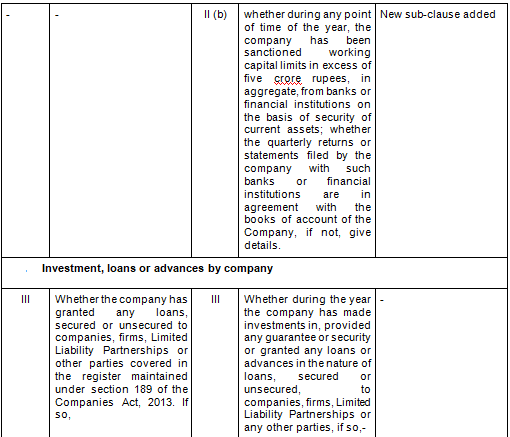
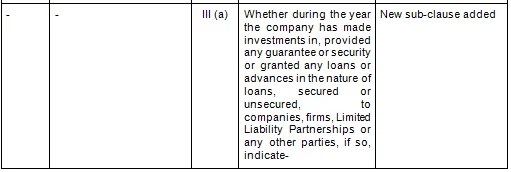




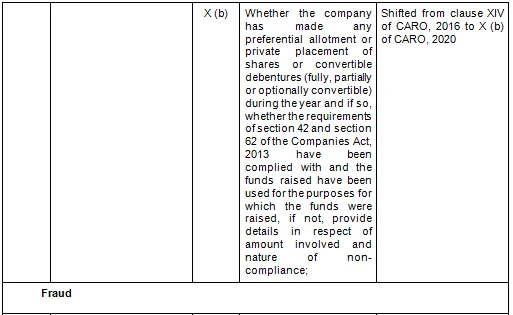

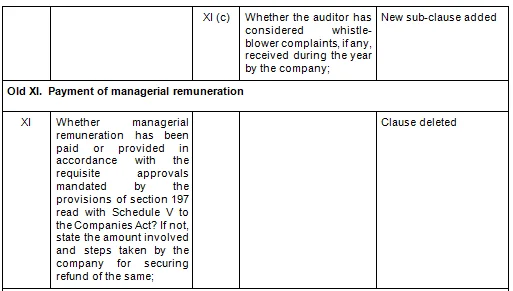

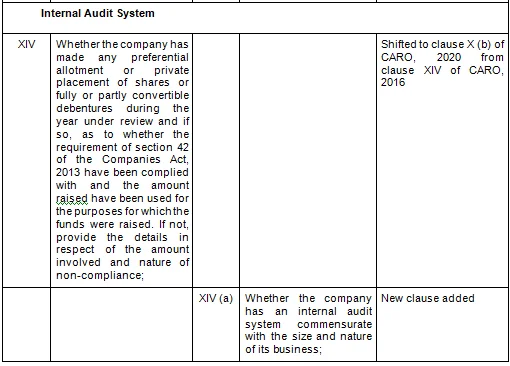
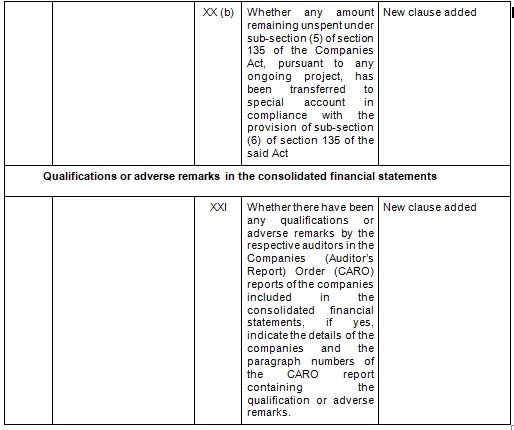



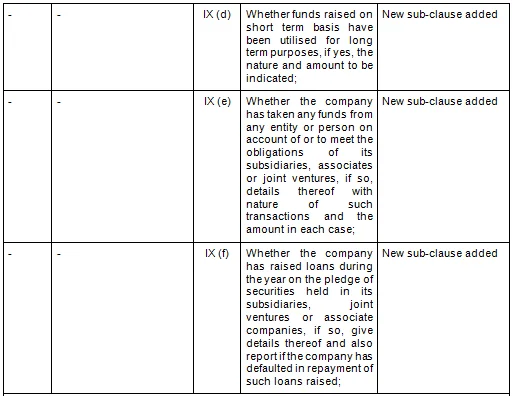

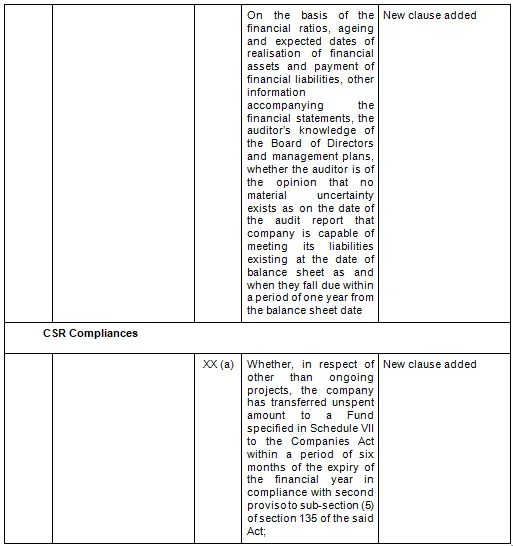


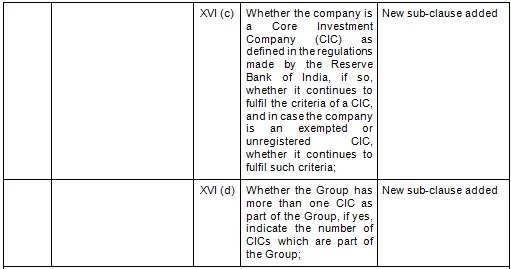


Intermediary Guidelines 2021
The Ministry of Electronics and Information Technology (“MeitY”), on 25 February 2021, had notified the Information Technology (Intermediary Guidelines and Digital Media Ethics Code) Rules, 2021 (“Intermediary Guidelines”) which superseded the Information Technology (Intermediary Guidelines) Rules, 2011 (“Intermediary Guidelines, 2011”) and brought under their scope numerous online entities by introducing broad new terms and definitions.
The Intermediary Guidelines 2021 have been amended recently vide the Information Technology (Intermediary Guidelines and Digital Media Ethics Code) Amendment Rules, 2022 published and notified in the Gazette dated October 28, 2022 (“Amending Rules”).
Intention of the Ministry
The lack of transparency, accountability of intermediaries and social platforms on the internet and violation of rights of users of digital media had been a growing concern for the nation in the changing and ever-advancing technology and digital media space. Considering the need of the hour, the MeitY issued the Intermediary Guidelines, 2021 covering many issues related to use of digital media and defining the responsibilities of the intermediaries, including social media intermediaries, and also providing a code of ethics to be followed and outlining grievance redressal mechanisms to be followed.
The Intermediary Guidelines sought to address all the issues faced by social media and internet users and to regulate the following categories of intermediaries and digital media entities:
- Intermediaries including social media intermediaries and significant social media intermediaries;
- Publishers of news and current affairs content, including news aggregators, news agencies, and individual news reporters to the extent they are transmitting content in the course of a commercial activity
- Publishers of online curated content, including individual creators transmitting content in the course of a systematic business, professional or commercial activity.
This has been a major step forward in today’s digital world, establishing a practice of regulating a critical sphere of our lives and also the nation’s economy.
Further, in its press release, the MeitY stated that the Amending Rules were being notified in view of the complaints against the intermediaries due to their action/inaction regarding user grievances regarding objectionable content or suspension of their accounts
Definitions
The Intermediary Guidelines provided the following definitions:
- News Aggregator (Rule 2(o))
An entity who, performing a significant role in determining the news and current affairs content being made available, makes available to users a computer resource that enables such users to access the news and current affairs content which is aggregated, curated and presented by such entity. - Publisher of news and current affairs content (Rule 2(t))
An online paper, news portal, news aggregator, news agency and such other entity called by whatever name, which is functionally similar to publishers of news and current affairs content but shall not include newspapers, replica e-papers of the newspaper and any individual or user who is not transmitting content in the course of systematic business, professional or commercial activity. - Publisher of online curated content (Rule 2(u))
A publisher who, performing a significant role in determining the online curated content being made available, makes available to users a computer resource that enables such users to access online curated content over the internet or computer networks, and such other entity called by whatever name, which is functionally similar to publishers of online curated content but does not include any individual or user who is not transmitting online curated content in the course of systematic business, professional or commercial activity. - Significant social media intermediary (Rule 2(v))
A social media intermediary having a number of registered users in India above such threshold as notified by the Central Government. This threshold has been set at fifty (50) lakh users. - Social media intermediary (Rule 2(w))
An intermediary which primarily or solely enables online interaction between two or more users and allows them to create, upload, share, disseminate, modify or access information using its services.
Other important definitions include communication link, news and current affairs content and online curated content which together fulfill the government’s purpose of regulating numerous kinds of information available on the internet.
The Intermediary Guidelines are divided into two parts:
- Due diligence obligations applicable to intermediaries and grievance redressal, and
- Code of ethics and related safeguards and procedures applicable to entities in the digital media space
It must be noted here that; Rule 3 of the Intermediary Guidelines require an intermediary to observe due diligence while discharging its duties. If this mandate of due diligence is not complied with, such an intermediary shall not qualify for ‘safe harbor’ protection, as granted under Section 79 of the Information Technology Act, 2000 (“IT Act”). The due diligence obligations include publishing, in a prominent manner, the rules and regulations, privacy policy and user agreement for access or usage by any person (these shall, thereafter, be collectively referred to as “Access Policy”). The Amending Rules require such Access Policy to be in English or any of the official languages of India as specified in the Eighth Schedule to the Constitution so that it can be understood by the users in the country easily. The Access Policy must also inform the user to not host, display, upload, modify, publish, transmit, store, update or share any prohibited information. After the Amending Rules were enforced, there are nine categories of such prohibited information ranging from unauthorized information as a consequence of it belonging to another person to information which threatens the unity, integrity, defense, security or sovereignty of India.
As part of its due diligence obligations, an intermediary must also do the following:
- Periodically inform its users that their non-compliance with the Access Policy allows the intermediary a right to terminate such users’ right to access or usage of the intermediary’s website or mobile application (hereinafter collectively referred to as “Platform”).
- Not host, store or publish any unlawful information, or if so done, the intermediary shall remove or disable access to such information at the earliest but not later than thirty-six (36) hours of having received actual knowledge of the unlawfulness of the impugned information. A similar obligation was placed upon an intermediary under the Intermediary Guidelines, 2011; however, an intermediary was also required in case it obtained knowledge of such information by itself and not necessarily by actual knowledge. An intermediary was also required to work with the user or owner of such information to disable it. The Intermediary Guidelines, 2021, on the other hand, limit the obligation to receiving actual knowledge in the form of an order by a competent court or on being notified by the government or its agency.
While, prima facie, this step shall ensure that only information that has been verified to be unlawful shall be subject to not being hosted, stored or published, or removed or disabled accessed to, it does not keep any person from having such information on display on an intermediary’s platform till the time a court or an appropriate government acts upon it.
An exception is made to this rule, wherein, an intermediary, within twenty-four (24) hours from the receipt of a complaint made by an individual (or on behalf of such individual), with regard to any content which, prima facie, depicts nudity, sexual conduct or impersonation of such individual, must take such content down.
- Any information, which has been removed or to which access is disabled, shall be preserved, without vitiating evidence, up to one hundred and eighty (180) days or more, as may be required by a court or (lawfully authorized) government agency.
- Any information collected from a user upon his/her registration shall be retained for one hundred and eighty (180) days after cancellation and/or withdrawal of his/her registration.
- Reasonable security measures must be implemented to protect the Platform, its users and the information contained therein, compliant with the reasonable security practices and procedures as prescribed in the Information Technology (Reasonable Security Practices and Procedures and Sensitive Personal Information) Rules, 2011
- Co-operate with any government agency lawfully authorized to perform investigative, protective or cyber security activities and provide any related information under the control or possession of the intermediary within seventy-two (72) hours of receipt of an order to do so.
- The intermediary must not, knowingly deploy, install or modify its Platform’s technical configuration or become a party to an act which may result in such consequence. It is also required to report cyber security incidents and share related information with the Indian Computer Emergency Response Team.
- The intermediaries are required to respect the rights guaranteed to users under the Constitution, including a reasonable expectation of due diligence, privacy and transparency. This obligation was inserted via the Amending Rules.
Furthermore, Significant Social Media Intermediaries are required to observe additional due diligence which includes:
- Appointment of a Chief Compliance Officer.
- Appointment of a nodal contact person (other than the Chief Compliance Officer) for full time coordination with law enforcement agencies and officers.
- Appointment of a Resident Grievance Officer.
- Publishing of monthly compliance reports containing details of complaints received and actions taken.
If a Significant Social Media Intermediary provides services primarily in the nature of messaging, it must enable the identification of the first originator of the information available on such platform, as may be required by a judicial order passed by a competent court or an order passed under Section 69 of the IT Act and applicable rules, by a competent authority.
To curb the abuse of this Rule, it has been provided that such orders shall only be passed for prevention, detection, investigation, prosecution or punishment of an offence and only if other means, not as intrusive, cannot be employed. It is further provided that the contents of any electronic message or other such information relating to the first originator needn’t be disclosed. Thus, an attempt has been made to balance public or national interests and the protection of individual privacy.
- Significant Social Media Intermediaries are also required to endeavour to adopt technology-based measures to proactively identify information depicting the act or simulation of rape, child sexual abuse or other such conduct, or any information which was previously removed or the access to which was disabled, and to display notice to users attempting to access such information.
- Here, it has been provided that interests of free speech and expression, user privacy and so on, must be duly regarded and measures must be proportionate. Appropriate human oversight of such measures, including periodic reviews evaluating their accuracy and fairness, must also be deployed to ensure their proper functioning.
- Significant Social Media Intermediaries are also required to have a physical contact address in India which must be published on their Platform.
- A grievance redressal mechanism must be implemented which must enable aggrieved users to track the status of their complaint via a unique ticket number. Moreover, the complainants must be provided with reasons for why the Significant Social Media Intermediary acted or did not act upon their complaint to a reasonable extent.
- Enable users to voluntarily verify themselves and provide a demonstrable and visible mark of verification to such users. The information provided by any user, in furtherance of this, shall not be used for any other purpose, unless expressly consented to.
- Before removal or disabling access to information, which is unlawful, on its own accord, a Significant Social Media Intermediary must notify the user who has created or uploaded such information and provide an adequate and reasonable opportunity to such users to dispute the action.
In addition to the above, an intermediary in relation to news and current affairs content shall publish on its Platform, at an appropriate place, a clear and concise statement informing publishers therein, to furnish details of their user accounts on the services of such intermediary to MeitY. Such publishers must be provided a demonstrable and visible mark of verification.
Grievance Redressal Mechanism
An intermediary is required to prominently publish the name and contact details of the Grievance Officer along with the redressal mechanism, including for receipt of complaints, on the Platform. The Grievance Officer shall
- Acknowledge the complaint within twenty-four (24) hours and dispose it of within a period of fifteen days from the date of its receipt,
- Receive and acknowledge any order, notice or direction issued by the Appropriate Government, any competent authority or a court of competent jurisdiction.
An intermediary must, within 24 hours of receipt of a complaint made individual (or on behalf of such individual), with regard to any content which, prima facie, depicts nudity, sexual conduct or impersonation of such individual, must take all reasonable and practical measures to remove or disable access to such content.
The Amending Rules have inserted the definition of a Grievance Appellate Committee under section 2(ka), and also directed the Central Government to establish one or more Grievance Appellate Committees within three months from notification of the Amending Rules under newly inserted Section 3A of the Rules. Section 3A also provides for appointment of the committee members and its purpose. The Appellate Committee shall consist of three members headed by a chairperson, where two of such members shall be independent and one will be an ex-officio member. It is for enabling any aggrieved person to appeal to the Committee when he is not satisfied with the decision of the Grievance Officer and such appeal shall be disposed expeditiously within 30 calendar days from filing of the appeal
Code of Ethics
A three-tier code of ethics (“Code”) has been implemented which is largely self-regulatory in nature. This includes self-regulation by publishers of not only online curated content but also of news and current affairs content, operating in India and conducting the systematic business activity of making their content available here.
Level I provides for self-regulation by the publishers.
- Publishers are required to establish a grievance redressal mechanism and appoint a Grievance Officer. Moreover, publishers of online curated content are required to classify such content based on appropriateness and suitability for persons of various age groups while having regard for context, theme, tone and impact and target audience. Other concerns such as the display or use of discrimination, psychotropic substances, liquor, smoking and tobacco, imitable behavioral, offensive language, nudity, sex and violence must also be duly accounted.
Such classification or rating must be displayed prominently and viewer discretion, if required, must be advised. Display ratings of the Online Curated Content such as ‘U’, or ‘U/A 7+,’ or ‘U/A 13+’, or ‘U/A 16+’, or ‘A’ prominently to its users in a manner that will ensure that the users are aware of the ratings before accessing such content.
- Publishers must also make reasonable efforts to improve accessibility of online curated content to persons with disabilities by implementing appropriate access services.
Additionally, a publisher shall not transmit or publish any content which is prohibited by law or by a competent court and must also take into consideration national interests and India’s diversity while exercising due caution and discretion in featuring activities, beliefs, practices or views of any racial or religious group.
Level II provides for the establishment of one or more independent and self-regulating bodies of publishers or their associations.
Such a body shall be headed by a retired judge of the Supreme Court or High Court, or an independent eminent person from the field of media, broadcasting, entertainment, child rights, human rights or such other relevant field and up to six other members who are experts in one or more of the aforementioned fields. The body must register itself with MeitY within thirty days of the date of notification of these rules or, if constituted after this period, within 30 days of its constitution.
The regulatory body shall:
- Oversee and ensure adherence, by all publishers, to the Code
- Provide guidance to publishers on the Code
- Address grievances which remain unresolved by publishers even after the fifteen (15) day period
- Hear appeals against decisions of publishers
The body can also issue guidance or advisories to publishers while disposing of a grievance or an appeal. It can also refer a matter to MeitY if it believes it necessary. If the body concludes there is no violation of the Code, such a decision must be conveyed both to the complainant and the publisher. Finally, in cases of non-compliance of a guideline or advisory, issued by the body, by a publisher, the matter may be referred to the Oversight Mechanism within 15 days of the period in which such compliance was required by such publisher.
Level III provides for an oversight mechanism which shall fall under the purview of MeitY, who shall, in turn, coordinate and facilitate adherence, by publishers, to the Code.
MeitY is required to do the following, as part of the oversight mechanism:
- Publish a charter for self-regulating bodies, including Codes of Practices
- Establish an Inter-Departmental Committee for hearing grievances or appeals to decisions made by the self-regulating body or complaints or references made regarding violation of the Code
- Issue guidance and advisories to publishers
- Issue orders and directions to publishers for maintenance and adherence to the Code
Analysis of Intermediary Guidelines 2021
The Intermediary Guidelines, 2021 seem to be a necessary step allowing the law to catch up with the constantly evolving and disruptive technology. With these Rules encouraging self-censorship, it is evident that the Executive recognizes how important it is to allow intermediaries freedom in their operation. However, it also uploads the need to protect individuals using such intermediary platforms and urges intermediaries to work in a conscious and ethical manner. The increase in compliance requirements is likely to result in higher volumes of complaints and access requests by government agencies, making it difficult to address the complaints in a short time frame as provided under the rules that is to say it may not be practical to take down content within these timelines. Provisions such as permitting the tracing of originators of the information drastically undermines the privacy of individuals. The local presence requirement as seeked under the new guidelines may also lead to increased operational costs.
As the Intermediary Guidelines are still in its early stages, it is crucial that while regulating the ever-changing and dynamic digital space, the Government and bodies responsible for enforcing and monitoring compliance under the Intermediary Guidelines, 2021, strike a balance between upholding the protections which individuals are entitled under the Indian Constitution or under any other law and to allow intermediaries to operate in India with limited restrictions, thereby, curbing any abuse while also helping the country’s digital economy to flourish.
Are Trademark and Brand Name two sides of the same coin?
Importance of Trademarks and Brand Names for Your Business:
Understanding the Differences Between a Brand & a Trademark
If you own a business, you have probably heard of the terms “brand” and “trademark.” While these words are often used interchangeably, they have distinct meanings. In this post, we will discuss the differences between a brand and a trademark, as well as the importance of each.
First, let’s define what brands and trademarks are. A ‘brand’ is a collection of features and elements that create a company’s identity in association with certain product(s) or service(s) that helps create brand value of the entity. This includes the brand name, logo, image, goodwill, personality, culture, and reputation.
On the other hand, a Trademark is defined in the Trademark Act, 1999 as, “a mark capable of being represented graphically and which is capable of distinguishing the goods or services of one person from those of others and may include the shape of goods, their packaging and combination of colors.” A trademark is the intellectual property of a business. A trademark can be a visual symbol, logo, design, word, slogan, tagline, jingle or combination of these elements, created in relation to a particular brand. It differentiates a company’s products and services from competitors in the market.
Similarly, a brand name is the primary name of a company under which the company markets and sells its products or services, while a trademark is a representation in the form of logo or symbol or word or their combination for that brand name. A registered trademark allows a company to take legal action against those who copy or use the brand name or such trademark without permission in relation to the same goods or services. Trademarks often act as a distinguisher between two brands with similar names.
Registration of a trade mark is not mandatory, however, it is also not an inherent right available to the creator like is the case in copyright. Hence, it is important to protect your brand and intellectual property from infringement and misuse in the market and to secure your trademark’s creation, by opting for trademark registration. A registered trademark creates a niche in the industry, thus safeguarding your brand value and maintaining your position in the market. It also helps customers identify fraudsters trying to dupe them by using your mark. A brand value is one of the most important criteria that hold a company together and continuous usage of a certain trademark in relation to one’s brand helps build that brand value.
In summary, while brand and trademark are closely linked, they are separate concepts. A brand creates awareness and trust in a company, while a trademark provides a symbolic or graphic representation, and protection if it is registered to prevent theft or misuse of intellectual property.
FAQ’s
Q: What are examples of trademarks and brand names?
A: Some examples of trademarks include the Nike swoosh, the Apple logo, and the McDonald’s golden arches of ‘M’, or Coca-Cola in its unique italics font. Brand names include Coca-Cola, Google, and Amazon.
Q: What is the difference between brand, trademark, and copyright?
A: A brand is a collection of features that create a company’s identity, including the brand name, logo, image, personality, culture, and reputation. A trademark is a mark symbolizing that brand of a company and constitutes as its intellectual property, such as symbols, graphic representation, logos, designs, words, slogans or colors or combination. Copyright protects original works of authorship, including literary, artistic, cinematographic and musical works, and grants exclusive rights to the creator of the original work.
B2B SaaS – How Sales can be driven efficiently?
Unlock the Secrets to Efficiently Drive B2B SaaS Sales – Boost Your Revenue Now
B2B SaaS or Business to Business Software as a Service is a cloud-based software distribution model that allows companies to sell access to their software to other businesses. Rather than downloading software to a desktop PC, businesses can access SaaS products through an internet application or web browser. B2B SaaS products can include any kind of software such as office management, customer support or communication software used within a business.
Here are some advantages of B2B SaaS that make it valuable to a business:
- Accessibility: B2B SaaS products can be accessed from any web browser, allowing businesses to manage operations effectively without the need to be at a specific location or operating system.
- Automatic updates: As a cloud-based service, B2B SaaS businesses can automatically update the product without impacting the user’s operations. Additionally, with cloud-based applications, there is no requirement for storage or hardware on the end-users side.
- Data capture and analytics: Since B2B SaaS software is centralized and automated, it is easier to capture data and provide in-depth analytics.
- Cost-effective: B2B SaaS eliminates the need for businesses to own products, systems, and hardware that can be costly.
- Efficient operations: B2B SaaS allows businesses to automate internal functions and operations at a relatively low cost.
Examples of some B2B SaaS Companies are:
- HubSpot: A cloud-based inbound marketing and sales platform that provides tools for CRM, web analytics, content management, SEO, and social media analytics.
- Google: Famous for its search engine, Google also owns and operates more than 130 different SaaS products. Some of Google’s services include a search engine, online advertising, document creation, digital analytics, and other services.
While B2B SaaS and B2C SaaS sales and marketing share the same end goal of helping customers, there are many differences in the process that make the need for a strong sales strategy important.
The B2B SaaS sales cycle is much longer and more complex than the B2C SaaS sales cycle. Businesses generally have more than one buyer on a team communicating with many sales reps and maybe even sales teams, where consumer purchases are usually done between one customer and one sales rep. With B2C SaaS, a user can directly input their credit card information and start using the product, while a B2B SaaS deal often requires a demo and onboarding process.
As B2B SaaS companies grow, they usually deploy an enterprise sales team that enables them to effectively target enterprise-sized companies who have unique needs.
B2B SaaS Selling Tactics
For startups finding the right marketing strategy that will attract new sales and build brand awareness can be challenging. From targeting the right audience to preparing sales teams for a competitive market, marketers may find it challenging to get their SaaS product in customers’ hands.
Some of the sales tips and marketing strategies used in B2B SaaS sales that can help any startup succeed are:
- Position your software around competitor brands: The SaaS market is incredibly competitive. To meet company sales goals, marketers need to elevate their company above the competition. To do so, this often requires positioning your software above and against your competitors. Use data-based metrics to prove why your SaaS products are the superior choice for meeting your client’s needs. This could mean using case studies or conducting surveys.
- Focus on customer retention: As business needs and software solutions are constantly changing, building a strategy that includes customer retention could set your business apart from others. To ensure that your business is well-positioned, continue to prove to customers why your software fits their needs. To encourage customer retention, SaaS sales reps
Best Practices for Selling B2B SaaS Effectively
Curate a Targeted Portfolio
In a digital marketplace flooded with too many options, B2B SaaS buyers can quickly become overwhelmed. To effectively address their pain points and boost revenue, start small with software that is highly targeted to potential customers. By curating the choices buyers have, you act as an expert advisor, steering them to solutions that will work best for them. As your software ecosystem evolves with services targeted to different buyer segments, you can significantly increase your marketplace’s revenue.
Highlight the Value of Your App
Never assume potential buyers understand the value of your app. To stand out from the competition, clearly communicate how your B2B SaaS offerings are relevant and different. Don’t overlook the obvious benefits your app provides, as these may not be as clear to potential buyers as they are to you.
Bundle Apps with Core Services
While buyers love a good deal, multi-app bundles can complicate the sales message and cycle in B2B SaaS. Instead, package apps with your core services. For instance, a telecom provider bundled a mobile broadband subscription with a tablet device and Microsoft Office 365, generating 1,500 active users in just a few months. Avoid attempting to solve too many challenges simultaneously, which makes the offer too complex and the business use unclear.
Use a Human Touch to Sell
While consumer devices have programmed us to believe apps sell themselves, this isn’t the case with B2B SaaS. Buyers need human assistance to make informed decisions.
Sell Solutions
To effectively sell B2B SaaS, put potential customers and their challenges first. Sales teams need to adopt a different mindset and focus on how the SaaS product can help customers solve their issues, leading to further growth for both the customer and the company. By prioritizing solutions, instead of speeds and feeds, you can sell B2B SaaS effectively.
SaaS Contract Negotiation Checklist: Top Ten Considerations
While SaaS has simplified enterprise software in multiple ways, however, subscribing to an “enterprise-class” system still requires a fairly complex contract negotiation process. Here is a SaaS contract negotiation checklist that covers the top ten crucial factors to consider when negotiating your SaaS Agreement:
1. Commercials
Usually discussed by the sales and/or the business teams and are negotiated before commencing the legal negotiation process. Pricing, payment terms, taxes, and billing methods should be negotiated with the sales or business teams before legal negotiation.
2. Liability Cap
The liability cap is the most important clause for protecting parties in claims as it sets a limit on the liability brought. Usually incorporated in an agreement to safeguard a party from any potential liability that may arise and to safeguard from any unlimited liabilities.
3. Intellectual Property (IP) Rights
While negotiating SaaS agreement, IP rights are of integral importance. The IP clause determines who owns IP rights and ensures that the agreement covers areas such as indemnity if a third-party claims IP infringement.
4. Effect of Termination
It’s important to stipulate what happens to data after termination of the agreement and for how long the customer has access to the platform, data backup frequency, and procedures.
5. Term
If a vendor offers pricing discounts, subscription metrics and additional fees, in such cases extended contract terms may be required. Vendors prefer longer terms because it provides more predictability in their revenue forecasting. Terms can range from 30 days to five years.
6. Indemnities
Clarify when indemnification is required and if limitations of liability apply to an indemnification claim. Ensure the contract provides indemnification for data as well as for security breaches and IP infringement.
7. Service Level Agreements (SLAs)
The SLA is the vendor’s commitment to keeping the system up and running and is typically expressed as a percentage of “up time”. You will almost always see the SLA represented as 95 to 99.9% or thereabouts. However, there is a wide variation in how the vendor calculates system uptime. A breach of the up time can result in grant of service credits, or a proportionate extension of the subscription period.
8. Data Protection Provisions
Include a differentiation between processor and controller and respective obligations in the agreement and ensure that it is GDPR-compliant.
9. Data Export
Two key things for consideration:
(a) you must ensure that data ownership is retained; and
(b) that you know how to export data in case of migrating to another system or the vendor going out of business and you need access to your data even before you select a new system.
10. Warranties
Generally, cloud service contracts contain many of the following warranties:
(1) that the service will materially conform to the documentation,
(2) the services will be performed in a workmanlike and professional manner,
(3) the provider will provide the necessary training for the customer to use the services
(4) the provider has sufficient authority to enter into this agreement
Other important considerations include disclaimers of warranties, force majeure, survival clause, and confidentiality provisions. Always ensure the customer fully understands that the services provided always carry inherent risks.
By prioritizing these ten factors in your SaaS contract negotiation checklist, you can create a solid SaaS agreement that aligns with your business’ needs, protects your interests, and ensures a successful and stress-free implementation.
FAQs on Points of Negotiation for SaaS Agreements
Q: How to negotiate the price for SaaS?
A: When negotiating the price for SaaS, it’s important to understand the service you’ll be receiving and what it’s worth to your business. You can request a detailed breakdown of the pricing structure and compare it with other vendors on the market. Be prepared to discuss payment terms and negotiate for discounts or bundling options when possible.
Q: How do you politely negotiate a contract?
A: When negotiating a contract, it’s important to approach the process with an open and collaborative mindset. Be clear about your needs and priorities, but also take the time to understand the vendor’s perspective. Listen carefully and ask questions when necessary, and seek common ground where possible. Ultimately, aim for a mutually beneficial agreement that meets both parties needs.
Q: What are the key points in a SaaS agreement?
A: The key points in a SaaS agreement include commercial terms, liability cap, intellectual property rights, effect of termination, terms, indemnities, service level agreements, data protection provisions, data export provisions and warranties. These areas cover crucial aspects such as pricing, data protection, and vendor responsibilities, and should be negotiated and agreed upon before signing the contract.
Q: What are the payment terms for SaaS contracts?
A: Payment terms for SaaS contracts can vary depending on the vendor and specific agreement. Some vendors may require payment upfront or on a monthly or annual basis. Others may offer more flexible payment schedules or subscription models. It’s important to review and negotiate payment terms to ensure they align with your business’ budget and cash flow needs.
Determining the exercise price of a stock option
Exercise price or strike price is the price at which the holder of stock options has the right, but not the obligation, to purchase vested options within the term period.
ESOPs that have vested can be exercised. To do this, the employee has to reach out to the CHRO or the finance team, and initiate the process of exercising ESOPs. Note that the employee has to pay a tax while exercising ESOPs, and only after that he/she will receive the shares and then may choose to sell.
The strike price of options can be anything that is chosen by the company while giving out the ESOP grant letter. Some startups choose the exercise price as a nominal amount (say INR 10) while some startups choose the exercise price based upon the last round valuation of the company.
In the latter case, the difference in the company’s valuations between when the employee joined and the liquidity event in which he/she sells ESOPs, represents the money gained by the employee.
While there is no concrete formula to arrive at the ideal exercise price, we suggest founders set the exercise price at a nominal value (face value of shares at minimum). There are two advantages of a nominal exercise price:
- Employee-friendly: Employees won’t have to pay a larger value for exercising their ESOPs
- Independent of Valuation: If the valuation of the startup goes down significantly, employees might end up losing money from the ESOPs they would have exercised
Let’s say the exercise price of ESOPs as per the last round valuation of the company is INR 80, and the employee was offered 100 ESOPs at an exercise price of INR 70. The company went on to raise another round of funding 3 years after ESOPs were granted to this particular employee. Assuming that the valuation of the company has gone down and the FMV of shares is INR 65 now, the employee will make a loss of INR 5 per share if he/she exercises and sells the shares on the present day.
Now if the employee was granted ESOPs at a nominal exercise price of INR 10 each, the employee will make some money despite the decreased valuation.
How Convertible Notes make fundraising seamless for startups?
If you’re a seed or early-stage startup in need of funds for hiring and operations, you may find it difficult to determine a fair valuation. That’s where convertible notes come in.
A convertible note is a short-term debt instrument that startups can use to raise funding. It allows holders to convert their debt into equity in the company at a future date. The biggest advantage of convertible notes for early-stage startups is that they don’t need to determine the value of the company when issuing them.
Unlike traditional equity financing, issuing a convertible note is quick and efficient. There’s only one document to deal with, which saves time and money for both the company and investors.
Until 2016, convertible notes were not legally recognized in India. However, the Companies (Acceptance of Deposits) Rules, 2014 were amended to recognize them as a fundraising instrument for startups.
DPIIT-registered startups can now raise funding through convertible notes, subject to certain conditions. The investment amount must be at least INR 25 lakhs in a single note and converted within 10 years. The terms of conversion must also be determined upfront.
By linking convertible notes to expected returns instead of valuation and percentage of ownership, startups can avoid the valuation quagmire that often comes with very early-stage investments.
Post Incorporation Formalities for PLCs & LLPs
After incorporating a Private Company (“PLC”) or Limited Liability Partnership (LLP), specific regulations in the Companies Act, 2013 and the Limited Liability Partnership Act, 2008 (“LLP Act”) must be followed to ensure compliance with the law. Certain post-incorporation compliances must be met before starting business operations to avoid any issues during the process. These activities exist due to provisions outlined in the Act or state-level laws such as the Shops and Establishment Act, State Stamp Act, and Professional Tax.
LLPs are a unique organizational form with characteristics of both a partnership firm and company and are governed by the LLP Act, 2008. Both PLCs and LLPs are administered by the Registrar of Companies (ROC). The following compliances must be met after receiving a certificate of incorporation.
Incorporation of a Private Limited Company (PLC) is a significant step in starting a business in India. However, it is important to note that certain compliances must be met to avoid penalties and ensure a smooth start to operations. Here are the mandatory post-incorporation compliances for PLCs:
1. Hold the first Board Meeting
According to Section 173, sub-section (1) of the Companies Act 2013, the company must hold the first board meeting within 30 days from the date of incorporation. The meeting must discuss important agenda items such as annual disclosures from directors, authorisation of share certificates, appointment of statutory auditor and such other agenda items. Failure to comply with this can result in a penalty of INR 25,000 for every officer of the company responsible for giving notice.
2. File Form INC-20A
All companies with share capital incorporated on or after November 2, 2018 having share capital, must file Form INC-20A within 180 days of incorporation in order to commence business or borrow funds. Failure to do so can result in a penalty of INR 50,000 for the company and a penalty of INR 1,000 per day for each officer in default during which the default continues, up to a maximum of INR 1,00,000.
3. Issue share certificates to first subscribers
Section 46(1) and 56, (4)(a) of the Companies Act 2013 mandates PLCs to issue share certificates to first subscribers, duly signed by two directors of the company and the company secretary, wherever the company has appointed a Company Secretary, if any, within a period of two months from the date of incorporation. Failure to comply can result in a penalty of INR 50,000 for the company and every officer of the company who is in default.
4. Payment of stamp duty on the share certificates
PLCs are required to pay stamp duty on the total consideration amount mentioned in the share certificates within 30 days of issuance. Failure to do so can result in a penalty as suggested by the Collector or officer in charge.
5. Appointment of first statutory auditor
As per Section 139, sub-section 6 of the Companies Act 2013, PLCs must appoint their first auditor within 30 days of incorporation. However, in case the Board fails to appoint, the shareholders must appoint the auditor within 90 days at an extraordinary general meeting. While there is no fine or penalty for failure to file Form ADT-1 for appointment of the first auditor, it is advisable to do so.
6. Shops and Establishment Registration/License
PLCs are required to obtain Shop and Establishment Registration under respective State’s as applicable. Penalty amount varies from state to state.
7. Professional Tax Registration (PTEC and PTRC)
PLCs must enroll under registration called (PTEC) and pay an annual mandatory fee of INR 2,500. Companies employing people with salaries above a specified limit (which varies from State to State) must obtain Professional Tax – Employee Registration (PTRC) when they begin to employ staff. The penalty amount for non-compliance varies from state to state.
8. Goods and Services Tax Registration
Every business whose annual turnover exceeds Rs. 40 lakhs or Rs. 20 lakhs for service providers, Rs. 10 Lakhs for North-Eastern States, Himachal Pradesh and Uttarakhand and J & K is required to obtain GST Registration under the Goods and Services Tax Act, 2017 and rules. While it is not mandatory to obtain GST Registration immediately upon incorporation, failure to pay tax can result in a penalty of 10% of the tax amount due subject to a minimum of Rs.10,000. In cases of deliberate tax evasion, the penalty will be at 100% of the tax amount due.
9. Trademark Registration
PLCs are encouraged to secure their business name through trademark registration under Section 18 of The Trademark Act, 1999.
10. MSME/SSI Registration
PLCs can also register under the MSME Development Act to get benefits such as collateral-free bank loan, preference in government tenders, and tax rebates.
Starting a Limited Liability Partnership (LLP) in India is a crucial milestone, and it’s essential to ensure compliance to avoid penalties and smoothly operate the business. Let’s go through the post-incorporation compliances required for LLPs:
i. File Form 3
After incorporating the LLP, the partners need to execute the LLP Agreement and file it with the Registrar. The LLP agreement is mandatory, and even in the absence of a specific LLP Agreement, the default LLP agreement given in Schedule I of the LLP Act shall apply. The form must be filed within 30 days of incorporation, and the penalty for non-compliance is Rs. 100 per day with no ceiling on the maximum fine.
ii. Apply for a PAN Card
The Issuance of PAN is integrated with the LLP incorporation process in form FiLLiP.
iii. Open a Bank Account
LLPs must open a bank account and transfer their capital to conduct transactions. No penalty or due date exists for this compliance.
FAQs
Q: When can a private company commence business?
A: A private company can commence business after filing form INC-20A within 180 days of Incorporation..
Q: What is the procedure after incorporation of a company?
A: After the incorporation of a company, the following procedures need to be carried out:
- Hold first Board Meeting
- Open a bank account for the company and transfer initial subscription
- Appoint first a statutory auditor
- Issue share certificates to the shareholders and payment of stamp duty
- Registration for Goods and Services Tax (GST) if applicable
- Registration for Professional Taxes if applicable
- Startup India and Angel Tax exemption, if required
- Obtain such other necessary licenses and permits if required for the business
Q: Which forms need to be filed after incorporation of a company?
A: After the incorporation of a company, the following forms need to be filed:
- Form INC-22: This form is for the notice of the situation or change of registered office of the company, if the Company has been incorporated with a correspondence address
- Form INC-20A: This form is for the declaration of commencement of business.
- Form ADT-1: It is advisable to file this form appointment of first auditor.
Q: What documents are required to be filed at incorporation stage?
A: The following documents are required to be filed at the incorporation stage:
- Spice Part-B: This is the e-form for the incorporation of a company.
- Form INC-33 (E-MOA): This form is for e-memorandum of association.
- Form INC-34 (E-AOA): This form is for e-articles of association.
- INC-35: Agile Pro:Application for Goods and services tax Identification number , employees state Insurance corporation registration pLus Employees provident fund organisation registration, Profession tax Registration, Opening of bank account and Shops and Establishment Registration
- INC-9: Declaration by Subscribers and First Directors
Q: Which is the first meeting to be held after incorporation?
A: The first meeting to be held after incorporation is the board meeting. It shall be held within 30 days of incorporation and typically includes the following agenda items;
- To place the Certificate of Incorporation before the meeting;
- Noting of First Directors;
- To take a note of the disclosure of interest under Section 184(1) and certificate under Section 164(2) of the Companies Act, 2013;
- Authority to open the Bank Account;
- To inform the place of Registered Office;
- To decide the Financial Year of the Company;
- Appointment of First Auditor;
- Adoption of Share Certificates;
- Approval of Pre-Incorporation Expenses;
- Commencement of Business;
- Books and Registers;
- Allotment of Shares and issuance of share certificates to the subscribers of the Memorandum of Association;
- To decide and maintain minutes in Loose Leaf Folder;
- To decide and maintain the Books of Accounts
Implications of a Force Majeure Clause
Are you worried about force majeure events impacting your contract in India?
It’s crucial to understand the force majeure clause’s meaning and its legal definition. A force majeure clause in contract explicitly sets out the terms that excuses a party from performing its contractual obligations under certain force majeure conditions or events.
The recent COVID-19 pandemic has forced organizations to revisit their force majeure clauses, and it is essential to have a sample force majeure clause in your contract to avoid breaching the contract.
It is important to read the force majeure clause carefully, determine the force majeure event’s legal definition, and evaluate payment obligations under the clause. For instance, some contracts may have carve-outs for payment obligations, which may not be covered even if the force majeure event delays the performance of the contract.
In India, the government has declared the current situation of COVID-19 as a force majeure event, making it necessary for organizations to include a force majeure clause in their contracts to protect themselves during these uncertain times.
To give you a better force majeure clause example, suppose your business is bound by a contract to deliver goods to a customer, but a natural calamity occurs, resulting in the transportation means being shut down. In this case, the force majeure clause in your contract can protect you from breaching the contract due to non-performance.
In summary, understanding the force majeure clause meaning and having a sample force majeure clause in your contract is essential to protect your business during unprecedented events like the current COVID-19 pandemic.
Are you wondering how force majeure events like COVID-19 are affecting contractual obligations in India?
As per the force majeure legal definition, the Force Majeure (FM) clause in contract allows parties to be excused from the contractual obligations in case of events beyond their control, such as pandemics, natural disasters, and government orders.
Due to the outbreak of COVID-19, labor shortages and shutdown of services have affected the physical and legal performance of contractual obligations in India. Parties that are unable to perform are taking help of FM clauses to avoid any contractual remedies for non-performance.
However, some FM clauses do not include pandemics, which can lead to possible disputes and even breach of contract. Hence, to avoid any discrepancies, it is essential to have a well-drafted sample force majeure clause that clearly defines force majeure events. A well-drafted FM clause can make both parties aware of which events are force majeure events and which are not, making it simpler and more effective to deal with force majeure conditions.
In summary, it is crucial to understand the force majeure clause meaning and have a strong FM clause in your contract, which includes pandemics, to avoid any disputes or breach of contract during force majeure events like COVID-19. So, make sure to evaluate payment obligations and seek good counsel while drafting a force majeure clause to protect yourself and your business during such uncertain times.
FAQs
Q: How to write the force majeure clause in a contract?
A: A force majeure clause is an essential section of any contract that outlines the terms that excuse a party from fulfilling its contractual obligations in certain force majeure events. Writing a force majeure clause in a contract involves a few key steps:
- Identify Force Majeure Events: You need to identify the force majeure events that would be covered under the clause. These events may include natural disasters, wars, pandemics, government orders, and other similar situations.
- Be Specific: The language of the clause should be specific and unambiguous. It should identify the events that would excuse the parties from fulfilling their obligations
- Evaluation of Payments: It is important to evaluate the payment obligations under the clause, as some contracts may have carve-outs for payment obligations, which may not be excused even if the force majeure event delays the performance of the contract.
- Review Applicable Laws: You also need to review applicable laws and regulations to ensure that the language in the clause is legally enforceable.
- Notice of Force Majeure: The clause should also include a notice of force majeure provision that requires the parties to inform each other when a force majeure event will delay or prevent performance of contractual obligations.
In summary, drafting a force majeure clause requires a careful and detailed approach. It is essential to identify force majeure events, be specific in the language, evaluate payment obligations, review applicable laws, and include a notice of force majeure provision. An experienced lawyer can help draft a comprehensive force majeure clause that protects your interests in case of a force majeure event.
Understanding SaaS or Software-as-a-Service
SaaS or Software-as-a-Service is a software distribution model in which a third-party provider hosts applications centrally and licenses them to customers over the internet on a subscription basis. It is one of the three main categories of cloud computing-based services, alongside Infrastructure-as-a-Service (IaaS) and Platform-as-a-Service (PaaS).
Pros and Cons of SaaS
SaaS has turned out to be quite helpful to organizations in terms of flexibility and cost-effectiveness, enabling businesses to provide efficient software-based services to large customer bases, using the widespread and ubiquitous availability of the cloud. However, recent stories around hacking and data leaks have shed light on the vulnerability of centrally and cloud-hosted software systems. In this regard, it is essential for SaaS-based startups and businesses to have well-drafted agreements, like a SaaS contract or software-as-a-service agreement, as well as strong technical and procedural security safeguards, to protect legal responsibility and safeguard the distribution and subscription licensing of the offering.
B2B vs B2C
B2B SaaS companies offer cloud business management solutions (products and services) to other companies and businesses, while B2C SaaS businesses sell products and services to consumers directly. Both B2B and B2C are subscription-based and track customer acquisition cost, churn rate, and user lifetime value metrics. However, their marketing strategies and approaches are different.
The Importance of a SaaS Agreement
A SaaS agreement, also known as a software-as-a-service agreement, sets out the provision and delivery of software services to customers through the internet, eliminating the hassle around conventional software licensing models. SaaS agreements are serious undertakings that require careful consideration. Once properly drafted, a SaaS agreement eliminates the hassle around conventional software licensing models. The terms in a SaaS agreement can be renewed when the subscription period expires. A properly drafted SaaS agreement is crucial to prevent disputes from arising.
Essentials of Every SaaS Agreement
Here are the essential elements that every SaaS agreement should include:
- Subscription and grant of rights, services, and functionality: Specify the type of service that you render to the client under the agreement, as well as ensure access to the software provided to users, subject to conditions, on a case-to-case basis.
- Data Protection: Include a clause that highlights the protection of data that will be transmitted to the providers and how they will further process that data.
- Intellectual Property (IP) Rights: Outline the intellectual properties of all parties involved in the SaaS agreement.
- Confidentiality Clause: Safeguard confidential and proprietary information that will be shared between the parties.
- Indemnities: Parties involved in an agreement may suffer certain losses and/or damages for which they shall stand liable and indemnify the other party for all losses, including costs that will be incurred during the course of legal suits.
- Disclaimer: Include a disclaimer specifying what will not hold the provider liable.
- Limitation of Liabilities: Limit liabilities of the provider under the SaaS agreement.
- Representations and Warranties: Include the representations and warranties of both parties in the SaaS agreement. Since the provider will usually be the data processor and the user is the data controller, both parties should have certain warranties set out in the agreement
- Terms of Service: Set out the term based on the subscription that the user has subscribed for.
- Force Majeure: This clause will include the course of action at the time of extreme events that can be termed as ‘act of god’ – including hurricanes, tornadoes, floods, etc.
- Service Level Agreements (SLA): A SaaS agreement should always include an SLA that covers the provisions of technical and support services, including availability and penalties.
SaaS vs EULA
While a SaaS provides the provision and delivery of software services to customers through the internet, an End User License Agreement (EULA) licenses the end user to use the software in a limited manner. Under SaaS applications, users do not get a copy of the software. SaaS is usually hosted and accessed through the internet, similar to other commonly-used subscriptions availed by consumers for media, gaming, and more. A well-drafted SaaS example can provide more clarity and help in avoiding legal disputes.
| SaaS | EULA | |
| Full Form | Software-as-a-Service | End User License Agreement |
| Ownership | Vendor offers the software and users access it on the internet on a subscription basis. Ownership of software is not transferred to the user | Software is purchased by the end user. Users have all rights – including copyrights. The user can make copies of the software for personal use |
| Termination of Usage | User’s right to the software ends upon termination of the SaaS agreement | User owns the software and has the grant of copying, downloading and installing it but is not allowed to resell it |
| Licensing/Access | The customer is usually granted an access to use the software | The customer is provided with the licensing of the product/software |
FAQs about SaaS Agreements
Q: What is included in a SaaS agreement?
A: A SaaS (Software as a Service) agreement typically includes terms and conditions related to the usage, access, and hosting of software applications provided via the internet. Key provisions that may be included are payment terms, data privacy and security, intellectual property rights, warranty, indemnification, termination, and liability limitations.
Q: Why use a SaaS agreement?
A: A SaaS agreement is used to establish a legal relationship between the provider and the customer for the use of software programs provided as a service. It sets out the terms and conditions of use to protect the rights of both parties.
Q: What is the difference between a license agreement and a SaaS agreement?
A: A license agreement typically refers to an agreement for the use of software installed on a specific computer or server, while a SaaS agreement governs access to software that is hosted on the internet and accessed via a web browser.
Q: What is the IP clause in the SaaS agreement?
A: The IP (intellectual property) clause in a SaaS agreement addresses ownership and licensing rights related to the software and its components. It defines what proprietary material is considered to be part of the software, how the provider can utilize the software, and how the user can transfer or sublicense the software.
Q: What is the difference between a SaaS agreement and EULA?
A: A EULA (End User License Agreement) is a legal agreement between the software provider and the end-user that governs the use of software, while a SaaS agreement is a legal document that sets out the terms and conditions for the use of software hosted on the internet and accessed via a web browser.
Q: What is a SaaS agreement?
A: An SaaS agreement is a legal contract between a software provider and a customer that outlines the terms and conditions of usage and support of the provider’s software as a service.
Q: What is a SaaS reseller agreement?
A: A SaaS reseller agreement is a legal contract between the software provider and a reseller that outlines the terms and conditions of reselling the provider’s software as a service. It sets out the relationship between the provider, the reseller, and the end-user customers.
Q: How are SaaS contracts structured?
A: SaaS contracts are typically structured to include different levels of service, pricing, payment terms, constraints on usage, data privacy, warranties, and disclaimers. They may also include provisions for technical support, customization, upgrades, and the termination of the agreement. To ensure compliance with applicable legal requirements and best practices, it is important that SaaS contracts are drafted and reviewed by experienced legal professionals.
What Is An Income Statement?
An income statement helps business owners decide whether they can generate profit by increasing revenues, by decreasing costs, or both. It also shows the effectiveness of the strategies that the business set at the beginning of a financial period. The business owners can refer to this document to see if the strategies have paid off and they can come with the best solutions to yield more profit.
What is an Income Statement
An income statement is a financial statement that shows you the company’s income and expenditures. It also shows whether a company is making profit or loss for a given period. The income statement, along with balance sheet and cash flow statement, helps you understand the financial health of your business.
The income statement is also known as a profit and loss statement, statement of operation, statement of financial result or income, or earnings statement.
Components of an Income Statement
While all financial data helps paint a picture of a company’s financial health, an income statement is one of the most important documents a company’s leadership team and individual investors can review, because it includes a detailed breakdown of income and expenses over the course of a reporting period. This includes:
- Revenue: The amount of money a business takes in during a reporting period
- Expenses: The amount of money a business spends during a reporting period
- Income before taxes: All revenue less expenses but before taxes
- Net income: Income before taxes less taxes
- Earnings per share (EPS): Division of net income by the total number of outstanding shares
Above categories may be further divided into individual line items, depending on a company’s policy and the granularity of its income statement.
Analysis of an Income Statement
There are two methods commonly used to read and analyze an organization’s financial documents: vertical analysis and horizontal analysis. The difference between the two is in the way a statement is read and the comparisons you can make from each type of analysis.
Upright Analysis It refers to the method of financial analysis where each line item is listed even as a percentage of a base figure. In short, it’s the process of reading down a single column of data in a financial statement, determining how individual line items relate to each other (e.g., showing the relative size of different expenses, as line items may be listed as a percentage of operating expenses). This type of analysis makes it simple to compare financial statements across periods and industries, and between companies, because you can see relative proportions. It also helps you analyze whether performance metrics are improving.
Parallel Analysis It reviews and compares changes in the amounts in a company’s financial statements over multiple reporting periods. It’s frequently used in absolute comparisons, but can be used as percentages, too. Horizontal analysis makes financial data and reporting consistent along with growth comparison to it’s competitors.
Conclusion
In conjunction with the cash flow statement, balance sheet, and annual report, income statements help company leaders, analysts, and investors understand the full picture of a business’s operational results so they can determine its value and efficiency and, ideally, predict its future trajectory. Financial analysis of an income statement can reveal that the costs of goods sold are falling, or that sales have been improving, while return on equity is rising. Income statements are also carefully reviewed when a business wants to cut spending or determine strategies for growth.
We simplify your business so that you can spend time on things that matter.
Tax Calculator for Tax Regime – Old vs New
Are you wondering which tax regime you should opt for? While there is no clear-cut solution to the same, this blog post may go some ways in providing some clarity to this question. We shall detail the new tax regime and have shared the download link to a simple tax calculator prepared by us.
The Budget 2020 has brought a unique concern to the taxpayers through announcement of a new tax regime. It offers more tax slabs and lower tax rates. This was long demanded by most taxpayers, but it came with the catch of removal of all the deductions and exemptions available.
To add to this confusion, the finance minister gave taxpayers a choice between the new regime and existing one, leaving it to the citizens to decide on the basis of their preference. Instead of providing simplicity, understanding the tax regime in India may have become more complex.
Let us understand the new tax regime and what does it bring as a package.
Applicability:
The New tax regime is applicable to resident Individuals and HUF (“Hindu Undivided Family”), from the Financial Year 2020-21.
Proposed Tax Rates:
Health and Education Cess and Surcharge provision remains the same irrespective of the option chosen.
Point to Choose:
Tax payers can either choose to continue with existing tax system or select the new tax regime.

What benefit does it offer?
There are various benefits to this, some of them listed below:
- It provides an opportunity to increase the take home salary to the taxpayers;
- No need to worry about investments/deductions every year;
- Reduced compliances/paperwork as deductions/exemptions are not available;
- Easy and Self-competent payment of taxes and filing of returns;
- A good scheme for small taxpayers for a moderate class income range
What is there to lose:
Under this scheme, there is a list of exemptions/ deductions that have been withdrawn. Here is the list of exemptions/deductions not available anymore – Click.
Currently, under the old regime, the exemptions/ deductions allow you to lower your tax amount by investing, saving, or spending on specific items. However, it also means every year you have to find ways to optimize your salary and savings/investments so as to keep your taxable income to the minimum.
The Choice:
So basically, every person will have his own unique New Tax Slab Vs Old Tax Slab calculations as the deductions claimed by the person may be unique to him. Each individual tax payer ideally has to do their own calculations and depending on the amount of deductions/ exemptions being claimed, it is better to pick the better one between the two.
Here are steps you can follow:
- Ascertain your income under each head;
- Determine your exemptions/ deductions;
- Calculate the tax liability using the tax calculator given below;
- Decide where do you pay less
Tax Calculator:
We have created a simple tax calculator which will help you to determine your tax liability under both the tax regime considering the steps above.
You can access the calculator here – Download Tax Calculator
Our Support:
We care for the challenges and troubles that you face. We simplify your business so that you can spend time on things that matter. Please refer the “Resources” tab above to find more useful things.
Telemedicine Guidelines – Indian Laws for Tech Platforms
Telemedicine is changing the way healthcare services are delivered. As more and more patients opt for virtual healthcare, it’s crucial for med-tech platforms to comply with telemedicine requirements.
The Notification of the Telemedicine Practice Guidelines (“Telemedicine Guidelines”/ “Guidelines”) as a part of Appendix 5 of the Indian Medical Council (Professional Conduct, Etiquette & Ethics) Regulations, 2002 (“MCI Code”), has made: (a) the practice of the medical profession; and (b) provision of medical care over technology platforms, legal and regulated. These Guidelines impact a cross-section of stakeholders, such as medical professionals (“MP”), registered medical practitioners (“RMPs”), patients, caregivers and med-tech platforms.
While med-tech platforms are primarily responsible for ensuring that the MPs providing services comply with the ethical and legal aspects of telemedicine, they must also abide by the relevant laws and regulations. The Guidelines are for guidance purposes, laying out the primary principles, i.e. the contours within which telemedicine practice in India is to be followed. However, the Guidelines need to be read in conjunction with other applicable laws.
The laws that med-tech offering telemedicine services in India must comply with include: (a) the Indian Medical Council Act, 1956 (MCI Act) and the MCI Code; the Drugs and Cosmetics Act, 1945 and Rules made thereunder (D&C Act); the Telecom Commercial Communication Customer Preference Regulations, 2018 (TCCP Regulations); the Consumer Protection Act, 2019 (CPA); and the Foreign Exchange Management Act, 1999 (FEMA).
In conclusion, while the Guidelines are crucial, the med-tech platforms offering telemedicine services must comply with the necessary ethical and legal aspects of telemedicine in order to avoid penalties and potential liabilities. Before implementing tech-based solutions for telemedicine, businesses should evaluate the mandatory requirements and ensure compliance with relevant laws and regulations, in order to reduce potential liabilities
FAQ’s
Q: How to start a telemedicine service in India?
A: Before starting telemedicine services in India, med-tech platforms must comply with telemedicine requirements laid out by the Ministry of Health and Family Welfare and NITI Aayog. They must evaluate the nature of services and ensure compliance with the relevant laws and regulations, such as the Indian Medical Council Act, 1956 and the Indian Medical Council (Professional Conduct, Etiquette & Ethics) Regulations, 2002 the Drugs and Cosmetics Act, 1945 and Rules made thereunder; the Telecom Commercial Communication Customer Preference Regulations, 2018; the Consumer Protection Act, 2019; and the Foreign Exchange Management Act, 1999.
Q: What are the requirements of telemedicine standards?
A: The requirements of telemedicine standards in India contain a set of Telemedicine Practice Guidelines (“Guidelines”) as part of Appendix 5 of the Indian Medical Council (Professional Conduct, Etiquette & Ethics) Regulations, 2002, which outlines the legal and regulatory aspects with respect to the practice of medical professionals through med-tech platforms, for medical care and consultations. These guidelines provide legal and ethical frameworks and impact various stakeholders like medical professionals, registered medical practitioners, patients, caregivers, and med-tech platforms.
Q: What are the protocols used in telemedicine services?
A: Telemedicine services transmit medical information from the patient to the doctor via telecommunication technology as per the applicable laws. The protocol used in telemedicine services depends on the type of service provided, including audio-only consultation, video consultation, or text-based services. These protocols combine the use of equipment such as smartphones, tablets, laptops, and medical devices to assist edical professionals in providing the necessary healthcare services.
Q: Are telemedicine services legal in India?
A: Yes, telemedicine services are legal in India provided that the businesses offering med-tech platforms comply with the Telemedicine Practice Guidelines (“Guidelines”) as a part of Appendix 5 of the Indian Medical Council (Professional Conduct, Etiquette & Ethics) Regulations, 2002, in addition to other relevant applicable laws and regulations. Med-tech platforms offering telemedicine services must evaluate the nature of services and comply with necessary legal and ethical aspects of telemedicine, in order to reduce potential liabilities and ensure better and qualitative healthcare.
Data Privacy for Telemedicine Platforms
Telemedicine Platforms are those that provide a technology platform (website or an app) to facilitate online medical care, through audio, visual and text based means.
Such Telemedicine Platforms must be cognisant of: (a) their practices relating to handling data of patients, Medical Professional(s) (“MP(s)”) and other caregivers (hereinafter referred to as “User Data”); and (b) what impact mishandling of such User Data would have.
In India: (a) the Information Technology Act, 2000 (“IT Act”); (b) the Information Technology (Reasonable security practices and procedures and sensitive personal data or information) Rules, 2011 (“Data Protection Rules”); and (c) the Information Technology (Intermediaries Guidelines) Rules, 2011 (“Intermediary Guidelines”), presently regulate how Platforms providing telemedicine services handle the data of its users.
Platforms which: (a) provide services that enable recording of Sensitive Personal Data or Information (“SPDI”); and (b) place cookies to record user behaviour, could become liable under the IT Act, the Data Protection Rules and the Intermediary Guidelines.
Given the sensitivity of health care data, the Indian Government proposed the Digital Information Security in Healthcare Act (“DISHA“) in the year 2018, and has been deliberating upon the establishment of a National e-health Authority (“NeHA”) since 2015 with a goal to ensure the development of an e-health ecosystem and enable people centric health services in a cost-effective manner. DISHA aims to establish NeHA and State e-health Authorities (SeHA). Moreover, the enactment of the Digital Personal Data Protection Bill, 2022 (“DPDP Bill”), and its consequent effect will be something that would impact how Platforms provide their services.
Role of Platforms as Intermediaries: Active or Passive?
The applicability of the IT Act is slightly different for Platforms which are set up to only facilitate the interaction between the patient and the MP, and are not directly involved in the provision of medical care. In such cases the Platform would be considered as an ‘Intermediary’ under the IT Act and the Intermediary Guidelines. Under the Indian legal framework, Intermediaries are exempt from many of the liabilities/obligations placed by the IT Act on entities processing personal data.
As per section 79 of the IT Act, an Intermediary is not liable for any third party information, data, or communication link made available or hosted by it. This exemption applies only if:
- the function of the intermediary is limited to providing access to a communication system over which information made available by third parties is transmitted or temporarily stored or hosted;
- the intermediary does not – initiate the transmission; select the receiver of the transmission AND select or modify the information contained in the transmission; and
- the intermediary observes due diligence (as prescribed under the Intermediaries Guidelines) while discharging its duties under the IT Act.
One of the key elements of section 79 of the IT Act is that a Platform must not, (a) initiate the transmission of communication/data by, between its users; and (b) select the receiver of the transmission; and (c) select or modify the information contained in the transmission.
The manner in which a Telemedicine Platform provides its services, would more often than not, require it to facilitate a transaction and/or transmission of data initiated by their users (i.e. MPs and patients), and thereby, many a times, placing more responsibility on a Telemedicine Platform than would be applicable to an Intermediary, under the IT Act. Since a Platform would need to build their tech framework in a manner that facilitates transactions/transmissions, this circumstance may seem harsh.
However, when it comes to initiating a transmission, selecting the receiver of a transmission or selecting or modifying the information contained in the transmission, the Courts in India have laid down the test of passivity.
Essentially, the following are the factors that could determine that a Telemedicine Platform is playing a passive role in the ecosystem, and is therefore granted the protection of an Intermediary:
- Whether the role played by that service provider is neutral, in the sense that its conduct is merely technical, automatic and passive, pointing to a lack of knowledge or control of the data which it stores;
- Whether the platform is responsible for initiating the transmission, i.e., placing the listing on the website (for Platforms the important question would be whether there is any active uploading, suggesting or placing on such Tech Platform, the services of an MP);
- Whether the platform is involved selecting the persons who receive the information (for Platforms this would mean whether they choose/have a say (apart from legally mandated due diligence requirements on MPs) in who/what gains access to their services); and
- Does the entity controlling the platform have the power to select or modify the information that is being exchanged on its platform.
Thus, Platforms would only be considered as Intermediaries if their conduct is passive, technical and automatic in their facilitation of Telemedicine based care.
Privacy related Protocols to be followed by Telemedicine Platforms
1. A Platform would be required to have in place a set of rules and regulations in place that determine how data of users of its Platform will be used. This would require the publishing of a privacy policy, user agreement, terms and conditions et al. that determine the terms of access and use of the service provided by the Platform.
2. The privacy policy and terms of use/user agreement of a Tech Platform, should be designed and stated in such a way that the patients using the Platform, are aware of the type of SPDI collected, the purpose for which the same is done, the intended recipients of the SPDI and the requirement and the persons/parties to whom SPDI will be disclosed to.
3. Before the SPDI of a patient/user is disclosed to a third party, or before the same is transferred, consent of such patient/user must be acquired.
4. The Platform shall be required to have in place a grievance officer, the details of which are provided on the user agreement/privacy policy of the Platform, and such an officer shall be required to deal with the grievances of the patients/users in relation to their processing of the SPDI.
5. The Platform shall be required to comply with ‘reasonable security procedures and practices’ under the IT Act. A Platform will be deemed compliant with such procedures and practices if it implements the data security standard afforded by the IS/ISO/IEC 27001 on “Information Technology– Security Techniques – Information Security Management System – Requirements” or similar standards, in order to protect the SPDI.
Implementing ‘POSH’ (Policy on Sexual Harassment) at Workplace – Complaints & Compliance
Introduction:
Learn how start-ups and small businesses can effectively implement the Sexual Harassment of Women at Workplace (Prevention, Prohibition, and Redressal) Act, 2013 (POSH Act). This legislation gained global attention due to the significant impact of the ‘MeToo’ movement, emphasizing the importance of protecting women against sexual harassment, particularly in the workplace. Sexual Harassment at workplace is an extension of violence in everyday life and is discriminatory and exploitative, as it affects women’s right to life and livelihood. In India, for the first time in 1997, a petition was filed in the Supreme Court to enforce the fundamental rights of working women, after the brutal gang rape of Bhanwari Devi a social worker from Rajasthan. As an outcome of the landmark judgment of the Vishaka and Others v State of Rajasthan the Sexual Harassment of Women at Workplace (Prevention, Prohibition and Redressal) Act, 2013, was enacted wherein it was made mandatory for every employer to provide a mechanism to redress grievances pertaining to workplace sexual harassment and enforce the right to gender equality of working women. The Act is also unique for its wide ambit as it is applicable to the organized sector as well as the unorganized sector.
What is POSH and why was it enacted?
The Sexual Harassment of Women at Workplace (Prevention, Prohibition and Redressal) Act, 2013, popularly known as POSH Act, is a landmark legislation in India enacted on December 9, 2013. It aims to protect women from sexual harassment at their workplace and provide a safe and respectful working environment for them.
The POSH Act defines sexual harassment as any unwelcome sexual advances, requests for sexual favours, or other verbal or physical conduct of a sexual nature that:
- Affects the dignity of a woman employee.
- Creates a hostile work environment for her.
- Interferes with her work performance.
- Leads to her intimidation or humiliation.
The Act applies to all workplaces in India, regardless of their size or nature, whether public or private. It covers not only employees but also interns, trainees, apprentices, and domestic workers.
Prior to the POSH Act, there was no specific law addressing sexual harassment at workplaces in India. This often led to underreporting of incidents and inadequate grievance redressal mechanisms. The POSH Act was enacted to address this gap and ensure effective prevention, prohibition, and redressal of sexual harassment at workplaces.
Popular Sections of POSH Act are:
- Section 3: Defines sexual harassment and its various forms.
- Section 4: Mandates every employer to constitute an Internal Complaints Committee (ICC) to investigate complaints of sexual harassment.
- Section 5: Outlines the composition and functions of the ICC.
- Section 6: Defines the procedure for filing a complaint of sexual harassment.
- Section 7: Specifies the powers of the ICC to investigate complaints and recommend appropriate action.
- Section 8: Provides for penalties for sexual harassment, including dismissal from service.
- Section 9: Mandates employers to organize awareness programs on sexual harassment for all employees.
Who is responsible for implementing POSH policies in the workplace?
In the workplace, the ultimate responsibility for implementing and enforcing POSH (Prevention of Sexual Harassment) policies falls squarely on the employer’s shoulders. This legal obligation, often mandated by national and regional regulations, requires employers to take proactive steps to foster a safe and respectful work environment for all employees. This encompasses various tasks, including crafting a comprehensive POSH policy outlining prohibited behaviors, establishing a dedicated Internal Complaints Committee (ICC) to handle harassment reports, conducting regular training sessions for employees and managers on recognizing and preventing sexual harassment, and ensuring prompt and fair investigation and resolution of any reported incidents. By taking ownership of POSH implementation, employers demonstrate their commitment to creating a workplace free from harassment and discrimination, fostering a culture of mutual respect and dignity for all.
Applicability of the Act:
The Act applies to all employers, whether in public or private establishments, including institutions, organizations, and establishments with contractual obligations towards their employees.
Key Compliance Steps to be followed for POSH:
- Establish an Internal Policy: Formulate and widely disseminate an internal policy outlining workplace guidelines, defining sexual harassment, explaining the grievance and complaints redressal mechanism, and providing details about the Internal Committee and Local Committee. The Policy must be notified or displayed prominently at a common place and employees must be aware of it and should have ready access to it at all times.
- Set up an Internal Committee: Create an Internal Committee and inform employees about its existence in writing. The committee should consist of a Presiding Officer (a senior-level woman employee), at least two members with social work or legal knowledge, and one member from an NGO or someone familiar with sexual harassment issues. Ensure that at least half of the committee members are women. Tenure of each member of the Internal Committee shall be maximum 3 years.
- Raise Awareness: Conduct workshops and seminars at the workplace to promote general awareness of sexual harassment, its prevention, and the Act’s provisions.
Importance of Internal Complaints Committee for POSH
If your organization has more than 10 employees, it is mandatory to establish an Internal Complaints Committee.
A. Structure
This committee consists of –
- Chairperson/Presiding Officer: Women who hold top positions in the company’s workforce shall serve in these roles.
- Two Members: They must be staff members and ideally dedicated to the advancement of women’s rights, possess social work expertise, or be knowledgeable about the law.
- External Member: NGOs that oppose women’s rights, physicians, and advocates are examples of external members. They also provide external member empanelment and capitalize on tax refunds where applicable
B. Responsibilities
The Internal Complaints Committee is essential to the operation of the Act’s provisions and the accomplishment of the Internal Complaints Committee Policy’s goals. Therefore, the Internal Complaints Committee’s primary duty is:
- Putting into practice the internal complaints committee’s anti-sexual harassment policy. addressing grievances filed by parties in accordance with the Internal Complaints Committee Policy.
- Advising the Employer to take certain measures
- This committee serves as an internal platform for addressing and resolving sexual harassment complaints. It provides immediate accessibility to the victim to report to the internal committee within the organization and ensures timely actions can be taken. The Internal Committee and the parties involved in each case are required to maintain absolute confidentiality about the case and proceedings.
C. Authority
The Internal Complaints Committee is essential to the operation of the Act’s provisions and the accomplishment of the Internal Complaints Committee Policy’s goals.
- In accordance with the Internal Complaints Committee Policy, it has the authority to open an investigation into a complaint of sexual harassment at work.
- IC has the authority to call parties and witnesses to testify before the committee.
- It has the authority to call witnesses for examination at its discretion if the Committee members think it essential.
According to POSH law, every organization must post the names and contact information of its current IC members on its official website and in conspicuous locations within the building.
D. Principal Duties of Internal Complaints Committee:
- Get reports on workplace sexual harassment
- Launch and carry out a probe in accordance with the business protocol.
- Provide the results and suggestions of any such investigations.
- Work together with the Employer to adopt the necessary measures.
- Observe complete secrecy throughout the procedure in accordance with the Internal Complaints Committee Policy’s stated requirements.
- Send in yearly reports using the format specified.
- It is necessary for the Internal accusations Committee to remain watchful in order to address and promptly handle any accusations of sexual harassment.
Role of the Local Committee in POSH
In the absence of an Internal Complaints Committee, victims can approach the Local Committee, established by the Government for each district, to file complaints against their employers.
Compliance Requirements
Employers covered under the Act must submit an annual report at the end of each calendar year to the local District Officer, providing details of complaints received, actions taken, pending and resolved complaints, current committee members and details of awareness workshops conducted during the year.
Penalties for Non-compliance to POSH
Failure to comply with the Act may result in a fine of up to Rs. 50,000/- and potential cancellation of the business license for repeated violations.
Relief Provided by the POSH Act
Any woman who experiences sexual harassment can lodge a complaint with either the Internal Committee or the Local Committee within three months of the incident. A legal heir or authorized person of the victim can also file the complaint as prescribed by the POSH Act.
Step by Step Redressal Process for POSH Complaints
1.) Procedure for Conciliation:
In the event that the Complainant submits a written request, the Internal Complaints Committee may attempt to resolve the issue through conciliation before opening an investigation. Such conciliation cannot be predicated on a monetary settlement. If a settlement has been reached, the IC will document it and send it to the company so that it can proceed with the actions outlined in the IC’s recommendation. Additionally, copies of the settlement as recorded shall be given to the Respondent and the Complainant by the Internal Complaints Committee. In the event that conciliation is achieved, the IC won’t have to carry out any more investigation. Complainant may file a formal complaint with the IC to request that the matter be looked into if they believe the Respondent is not abiding by the conditions of the Settlement or that the Company has not taken any action.
2.) Inquiry
When conciliation fails to produce a settlement or could not be reached, the investigation process starts, and the Internal Complaints Committee is required to look into the complaint. If the aggrieved party notifies the IC that the respondent has not followed any of the provisions of the settlement, an investigation may also be opened. After receiving the complaint, the Internal Complaints Committee will send one copy to the respondent and request a response within seven working days. Within ten working days after receiving the complaint, the responder must file a response that includes the names and addresses of all witnesses as well as a list of supporting documents. It must not be permitted for either the complainant or the responder to have a lawyer represent them. Throughout the whole process of the IC proceedings, neither the respondent nor the complainant may have a lawyer represent them.
The complainant and respondent will be heard by the Internal Complaints Committee on the date(s) that have been communicated to them beforehand, and natural justice principles will be upheld. The Independent Commission (IC) may halt the investigation process or provide an ex-parte ruling if the complainant or respondent misses three consecutive personal hearings without good reason. However, the IC must give written notice to the party or parties 15 days prior to any such termination or ex-parte order. The Internal Complaints Committee has ninety days from the date of complaint receipt to conclude the investigation. Within ten days of the inquiry’s conclusion, the IC will transmit its findings and recommendations to the relevant authorities, the complainant(s), and the respondent(s).
3.) Interim Relief
In accordance with the Internal Complaints Committee Policy, in the event that the complainant submits a written request, the Internal Complaints Committee may suggest to the employer, while the investigation is still pending: To transfer the responder or the resentful party to a different place of employment. To allow the resentful party to take leave for a maximum of three months; however, this must be in addition to any leave to which she would otherwise be entitled. To provide the harmed party with any further remedy that is deemed suitable. To prevent the respondent from providing information regarding the complainant’s performance.
4.) Compensation
According to Internal Complaints Committee policy, IC’s remuneration will be decided upon by taking into account:
- The emotional agony, grief, suffering, and mental damage inflicted upon the resentful employee;
- The loss of a professional chance as a result of the sexual harassment occurrence;
- The victim’s out-of-pocket costs for medical and/or psychological care;
- The accused person’s earnings and social standing; and Whether such payment might be made in full or in installments.
Conclusion
The acronym “POSH” might bring culinary delights to mind, but in India, it stands for something far more crucial: the Prevention of Sexual Harassment (POSH) Act, 2013. This landmark legislation has brought about a seismic shift in safeguarding women’s right to a safe and dignified workplace. While challenges remain, the impact of POSH cannot be understated.
- Sexual Harassment: The Act defines and prohibits various forms of unwelcome sexual conduct, empowering women to speak up and seek redressal.
- Workplace: POSH applies to all organizations, public and private, creating a safer environment across sectors.
- Internal Complaints Committee (ICC): This mandatory body within organizations investigates complaints and recommends action, ensuring internal accountability.
- Awareness and Training: POSH mandates sensitization programs for employers and employees, fostering a culture of respect and equality.
- Penalties: Non-compliance with POSH provisions attracts penalties, deterring misconduct and encouraging adherence.
Progress and Challenges:
- Increased Reporting: POSH has led to a surge in reported cases, indicating greater awareness and confidence in the system.
- Empowered Women: The Act has provided women with a legal framework to challenge harassment and seek justice.
- Shifting Norms: POSH has sparked important conversations about gender equality and acceptable workplace behavior.
Challenges Remain:
- Implementation Gaps: Ensuring effective implementation across organizations, especially smaller ones, requires ongoing efforts.
- Victim Blaming: Societal attitudes and victim-blaming tendencies can still deter reporting.
- Timely Redressal: Ensuring swift and fair investigations and outcomes remains crucial.
Looking Ahead:
POSH has been a game-changer in creating safer workplaces for women in India. Continued awareness campaigns, robust implementation, and addressing cultural nuances are key to fully realizing its potential. As this journey progresses, POSH holds the promise of a future where workplaces are truly respectful and equitable for all.
FAQs about POSH Policy
Q. What is POSH?
POSH stands for Prevention of Sexual Harassment. It’s a law in India mandating organizations to create a safe work environment free from sexual harassment.
Q. Who is covered under POSH?
Any woman working or visiting a workplace, including permanent, temporary, interns, trainees, and visitors can file a complaint under POSH.
Q. What constitutes sexual harassment?
POSH broadly defines it as unwelcome sexual advances, requests for sexual favors, verbal or physical conduct of a sexual nature, creating a hostile work environment, and retaliation for reporting harassment.
Q. Is POSH applicable to my organization?
YES. The POSH Act applies to all organizations in India, regardless of size or industry, with 10 or more employees.
Q. What are my organization’s responsibilities under POSH?
You must form an Internal Complaints Committee (ICC) to investigate complaints, provide training on POSH awareness, and maintain records.
Q. How do I form an ICC?
The ICC requires at least one external member, preferably a woman, and internal members from different departments. Training and orientation are crucial.
Q. What is the complaint process?
An aggrieved woman can file a written or verbal complaint with the ICC, who then conduct an inquiry and recommend appropriate action.
Q. What are my options if I experience sexual harassment?
You can file a complaint with the ICC or directly approach the Local Complaints Committee (LC) set up by the government. Legal action is also an option.
Q. What are some resources available for understanding and implementing POSH?
The Ministry of Women & Child Development website offers extensive information, including FAQs, guidelines, and training modules. Several NGOs and legal resources also provide support.
Q. Where can I get further help?
If you have specific questions or require assistance, consider contacting a lawyer specializing in women’s rights or reach Treelife. Additionally you may gain more insights on POSH policy via this Official Handbook from Govt. of India
STAY SAFE, KNOW YOUR RIGHTS!









































